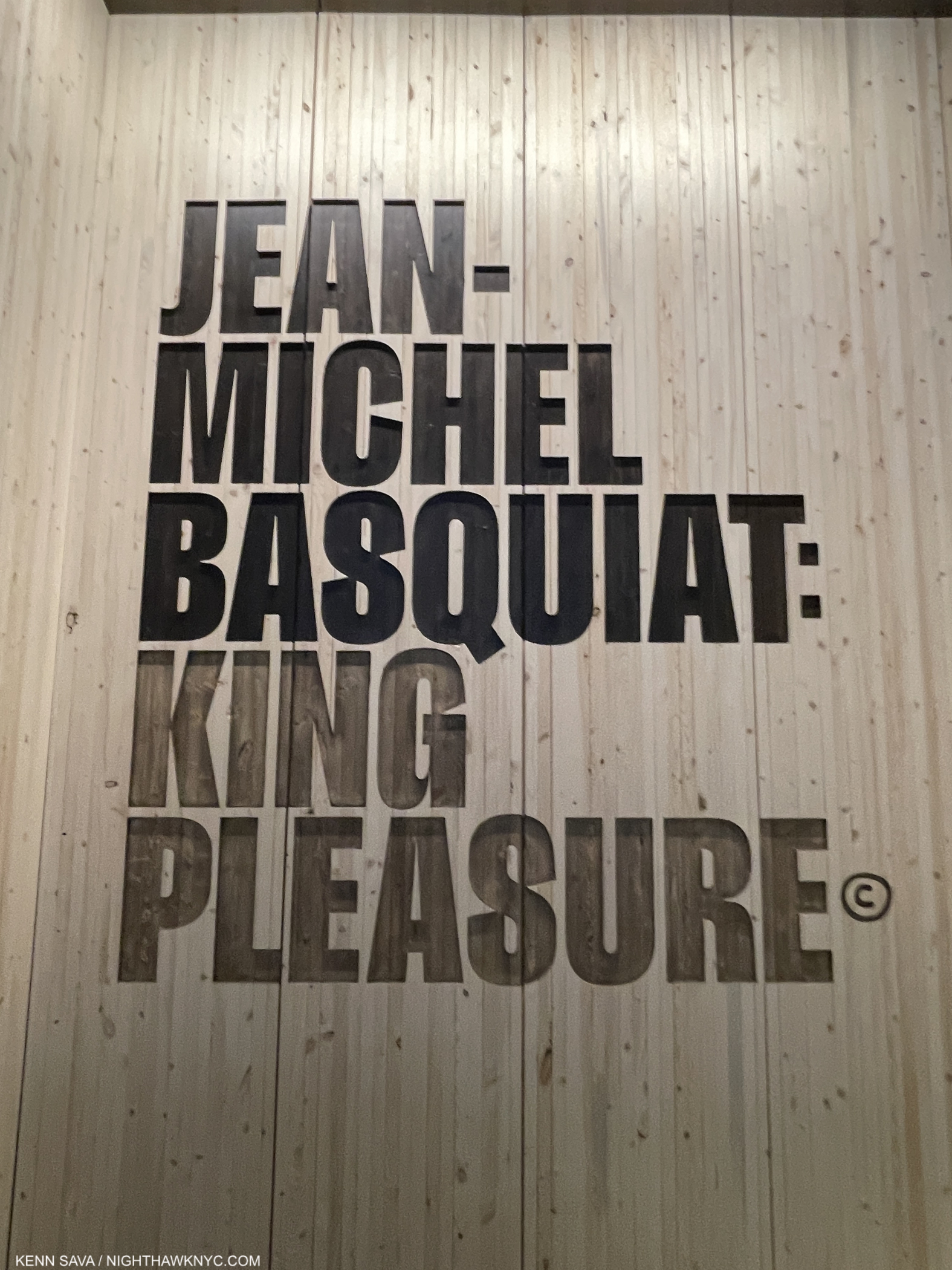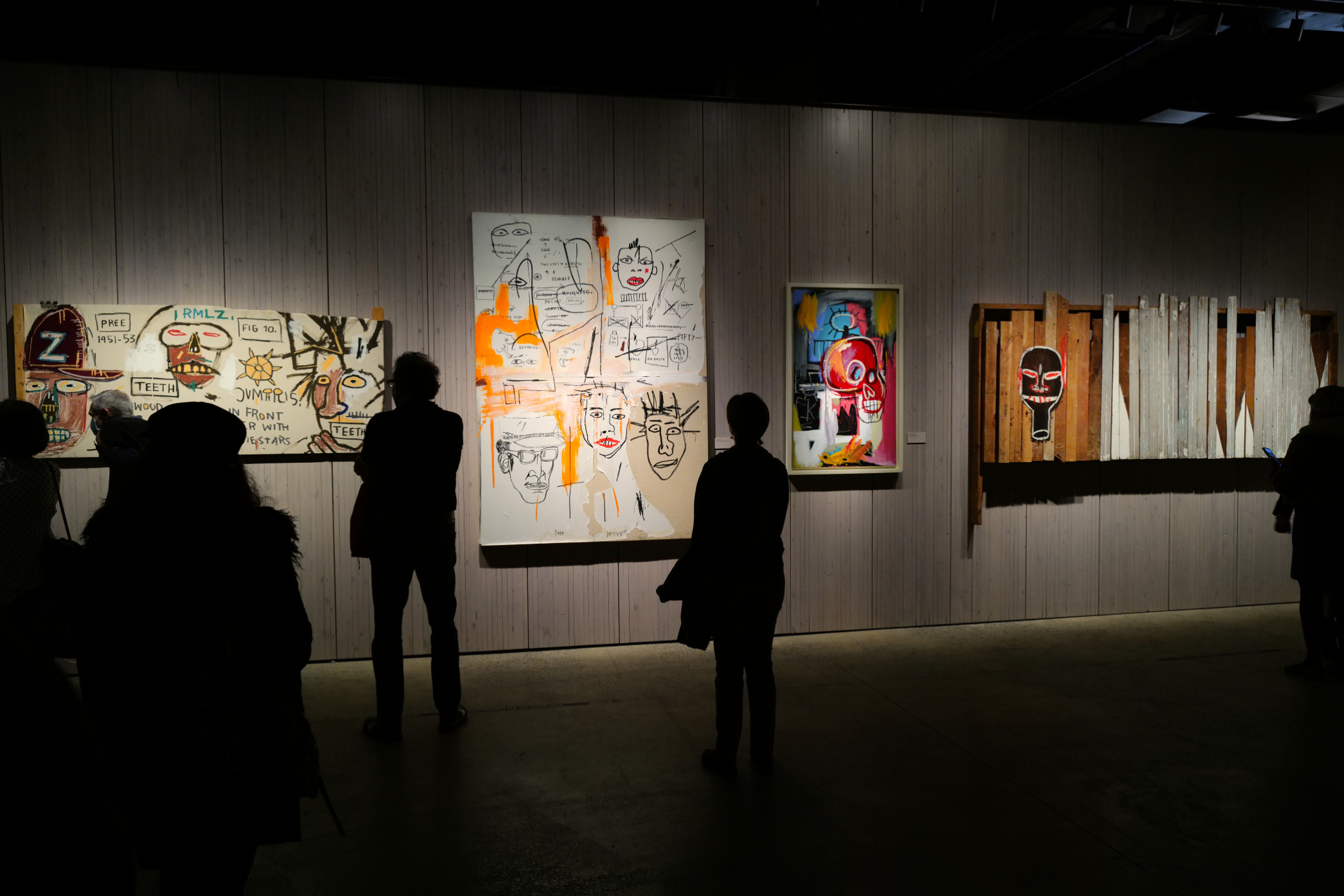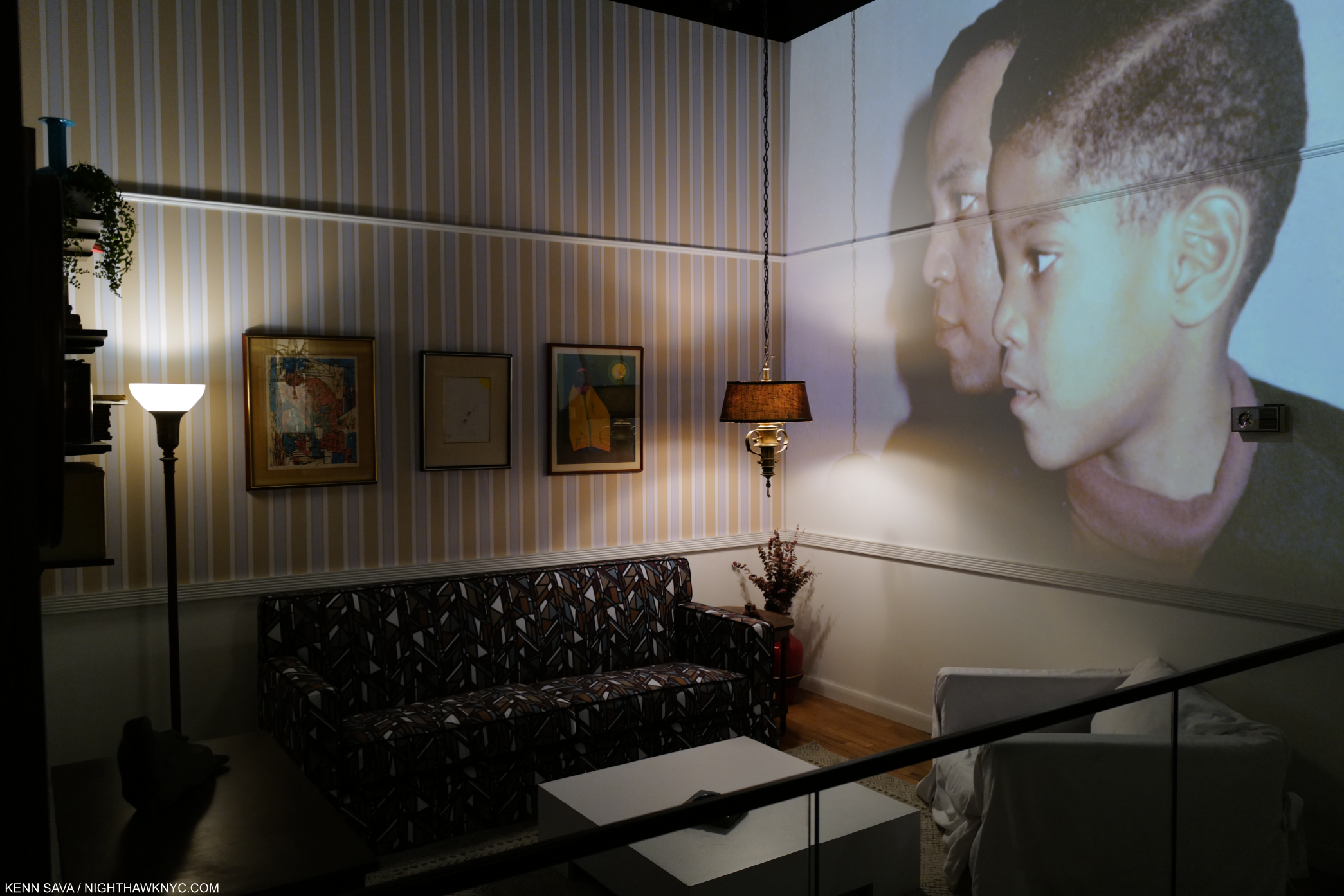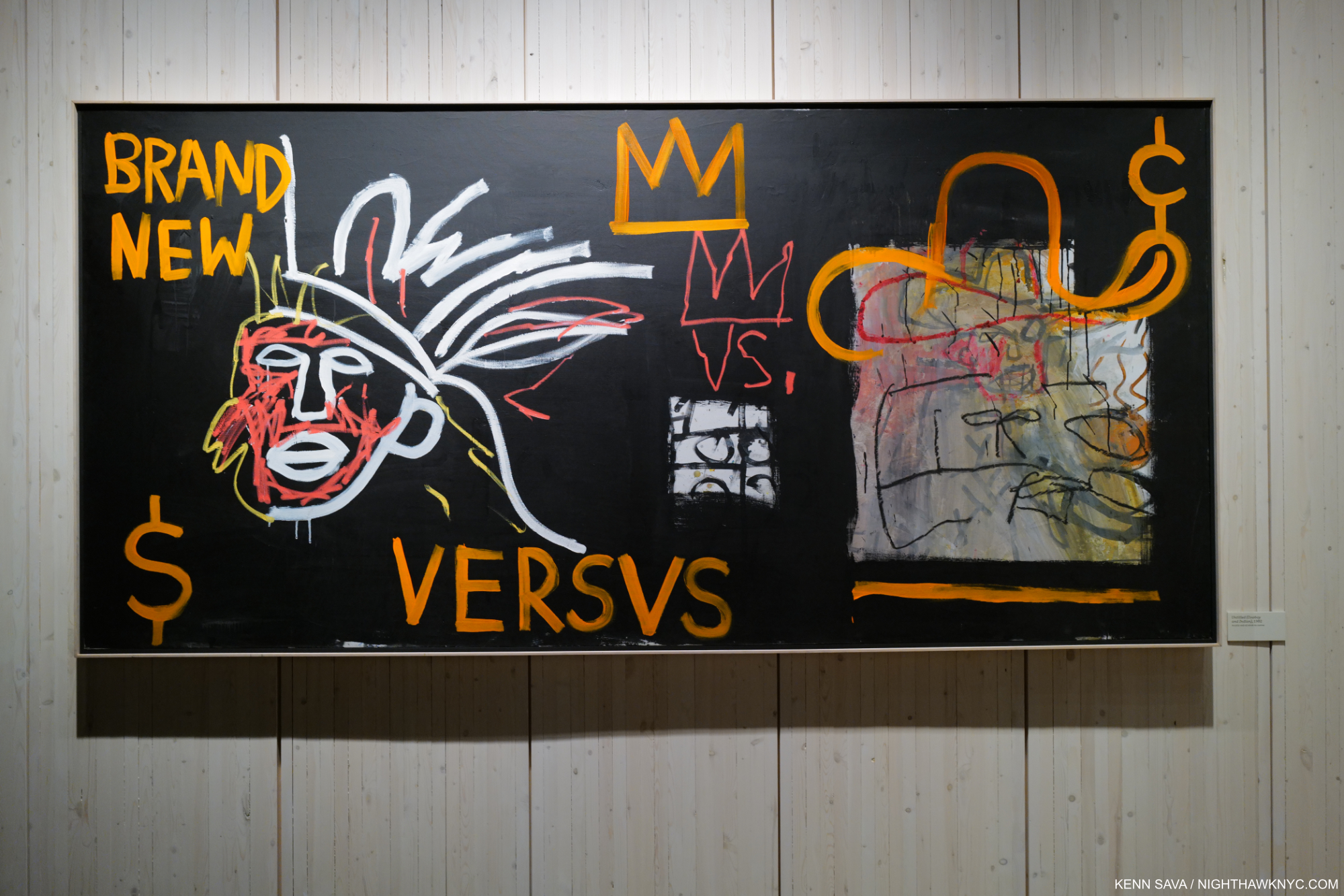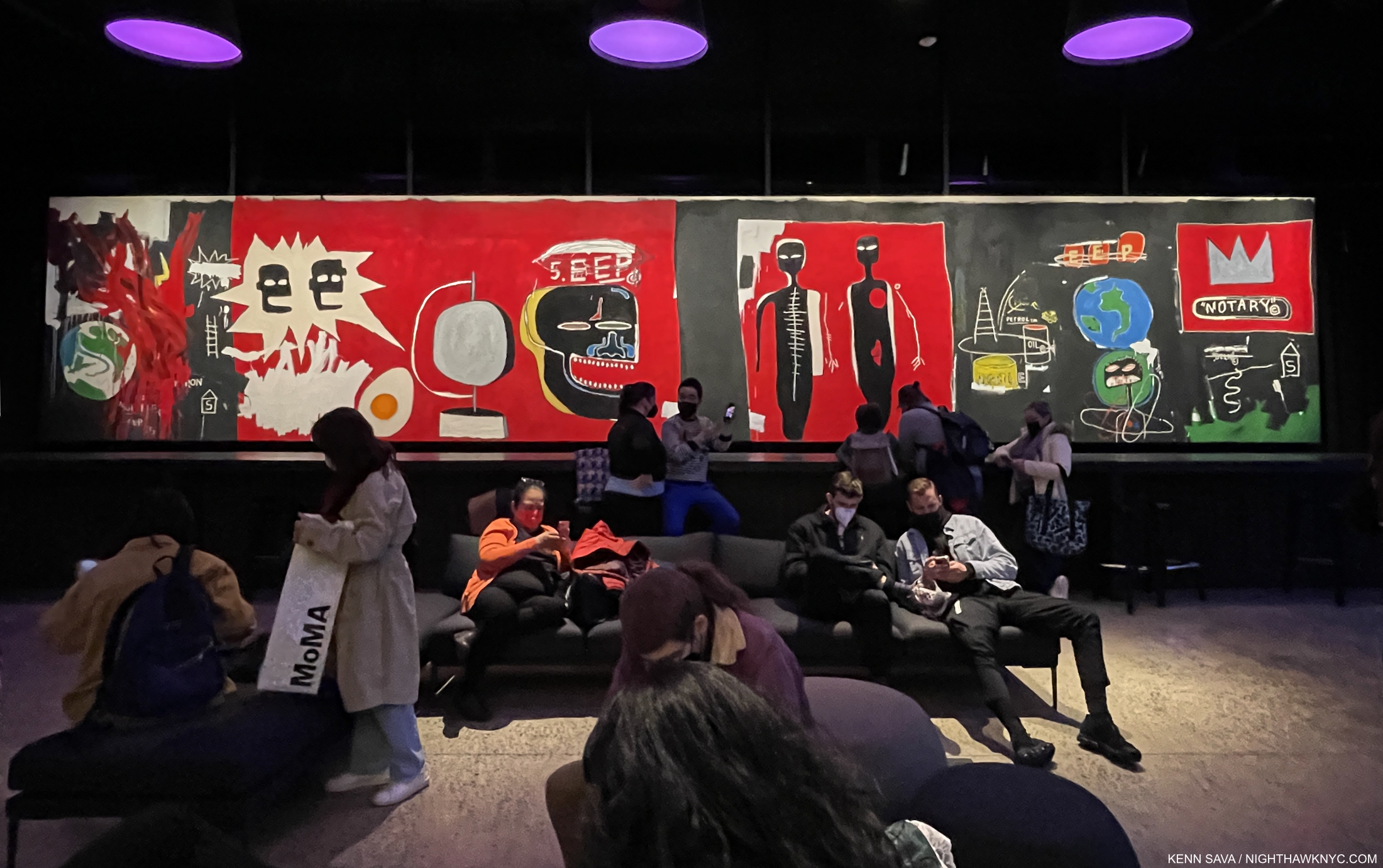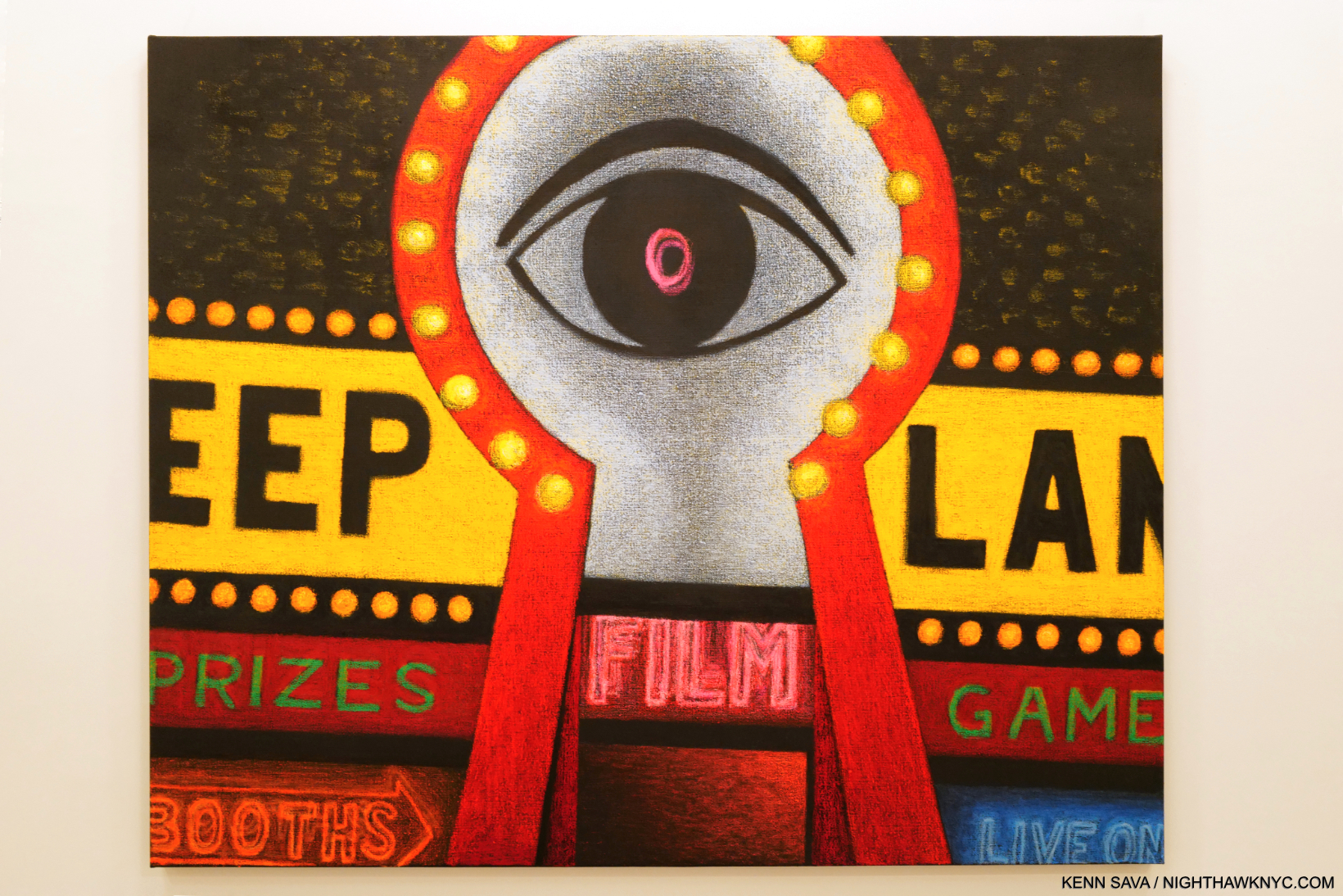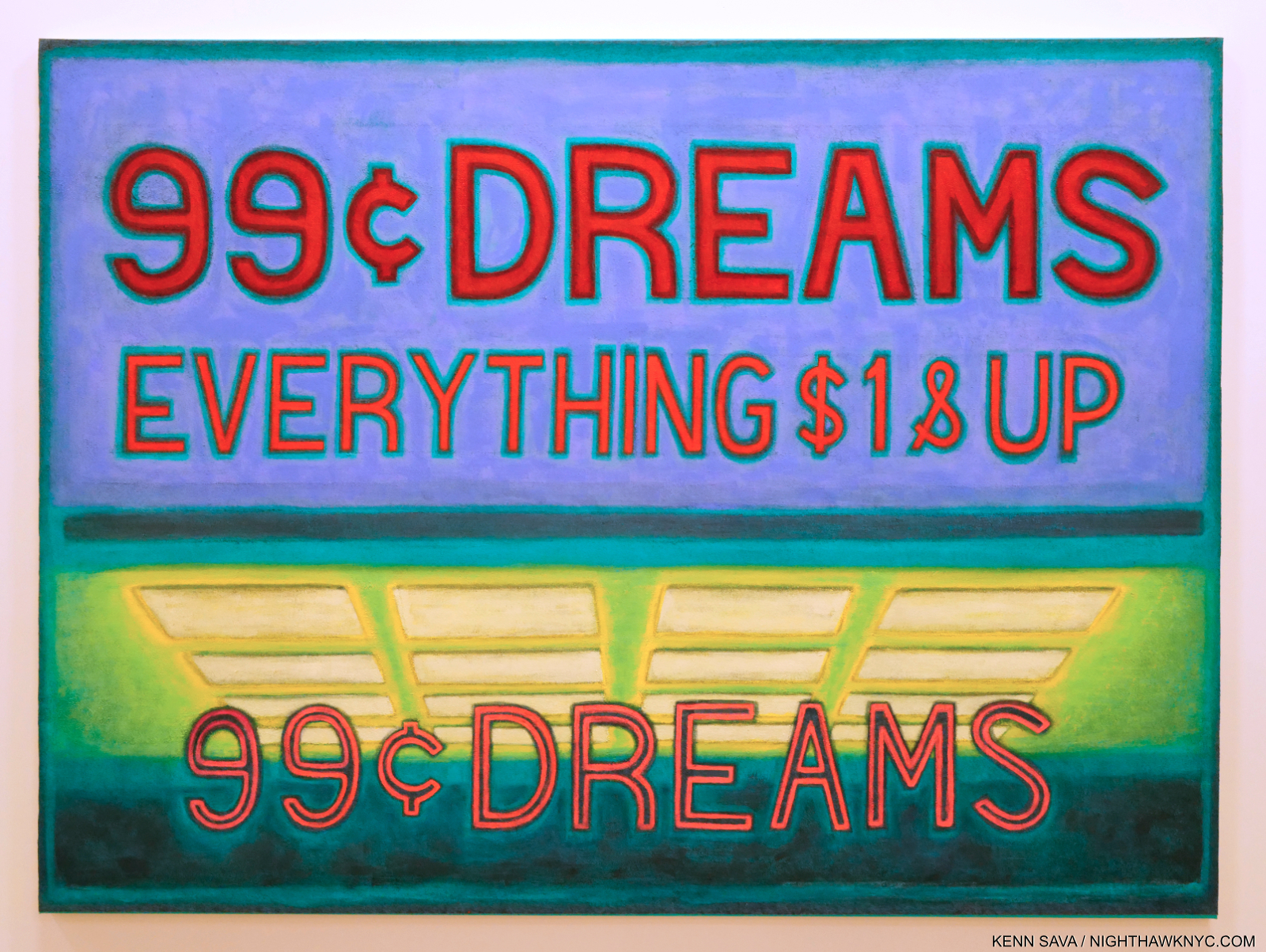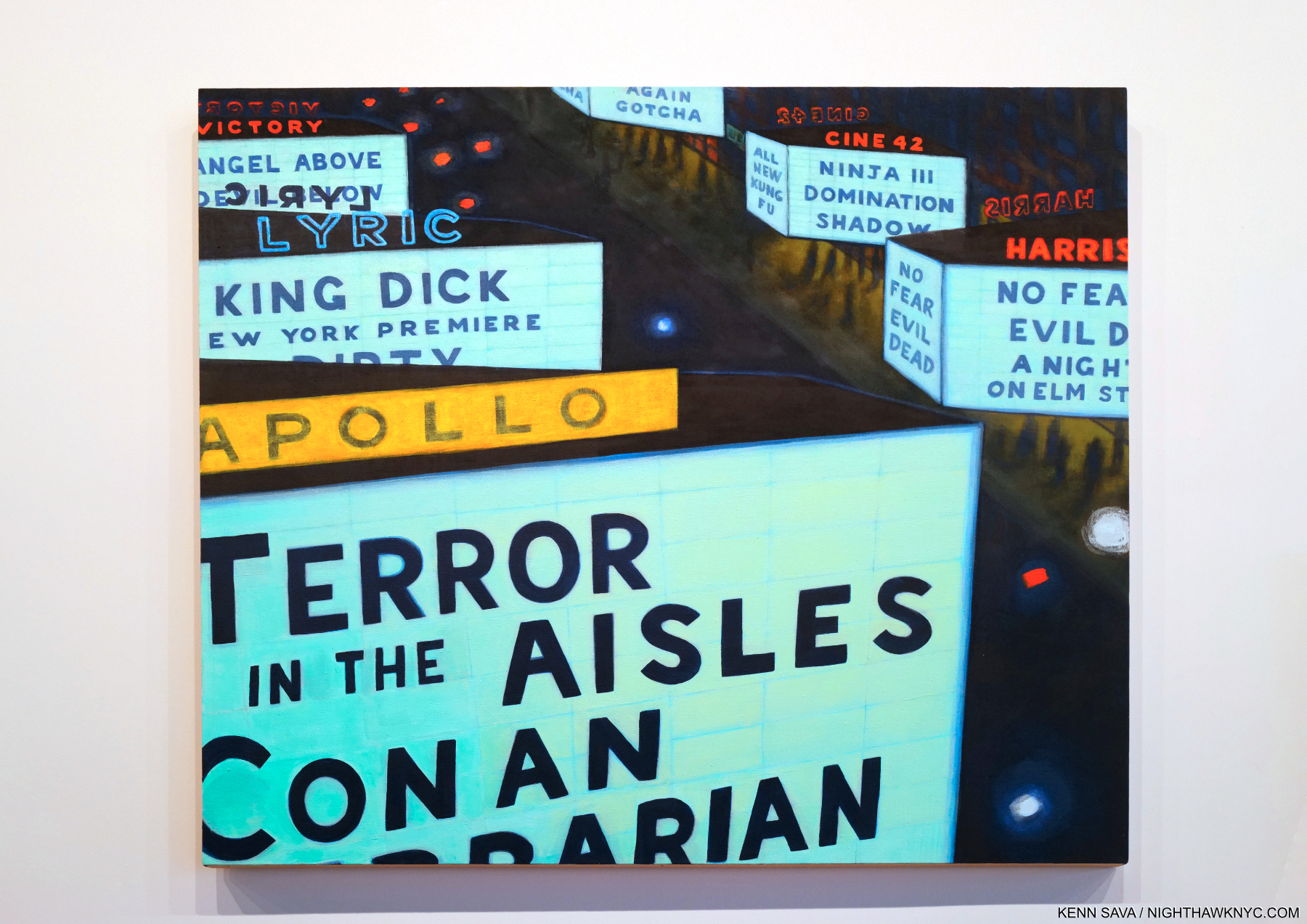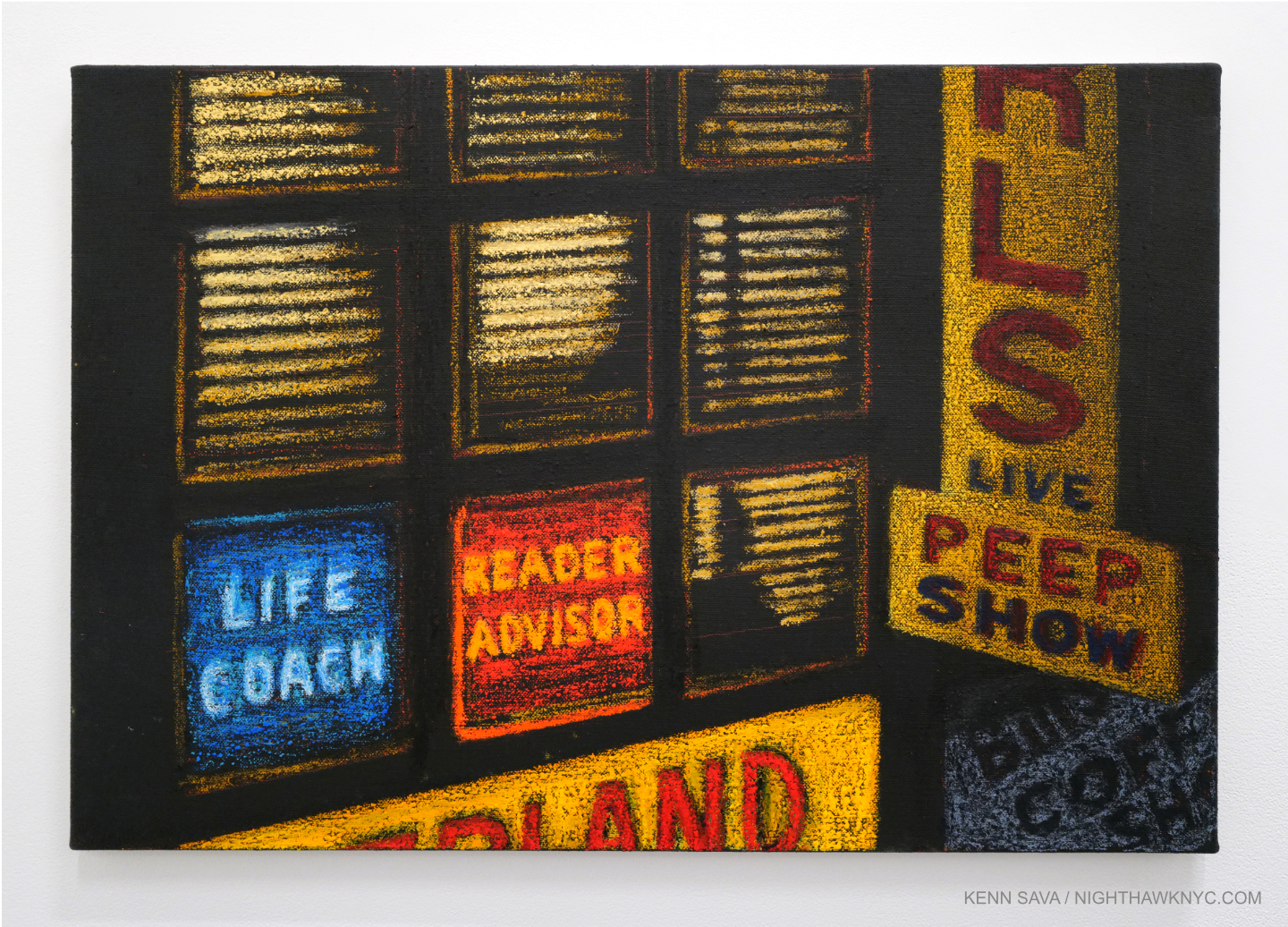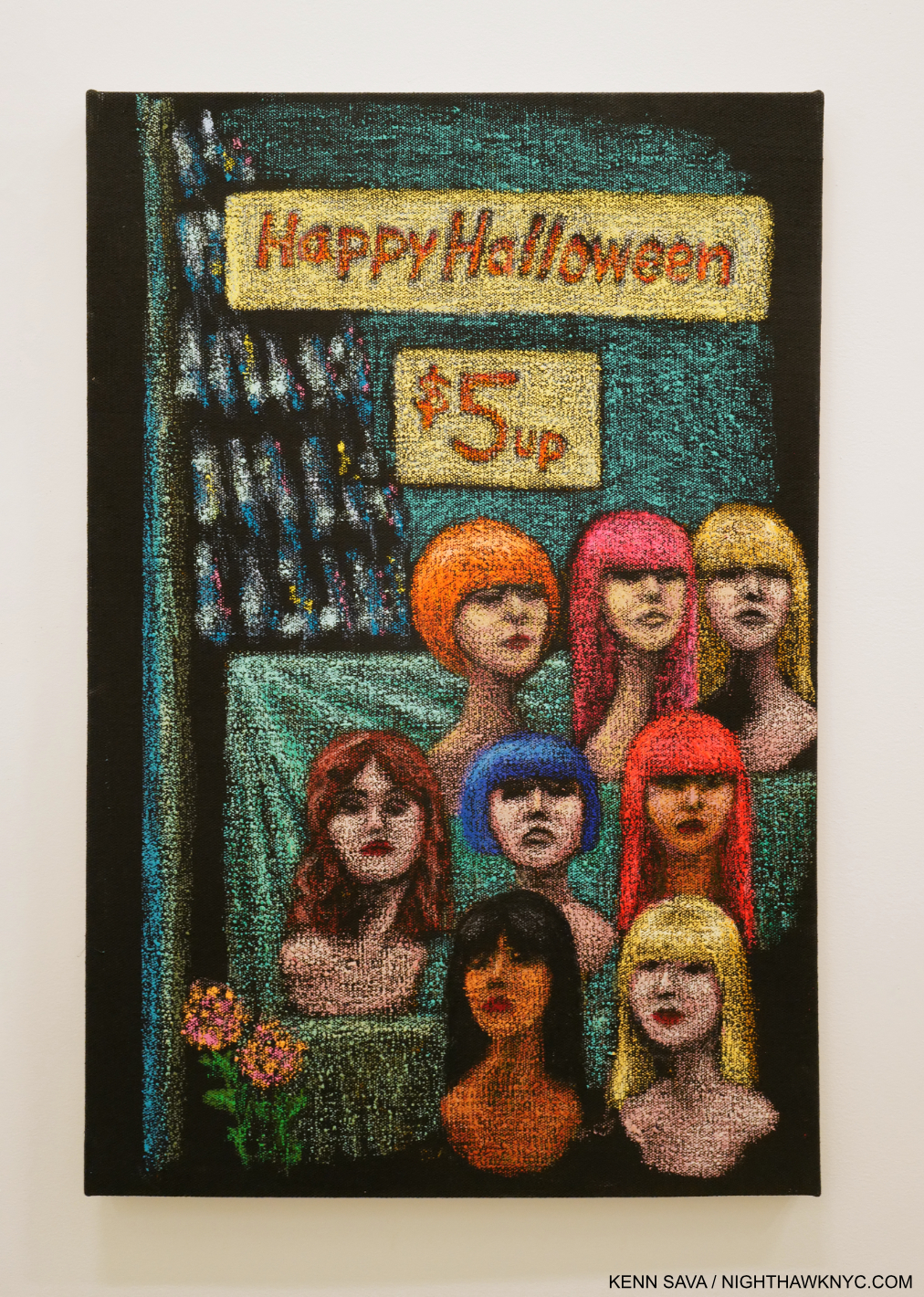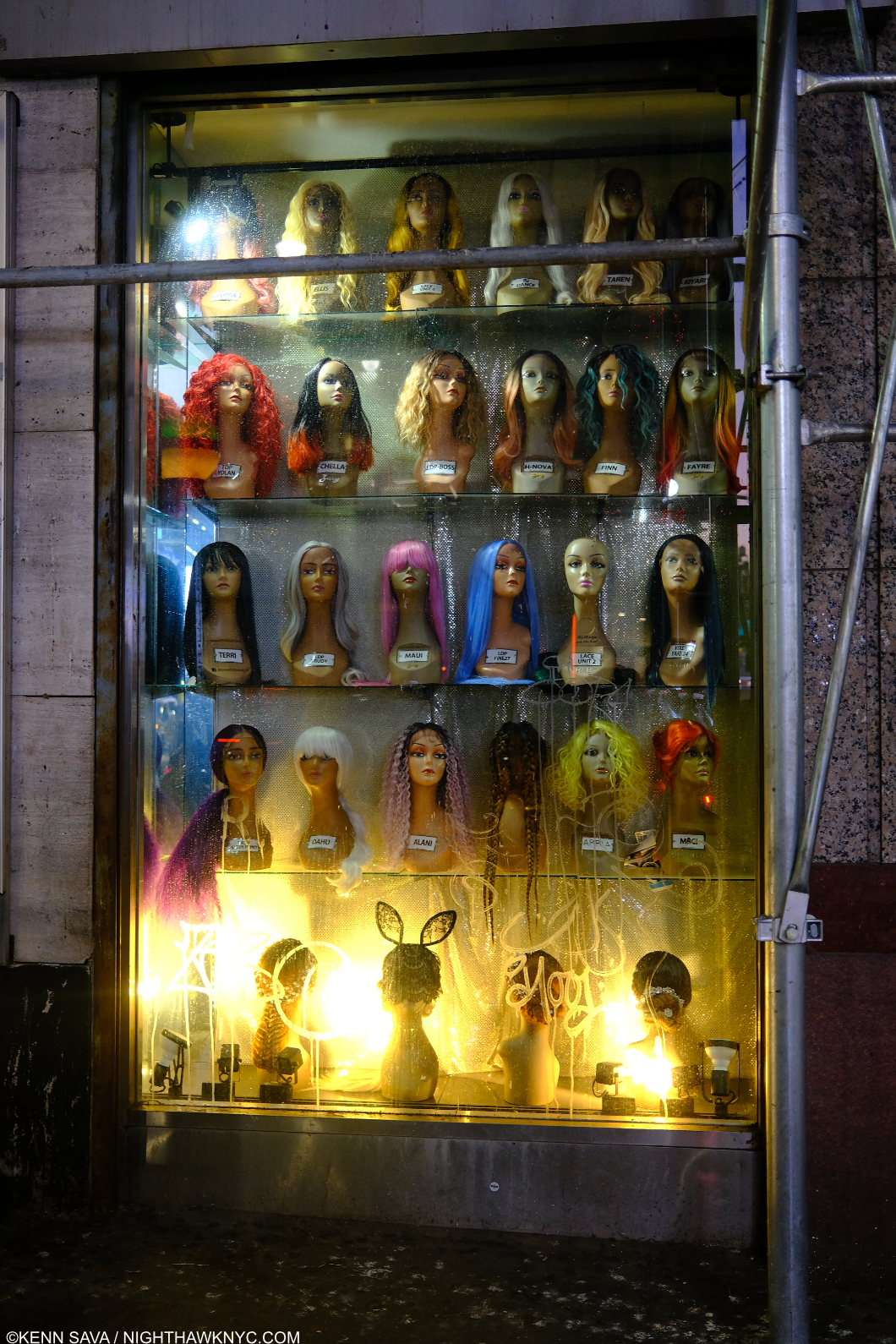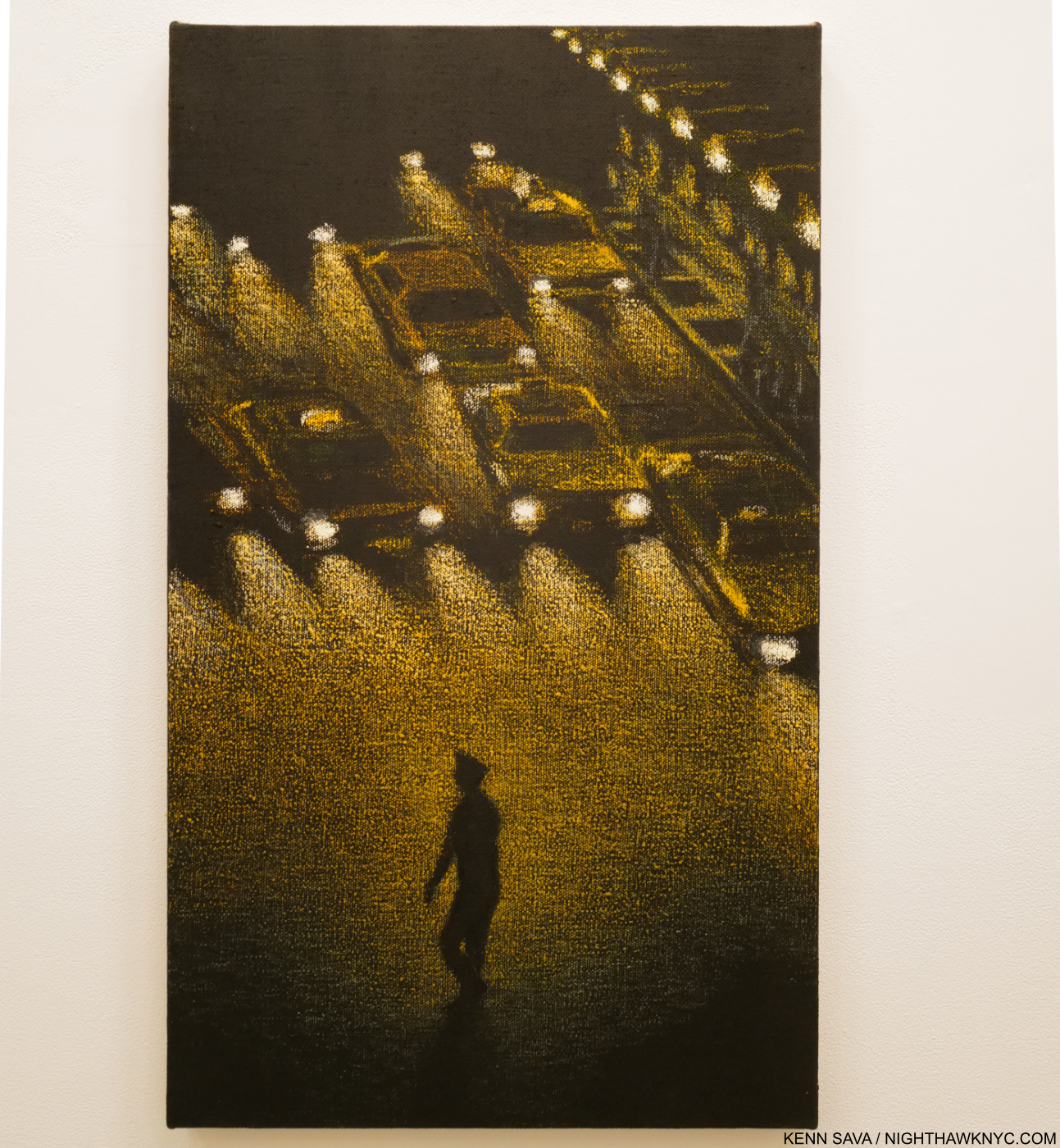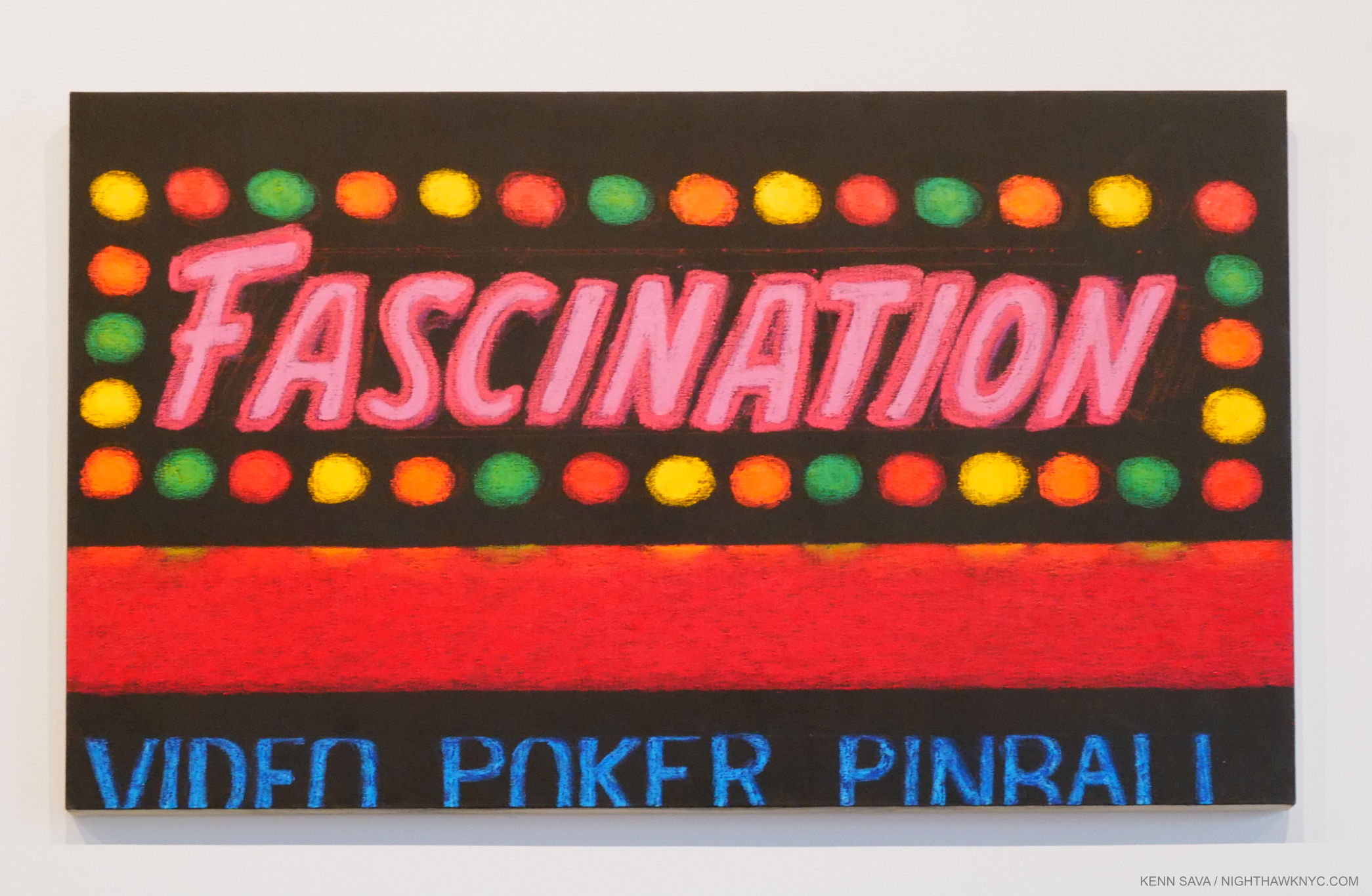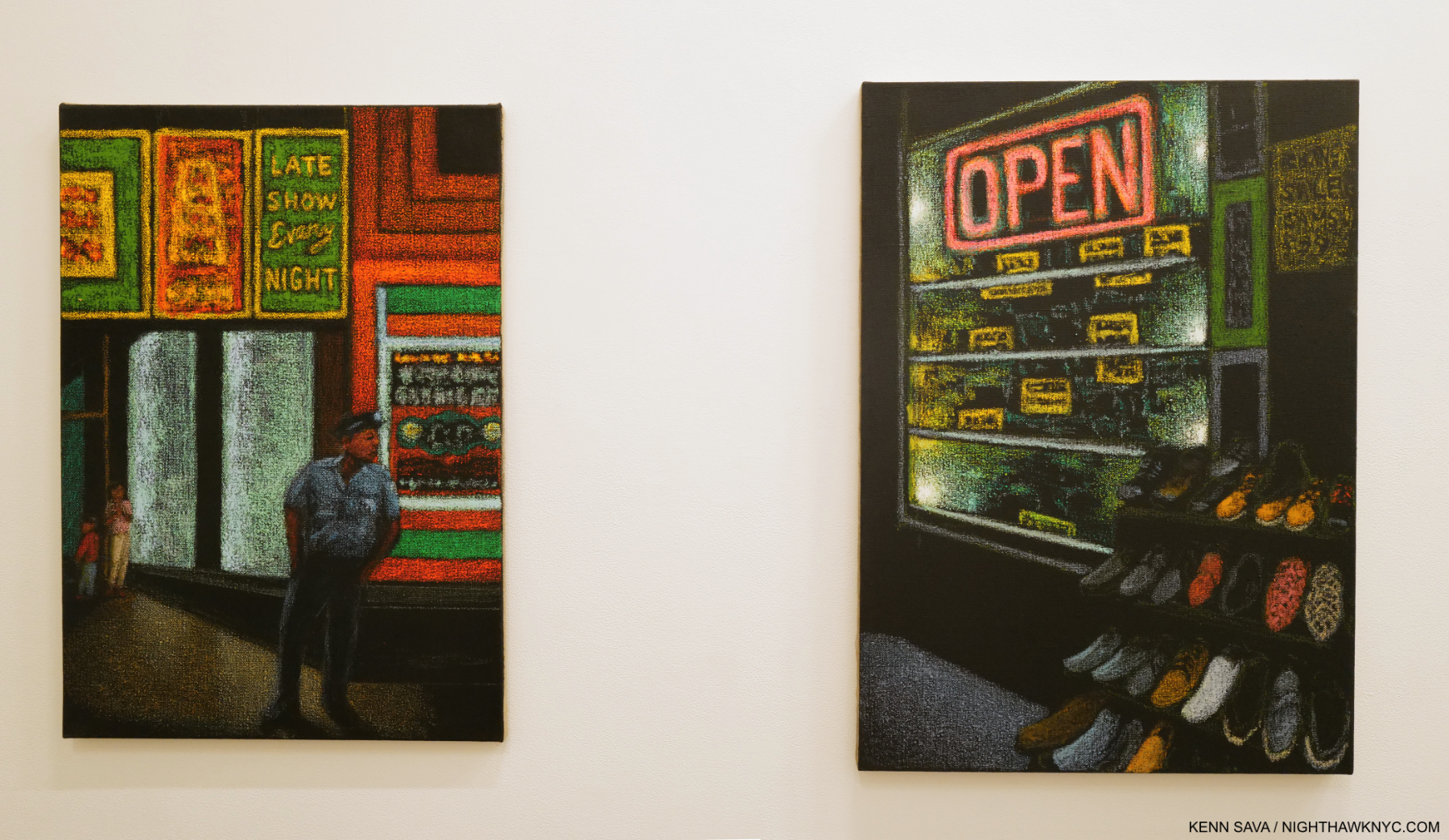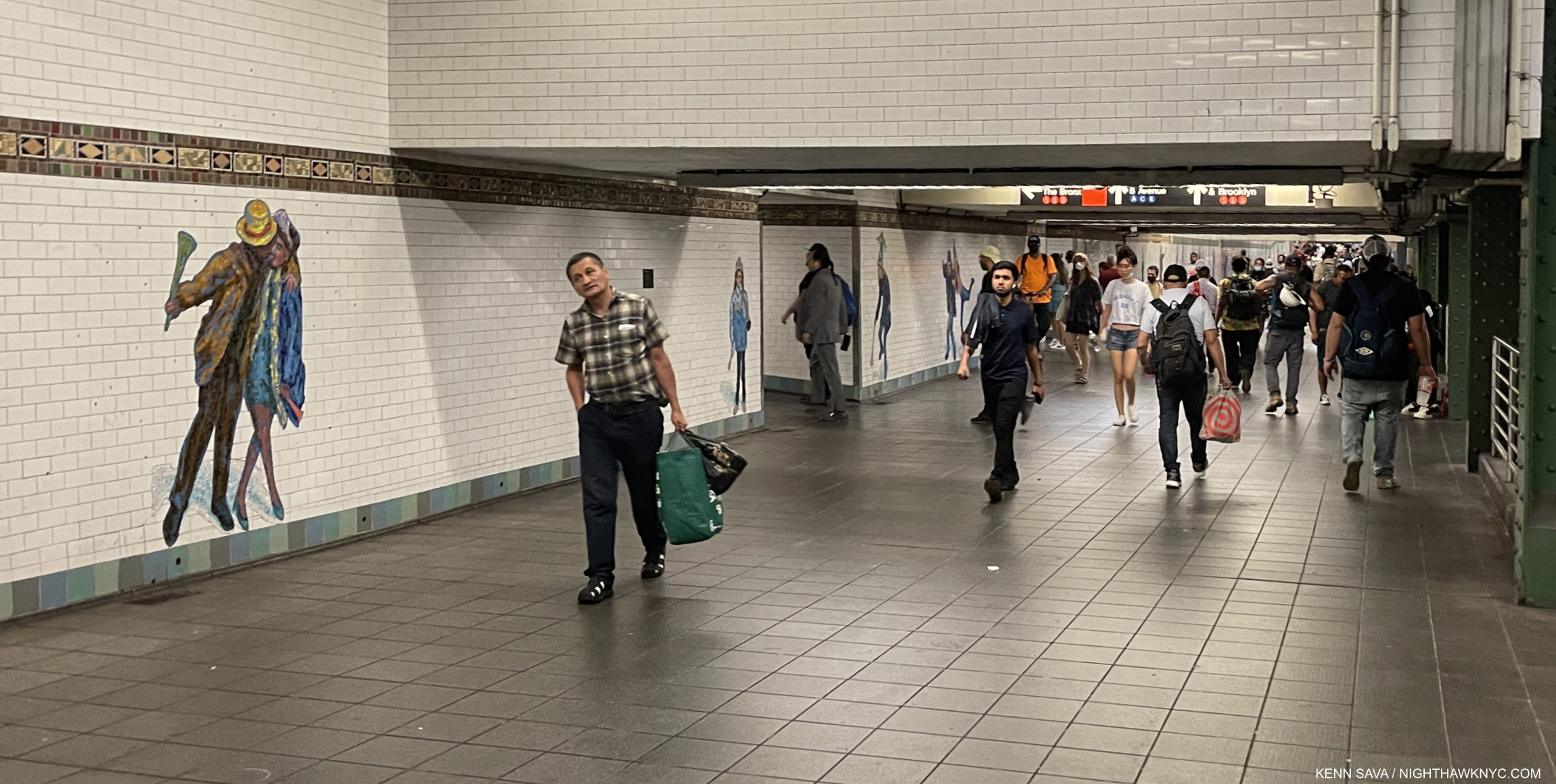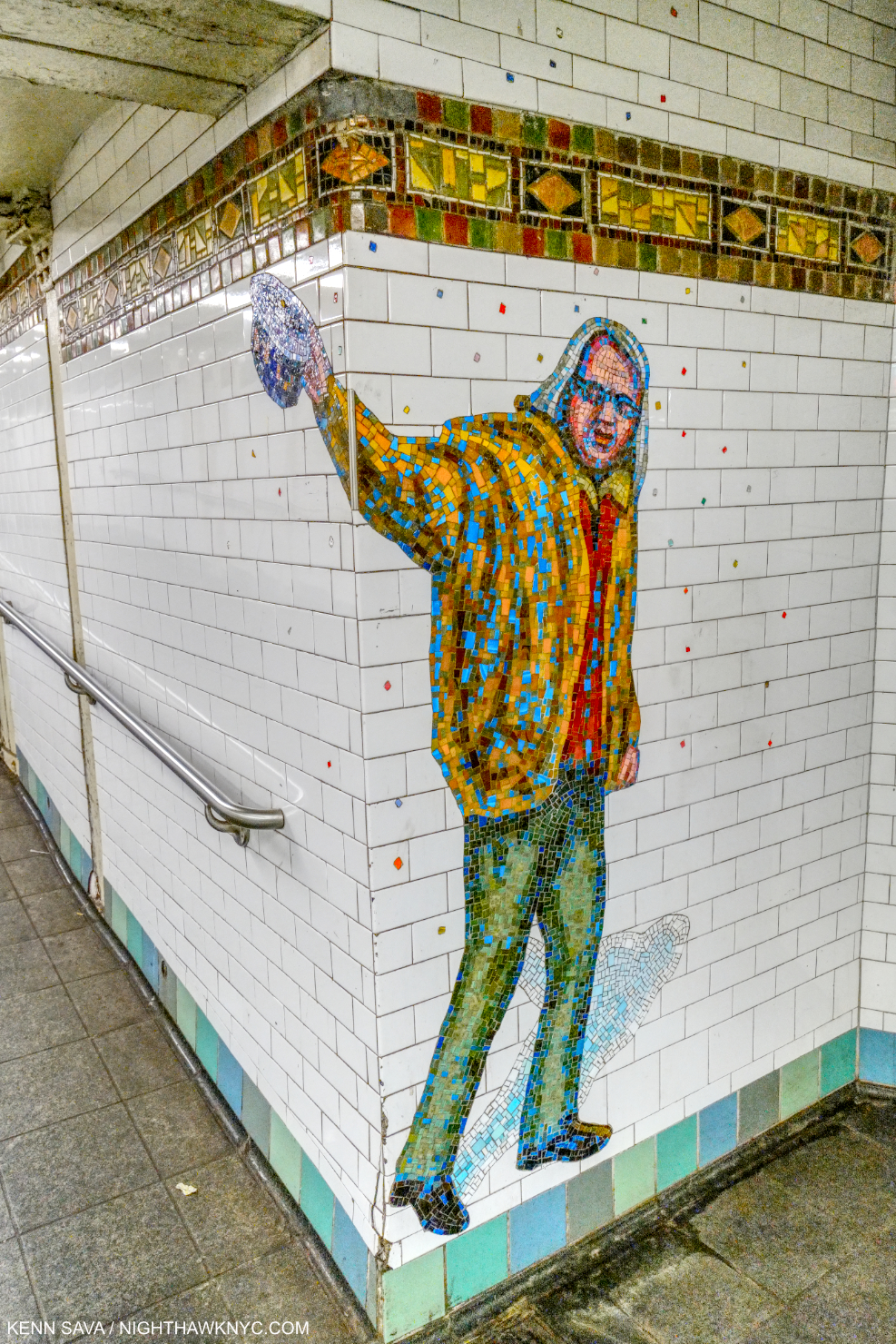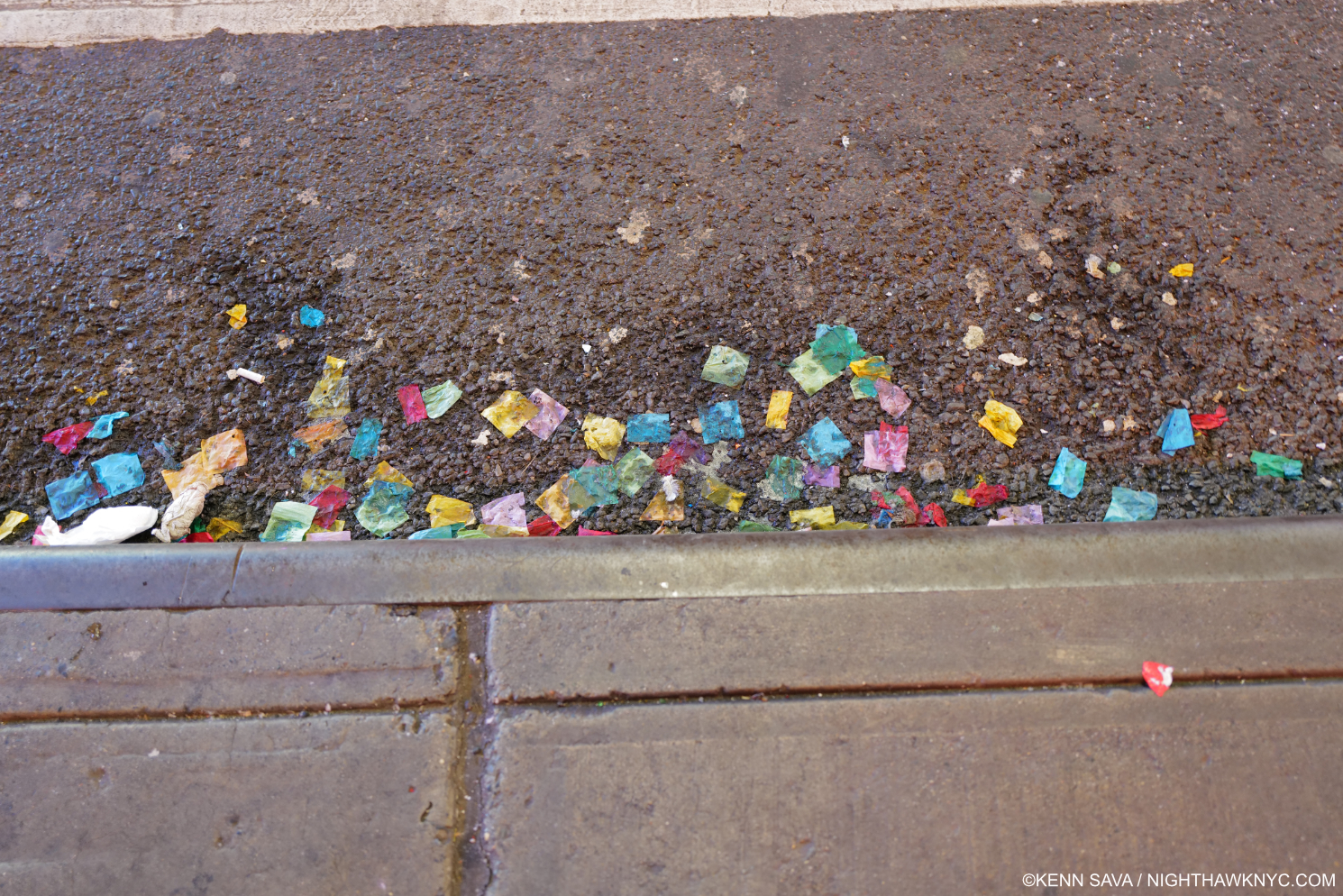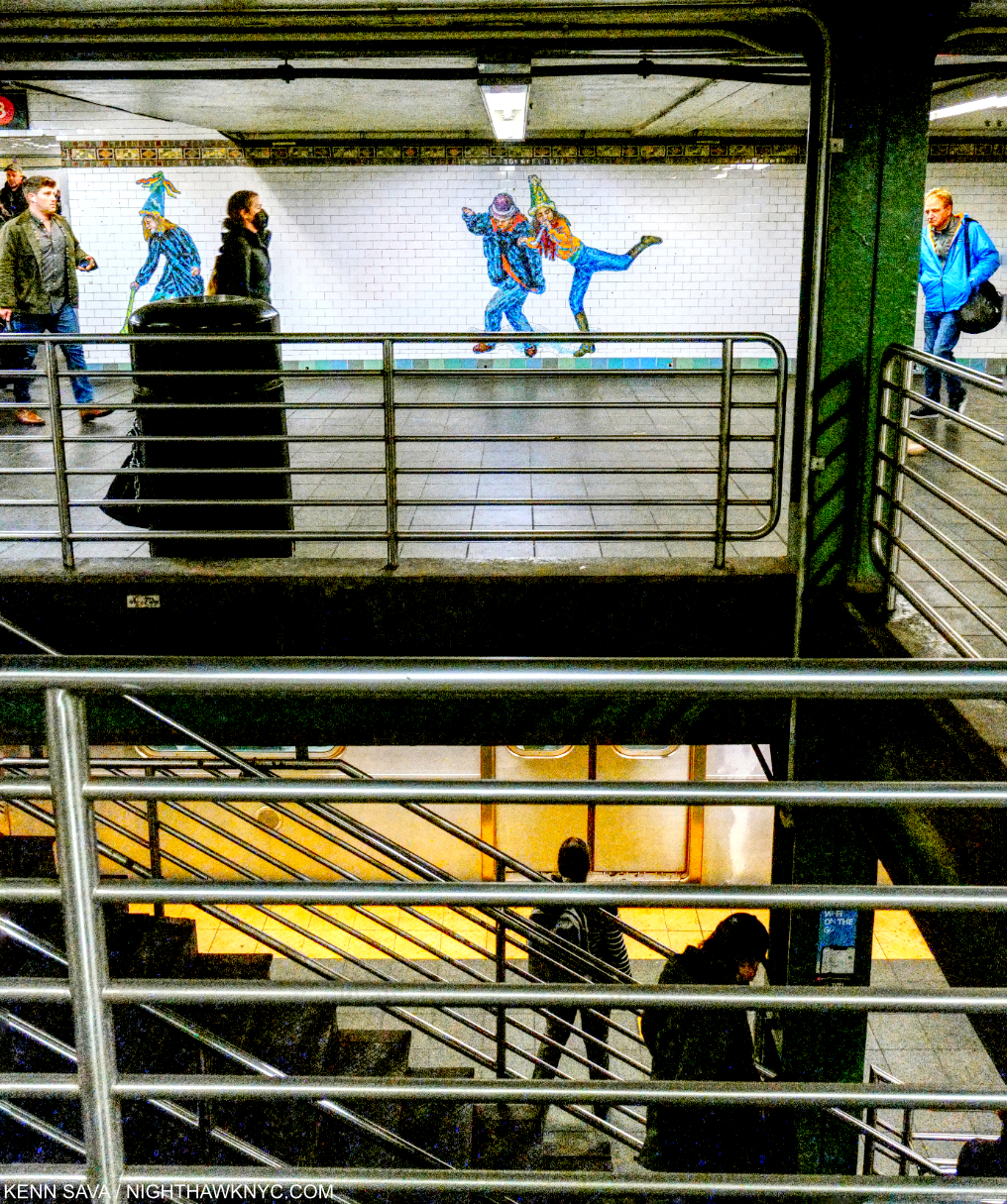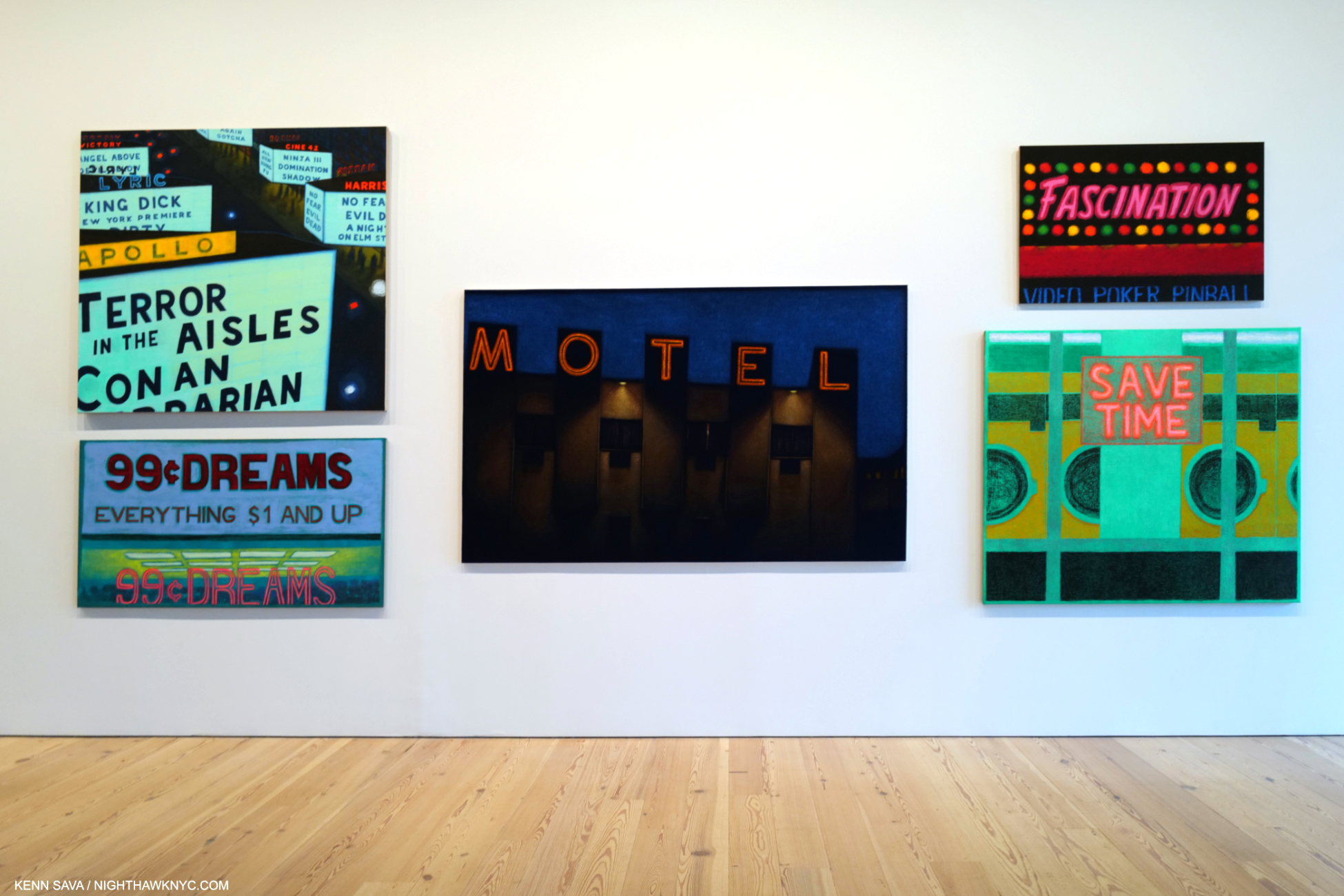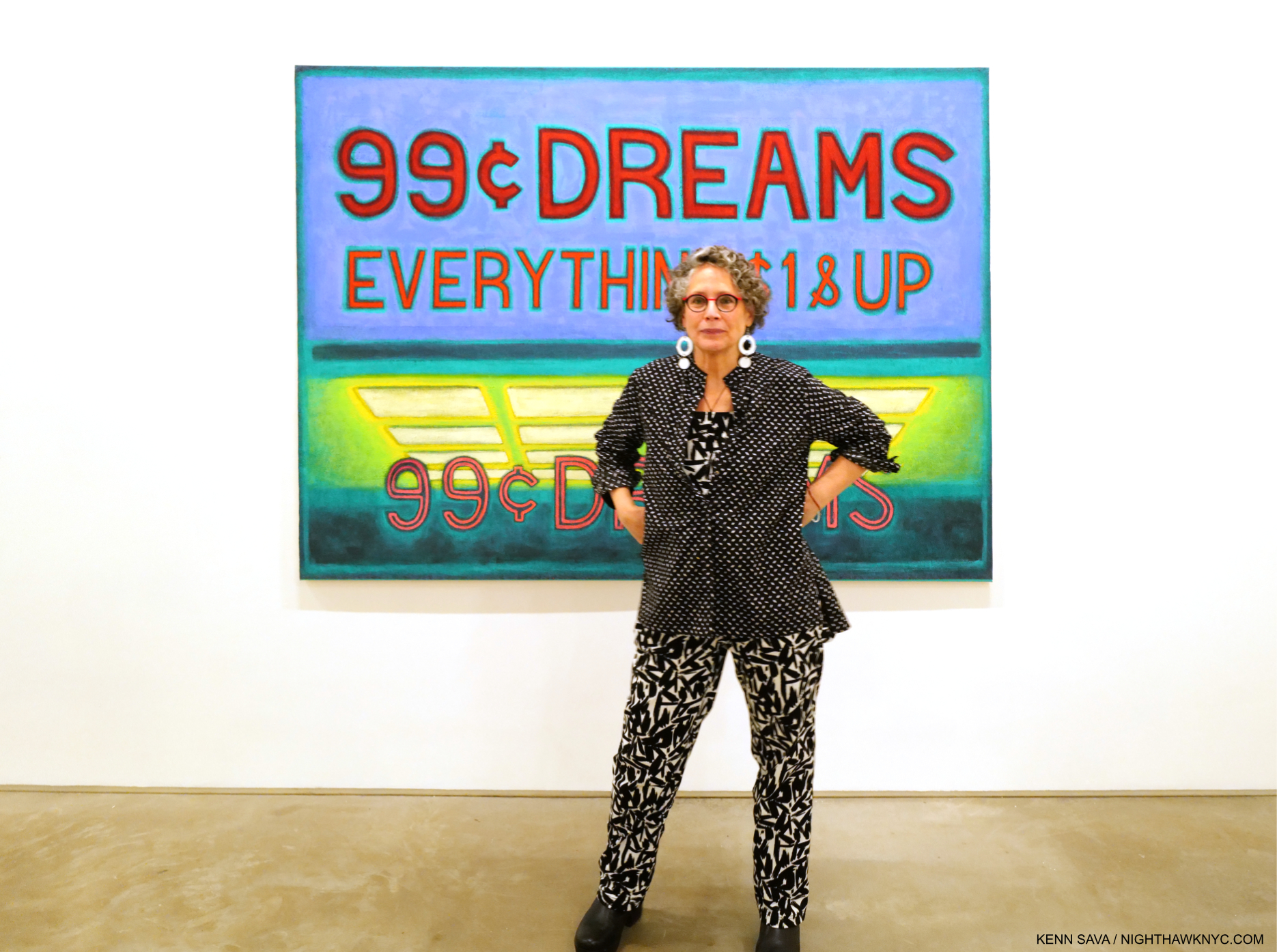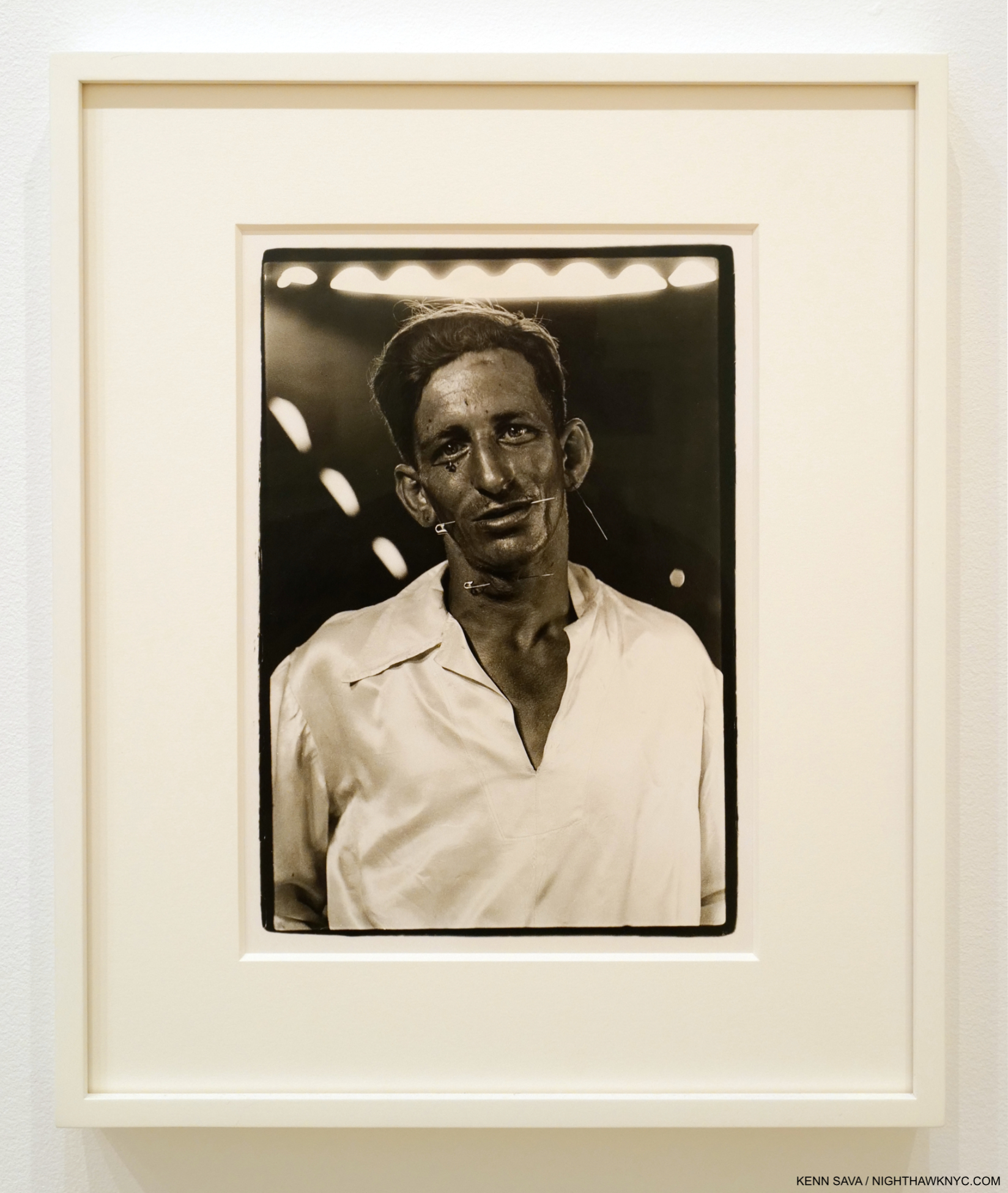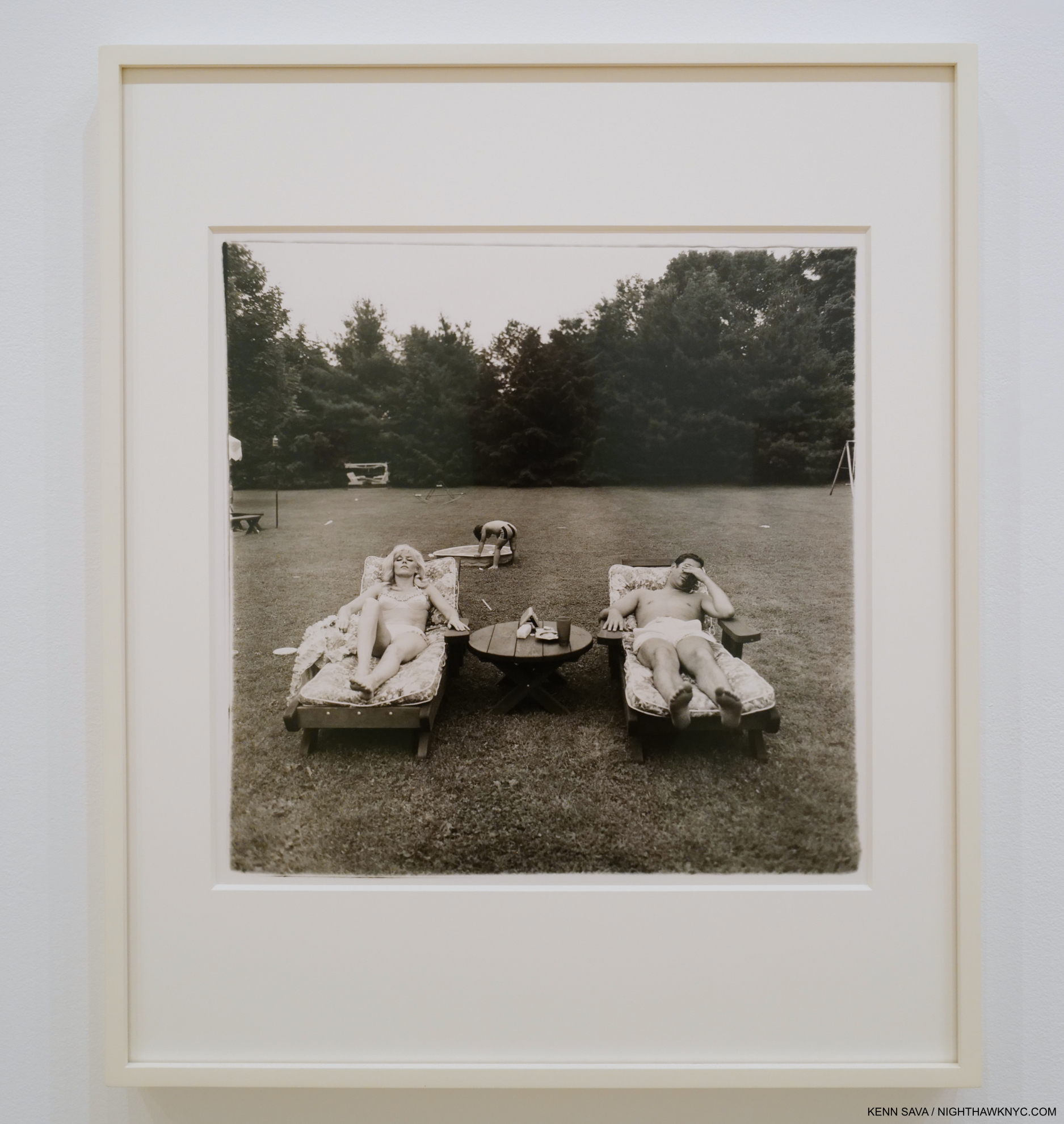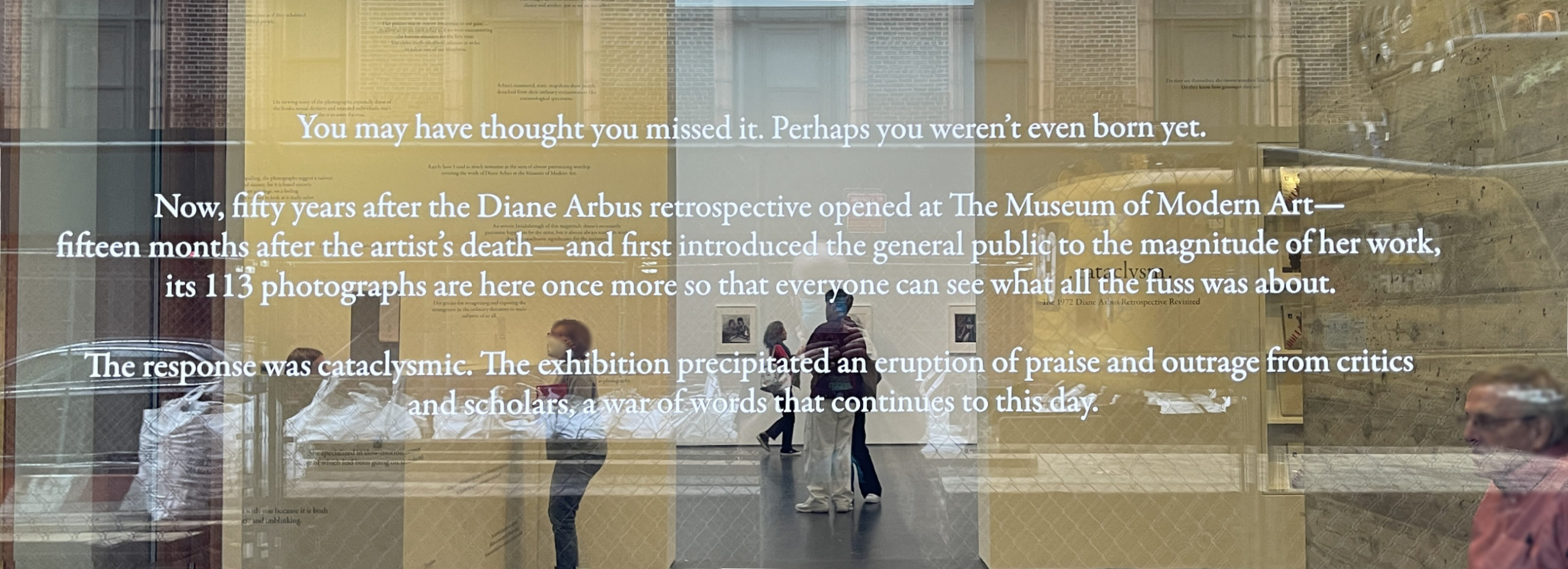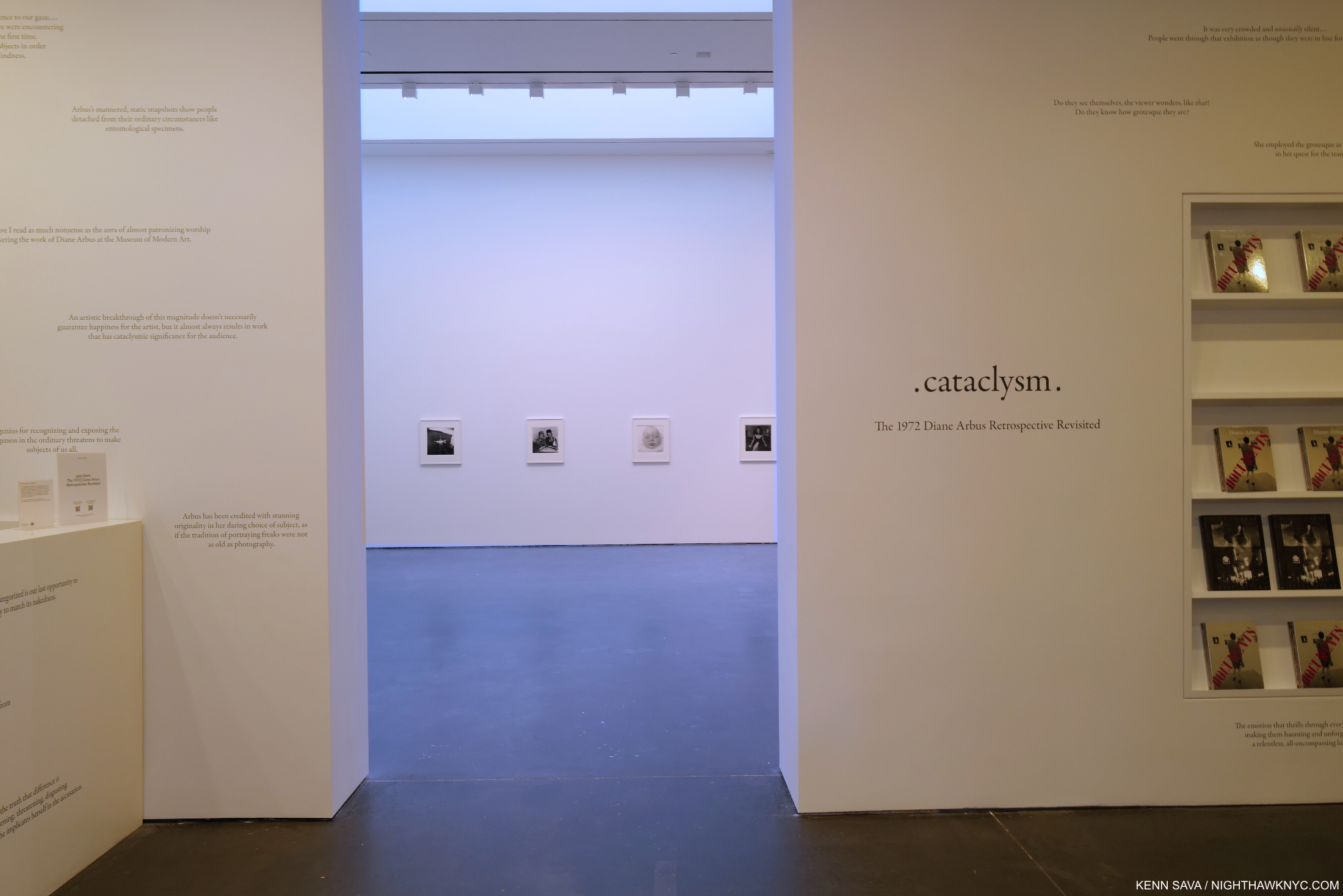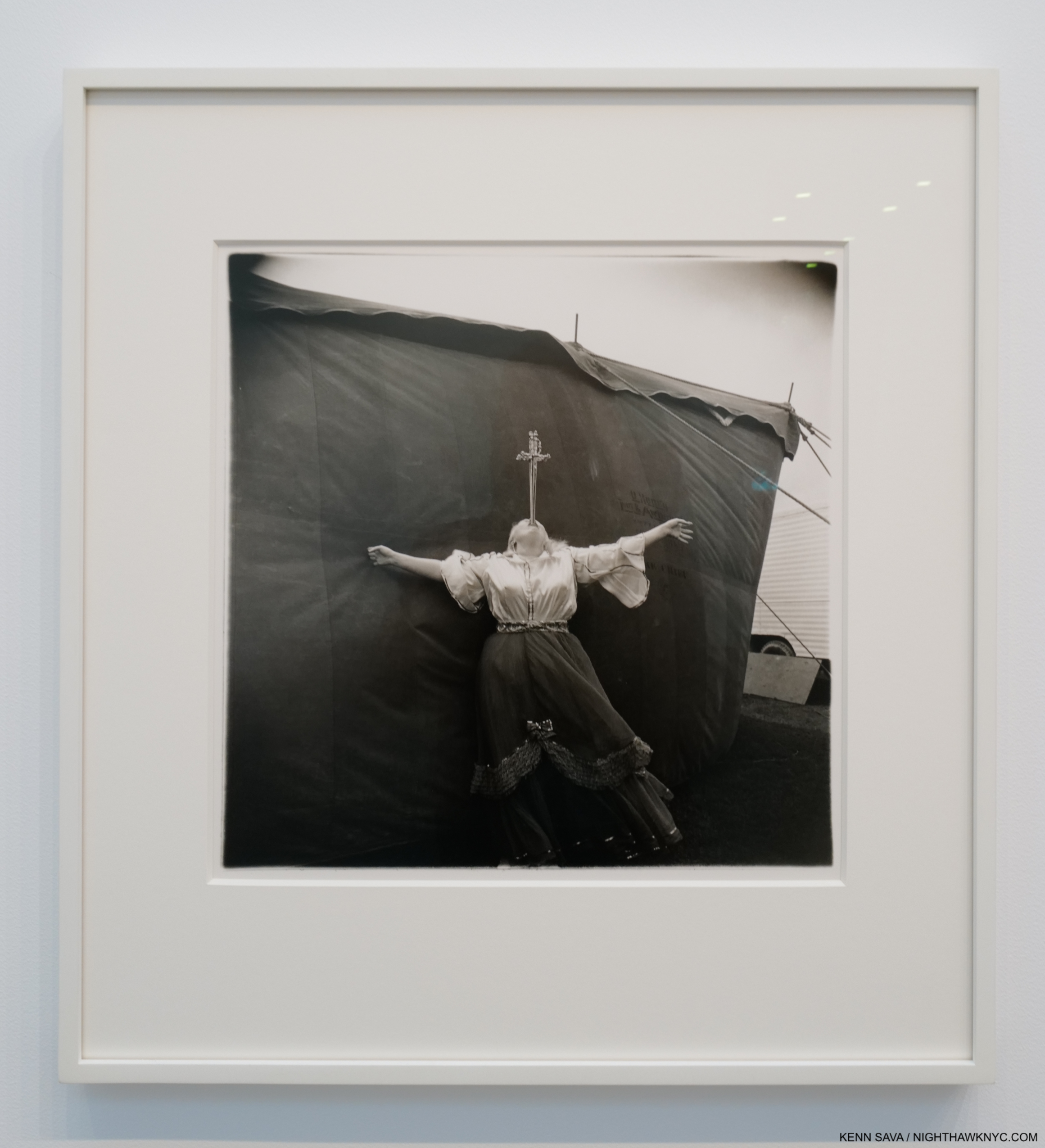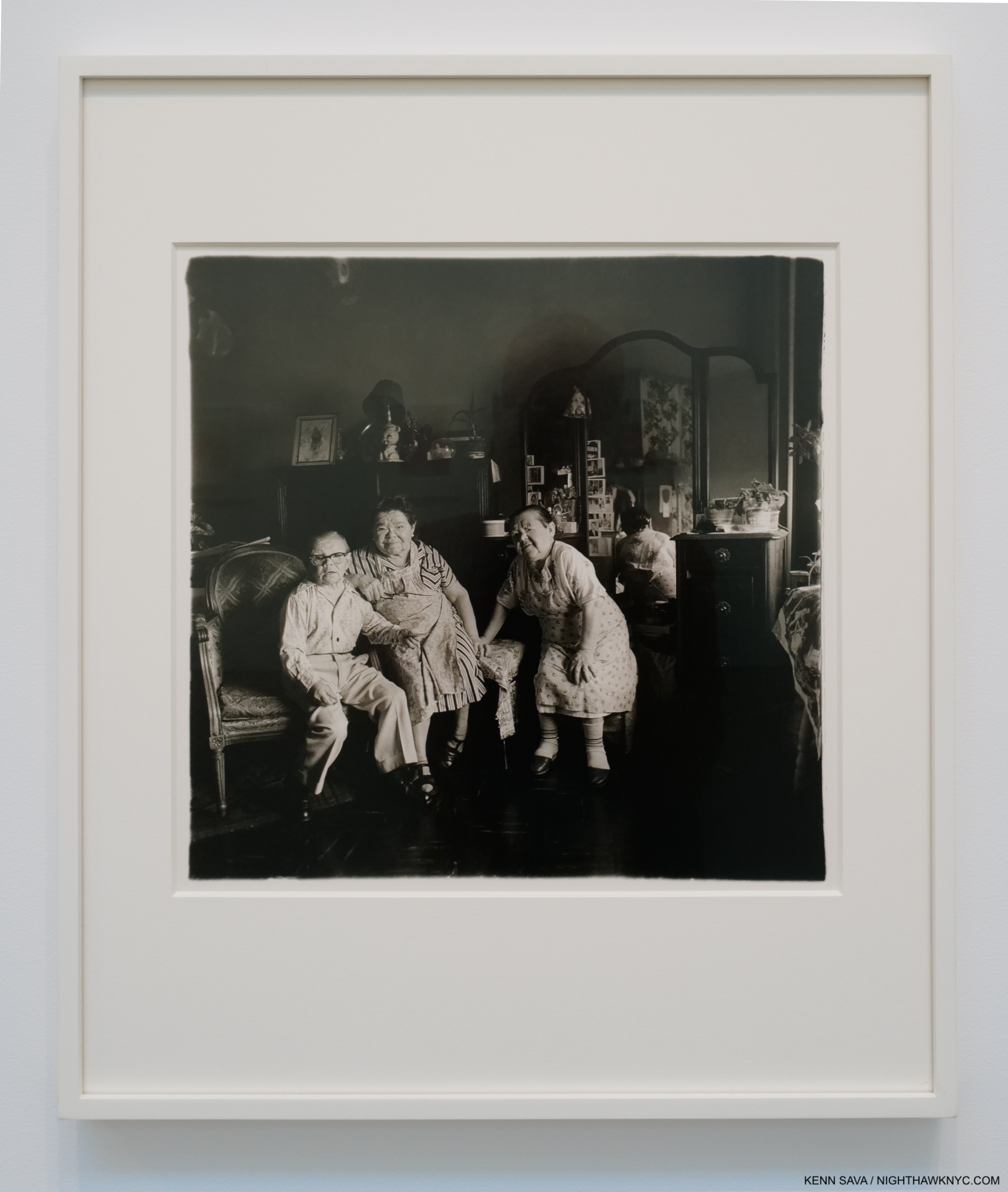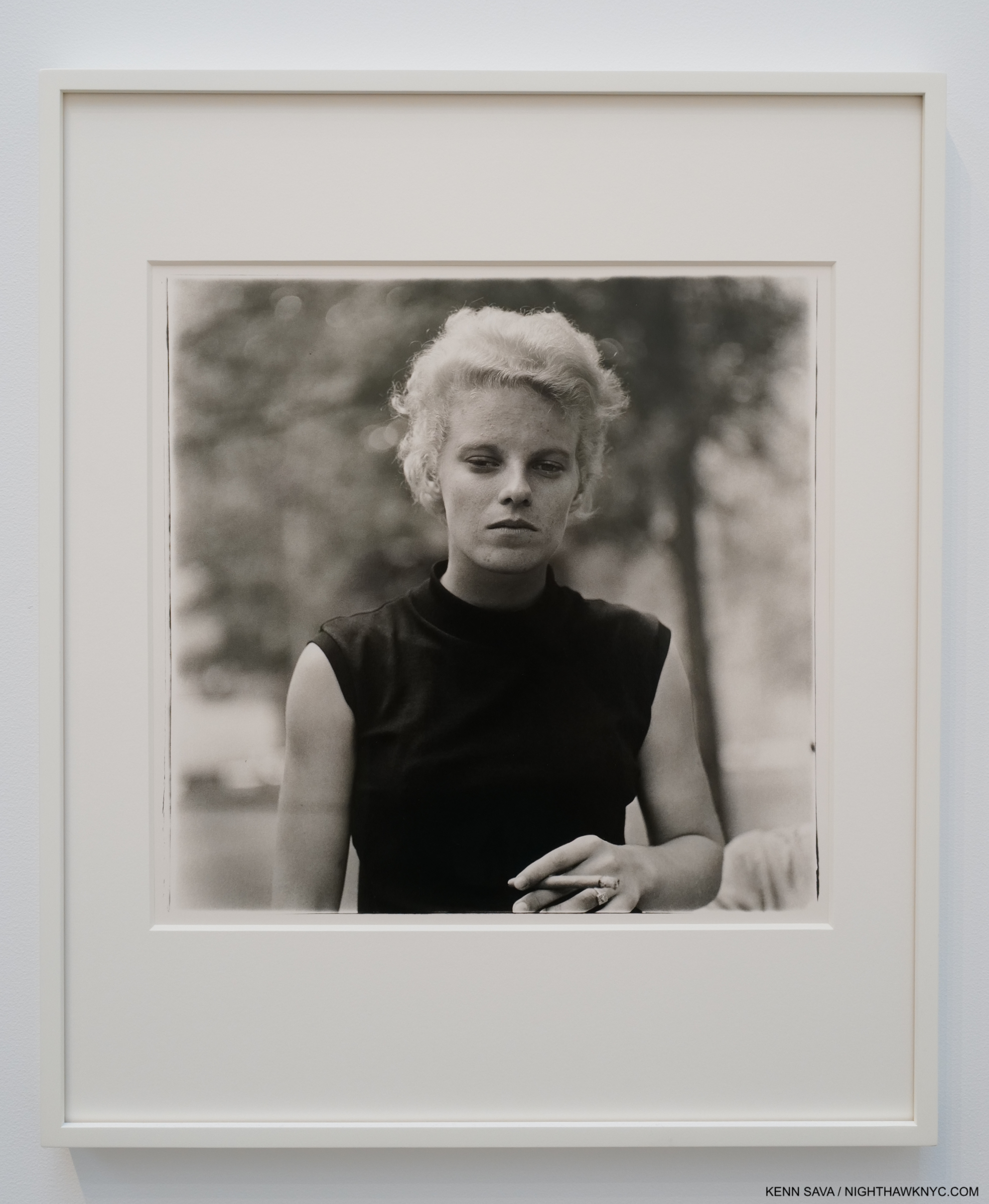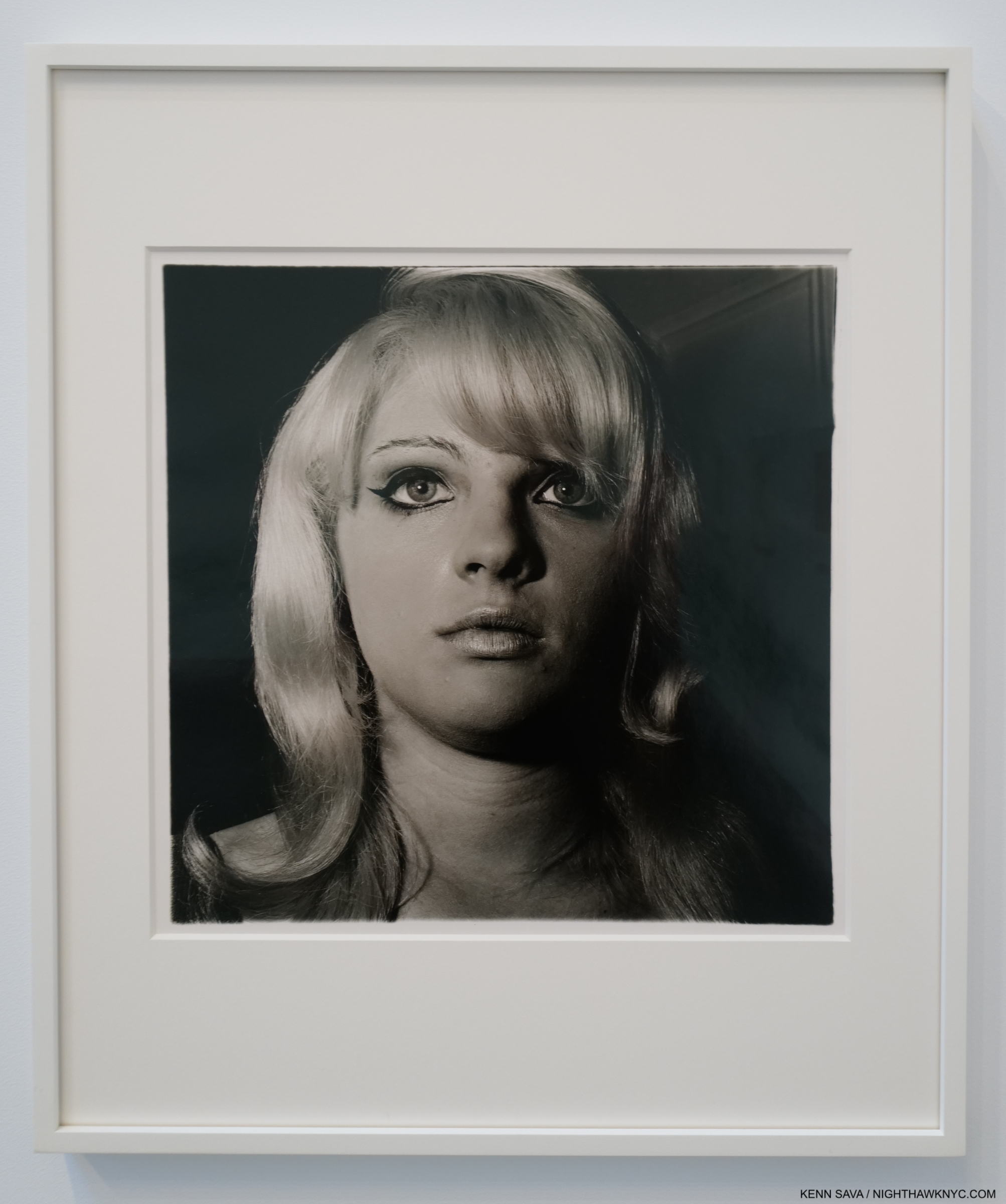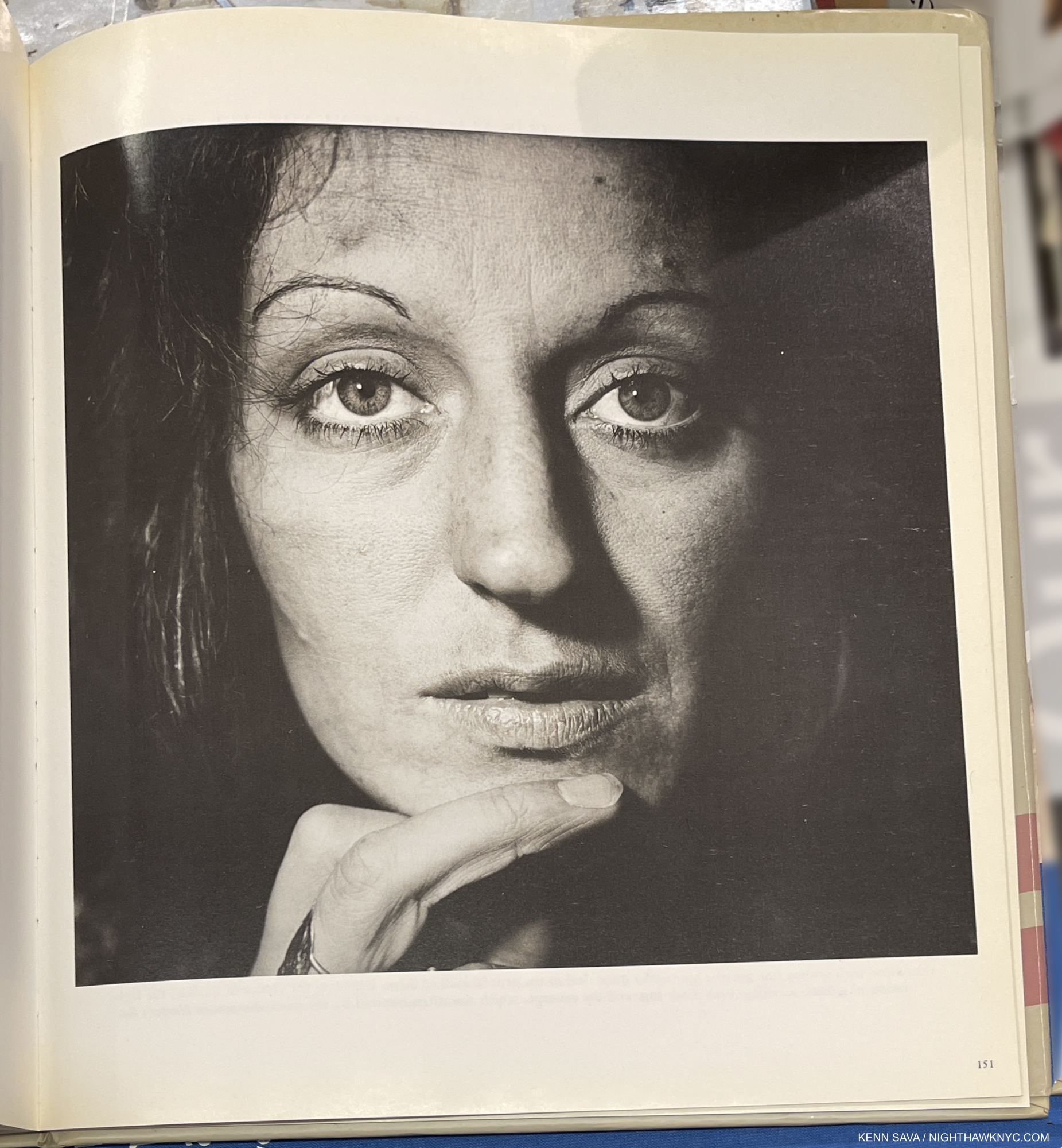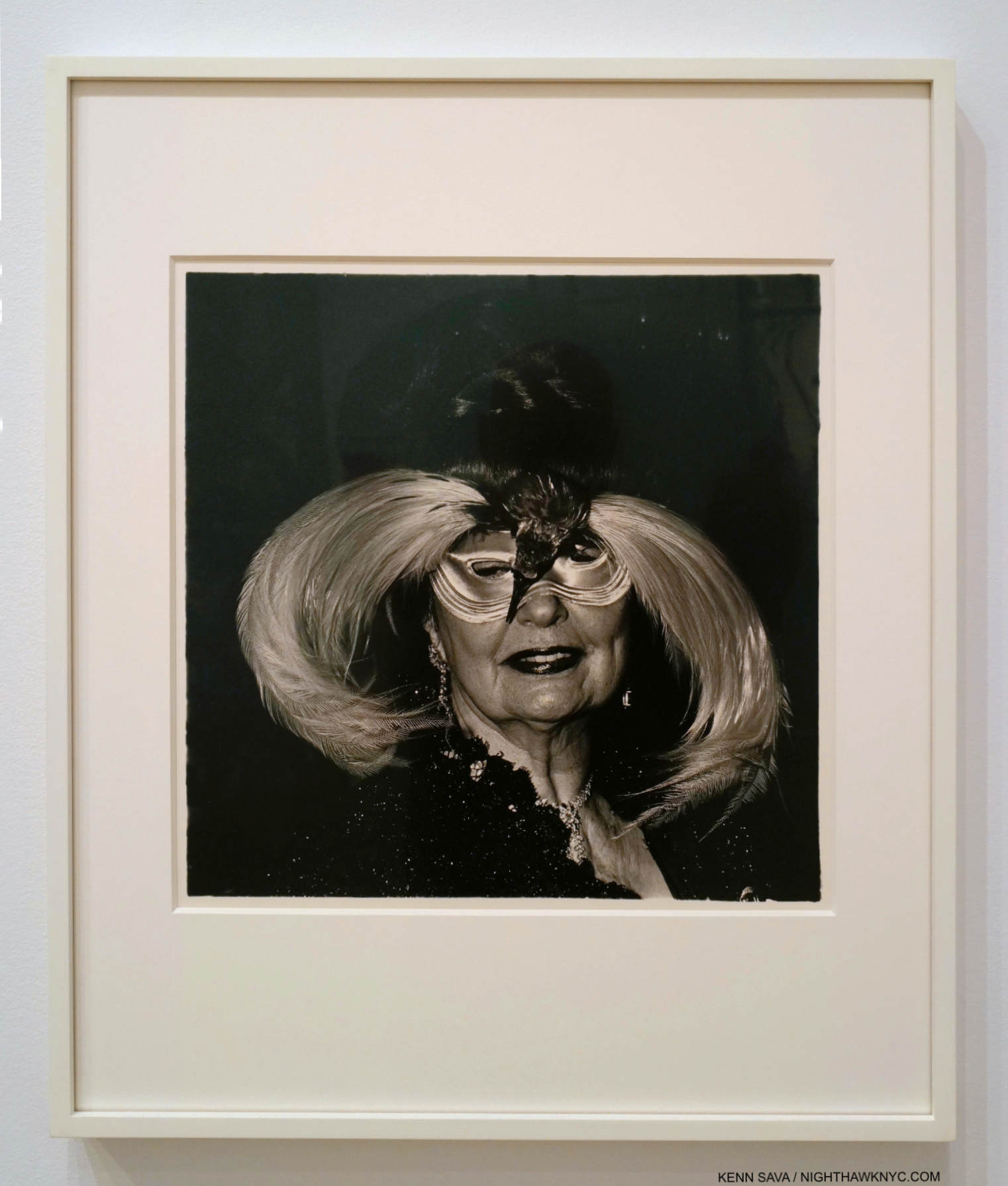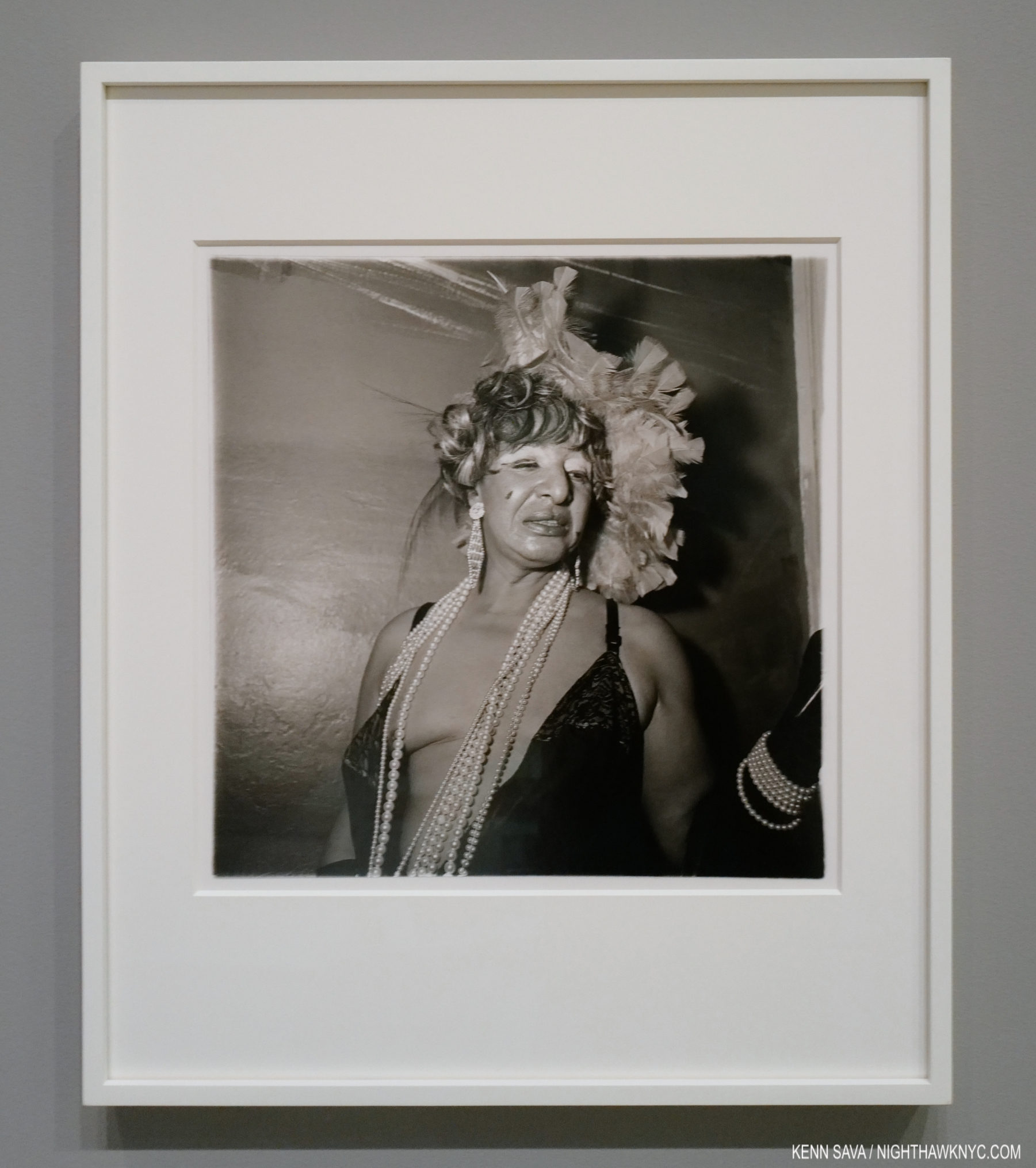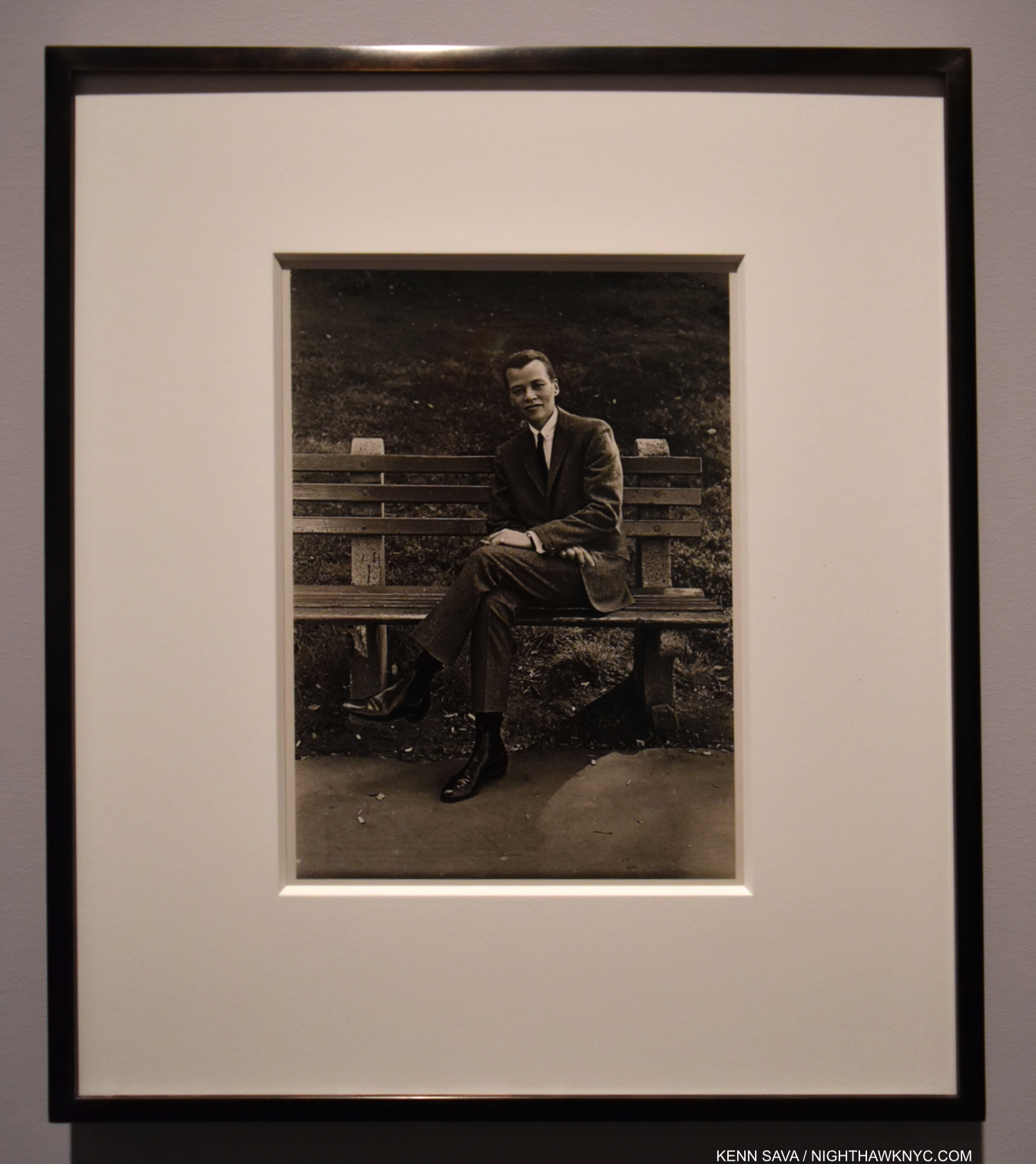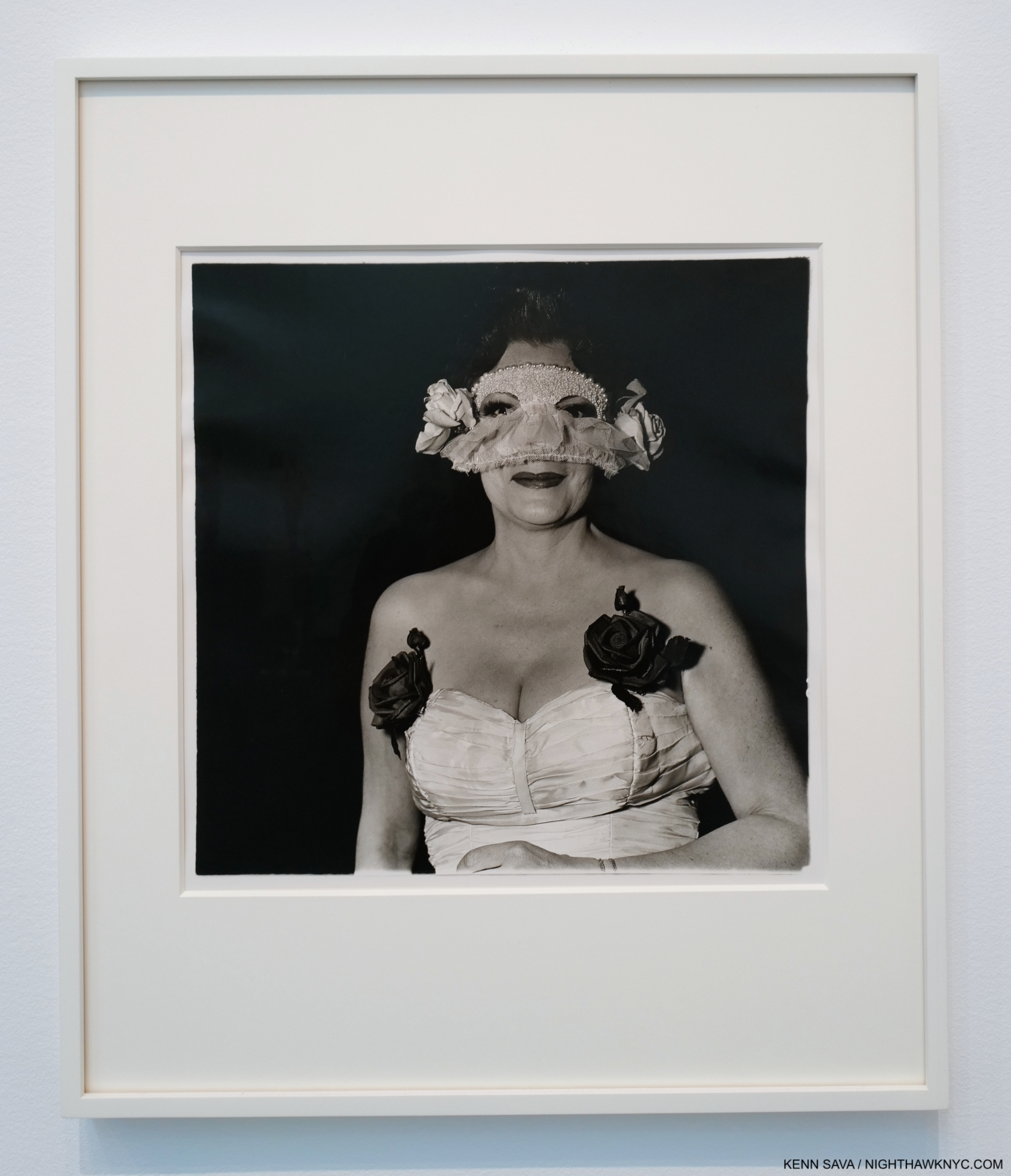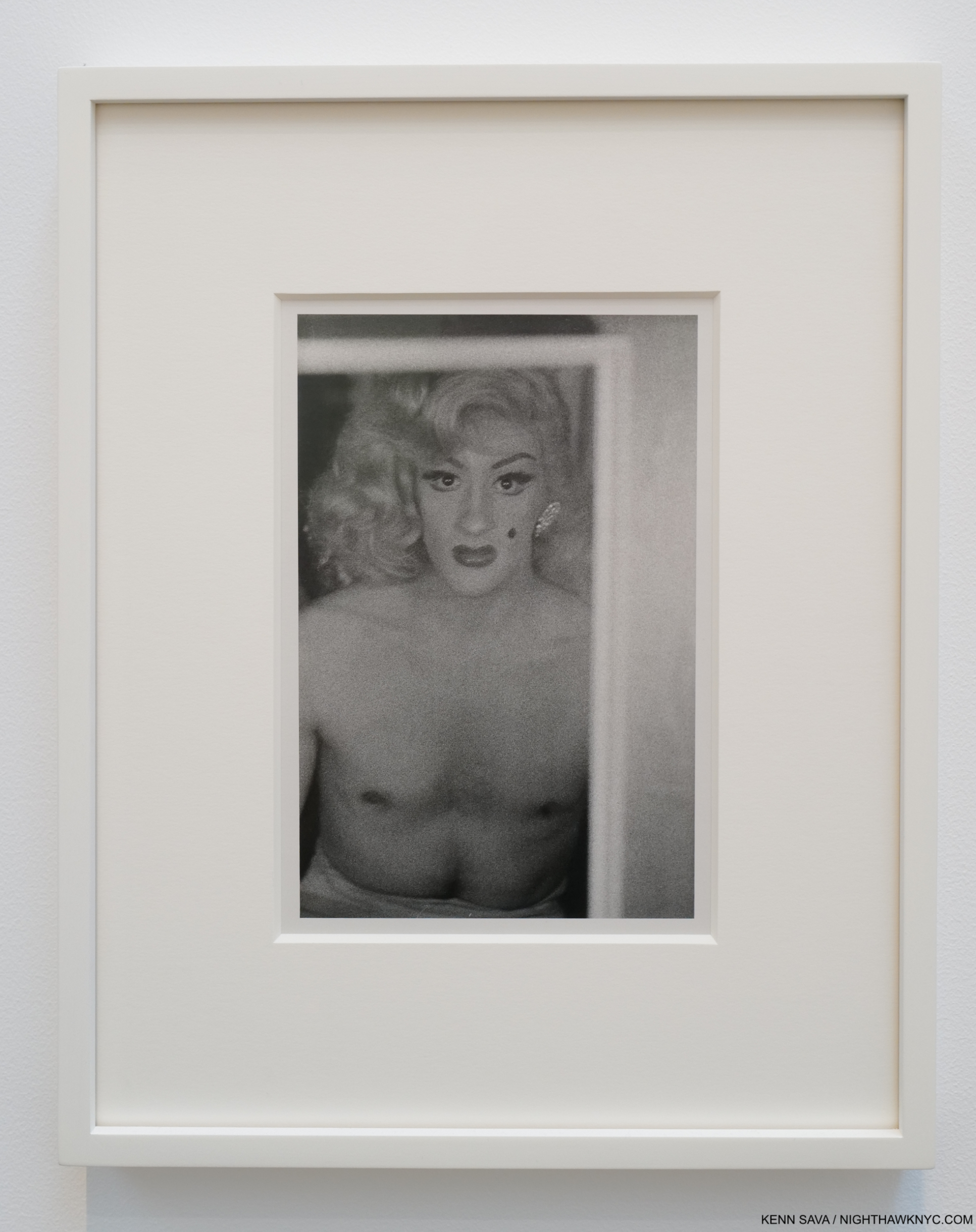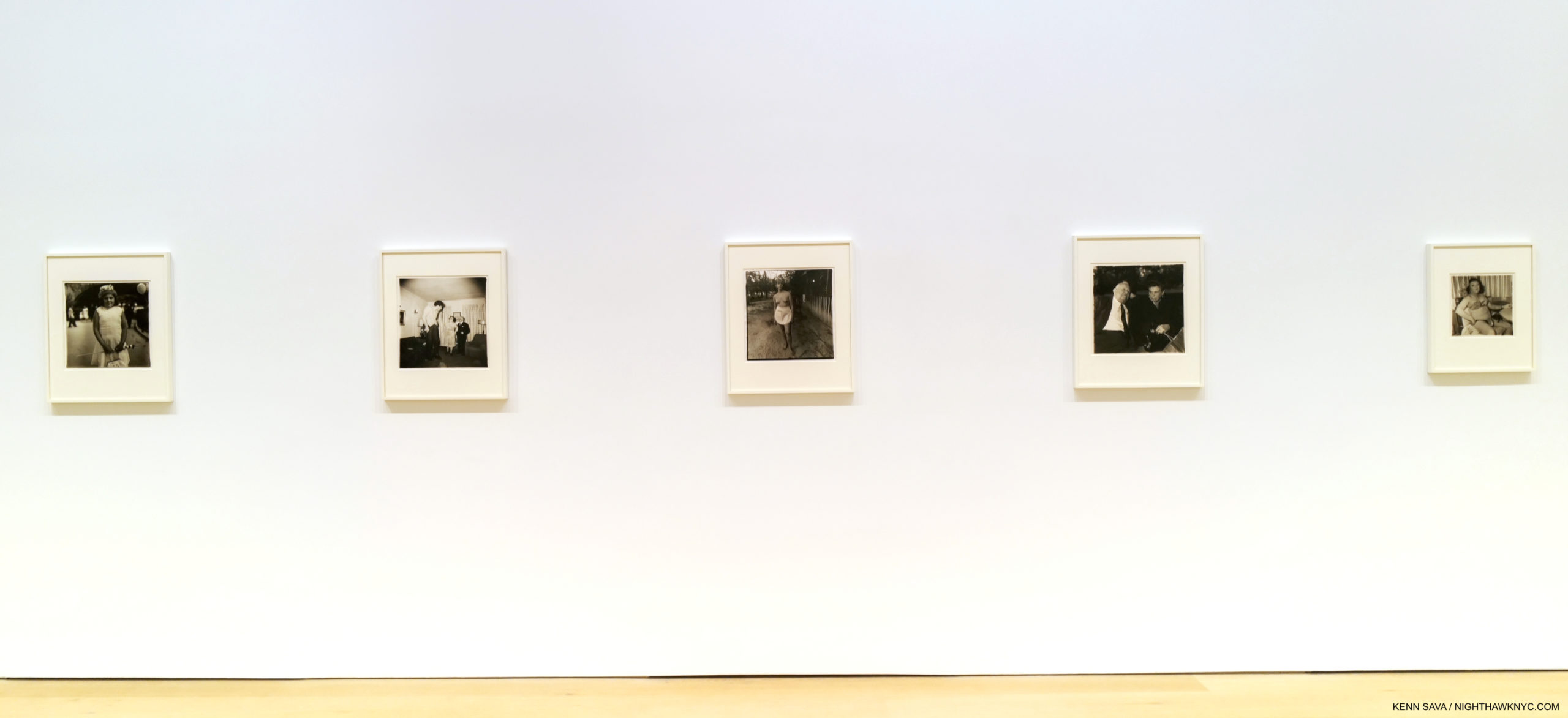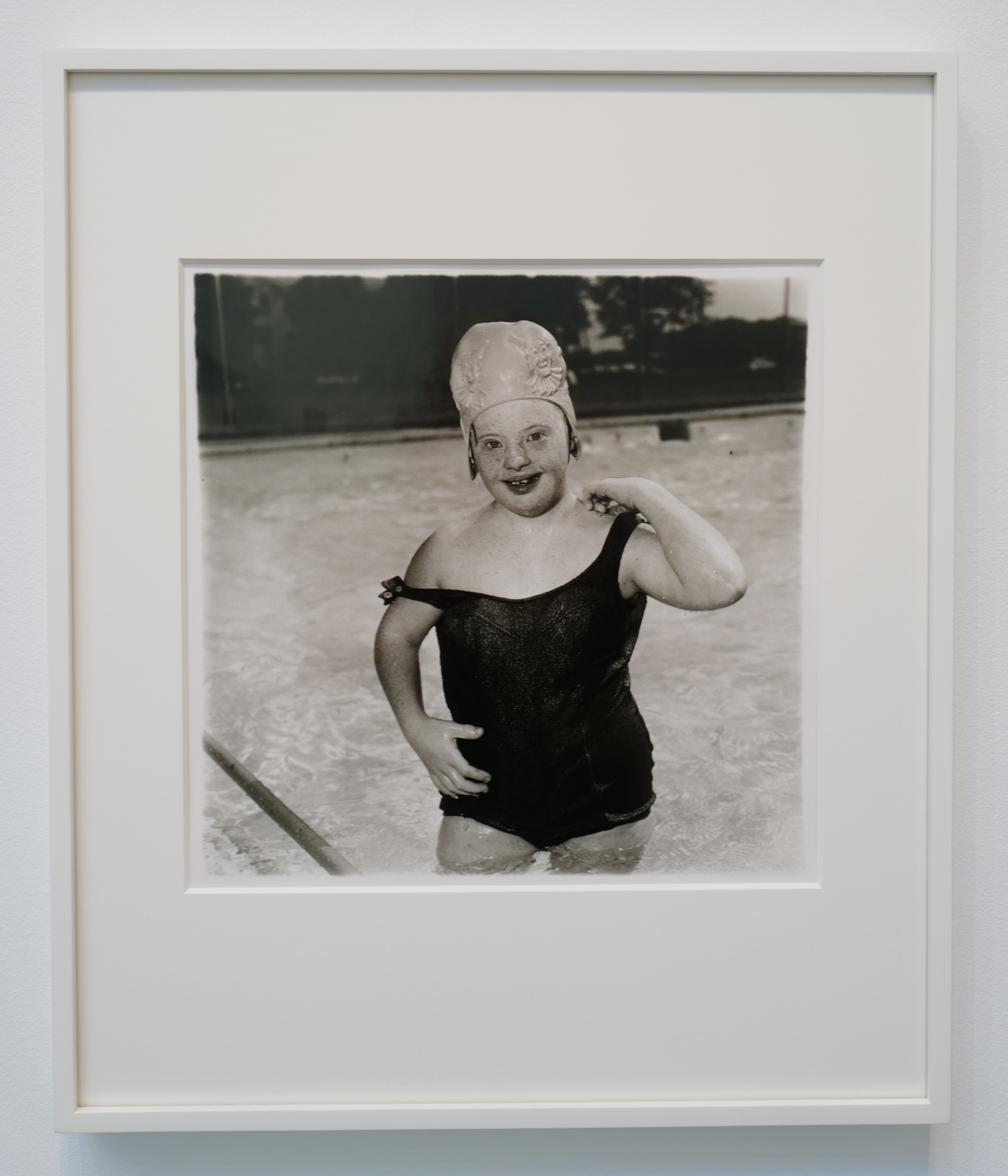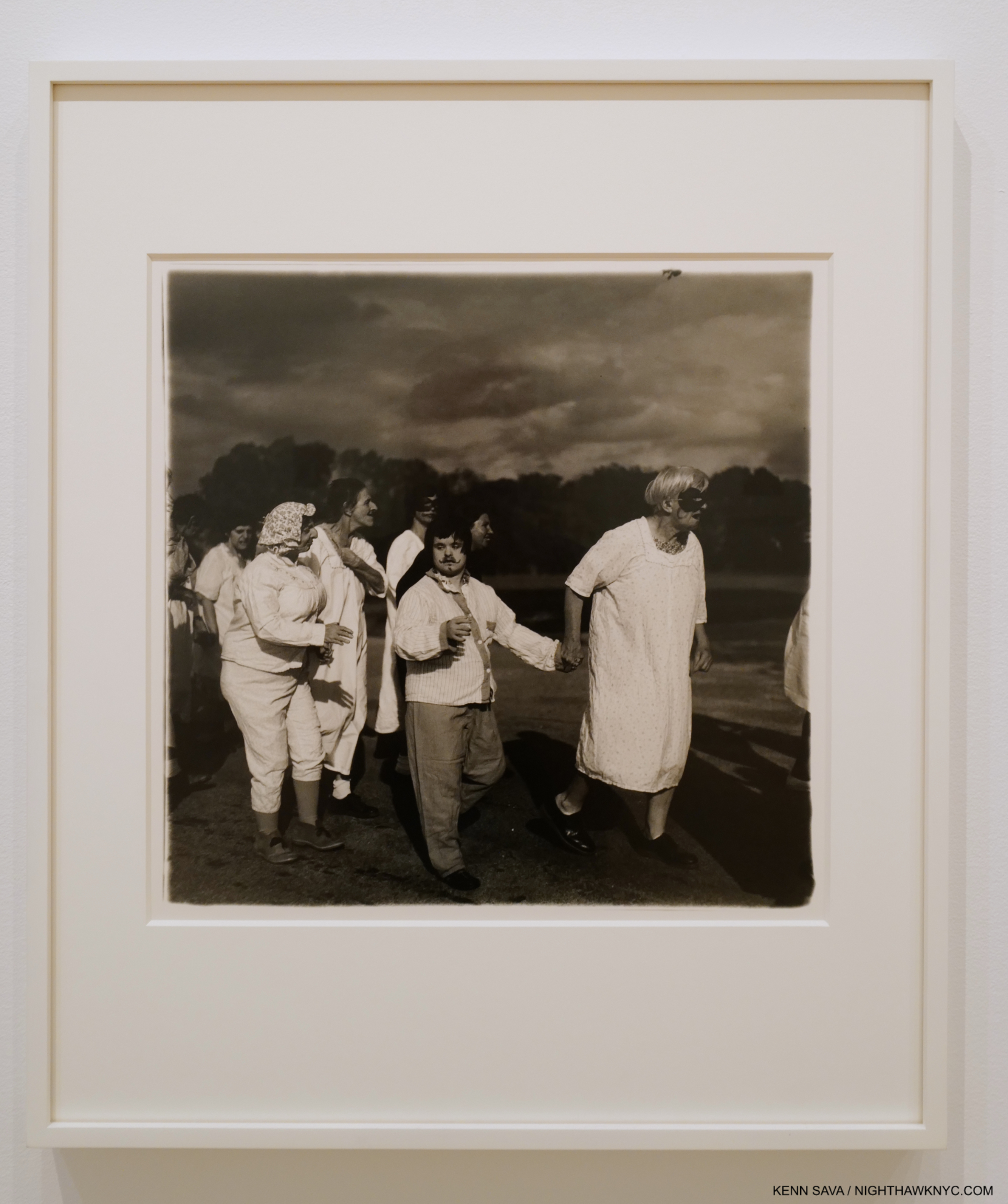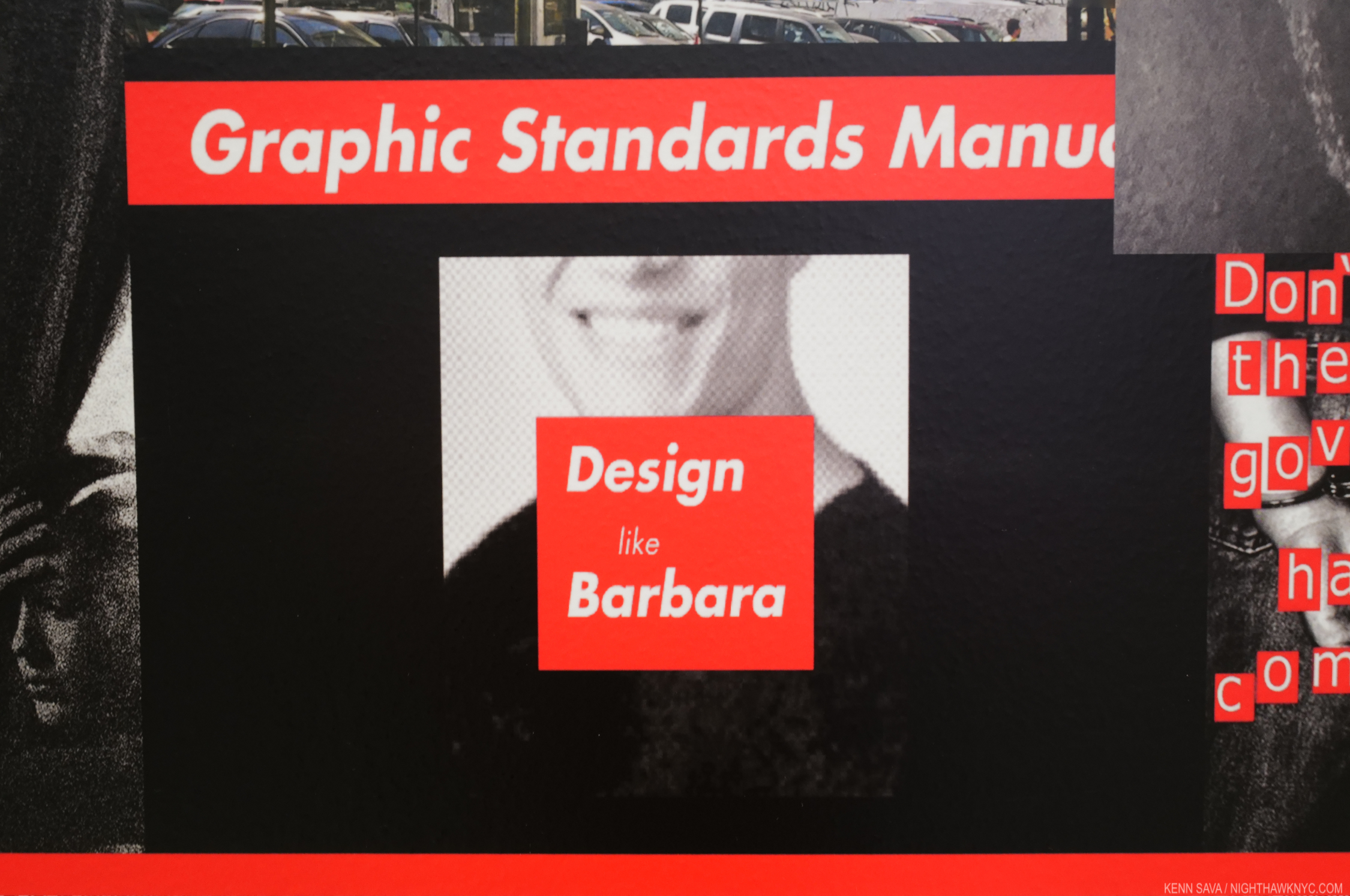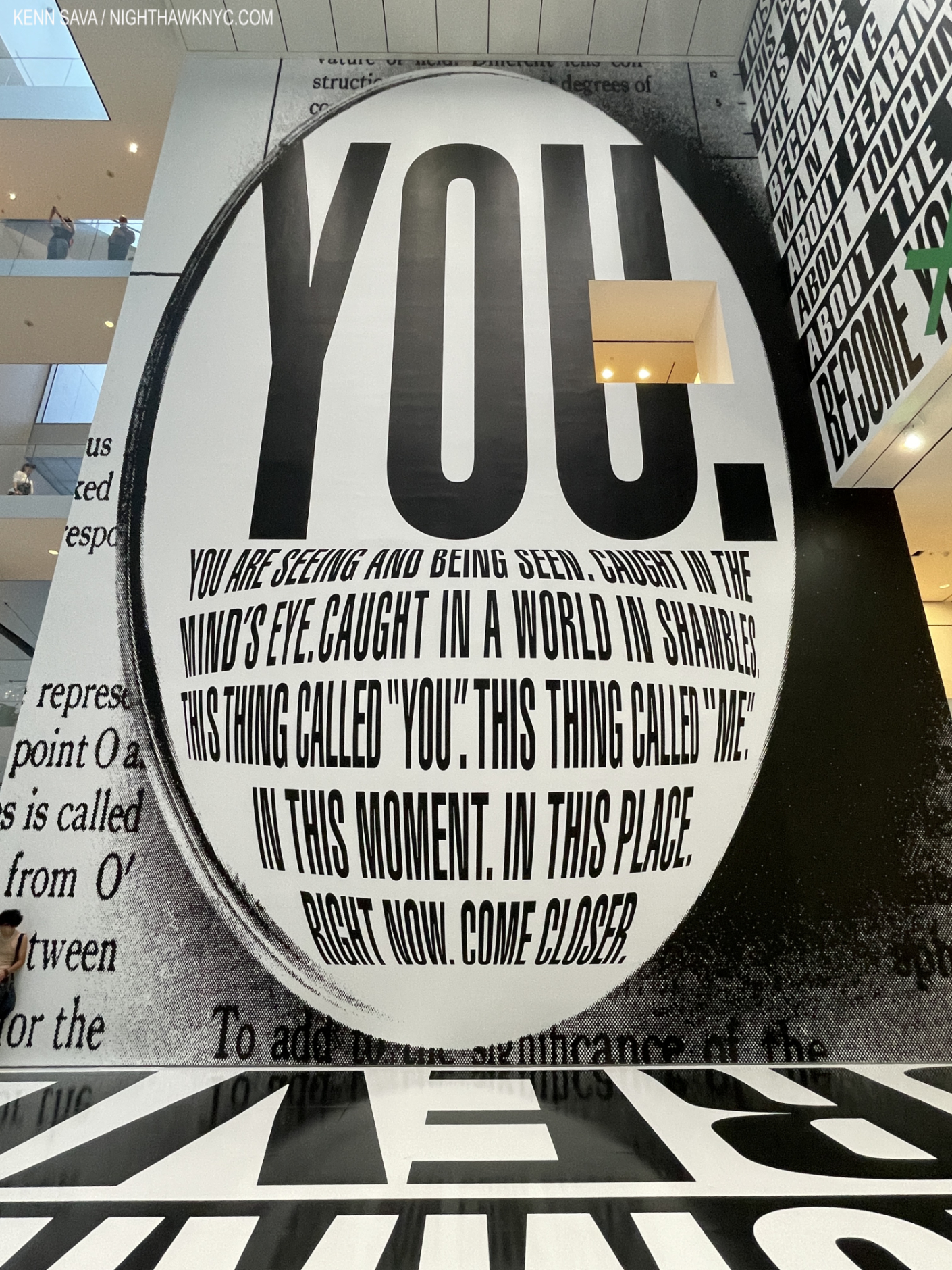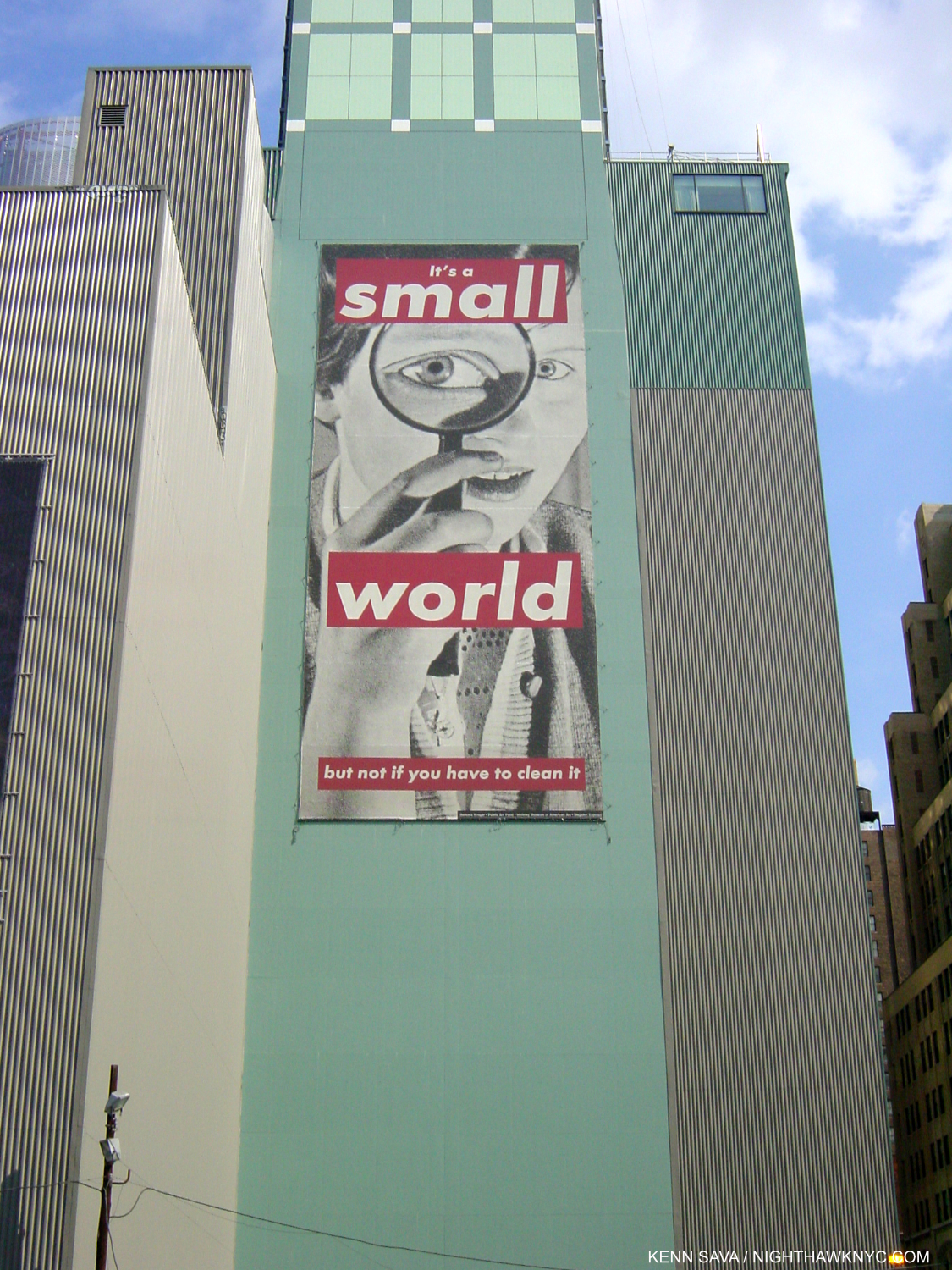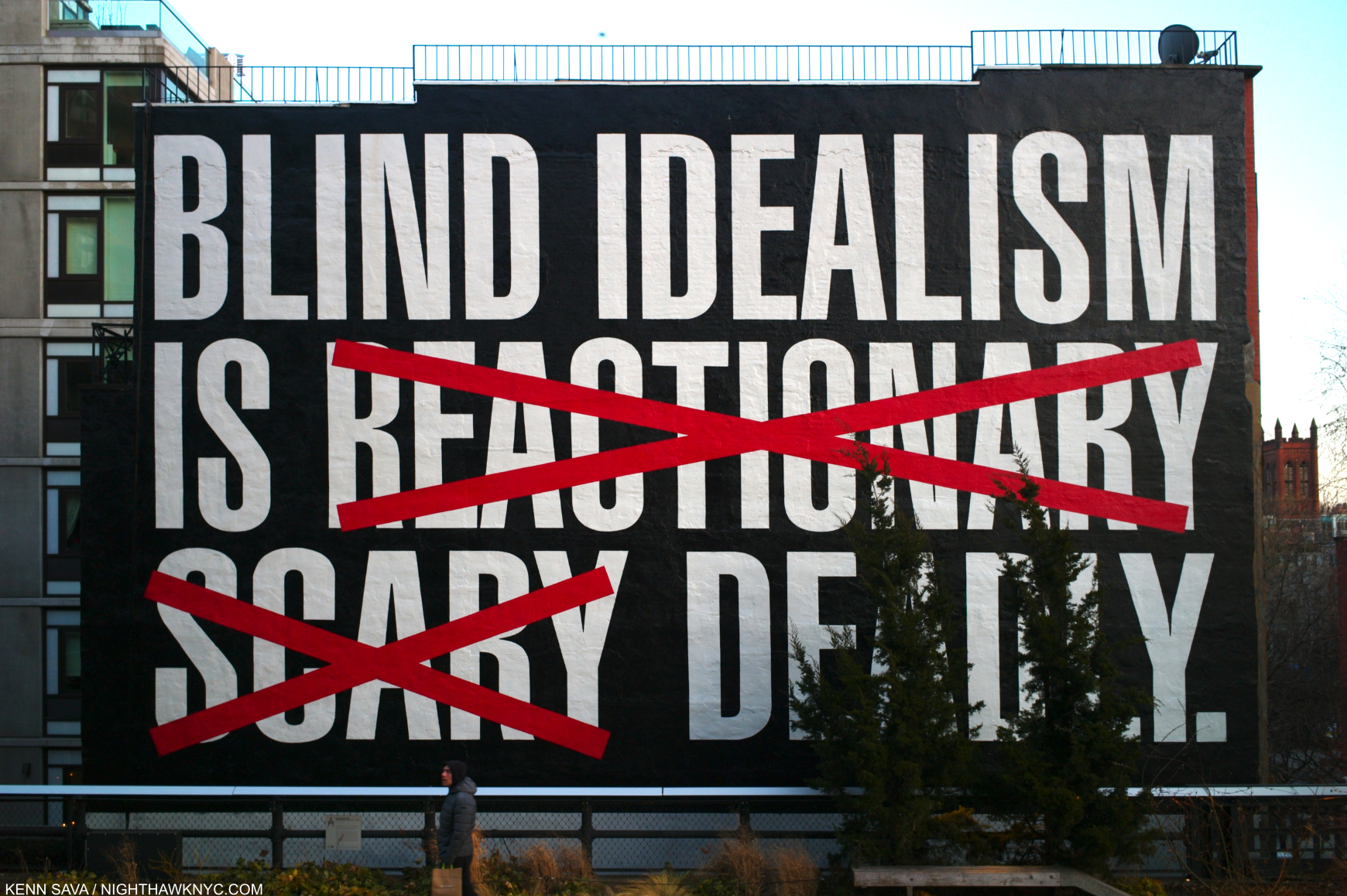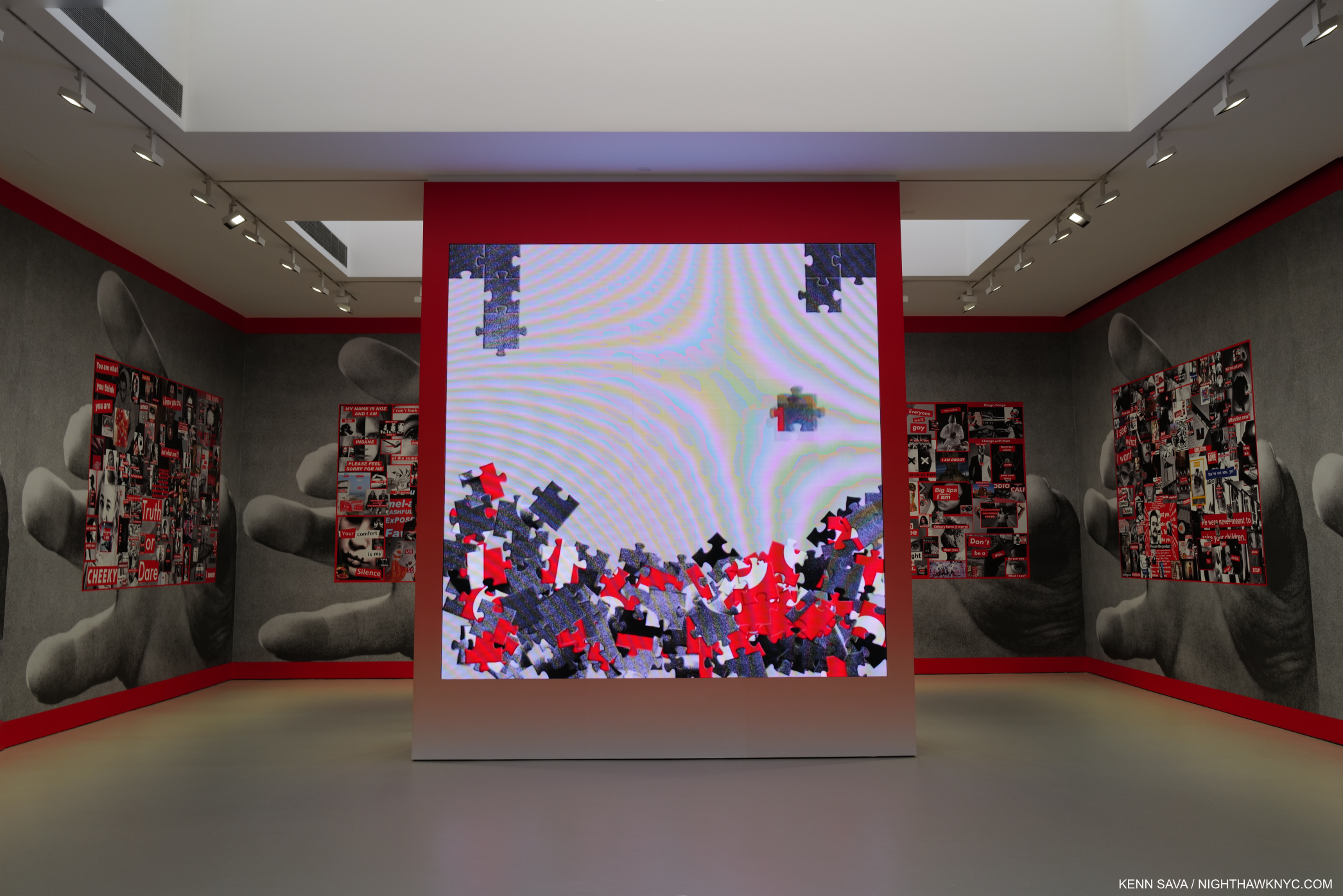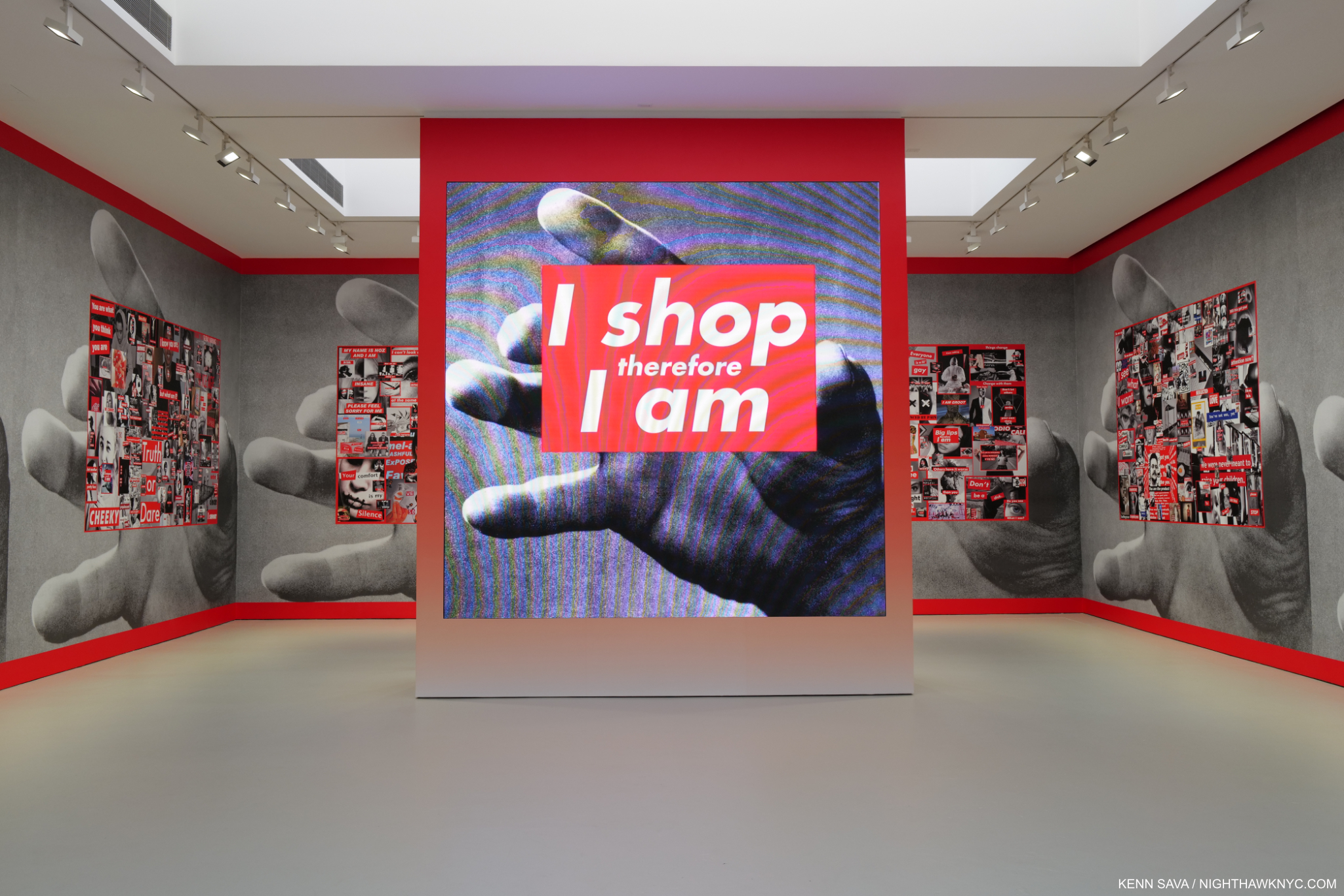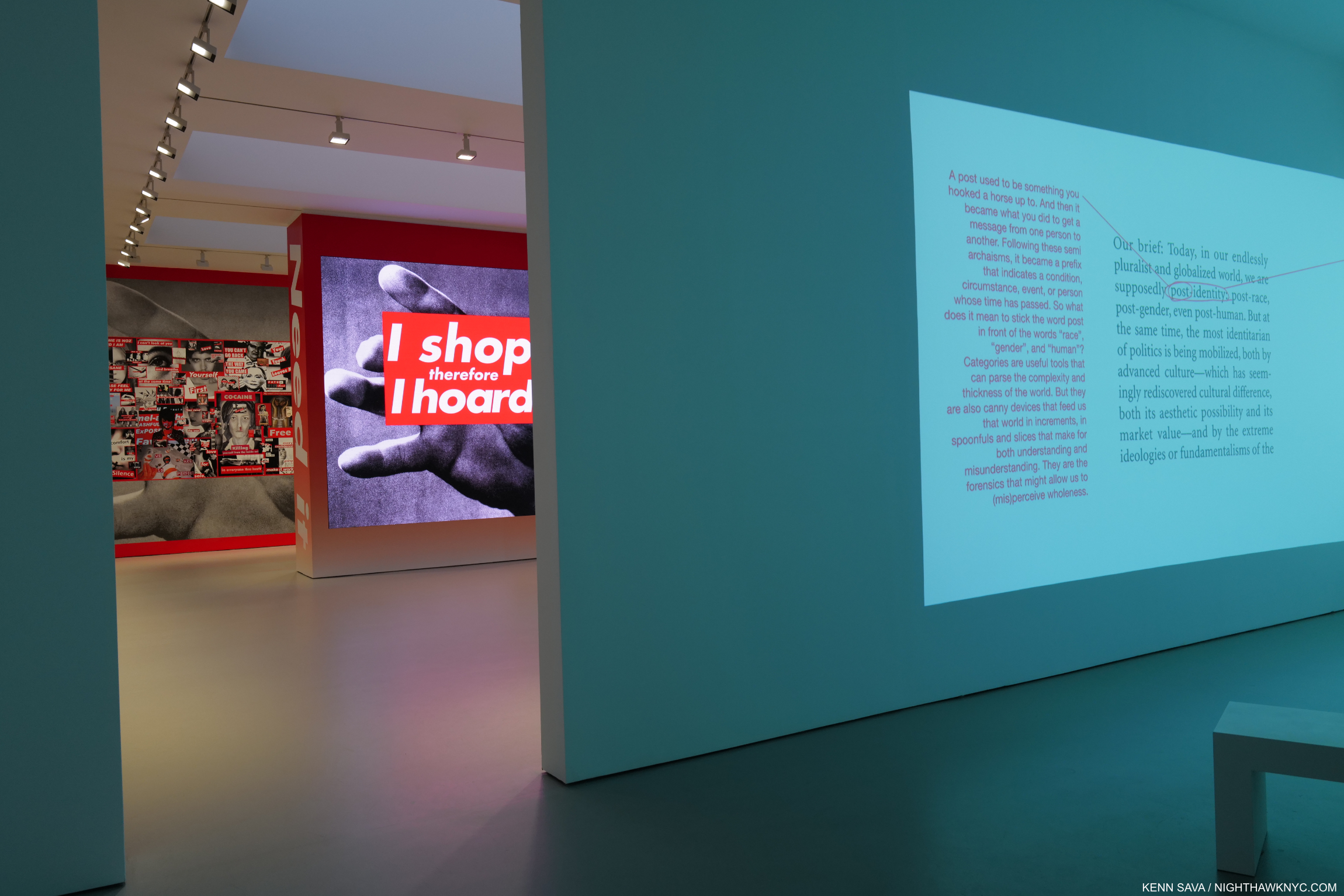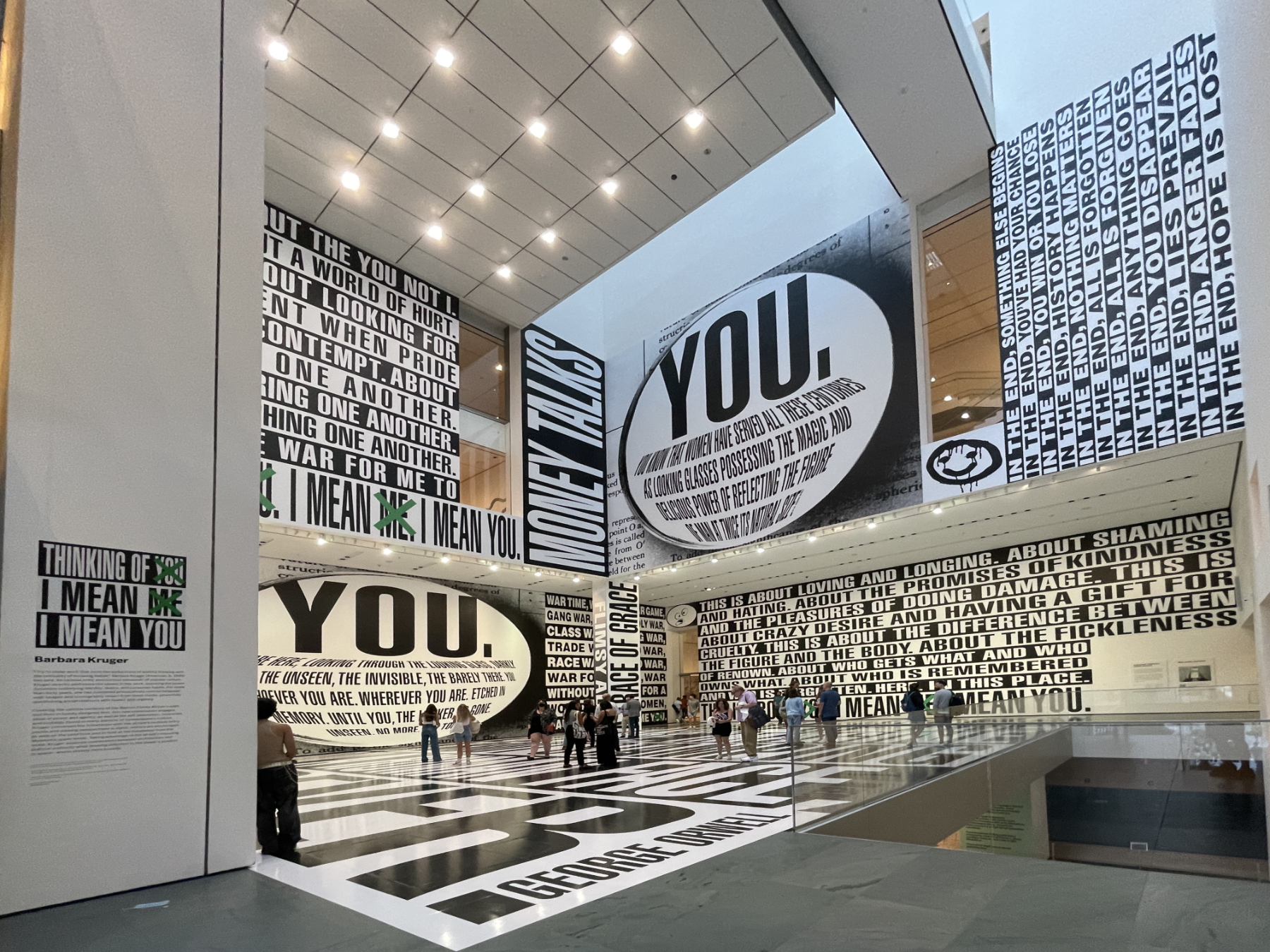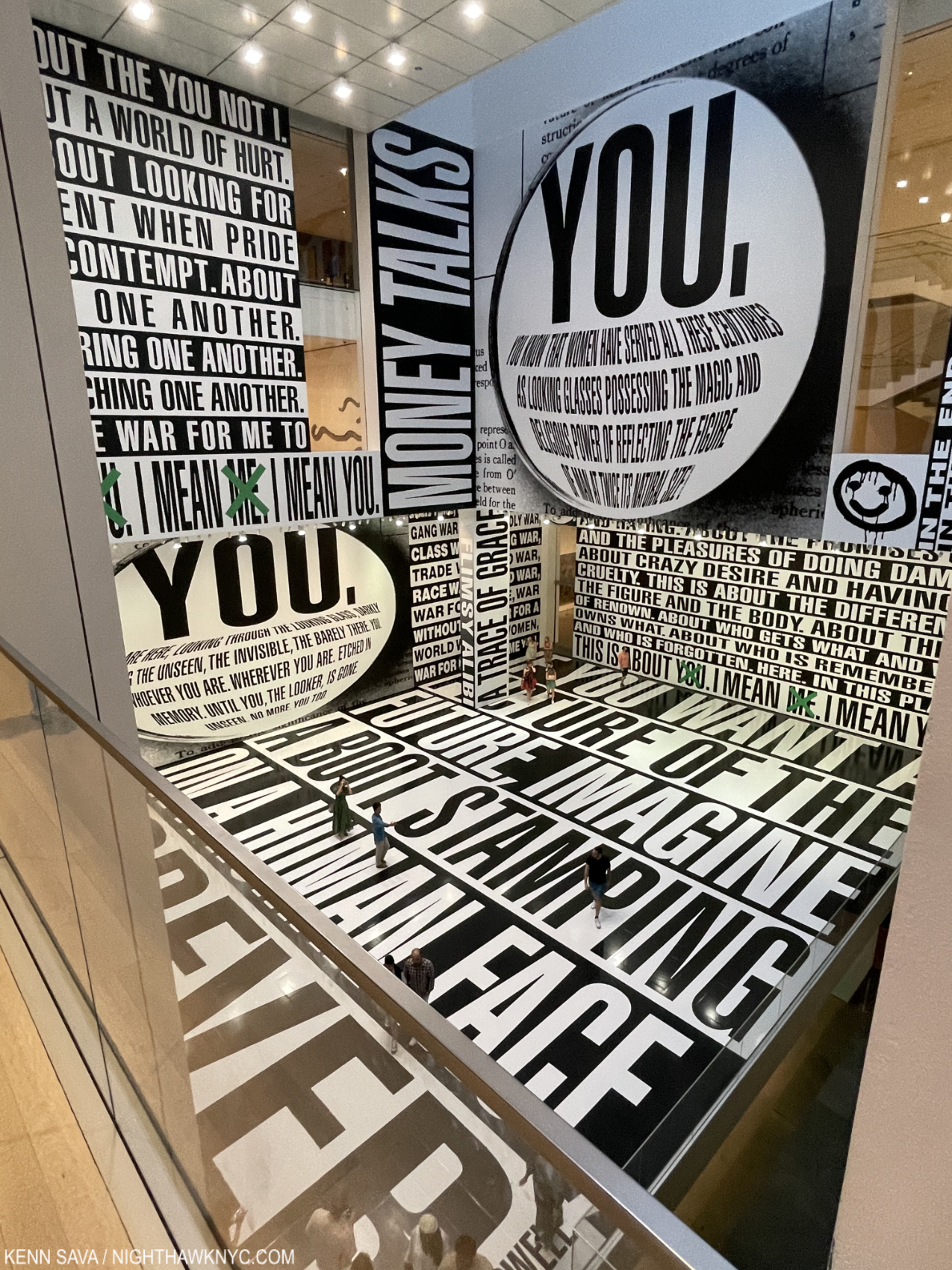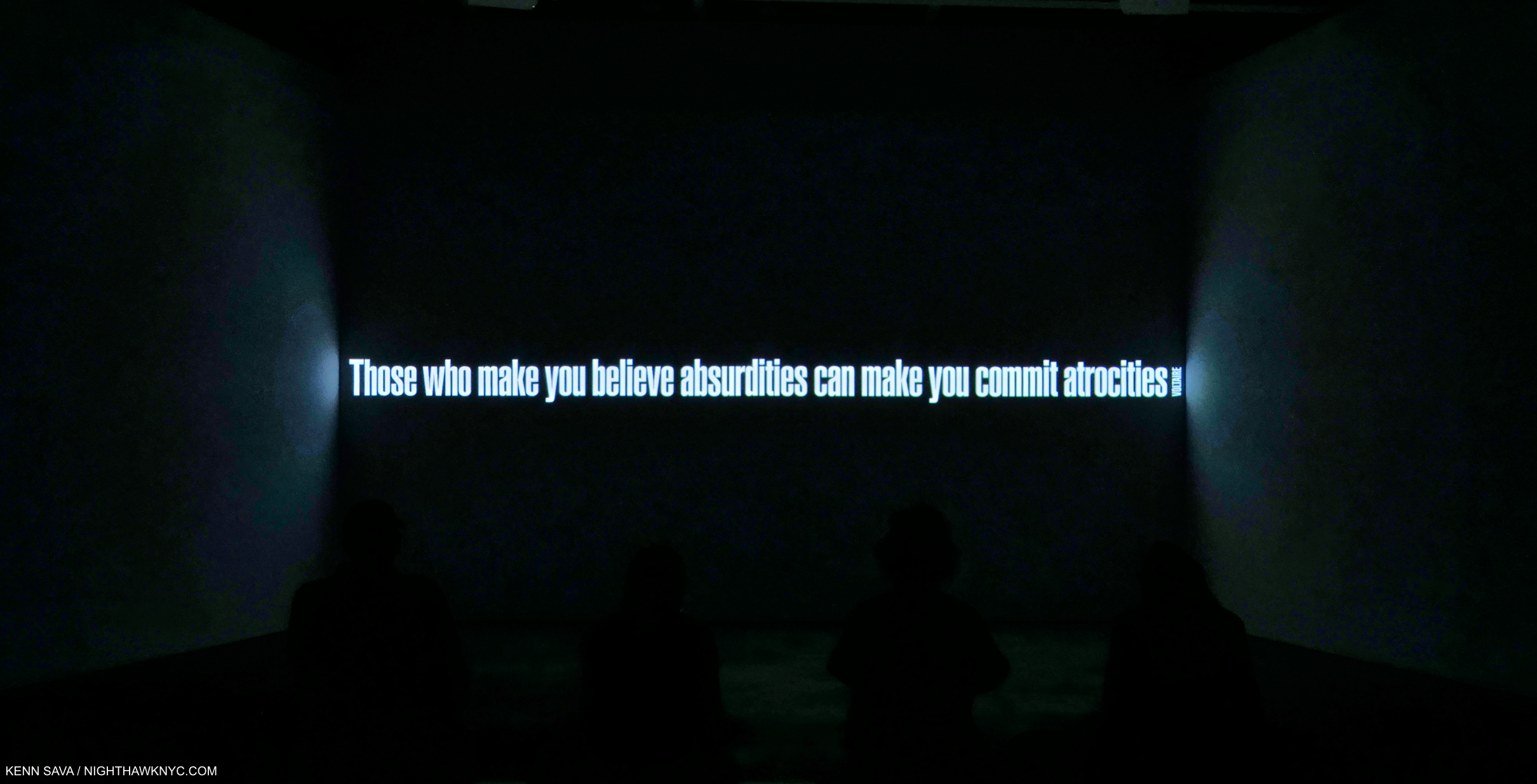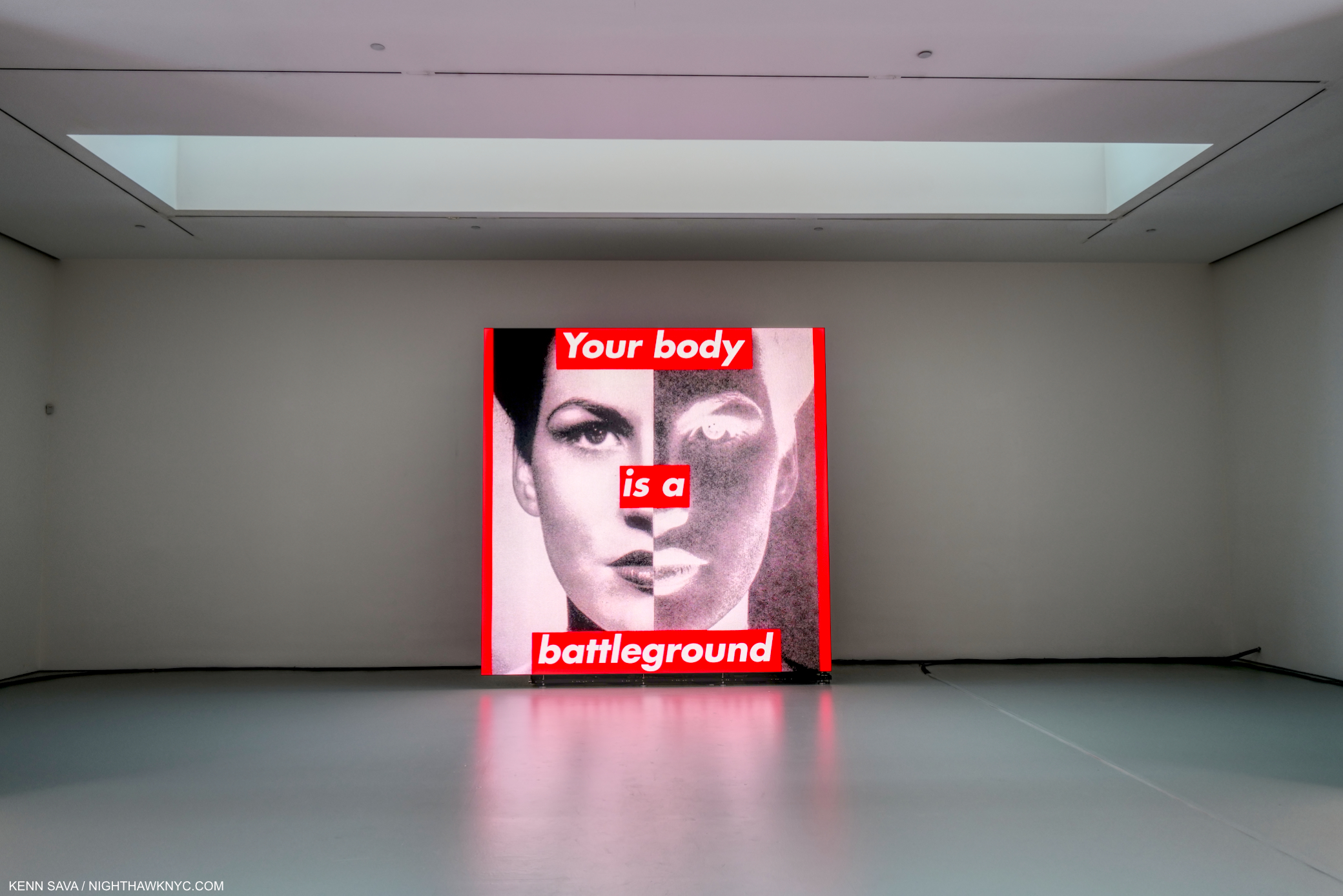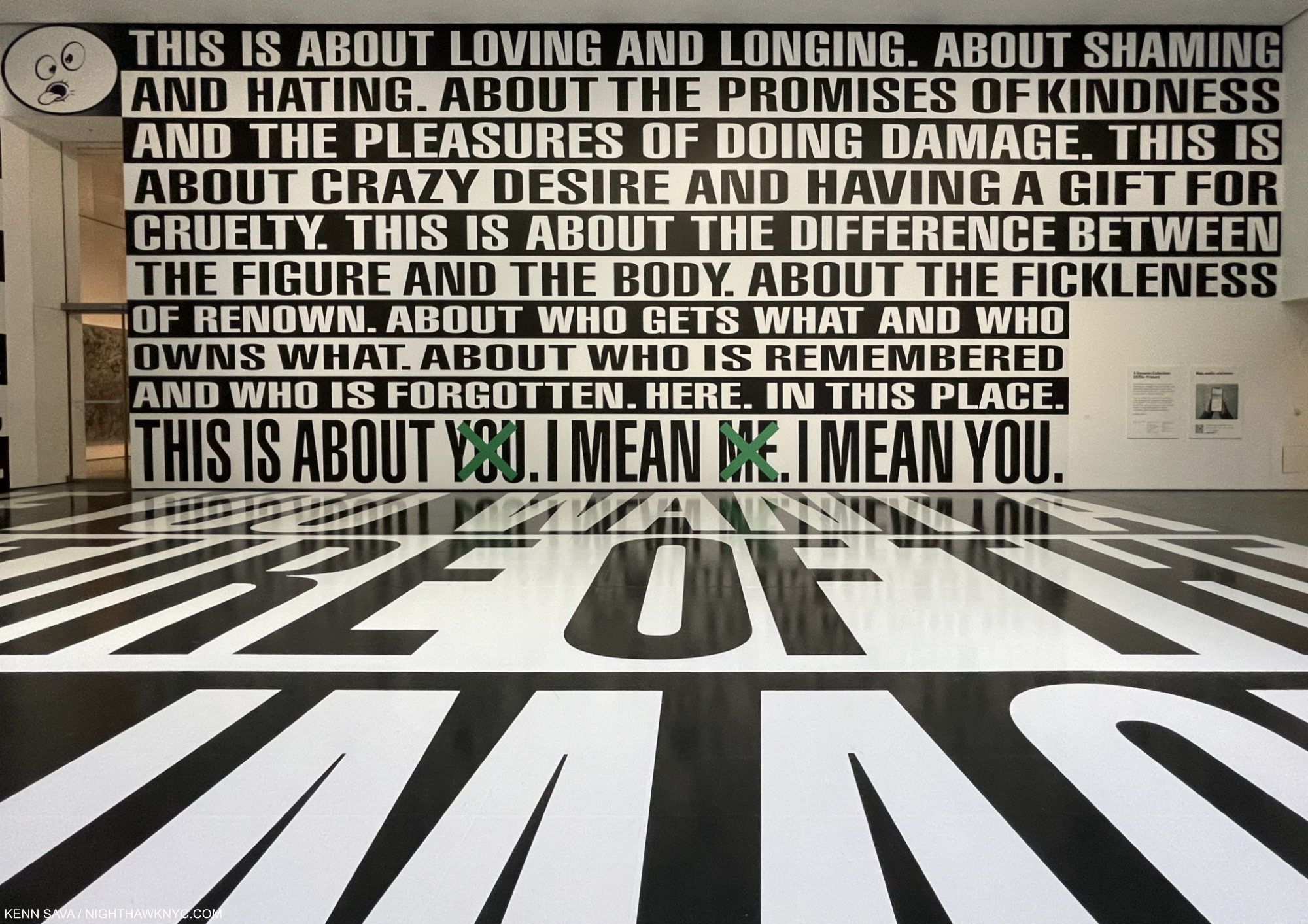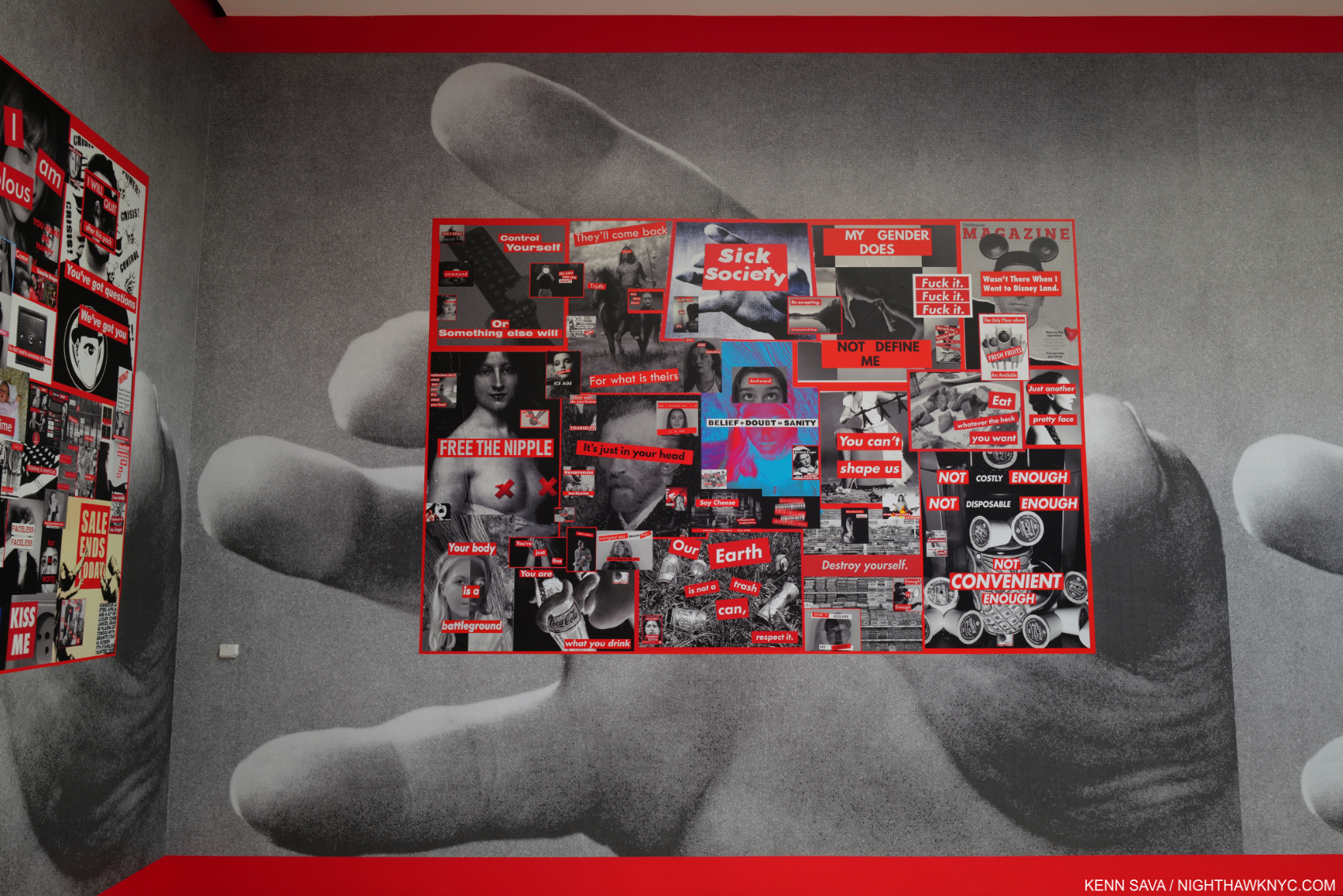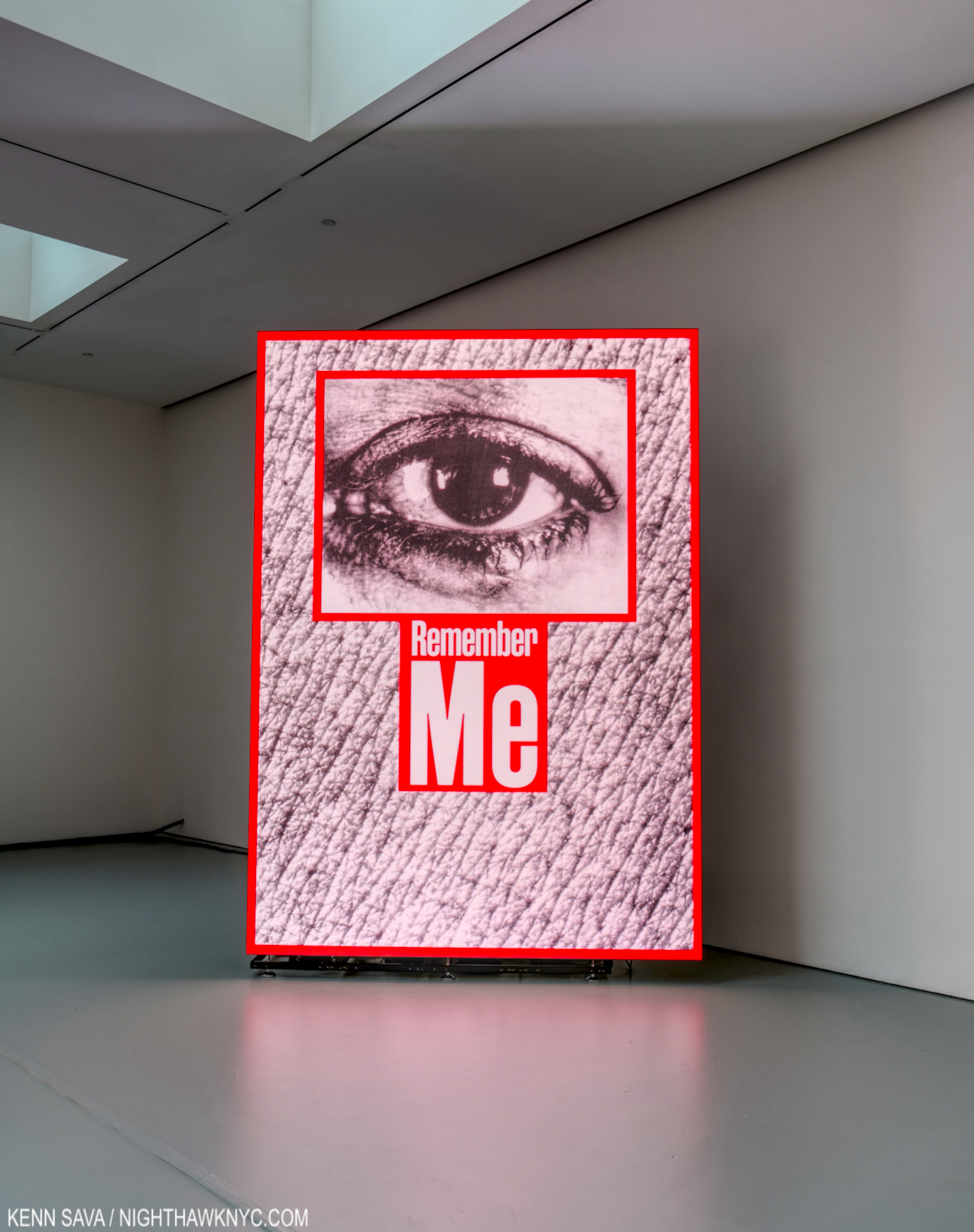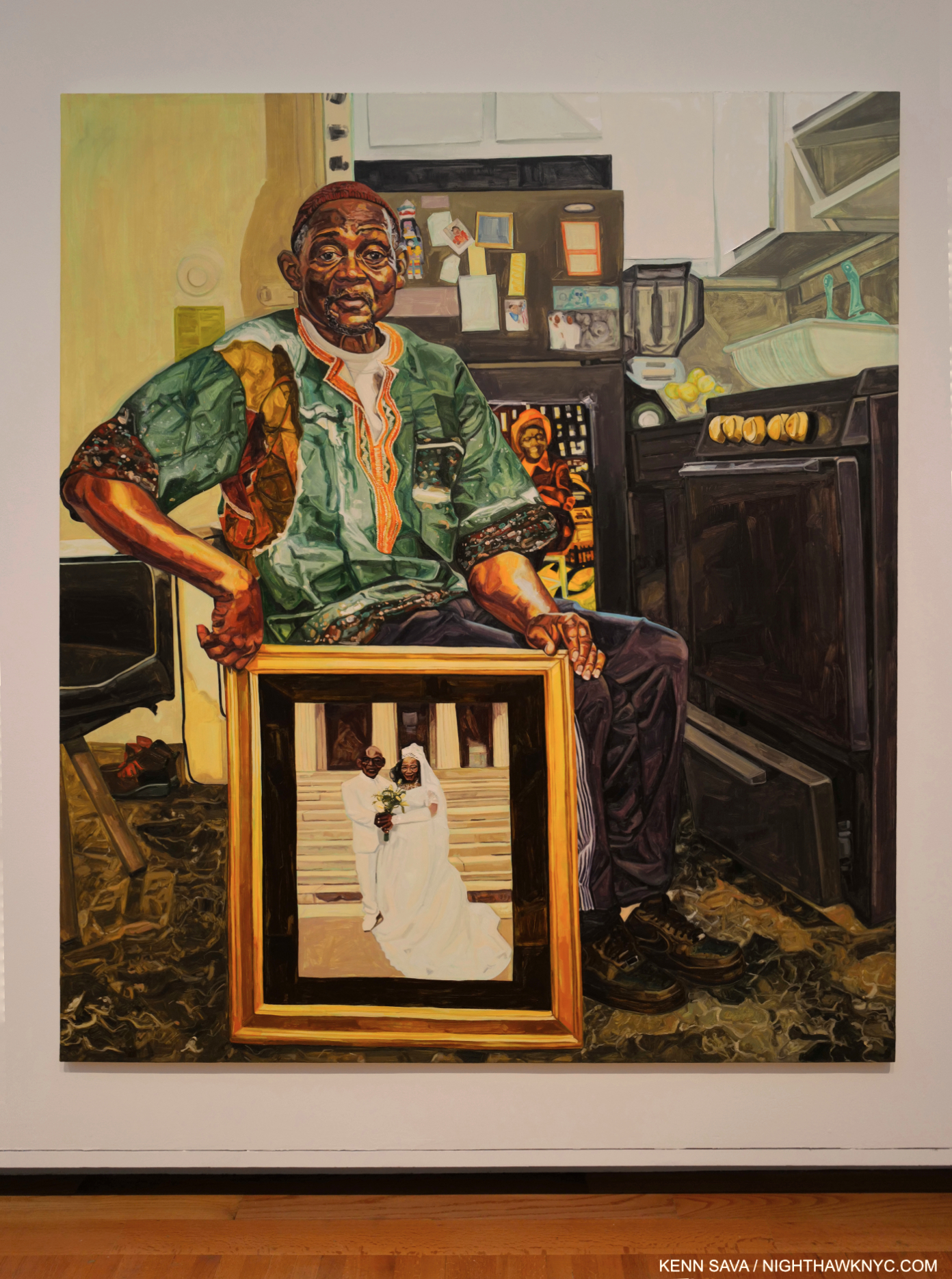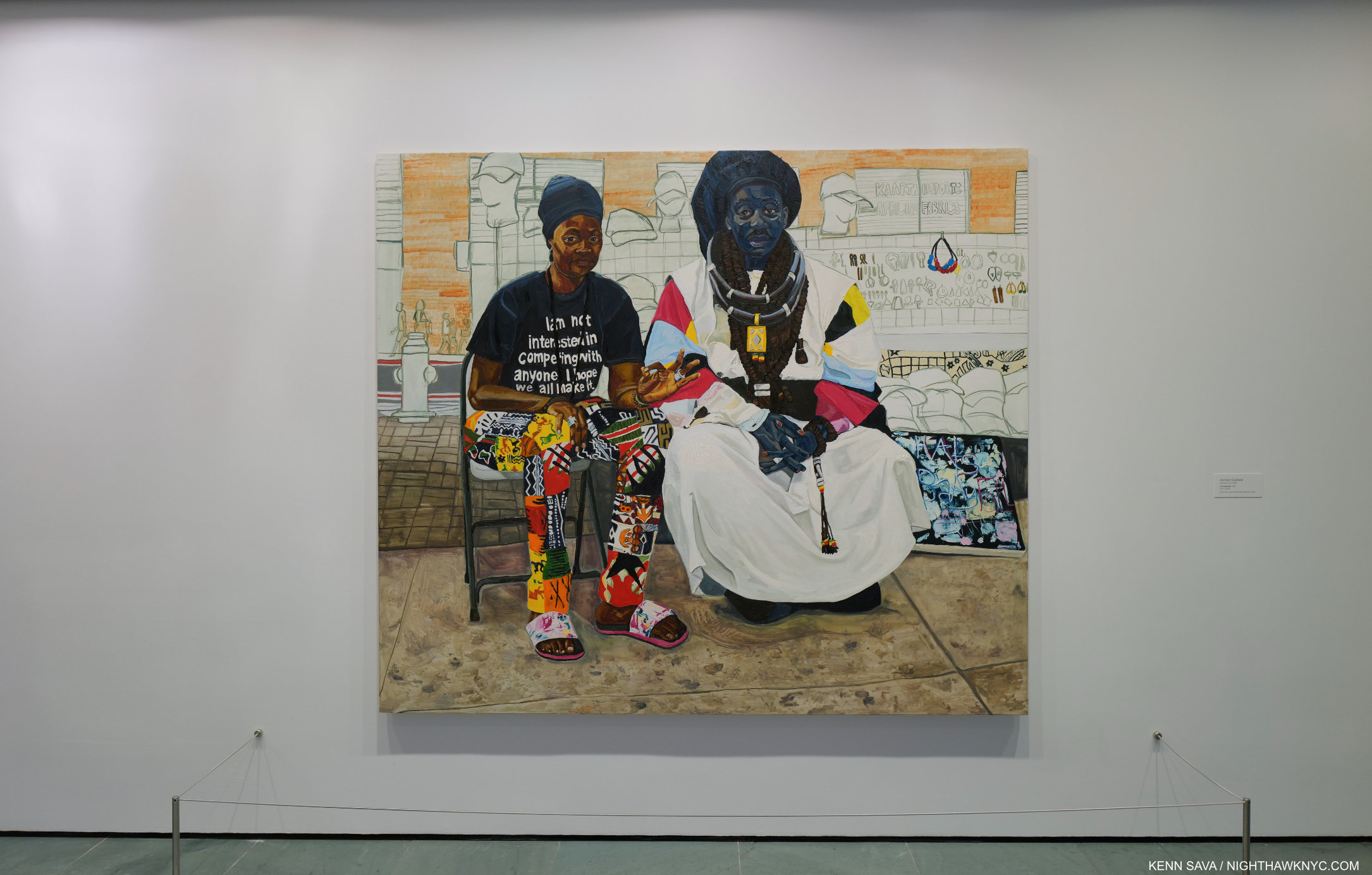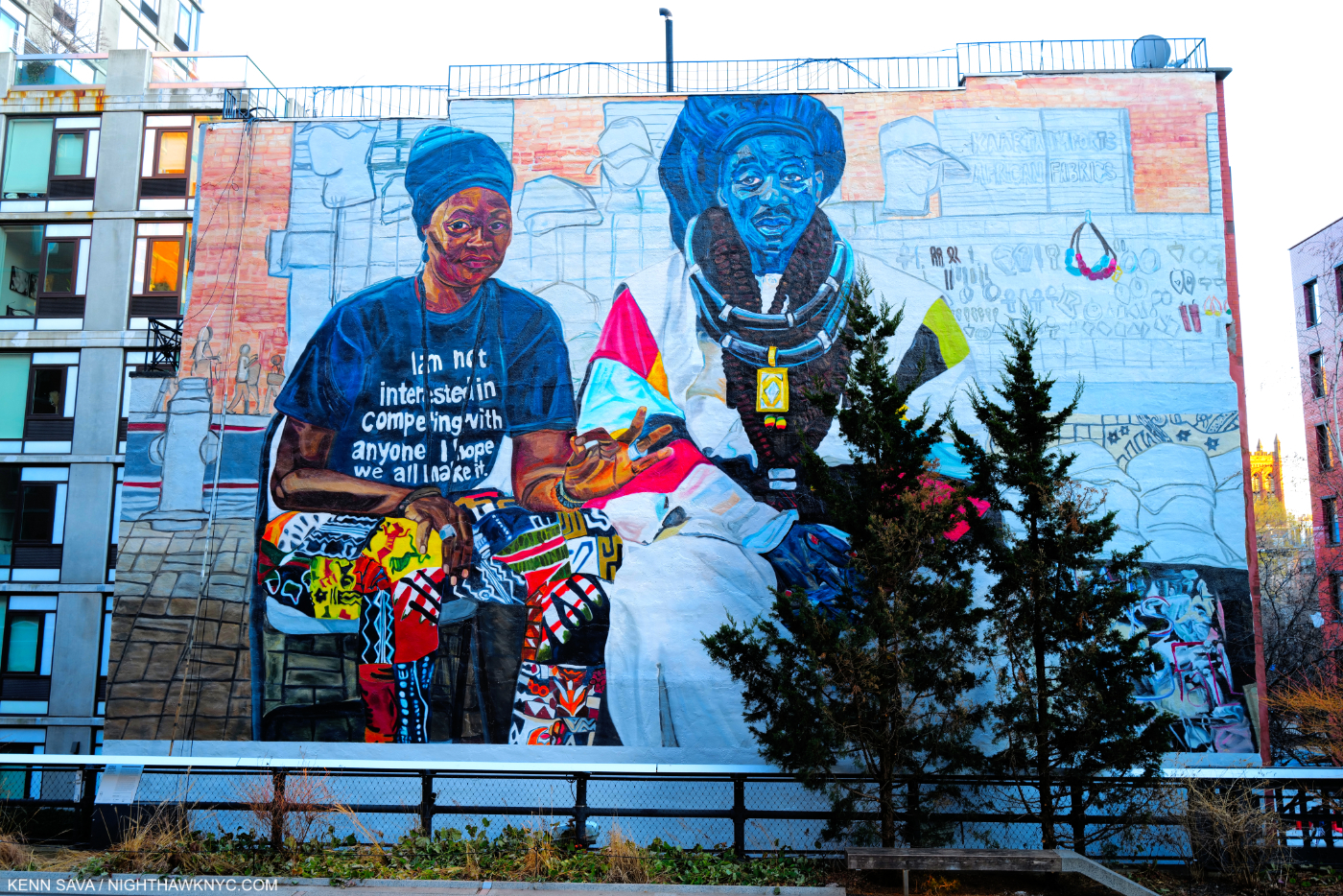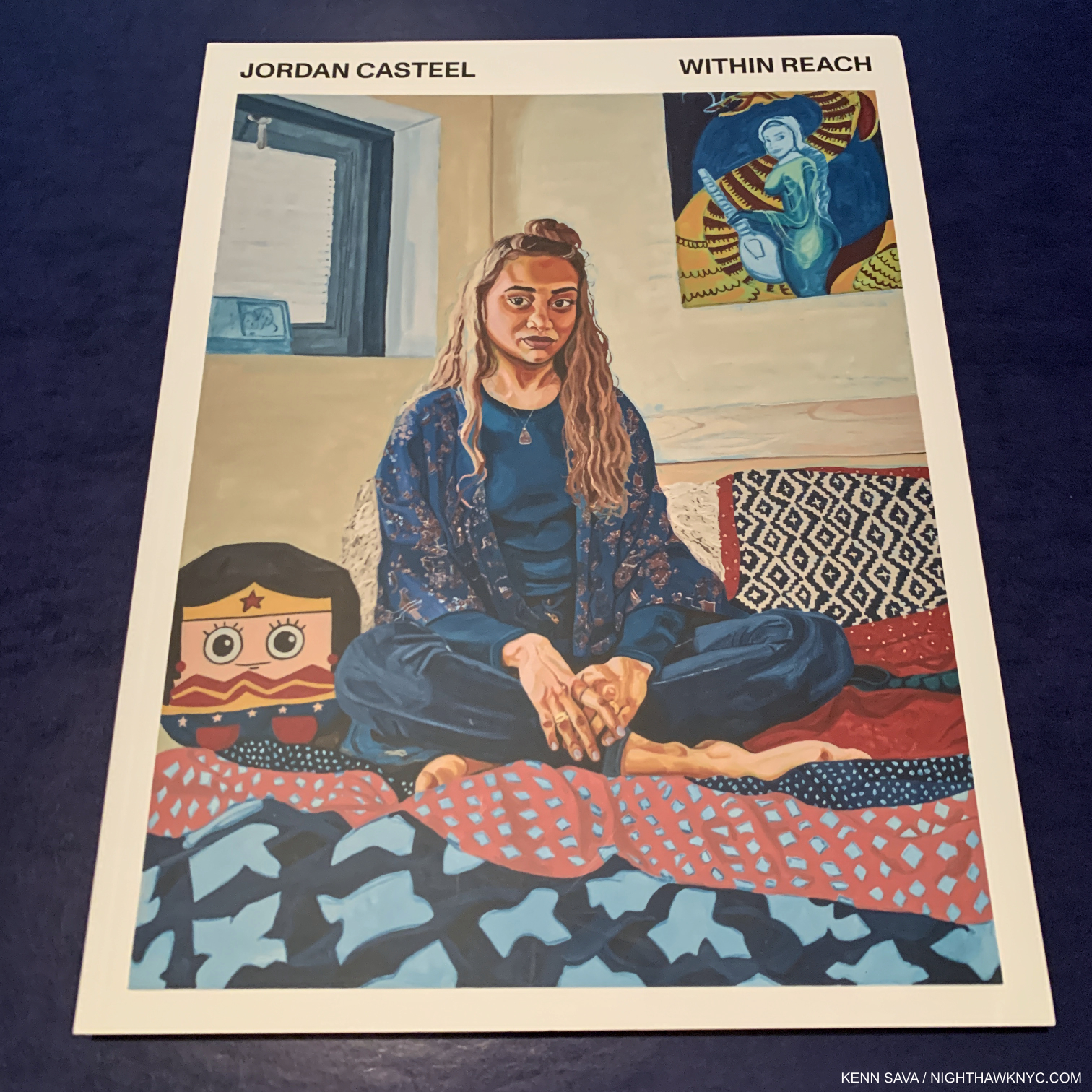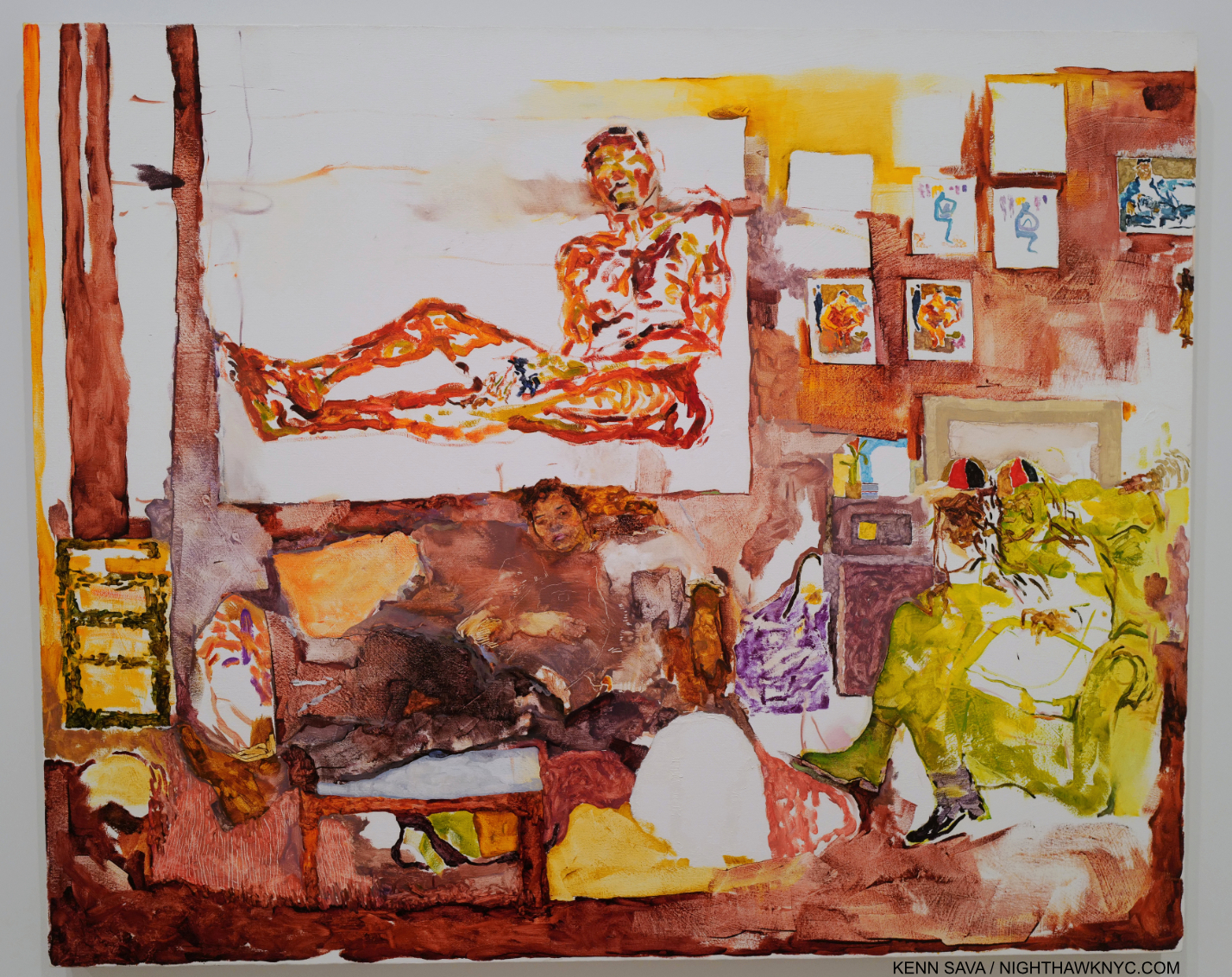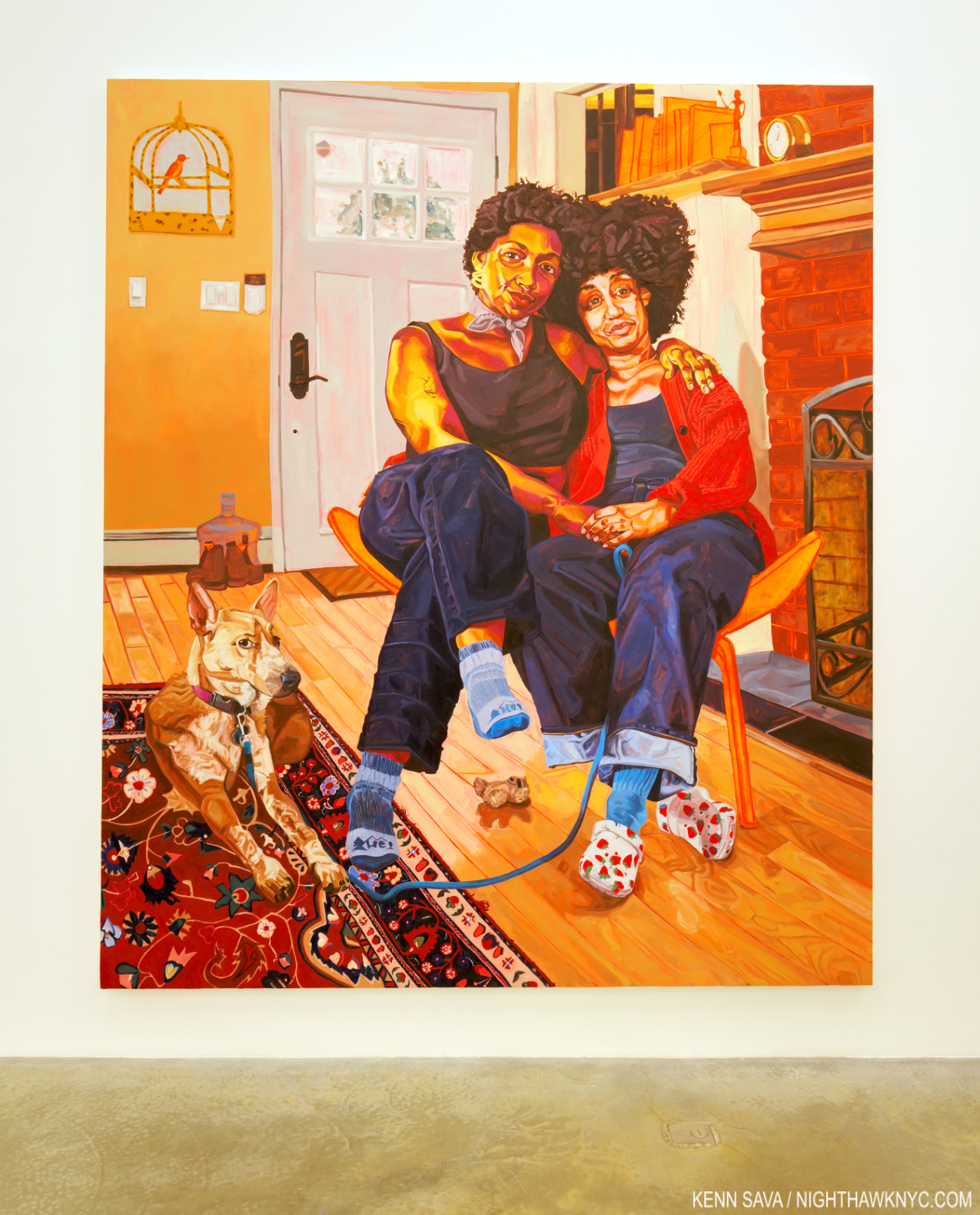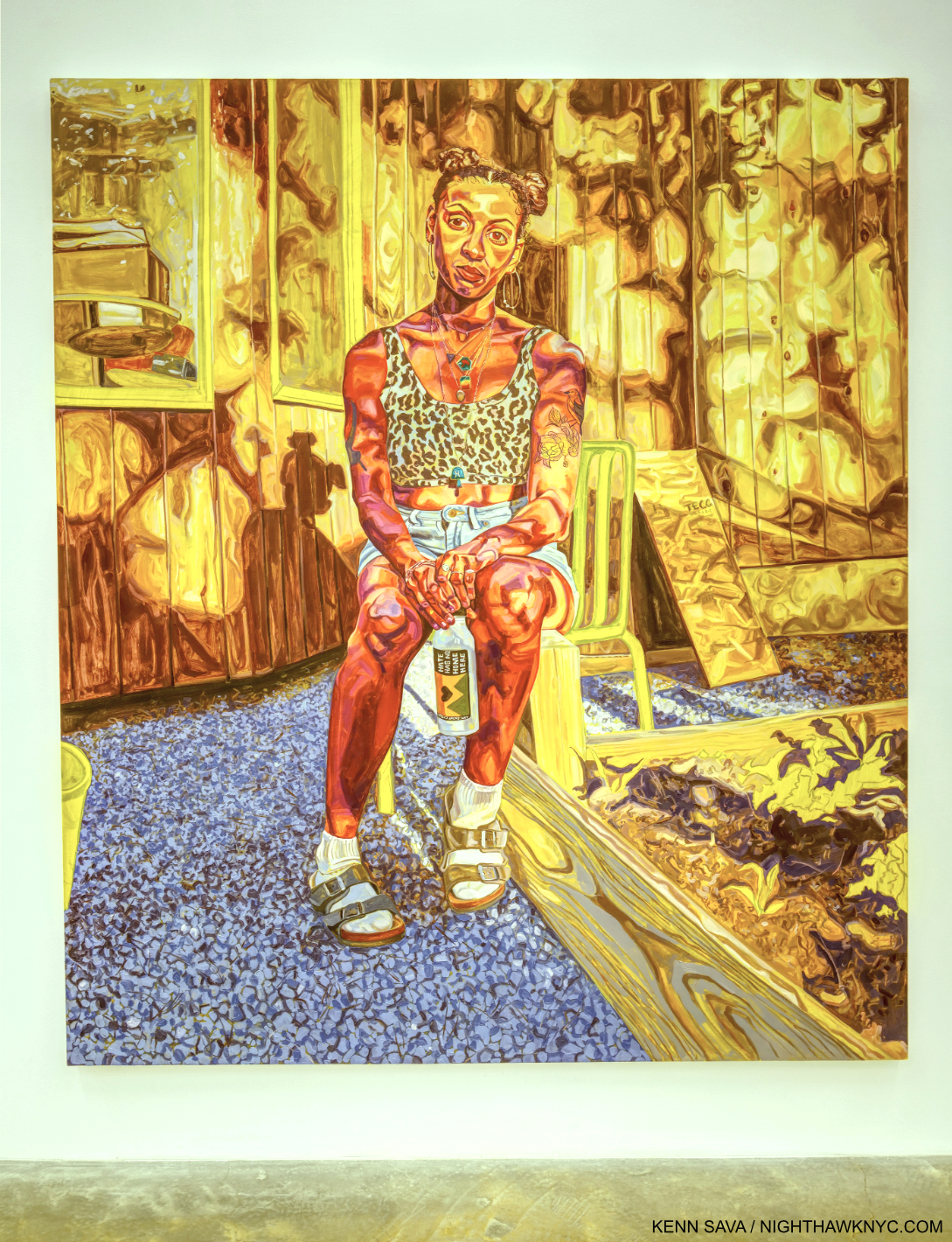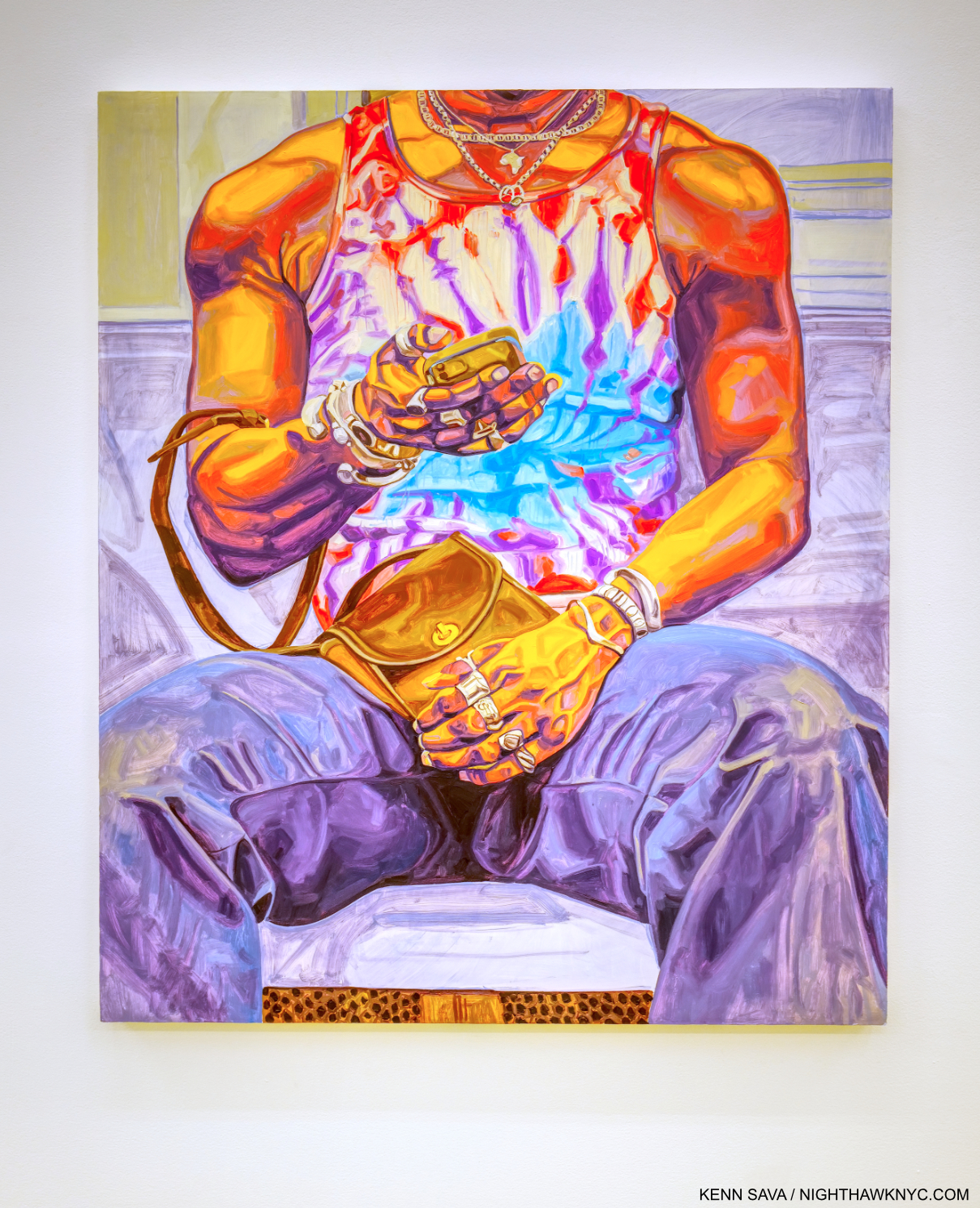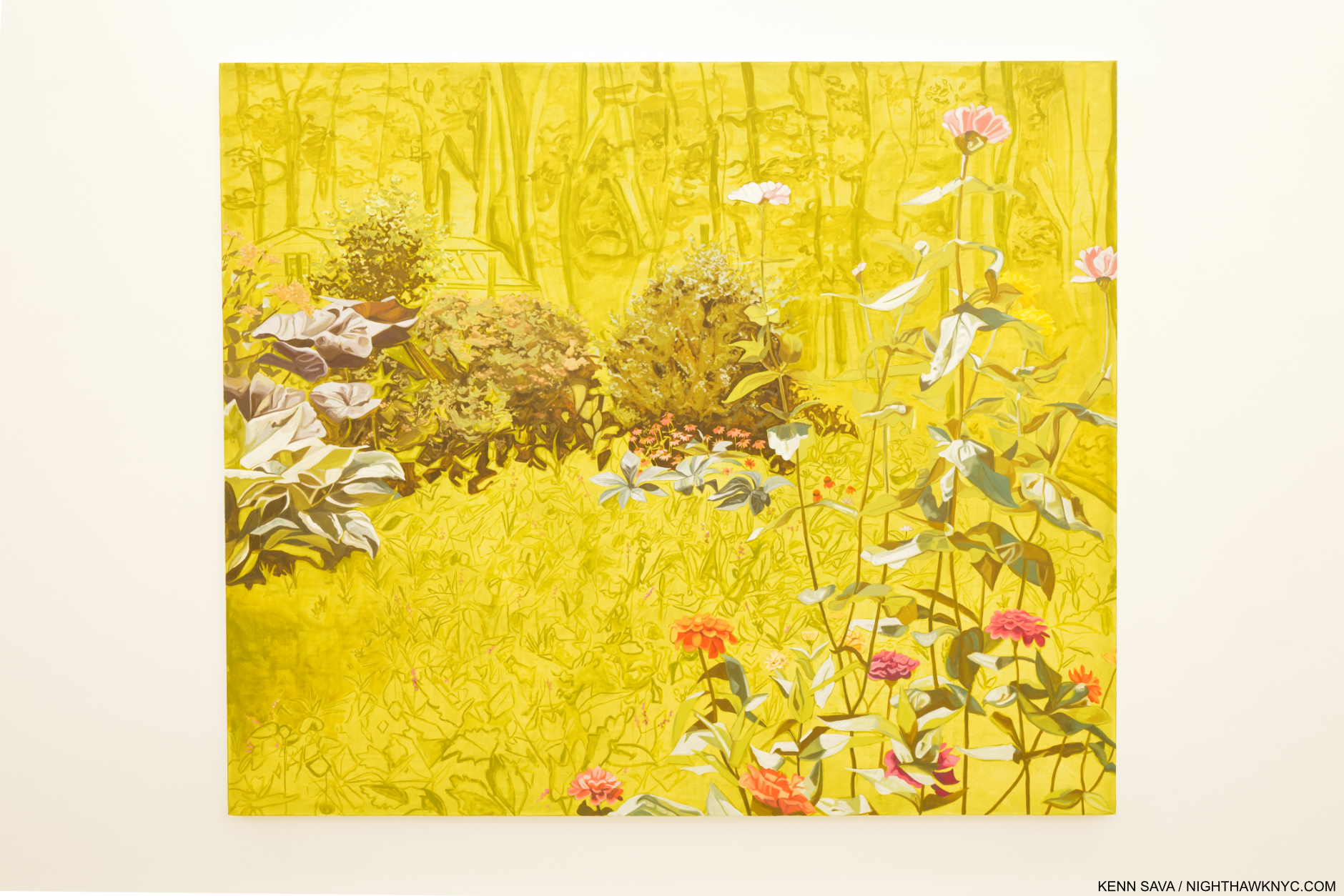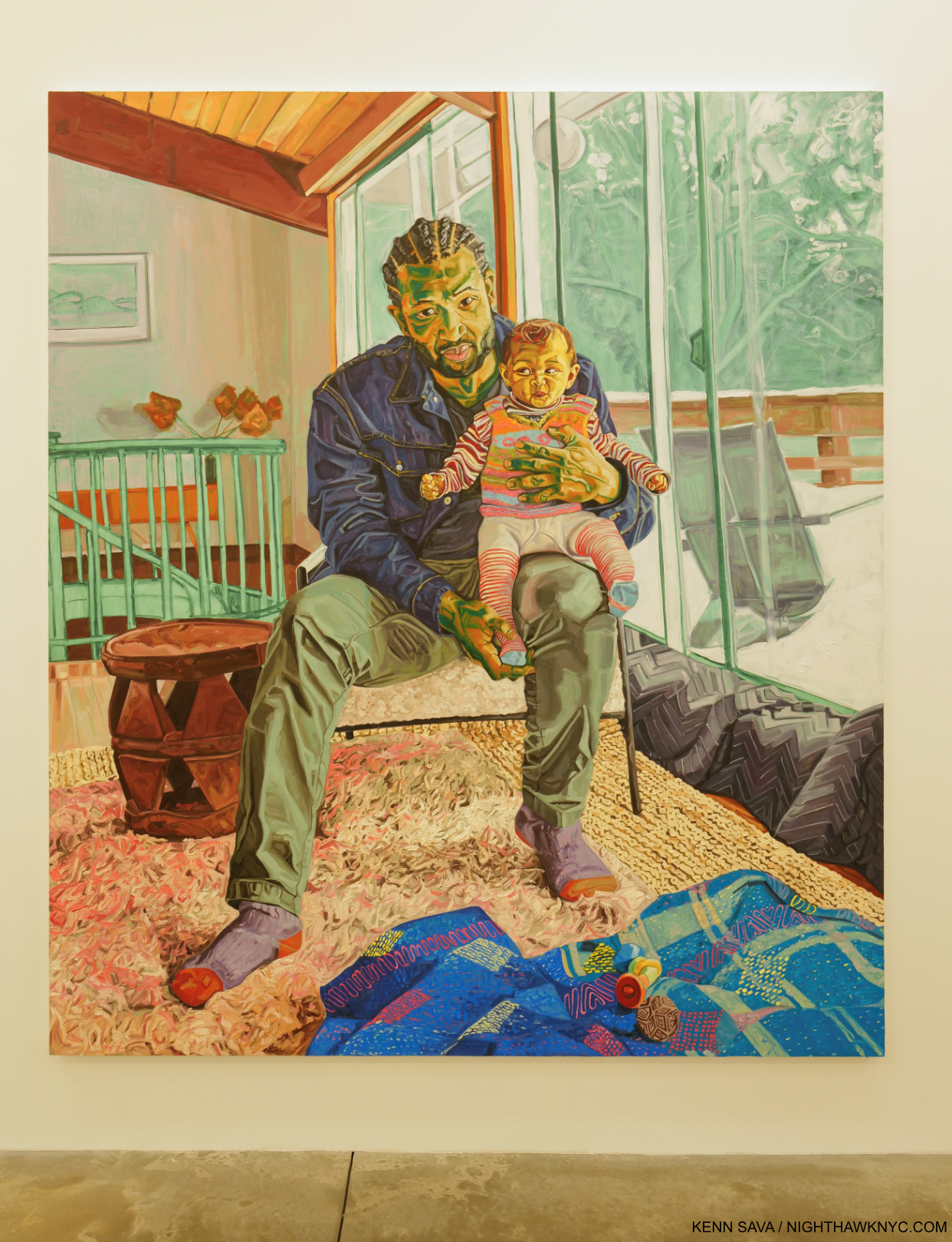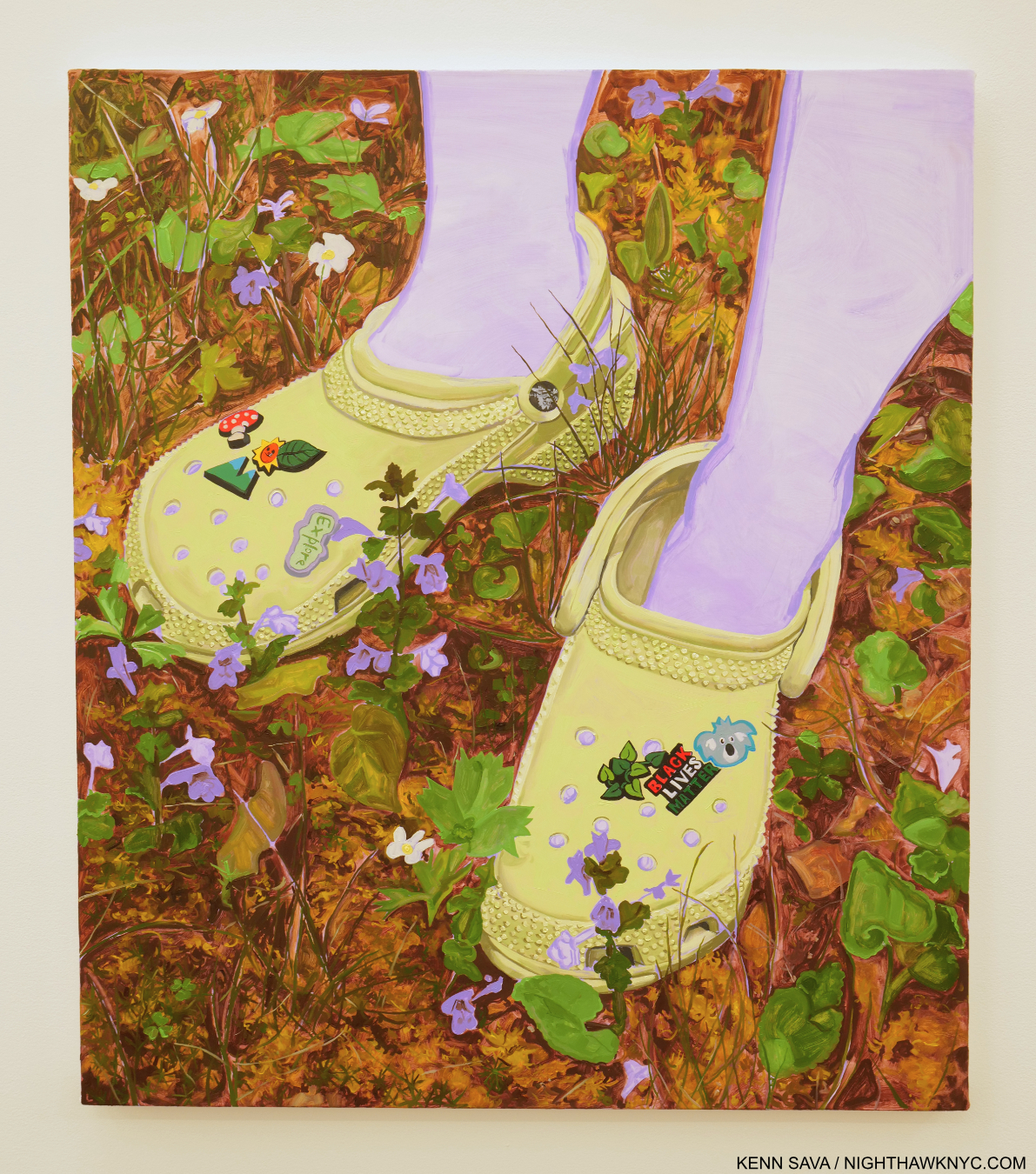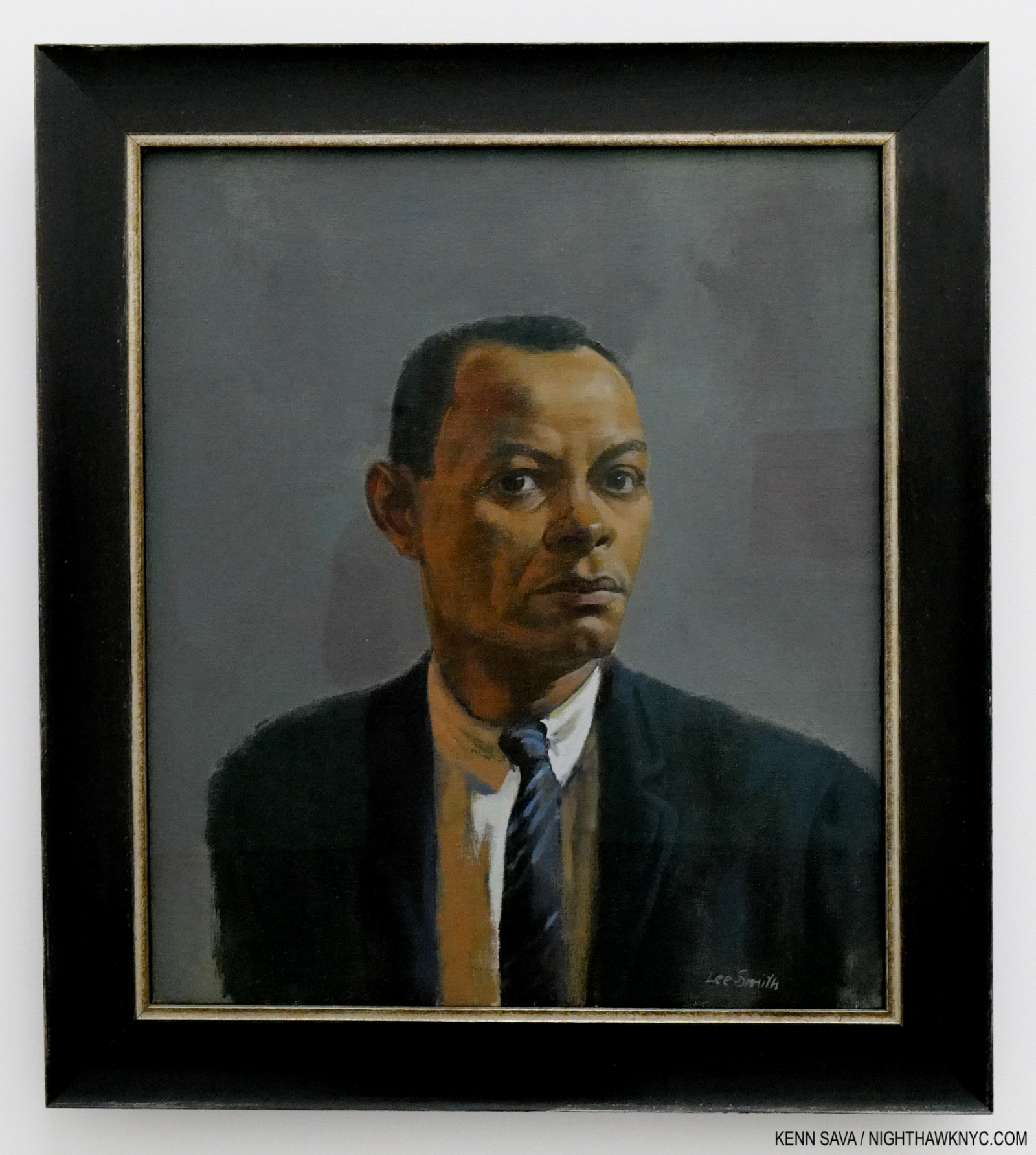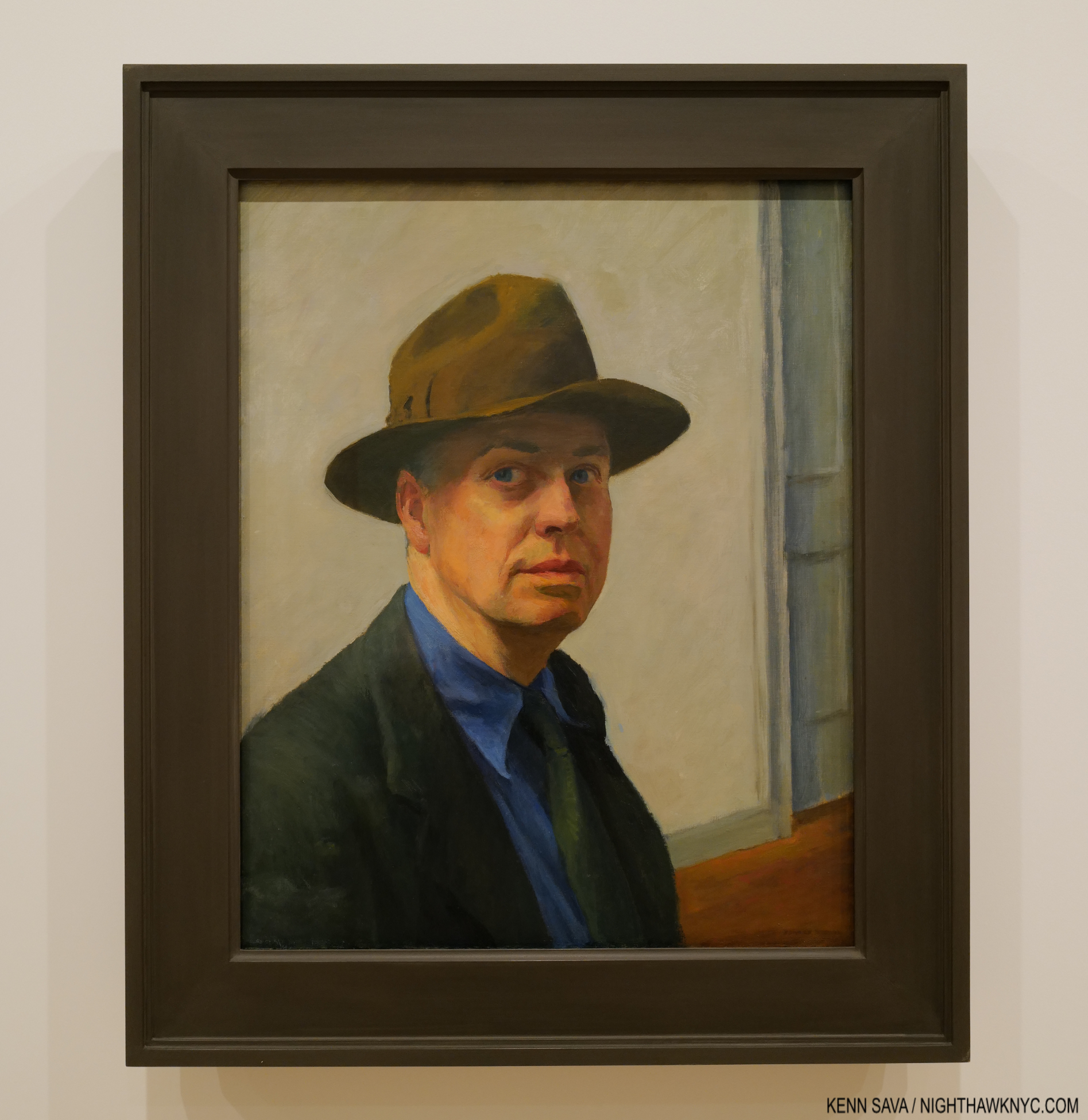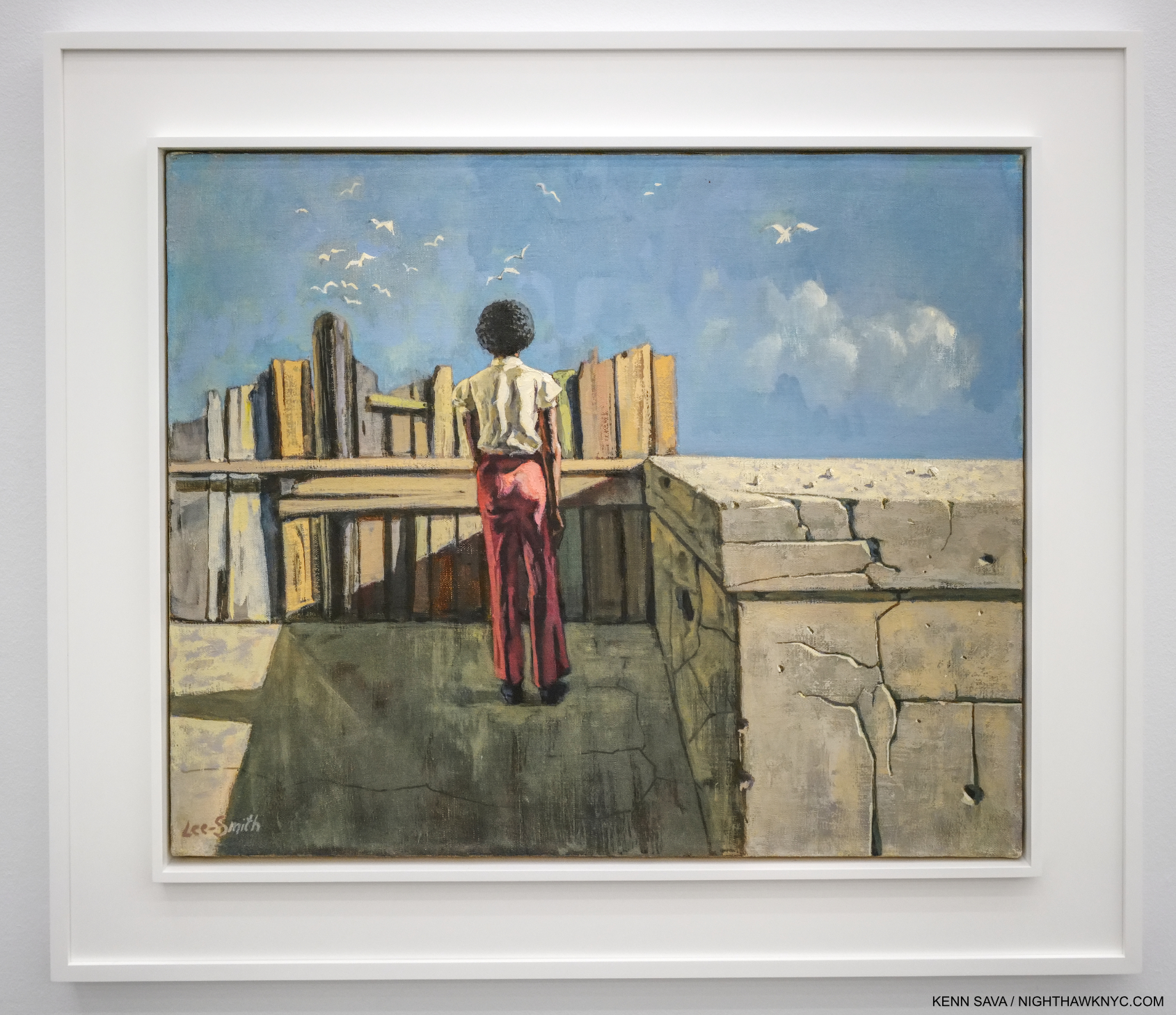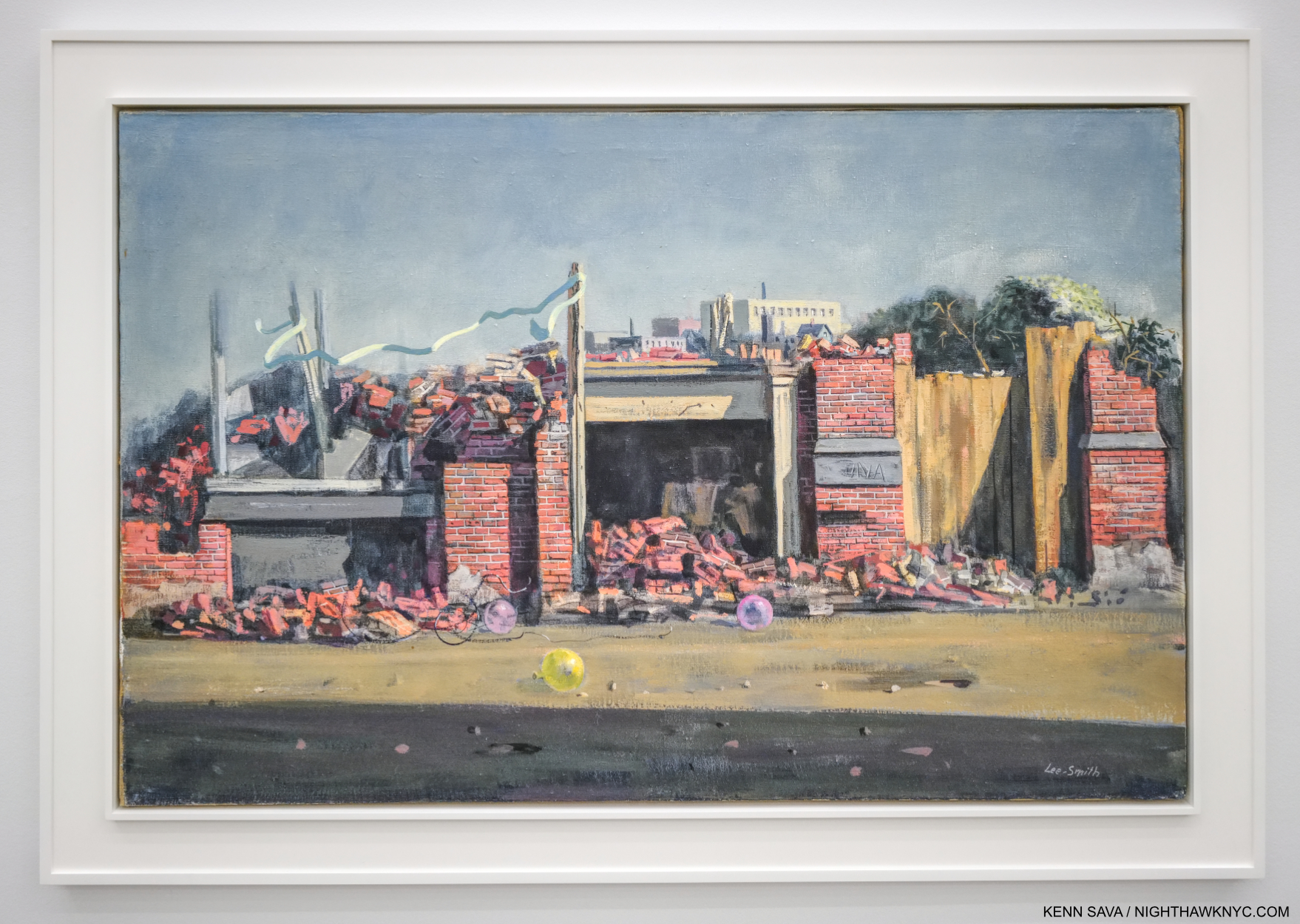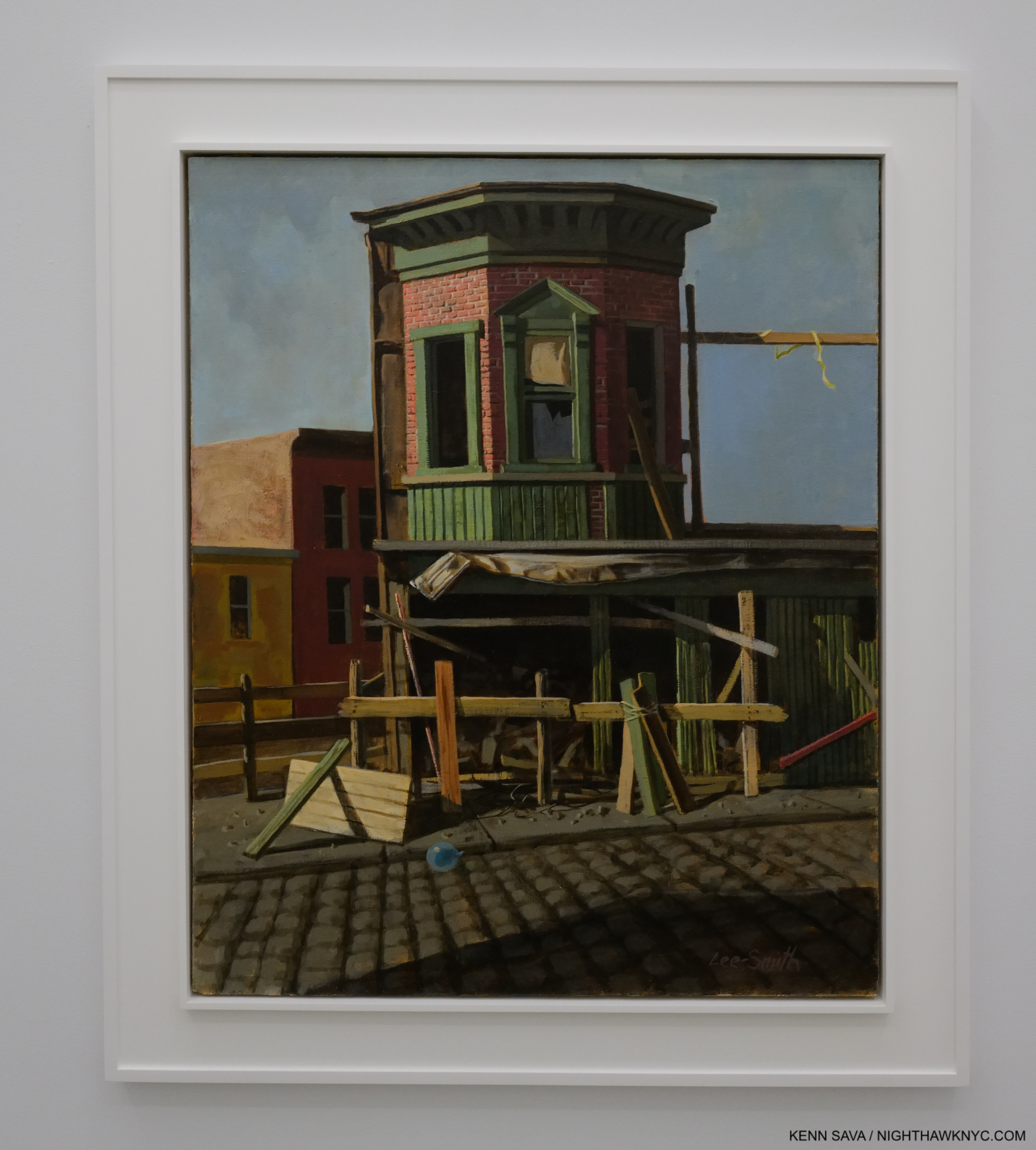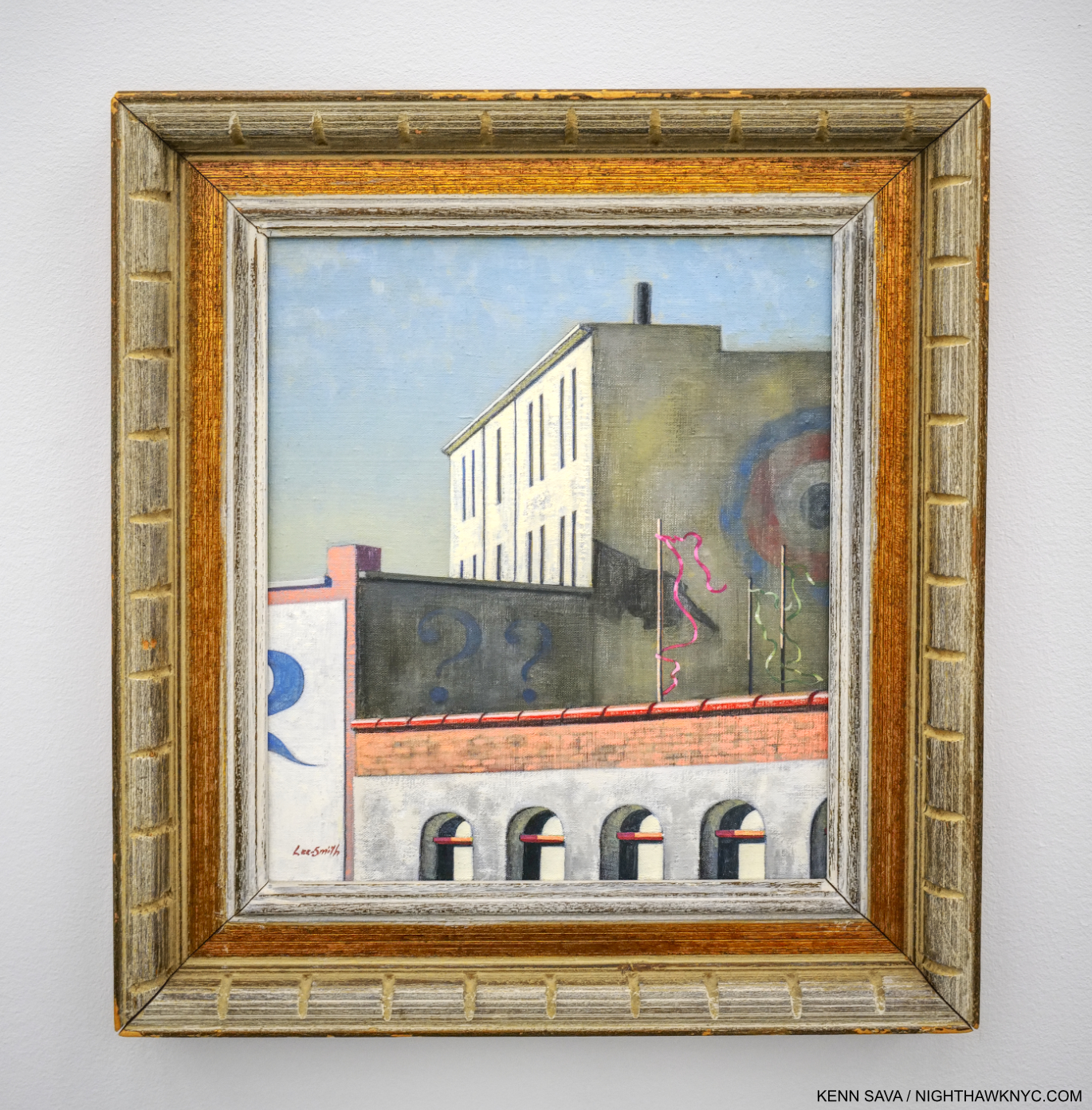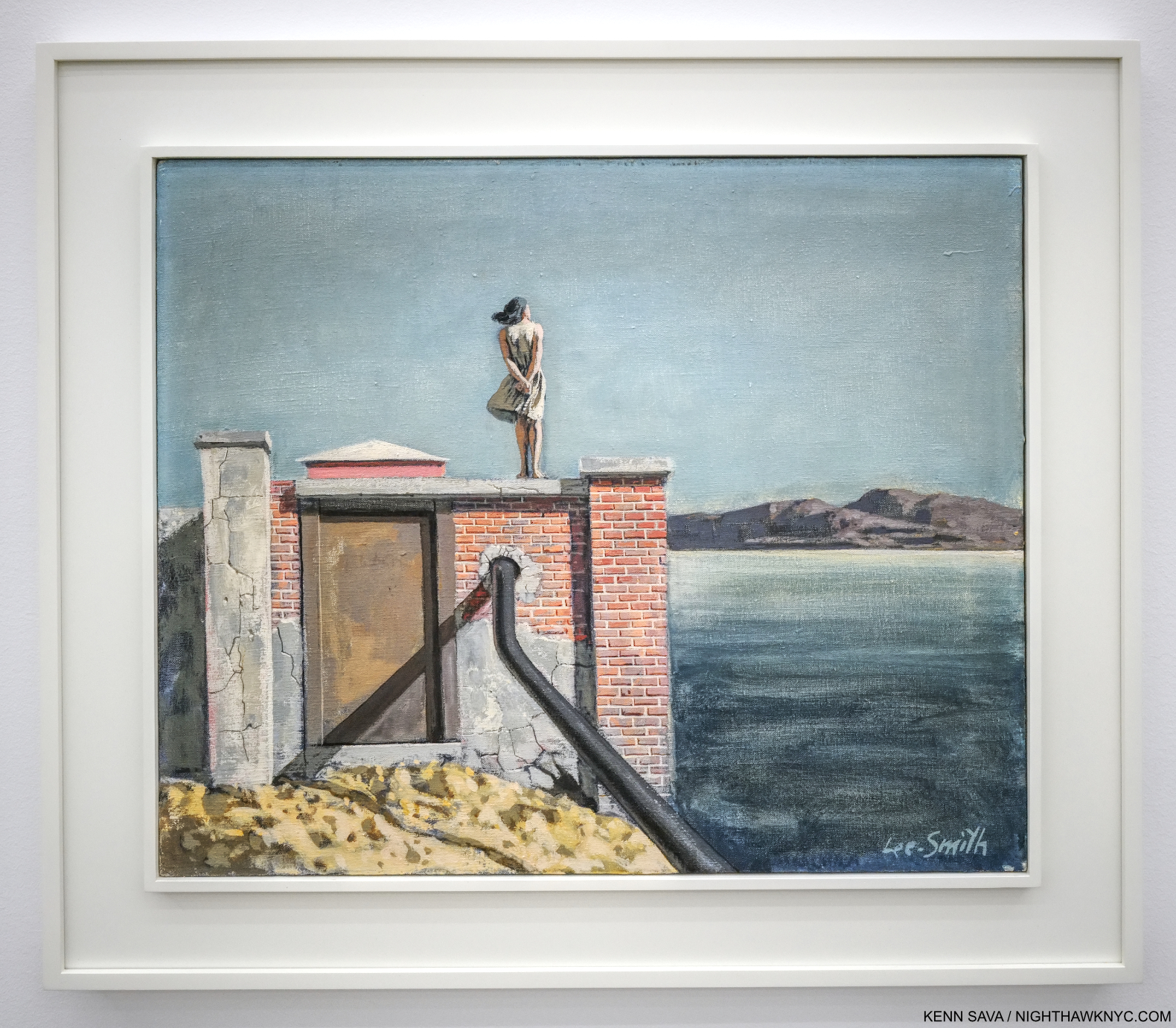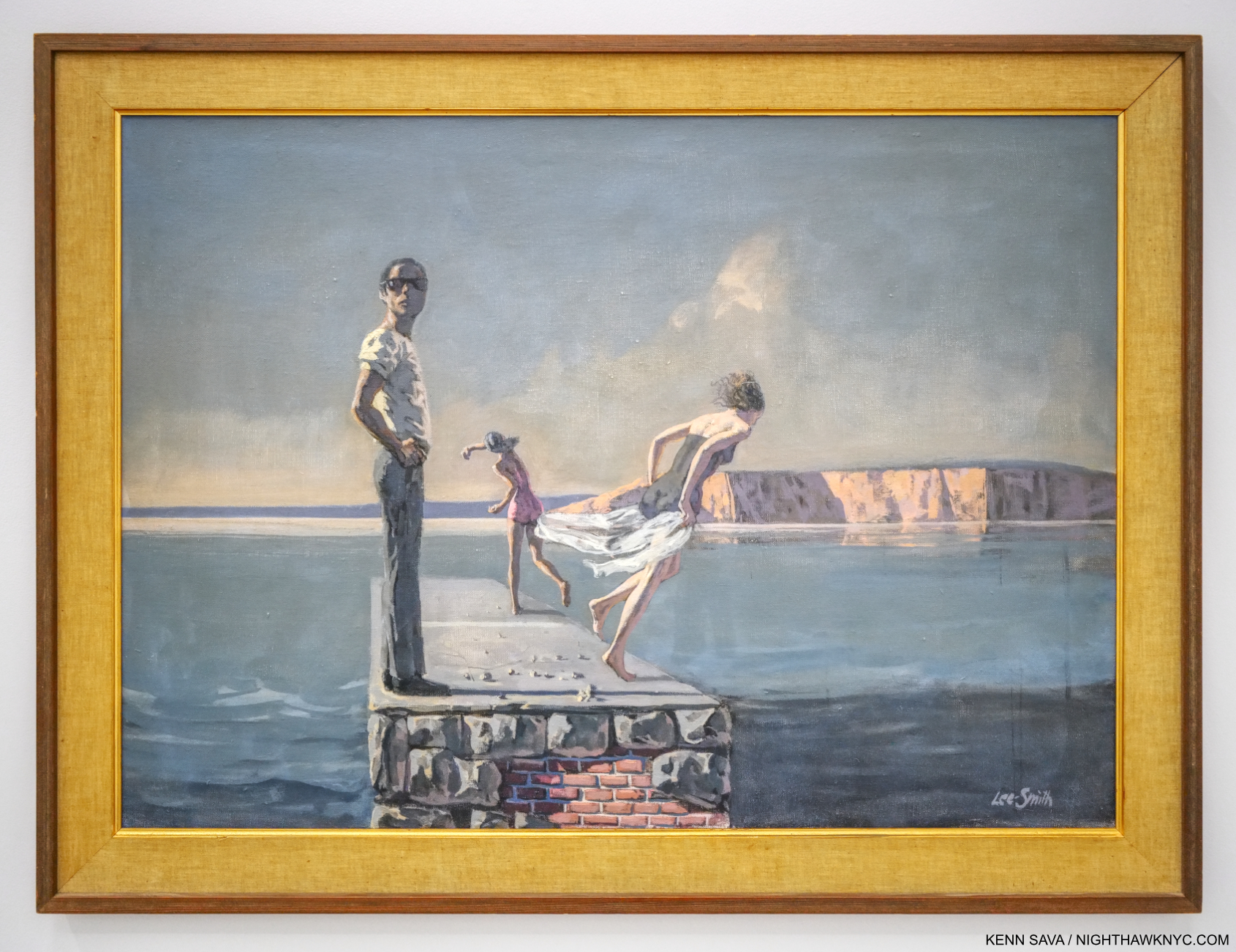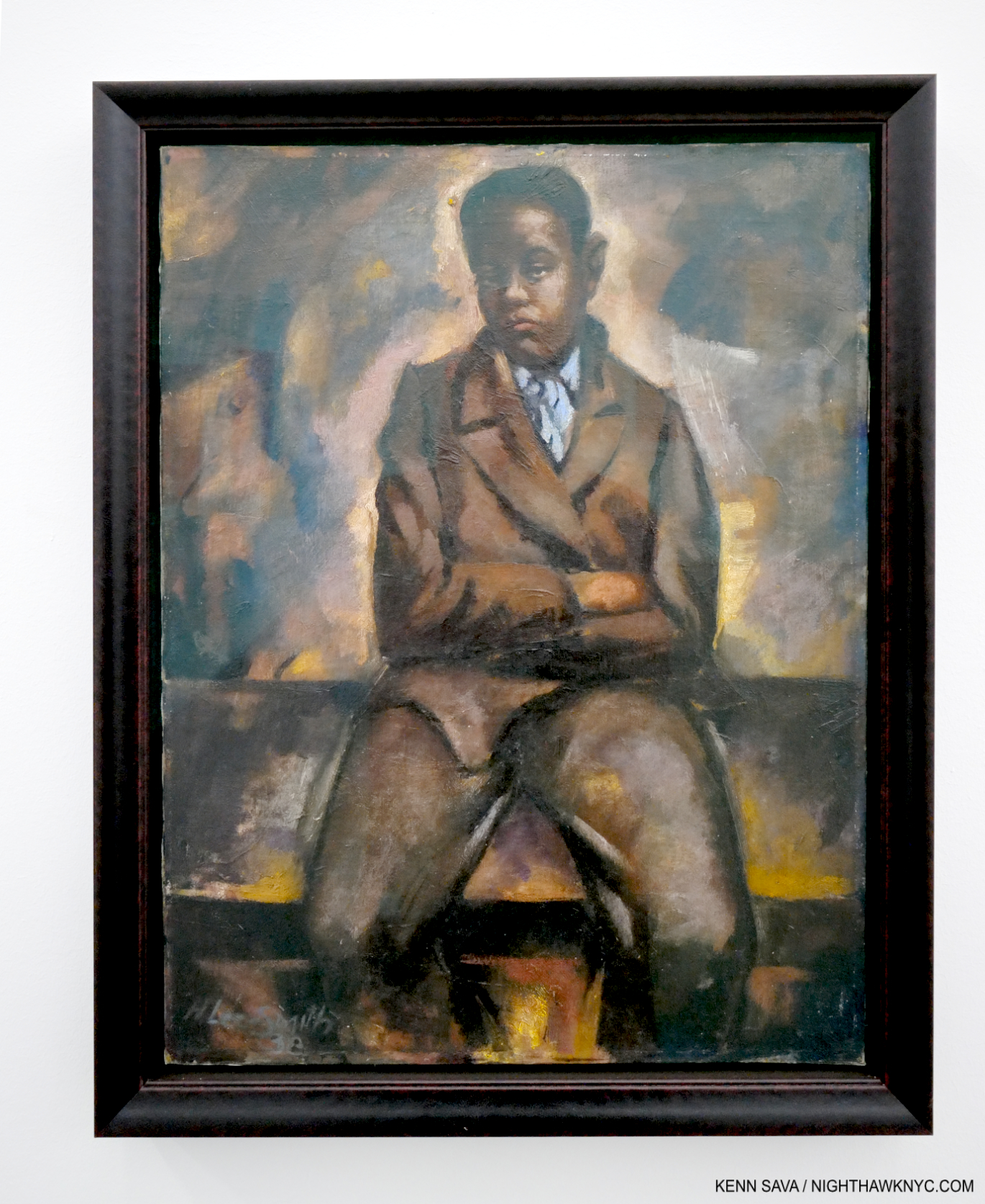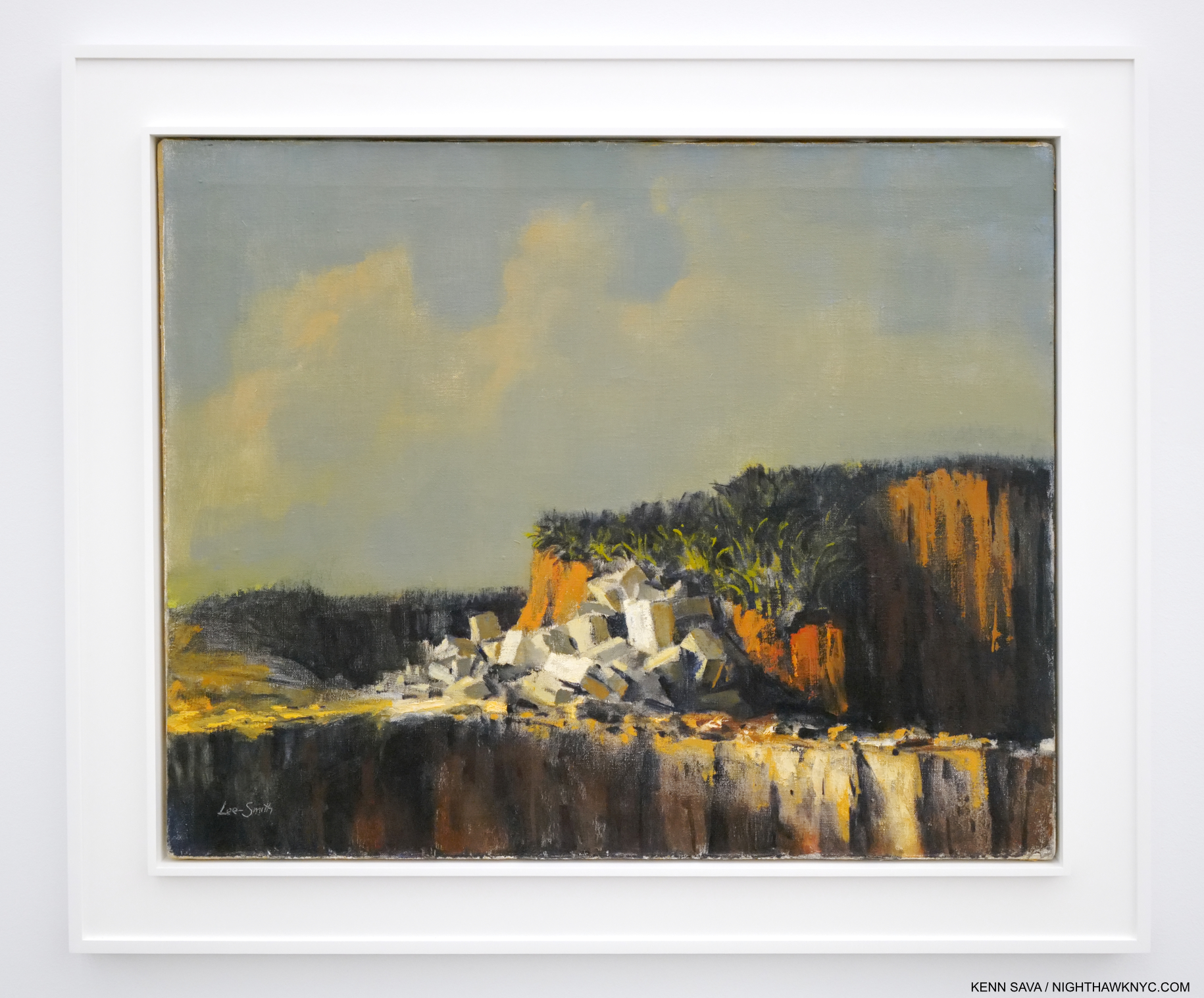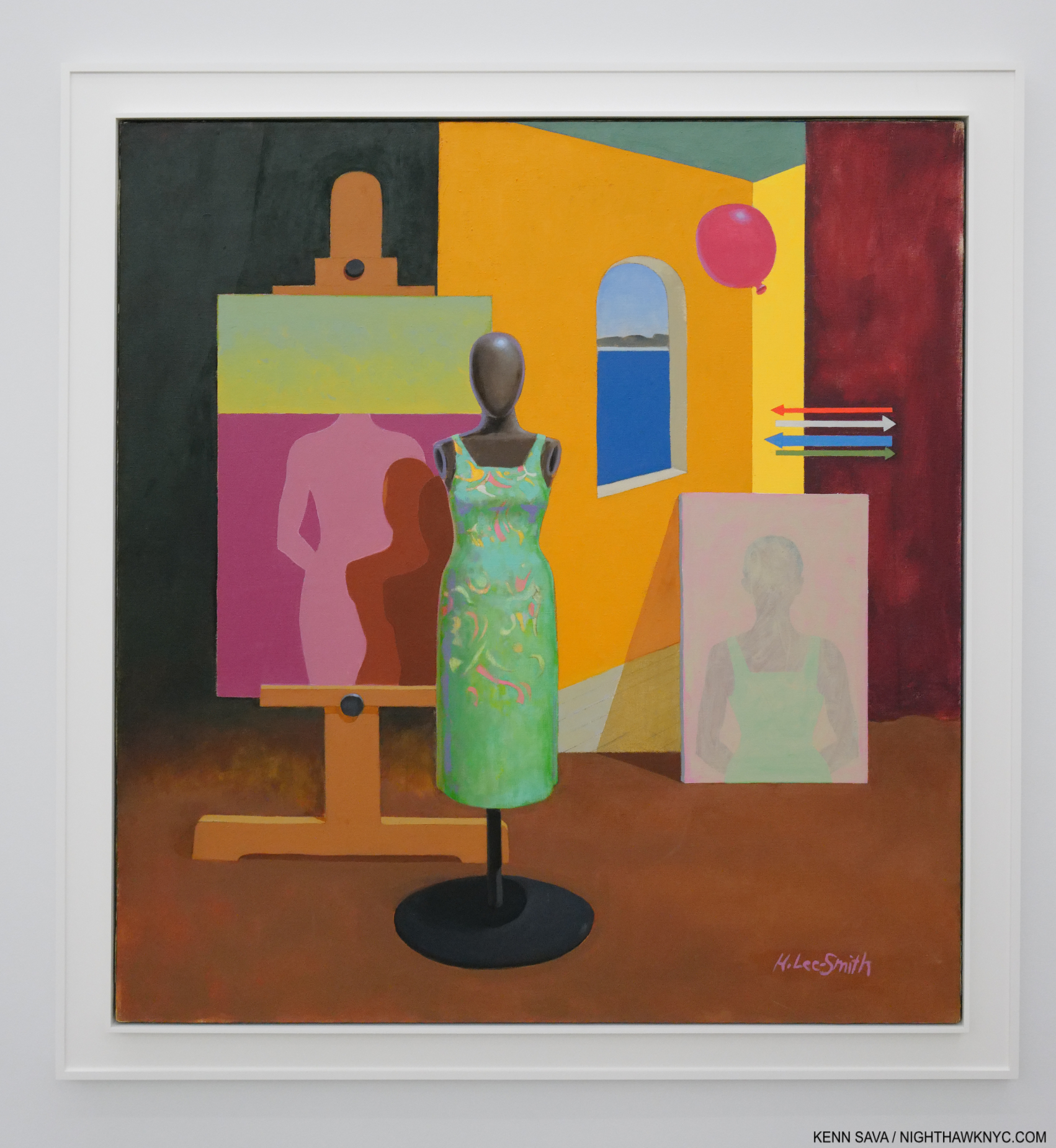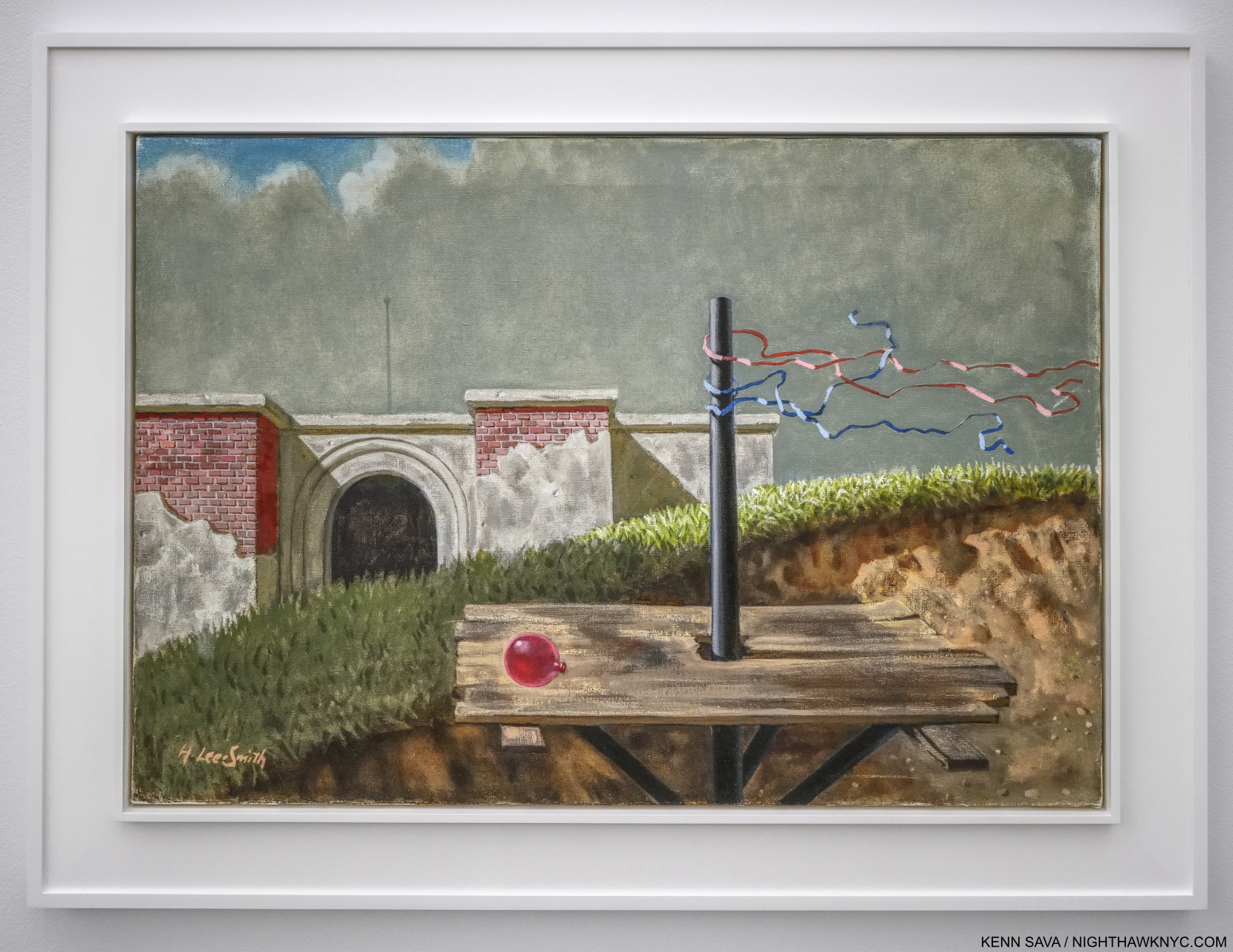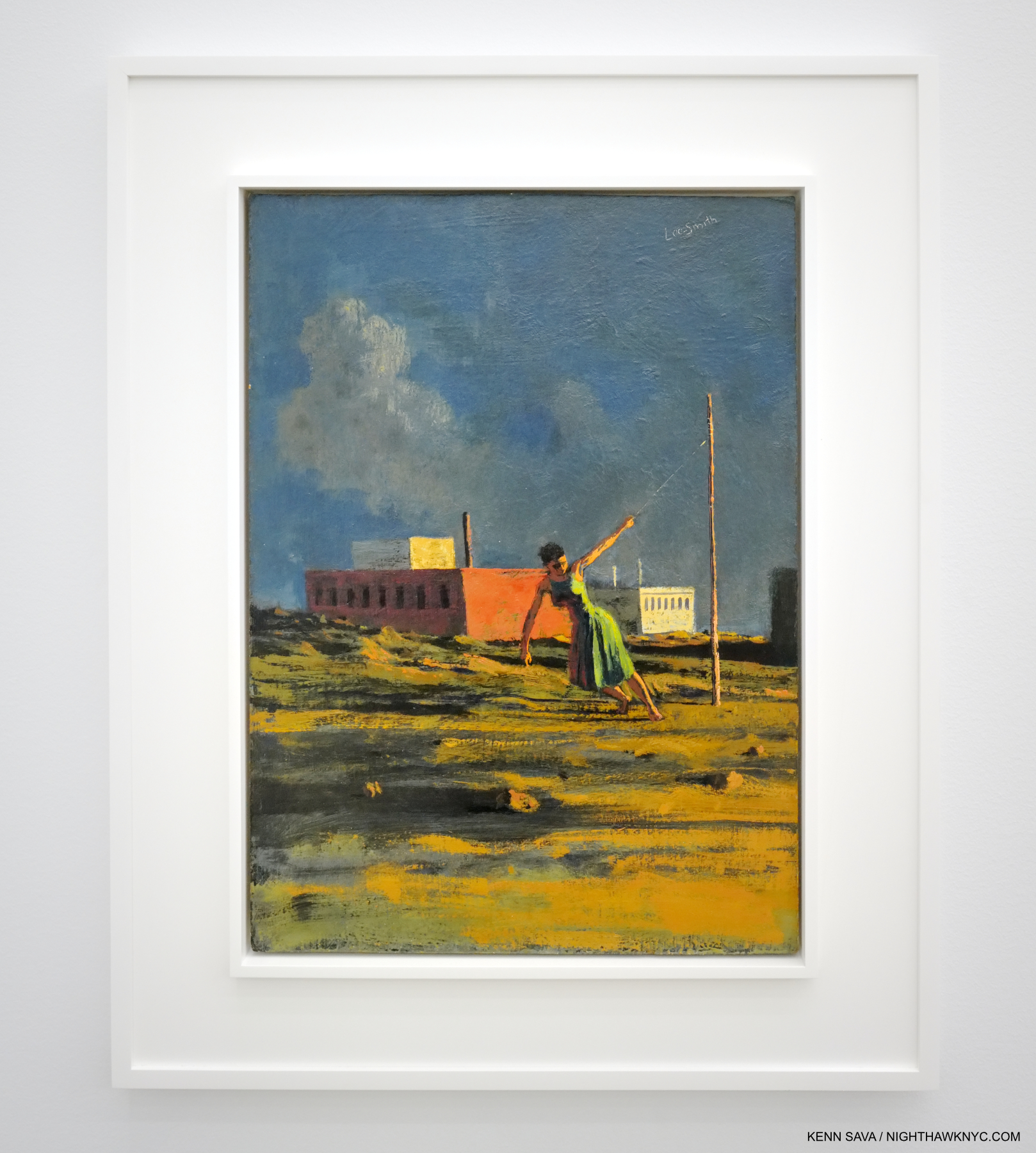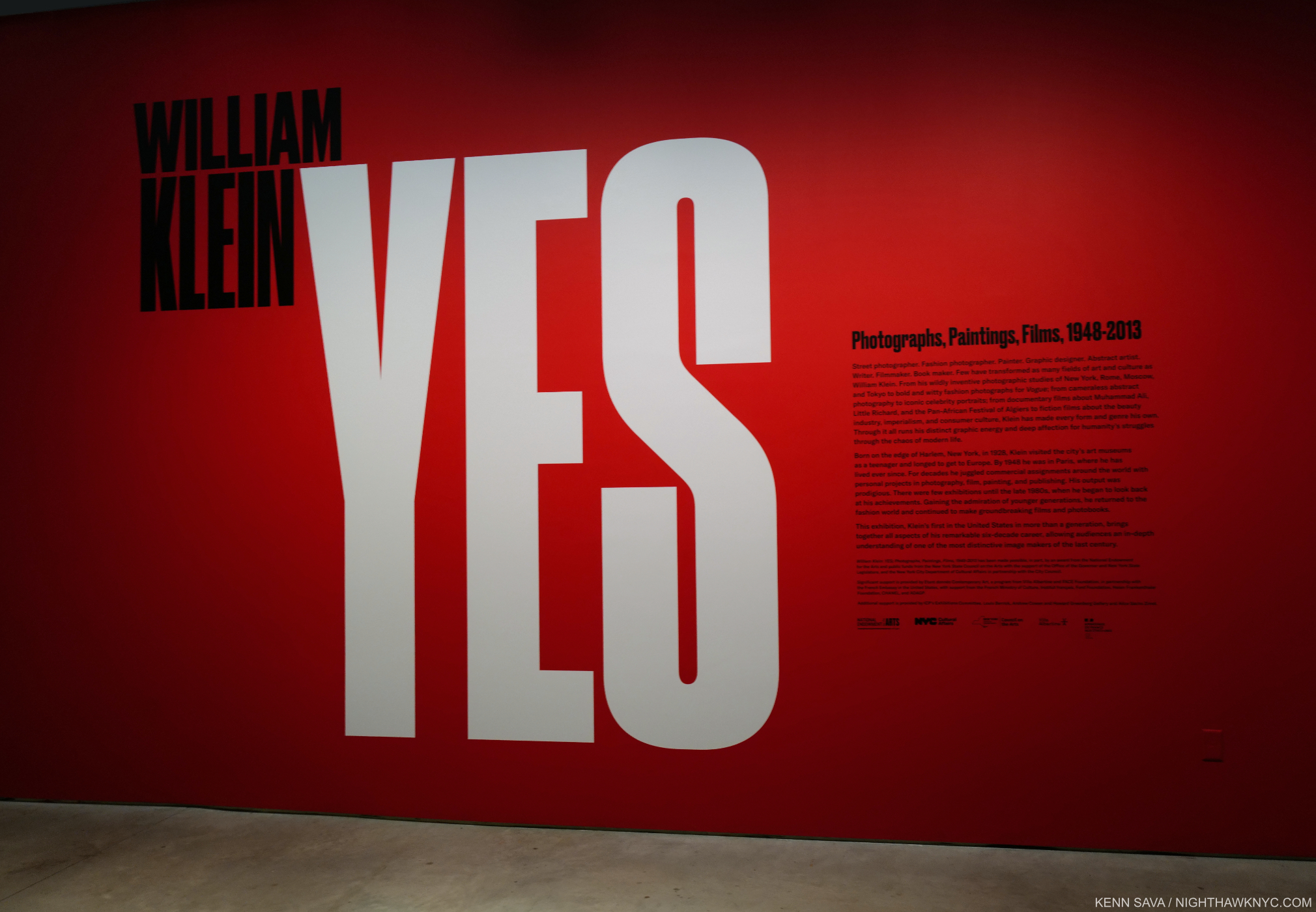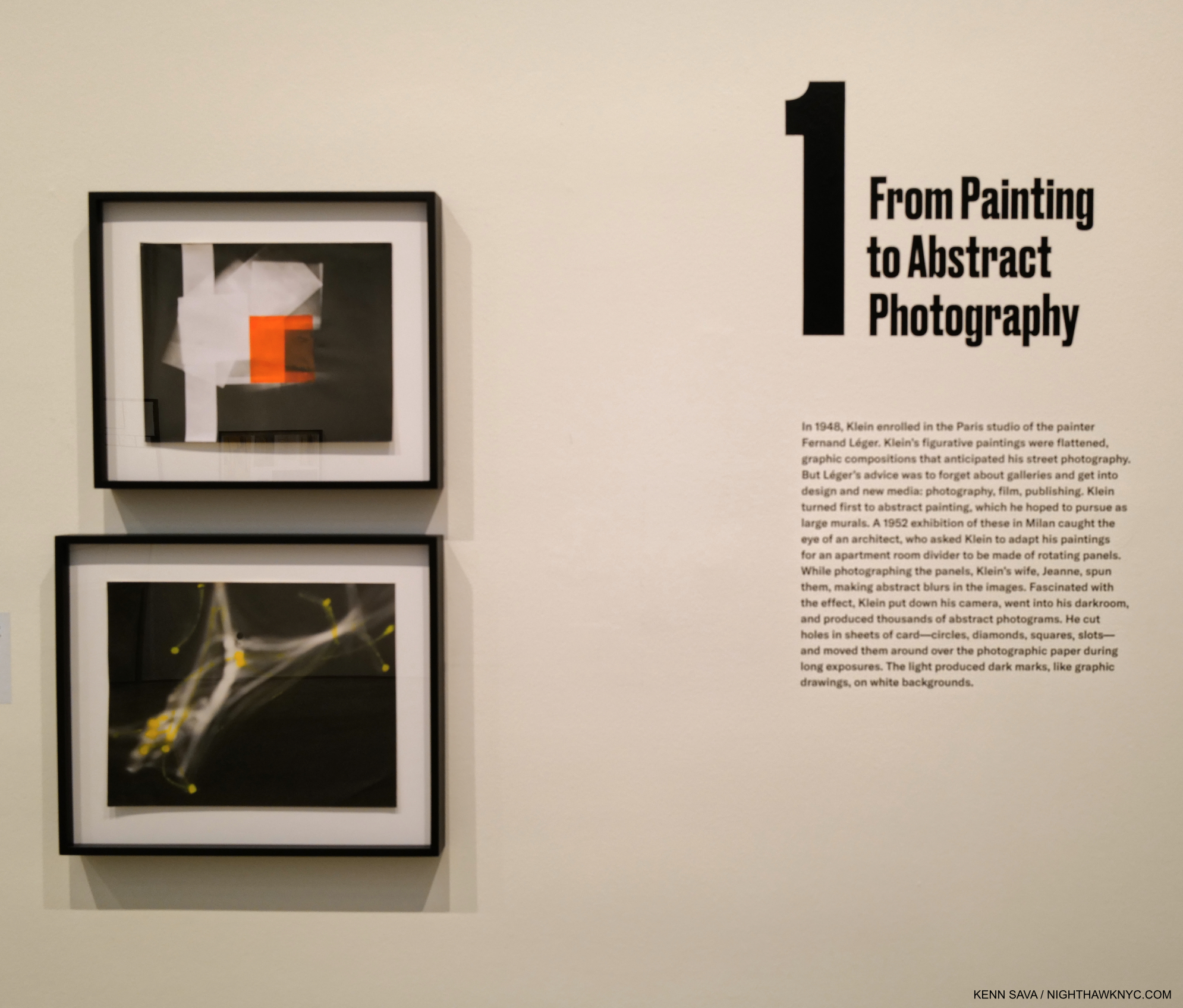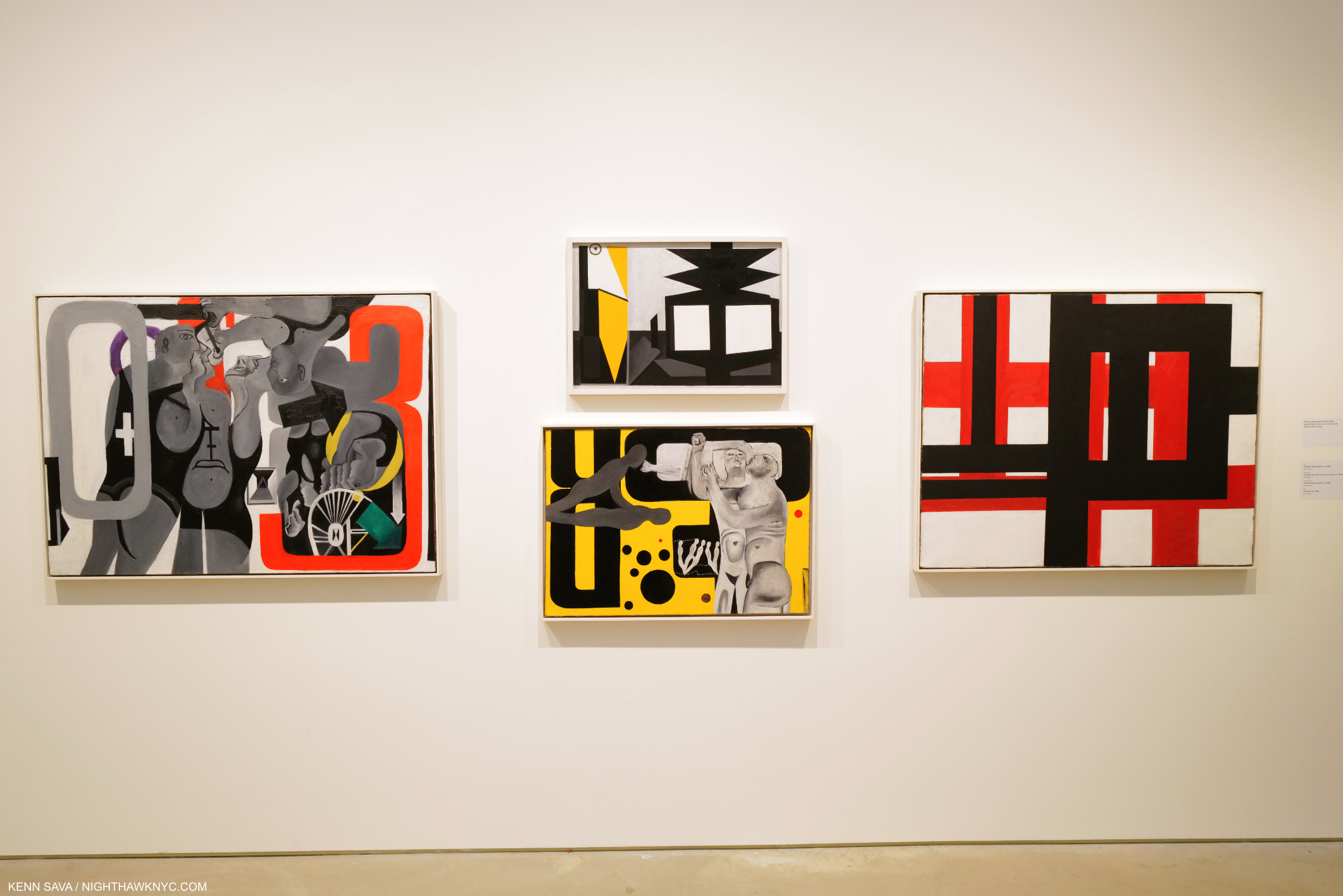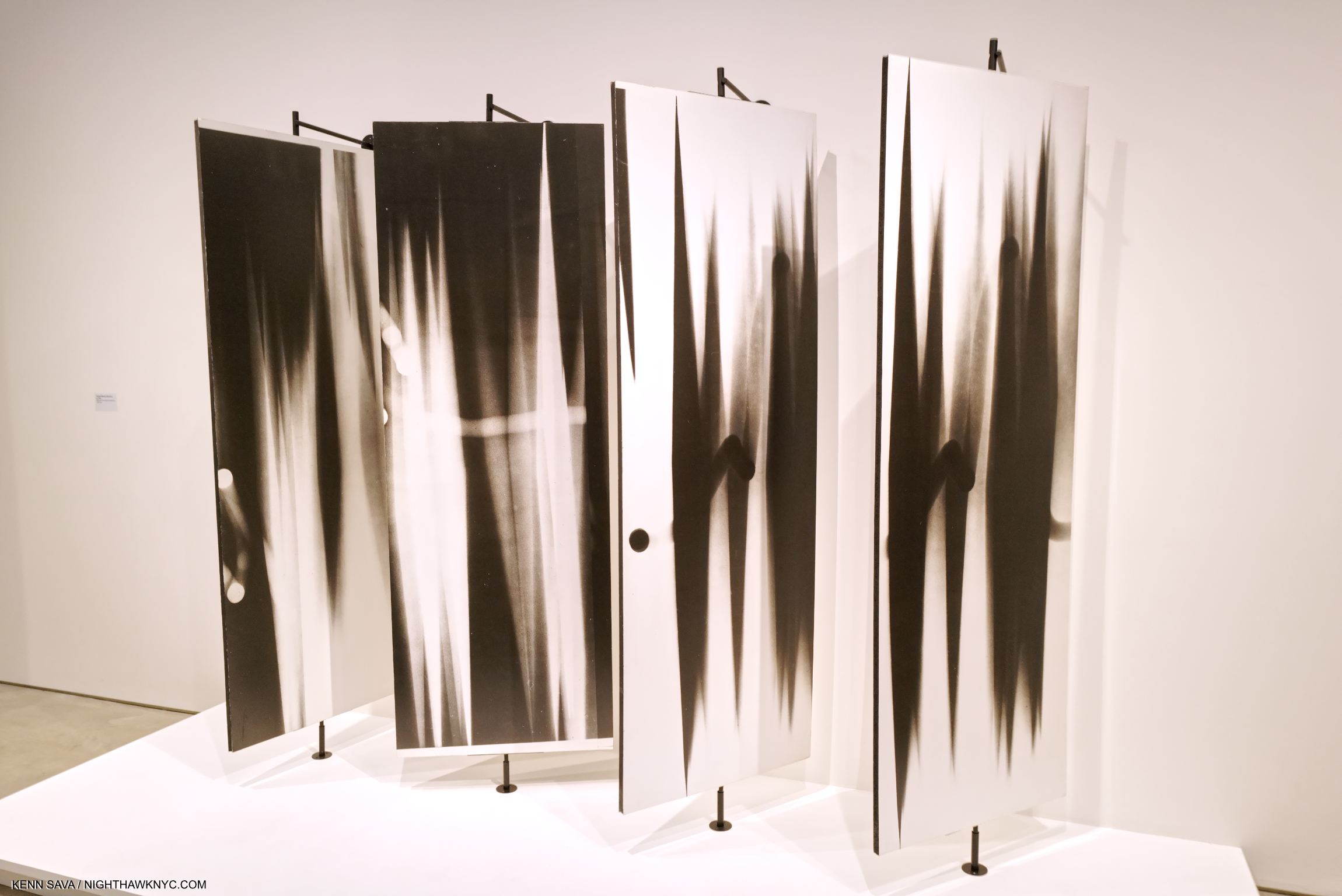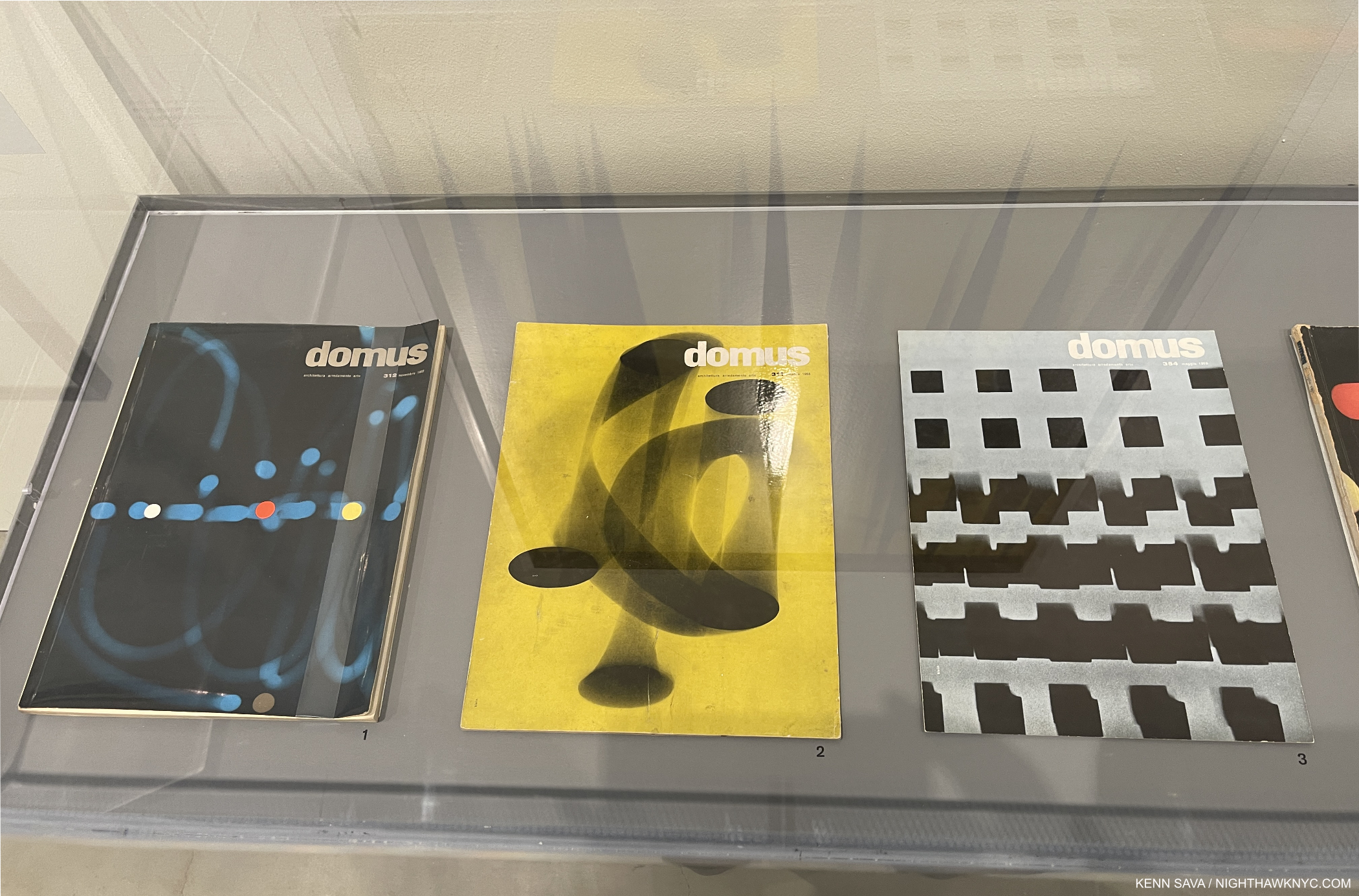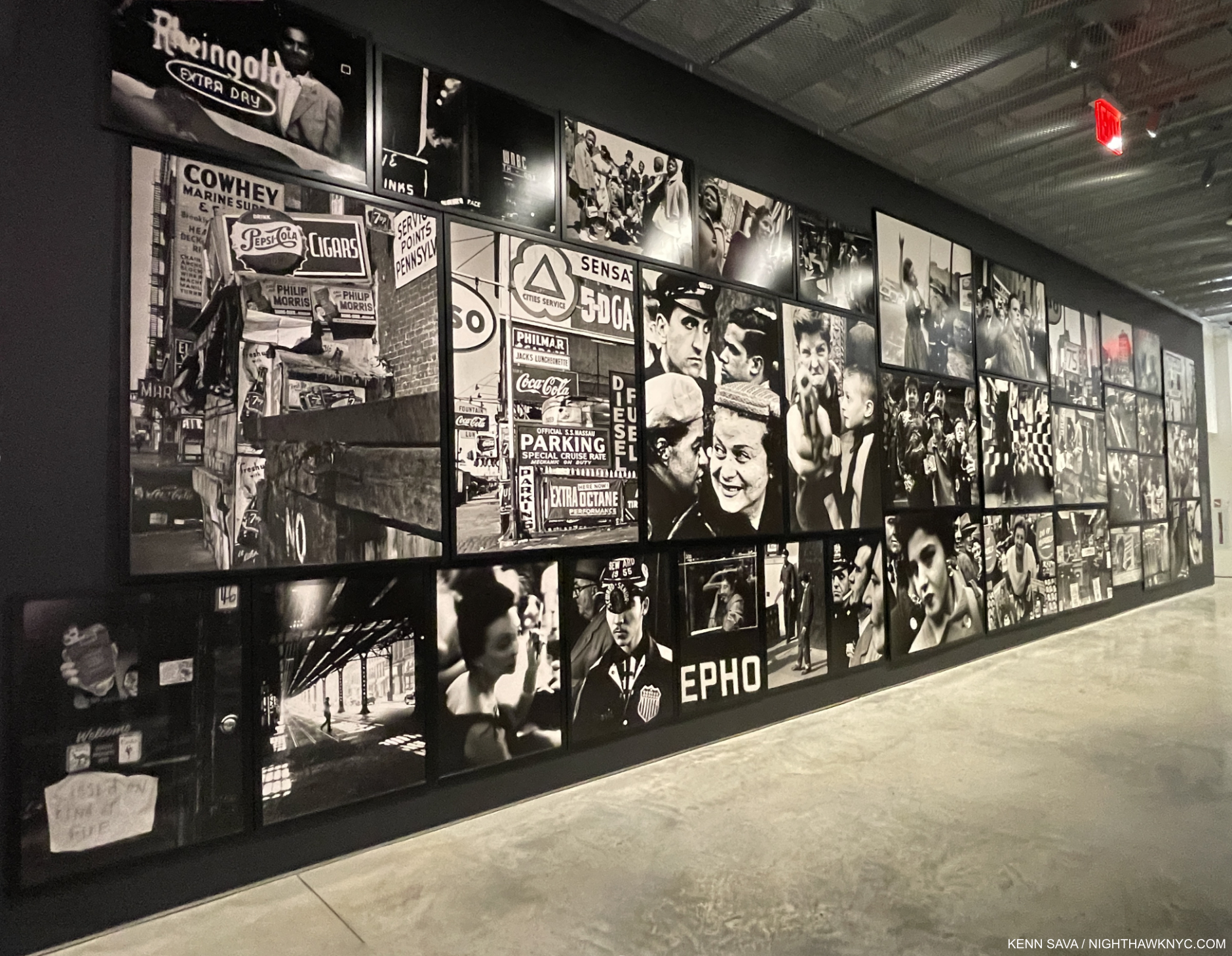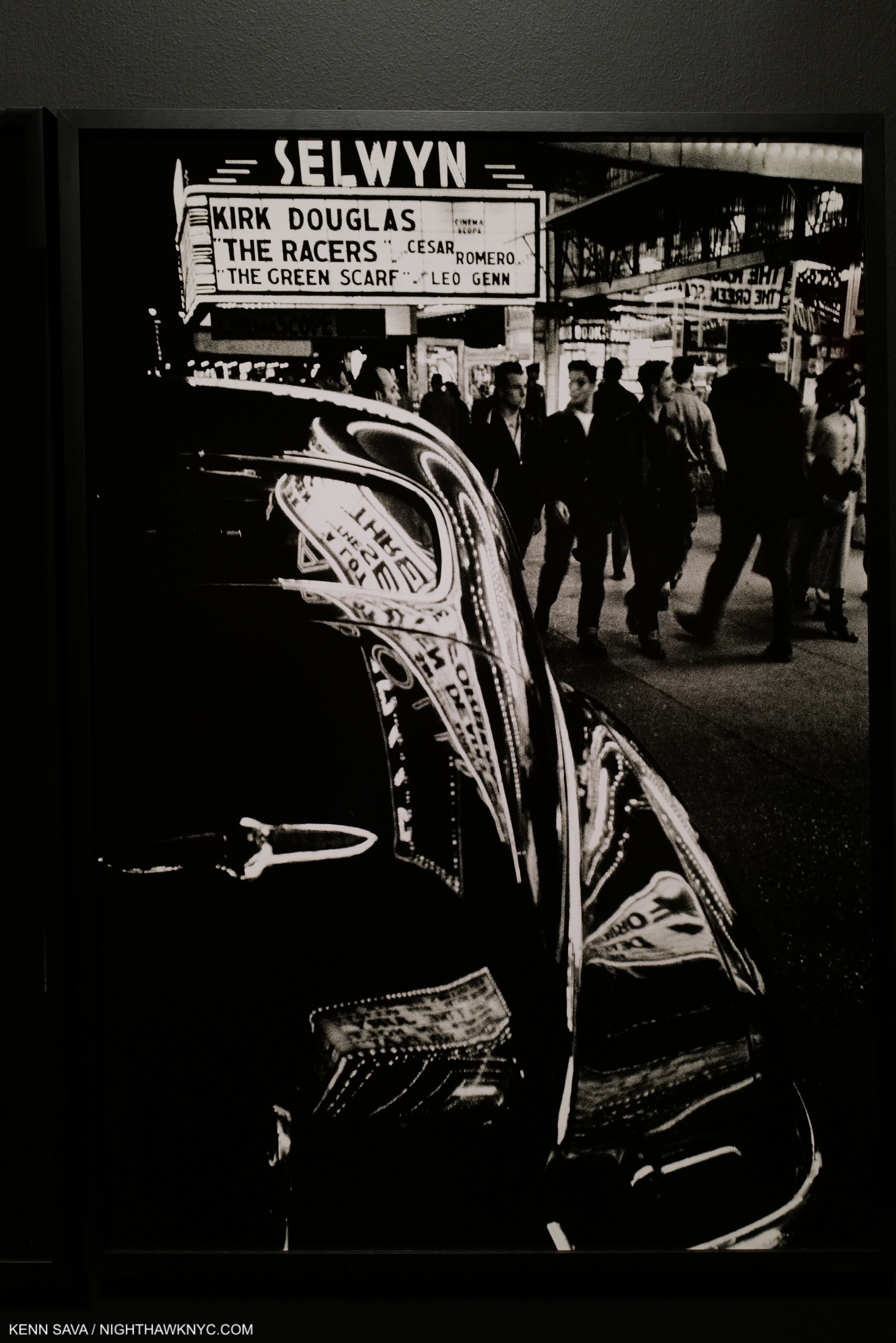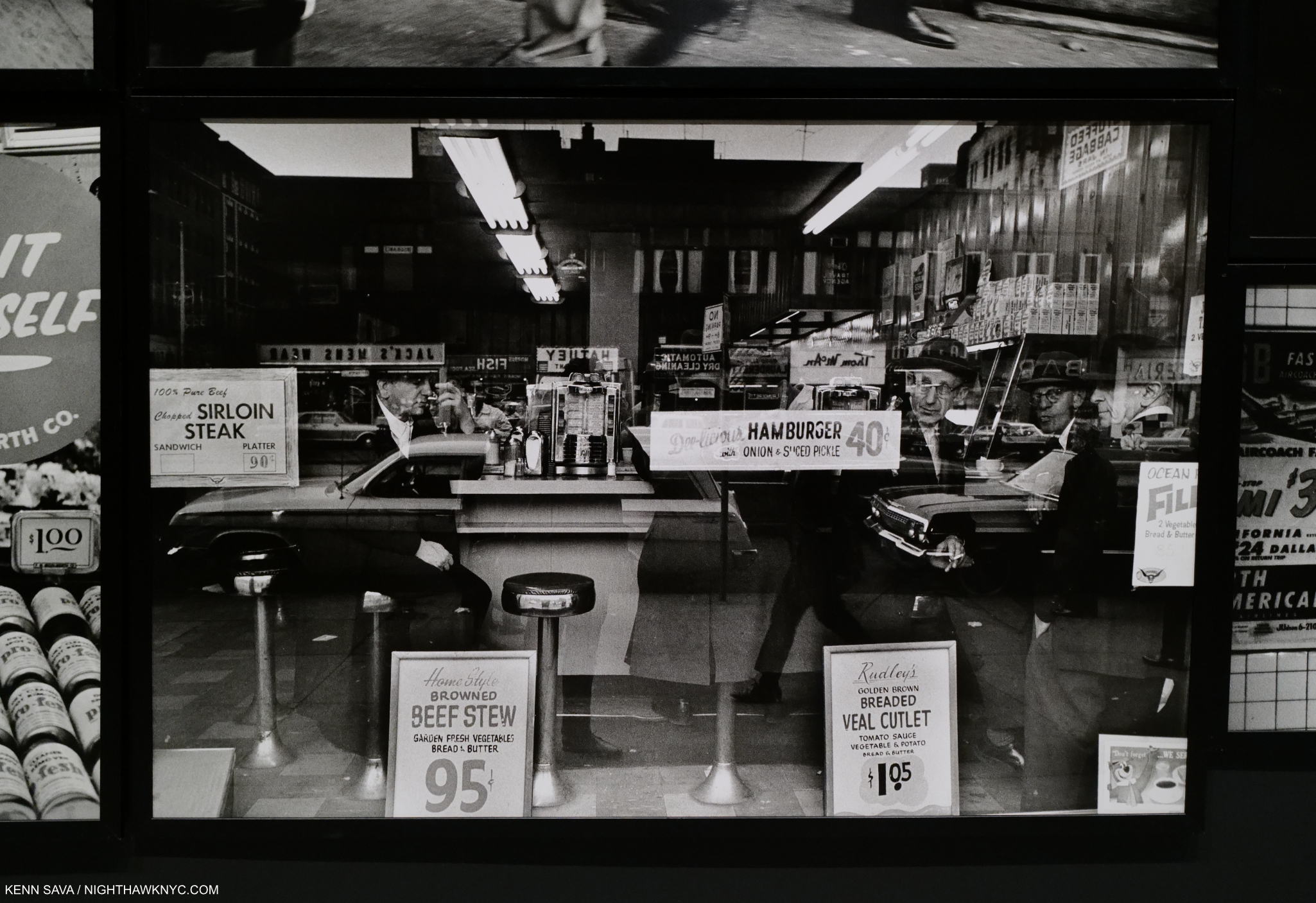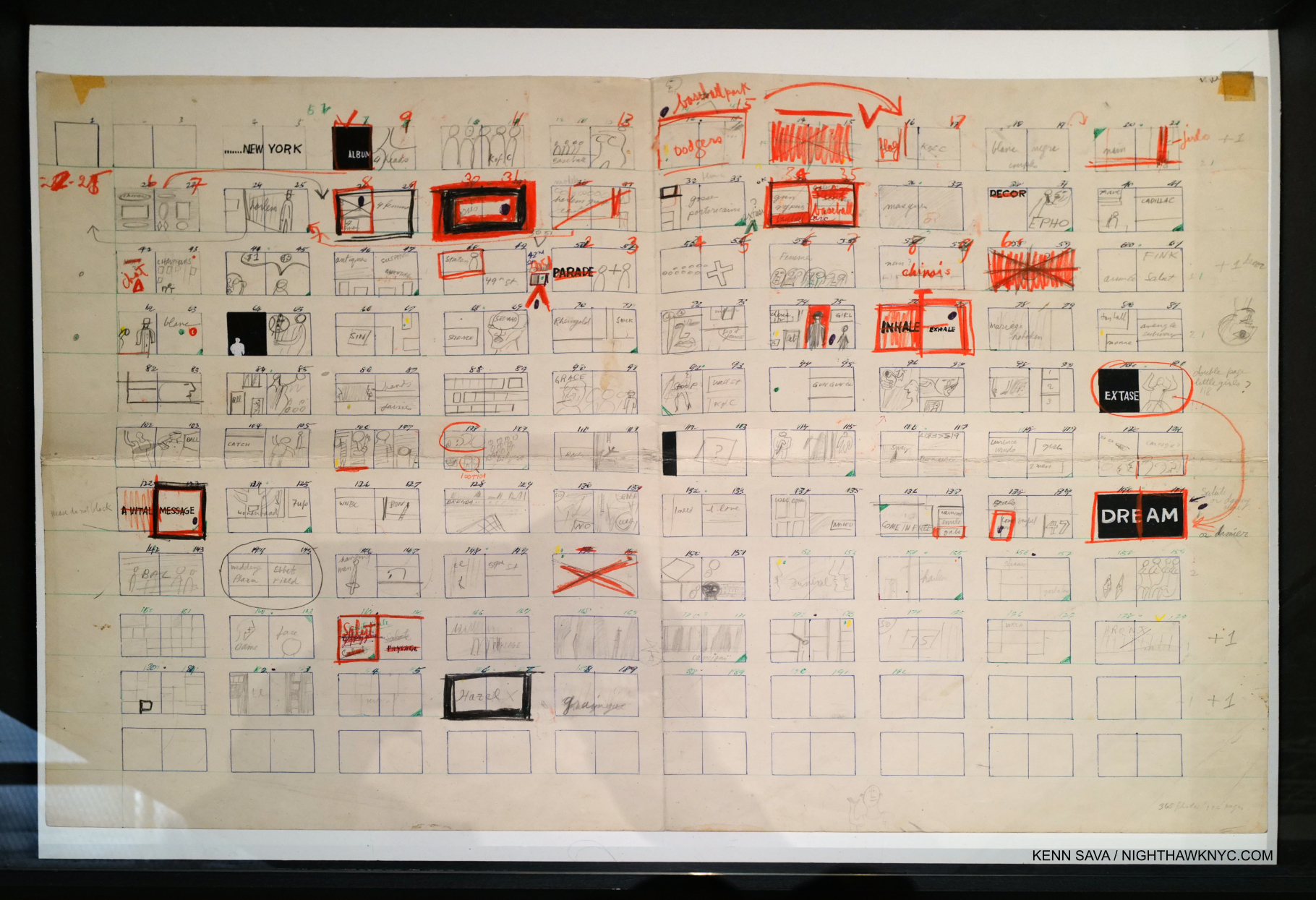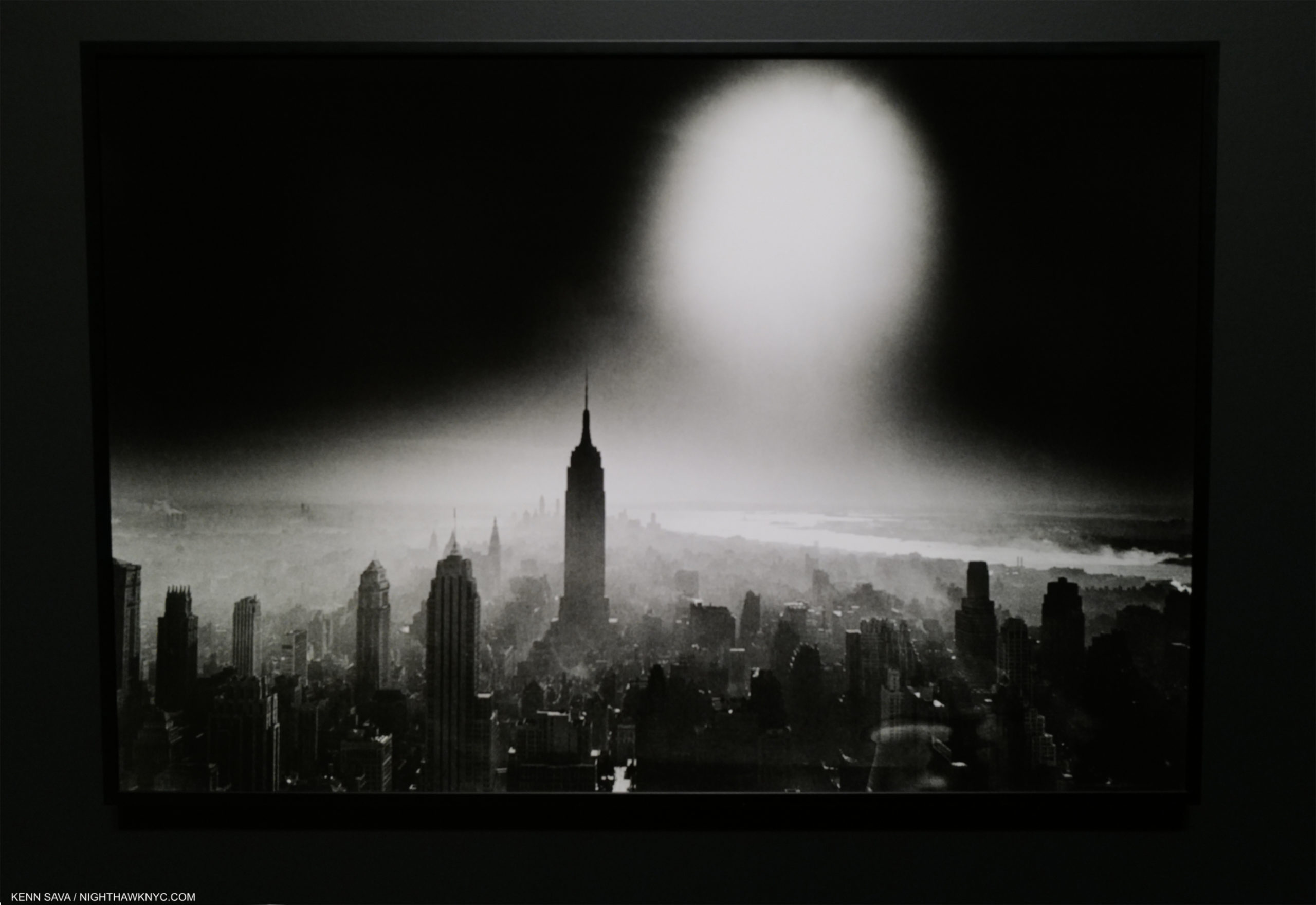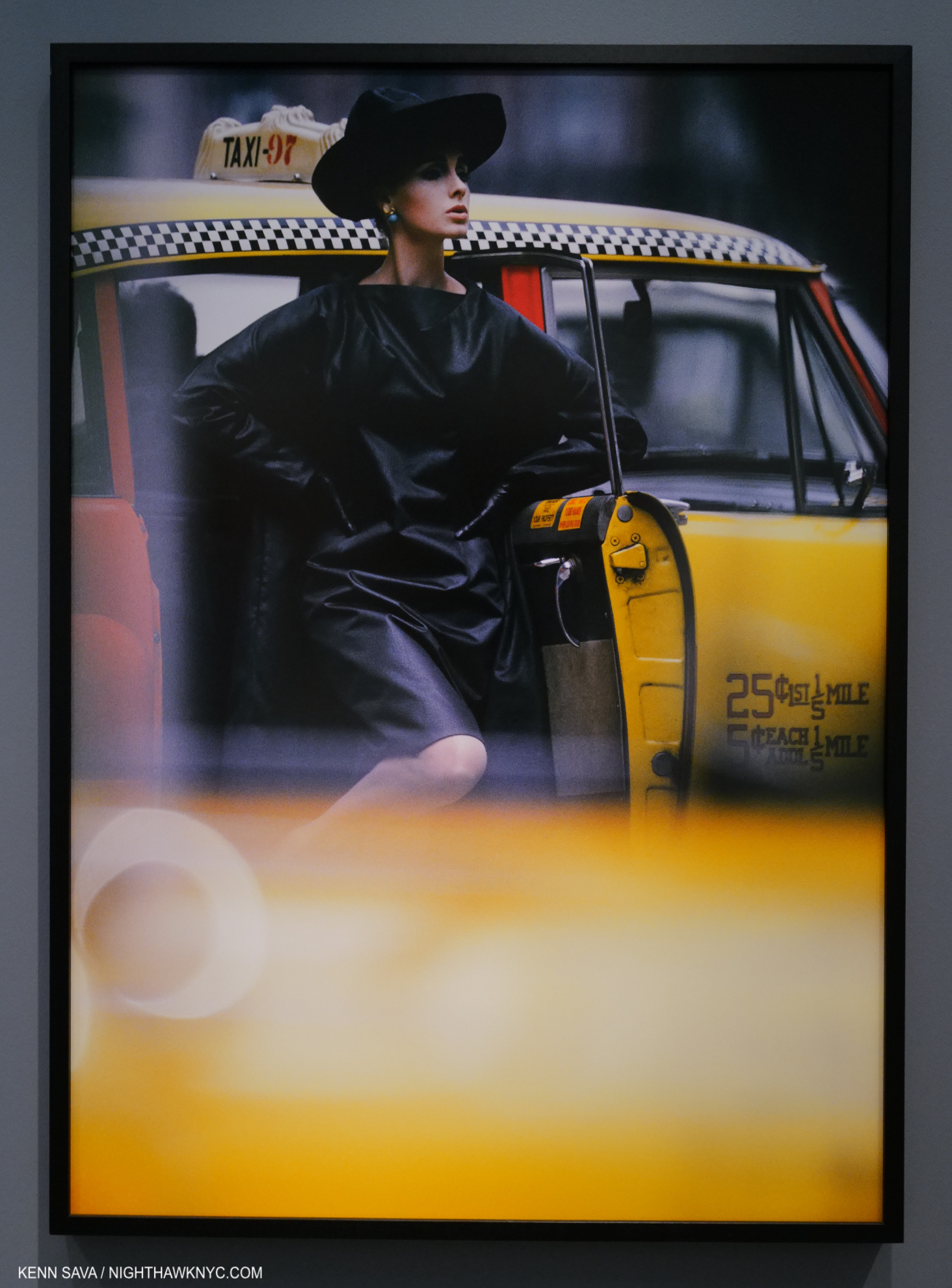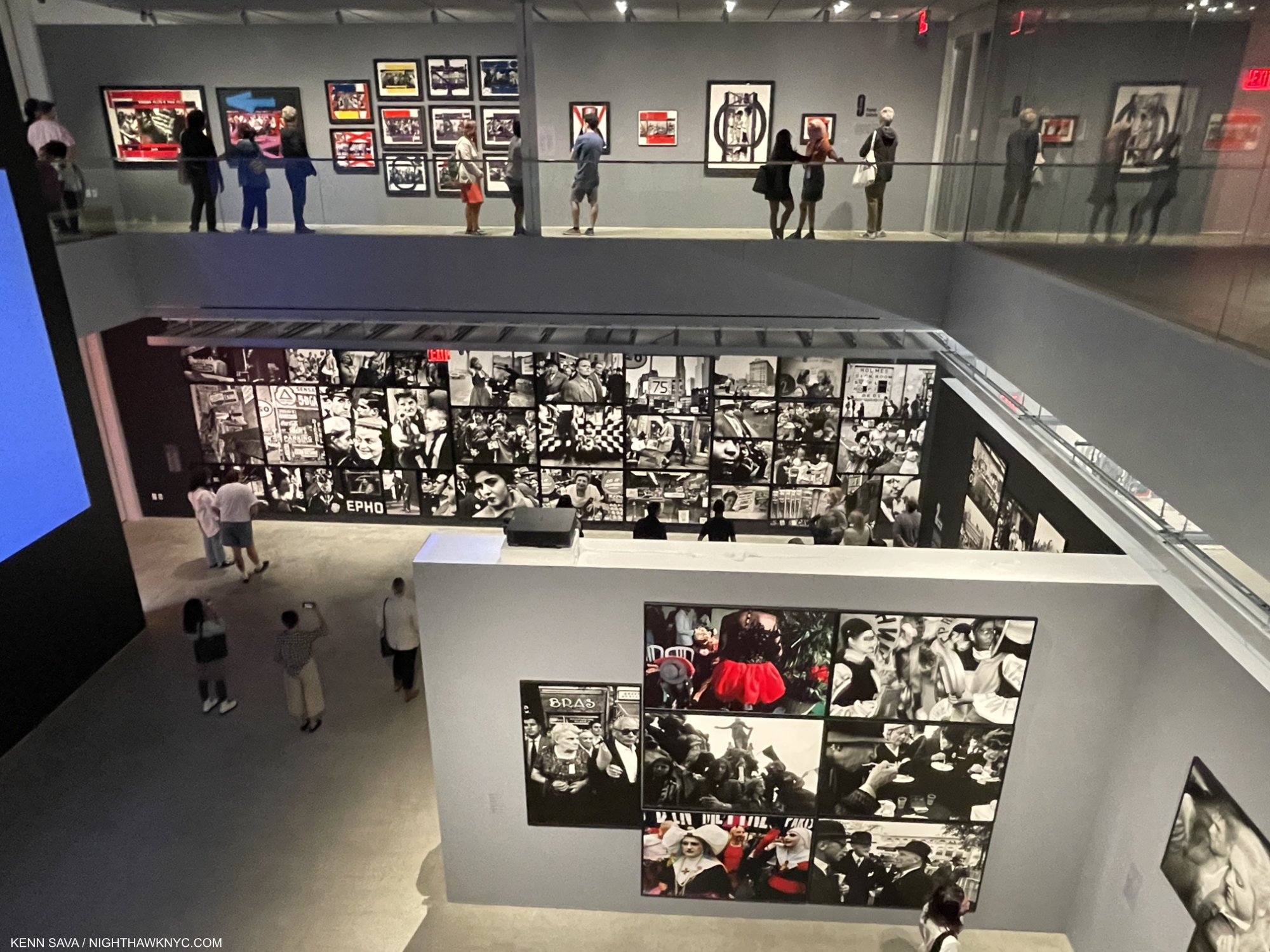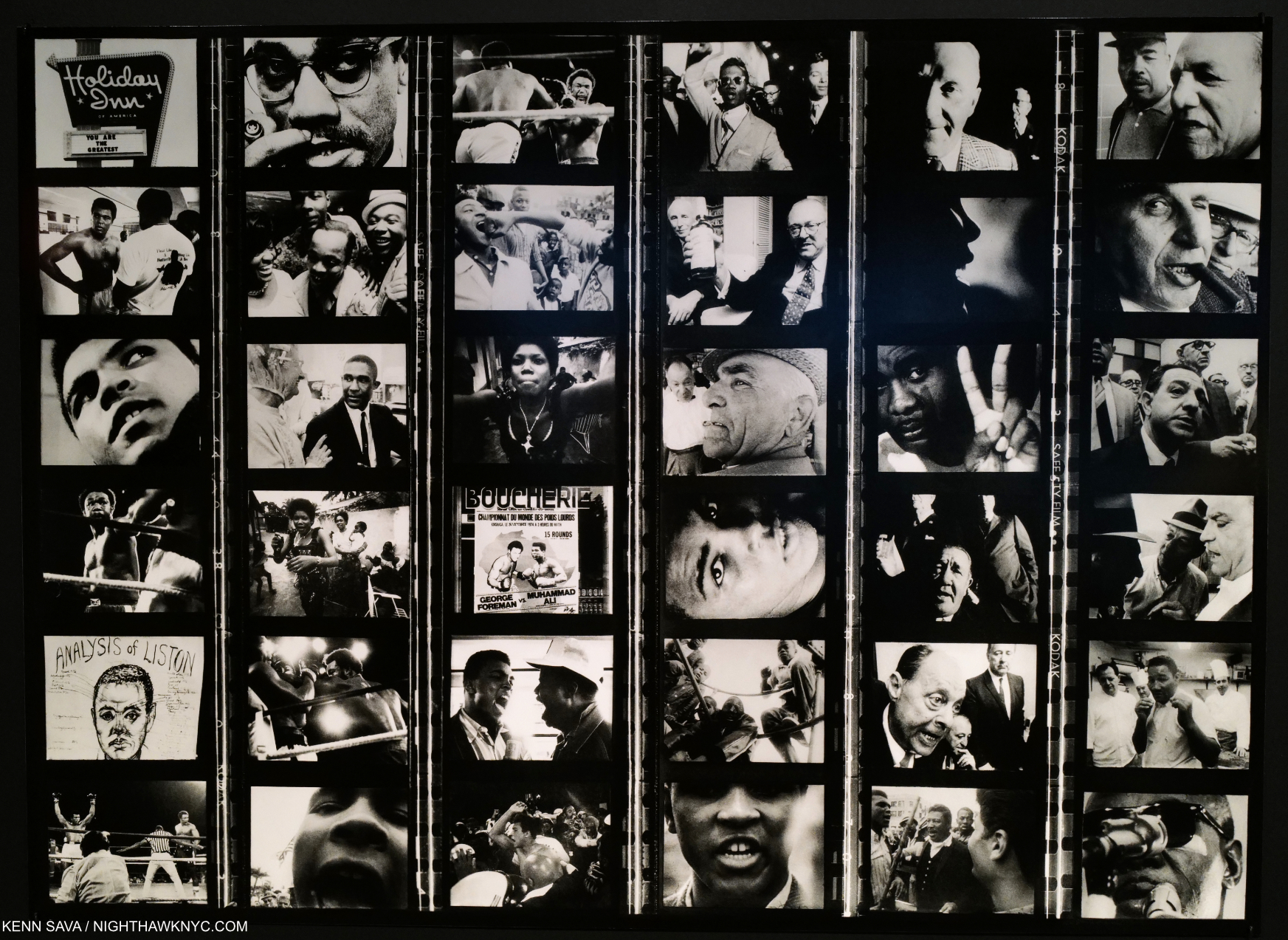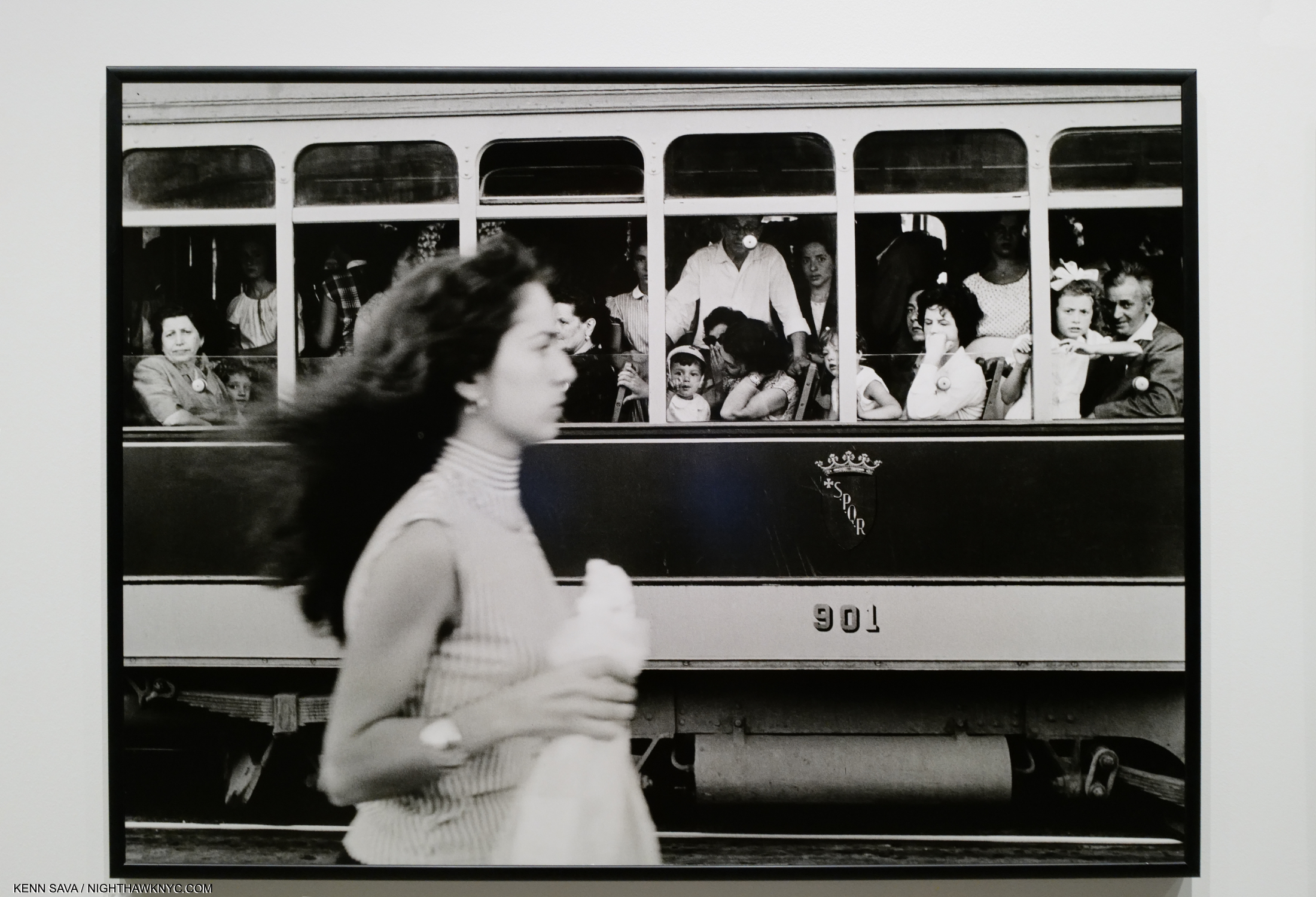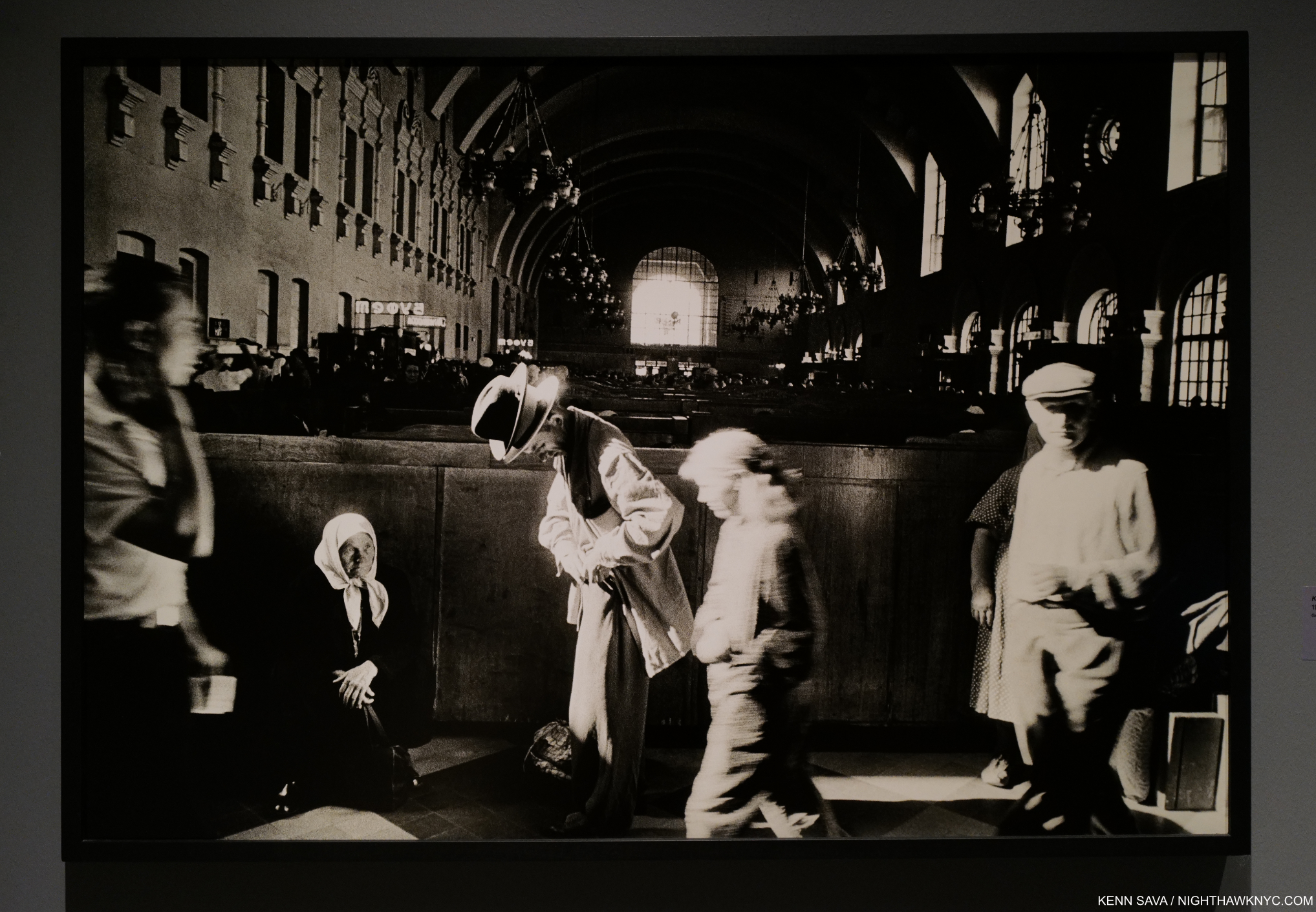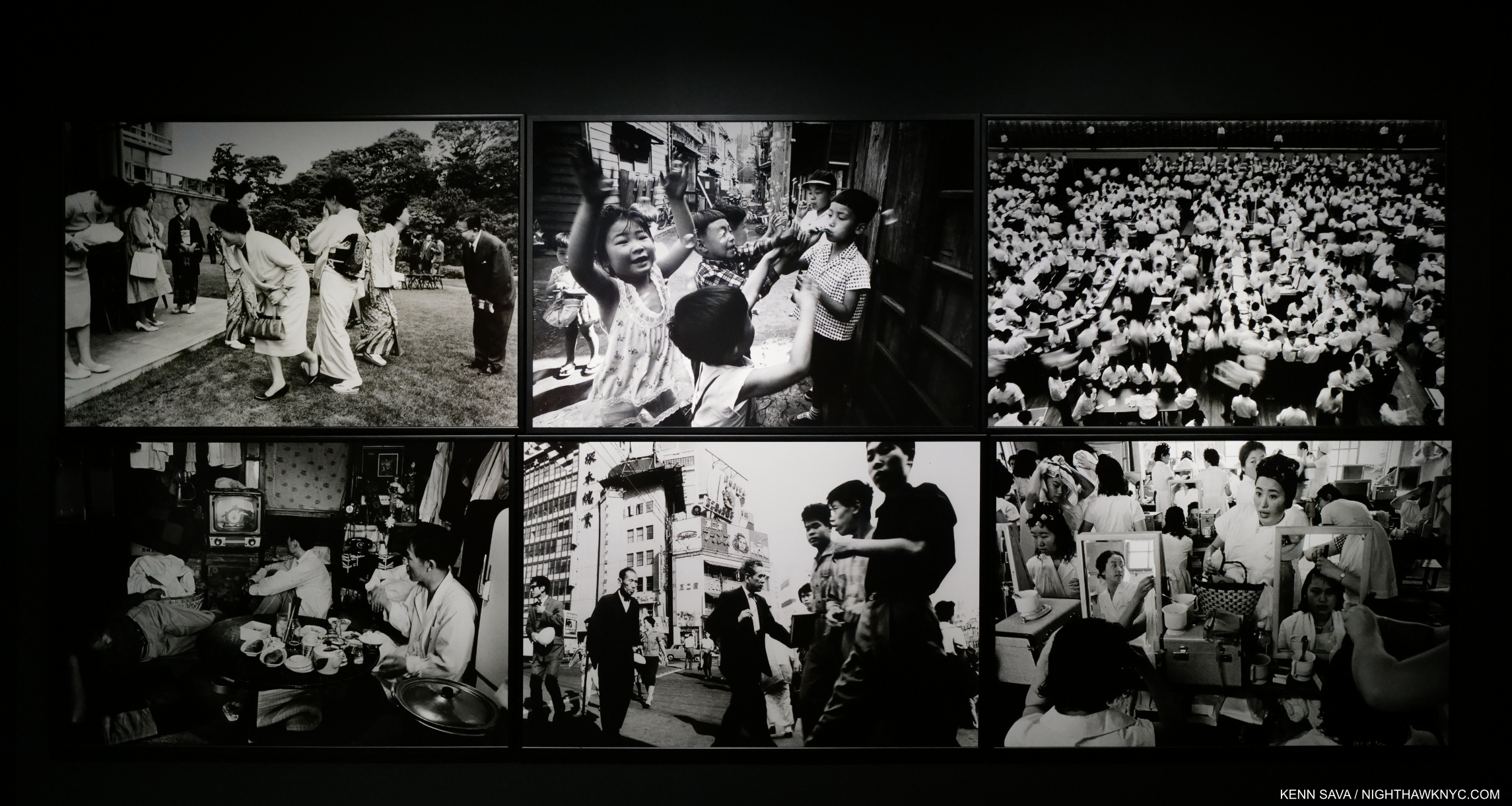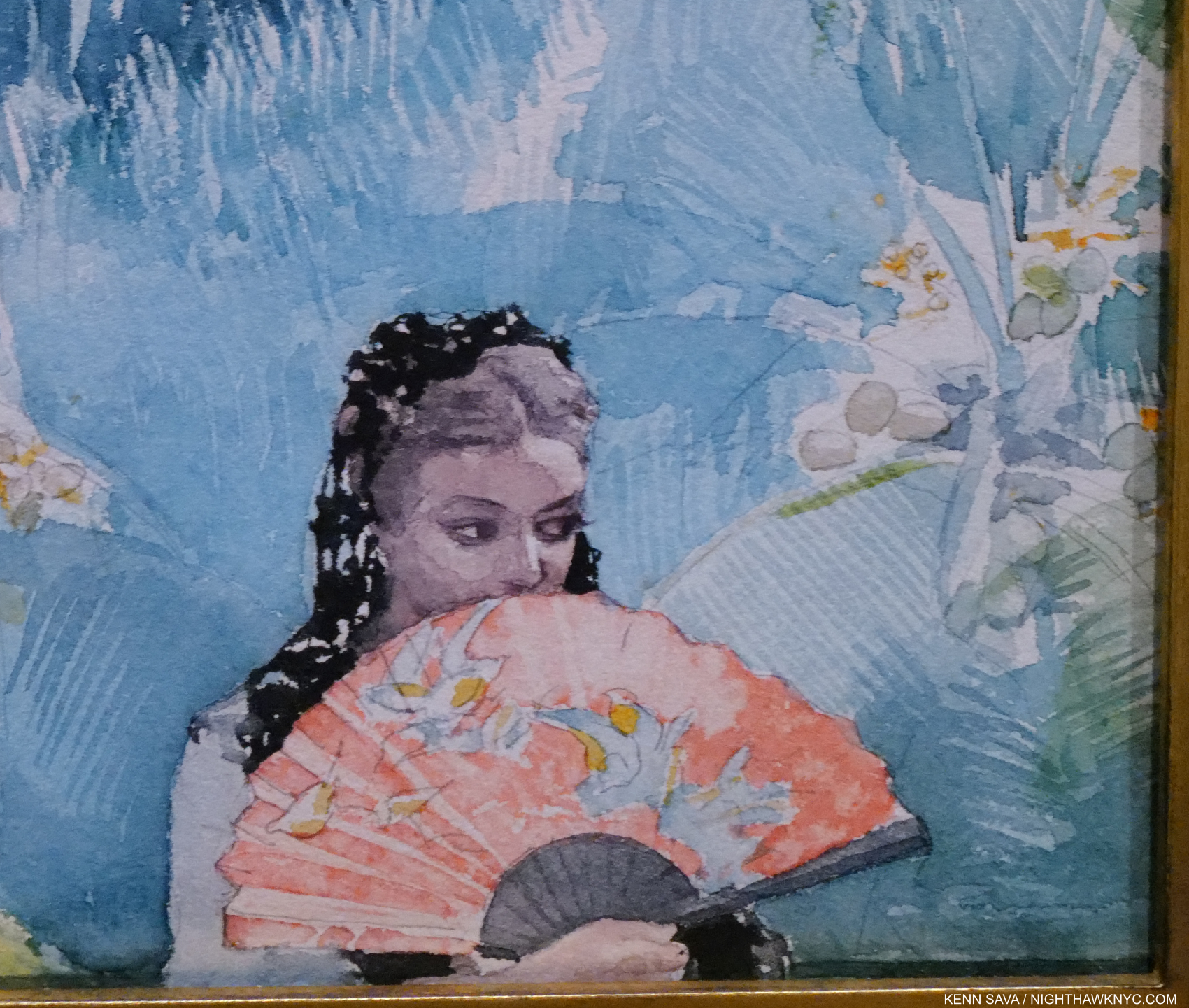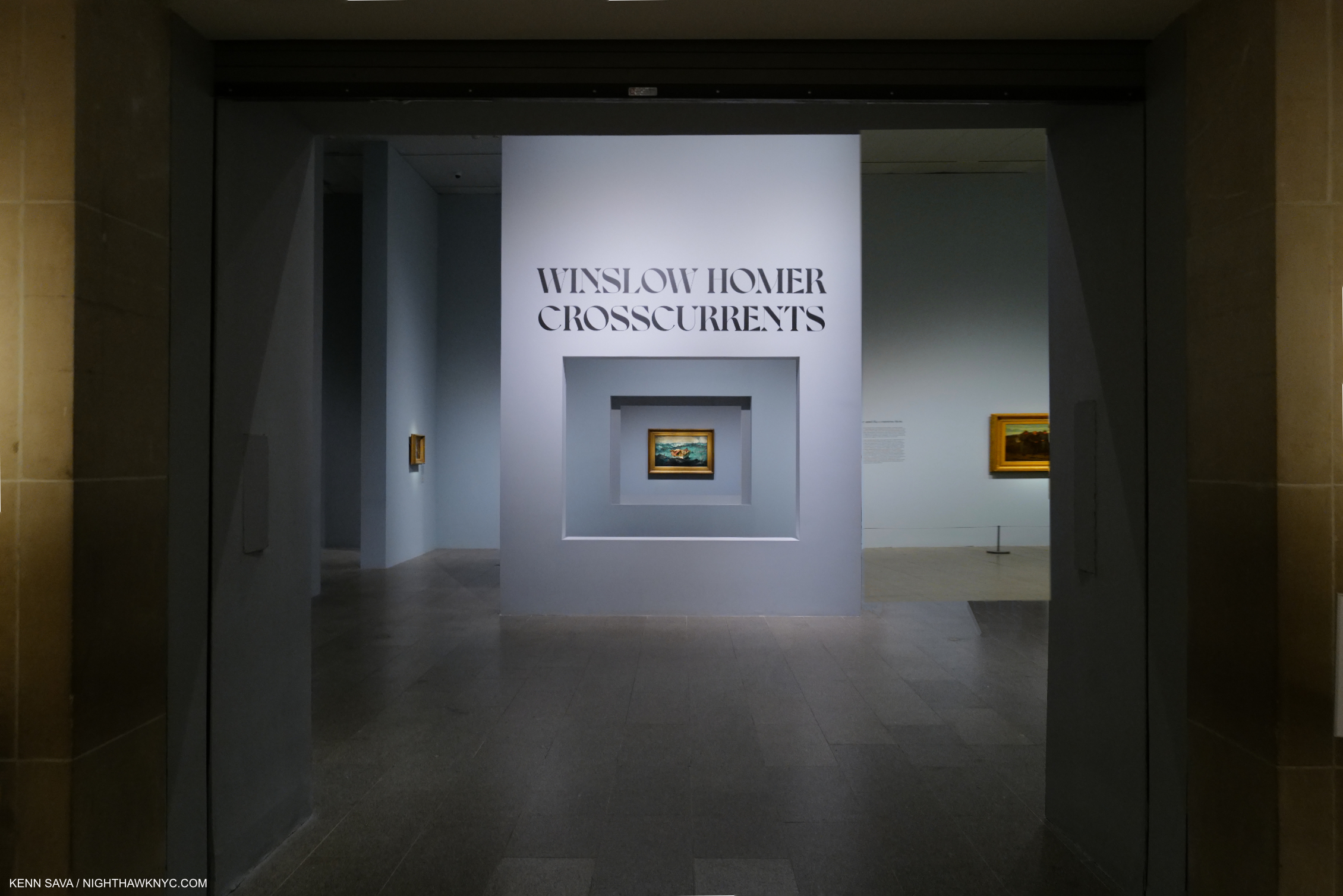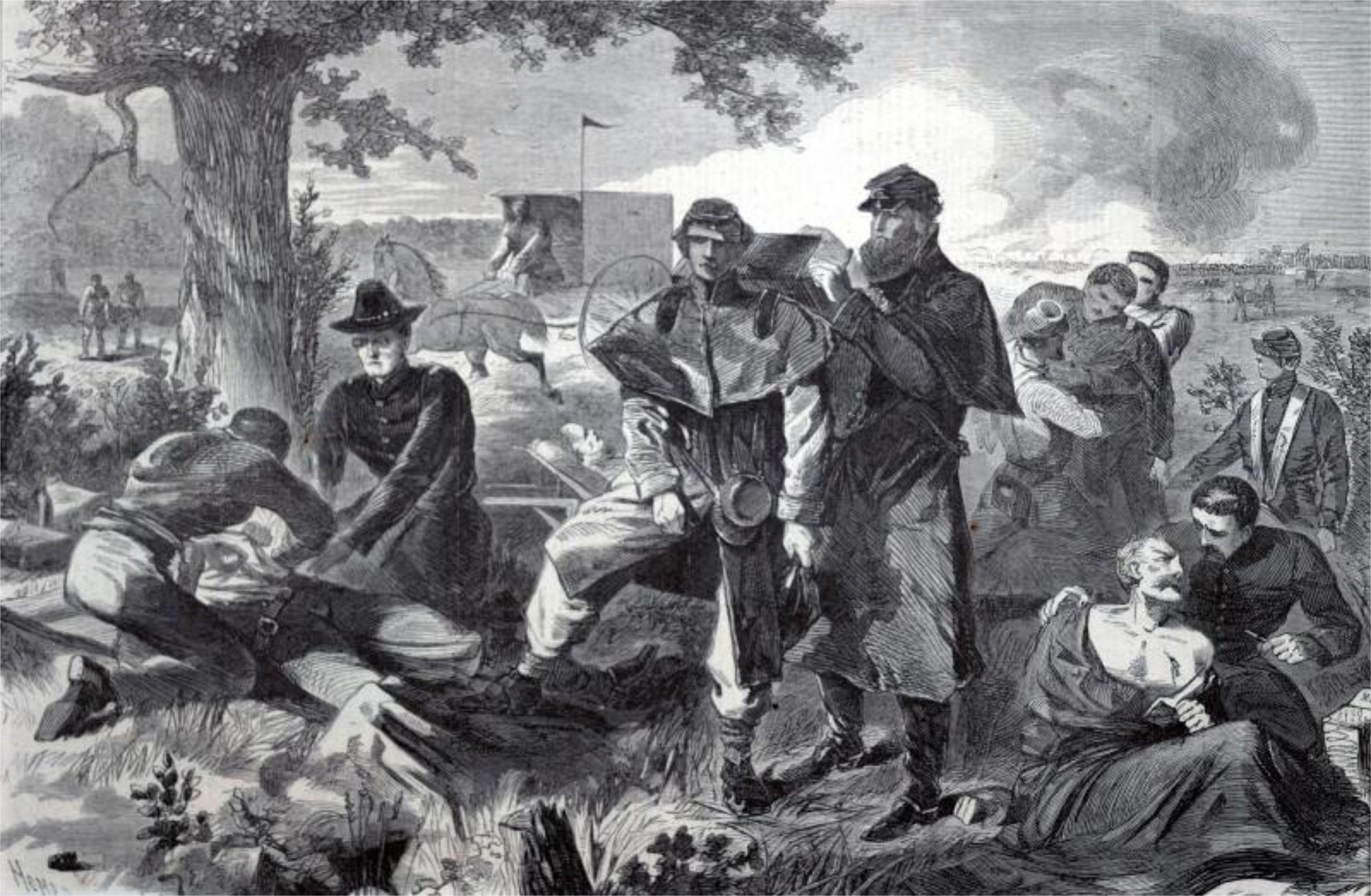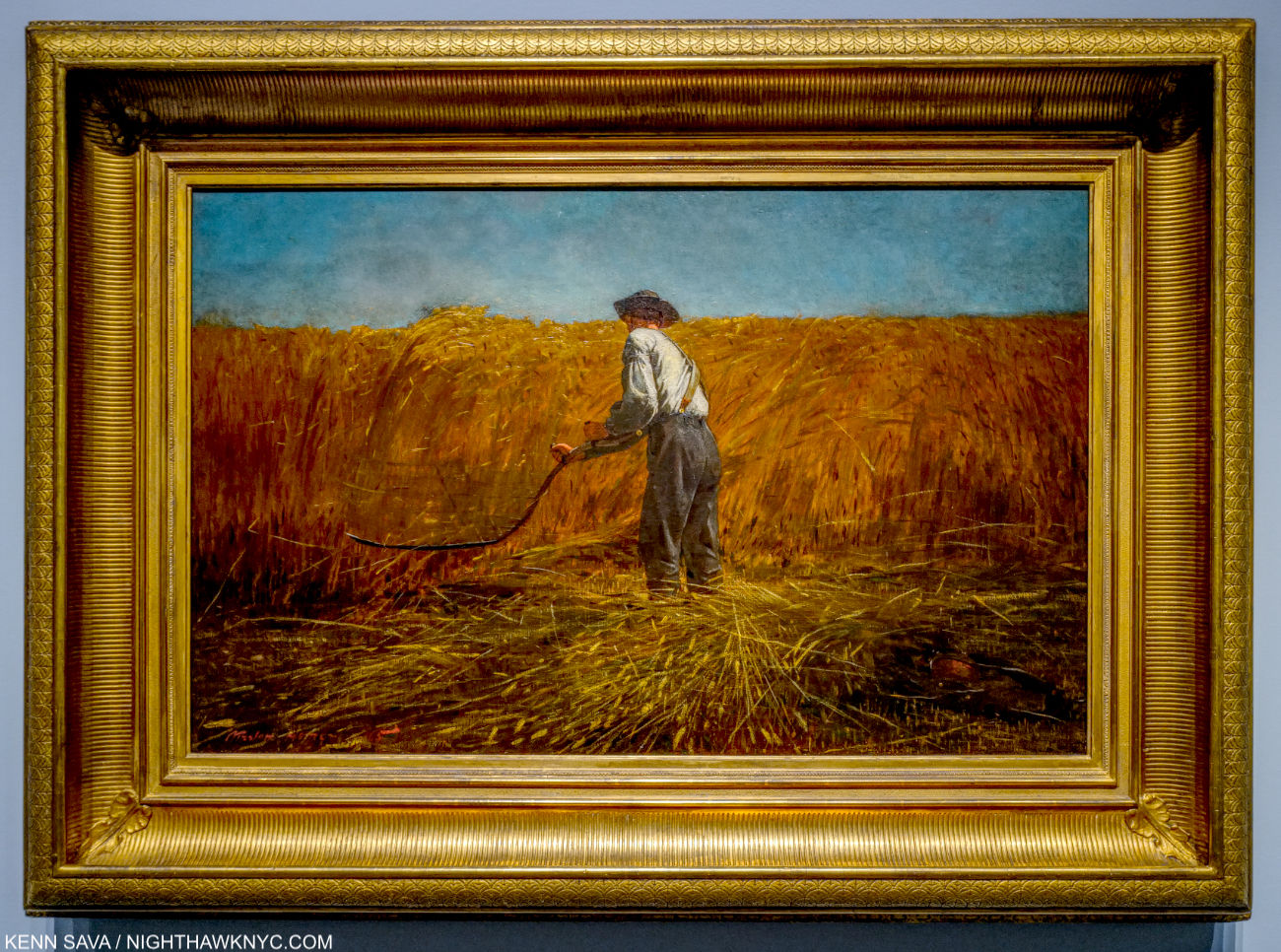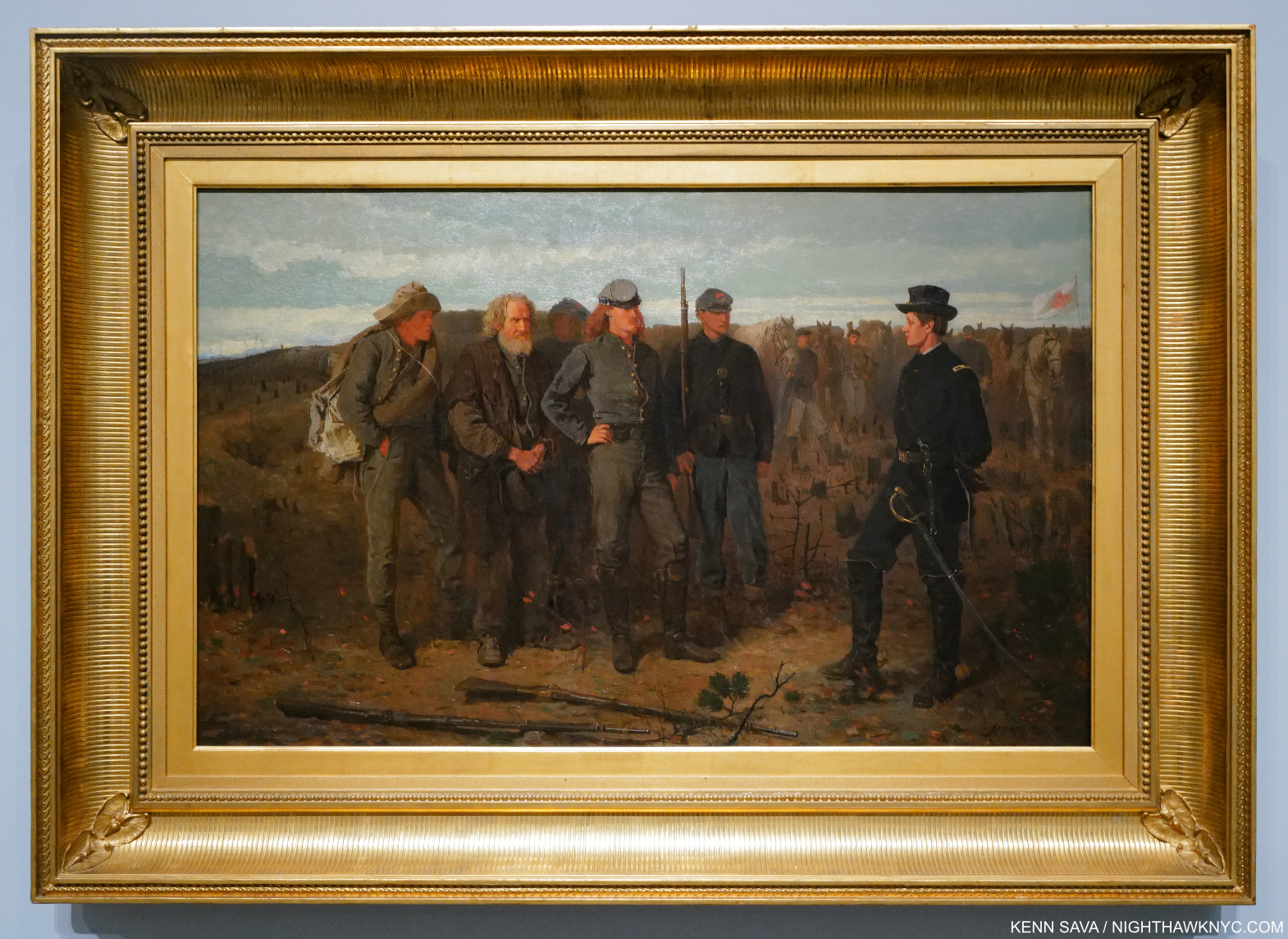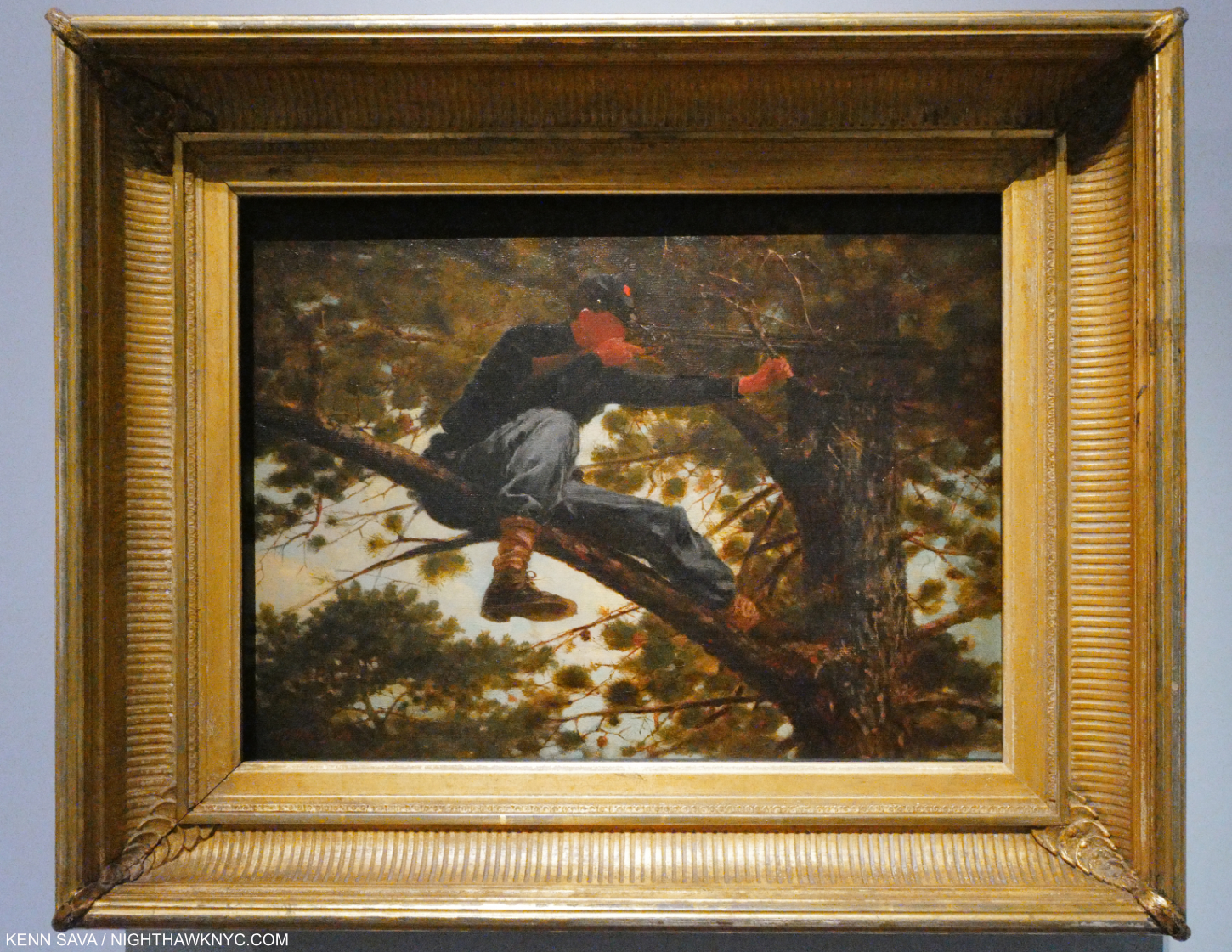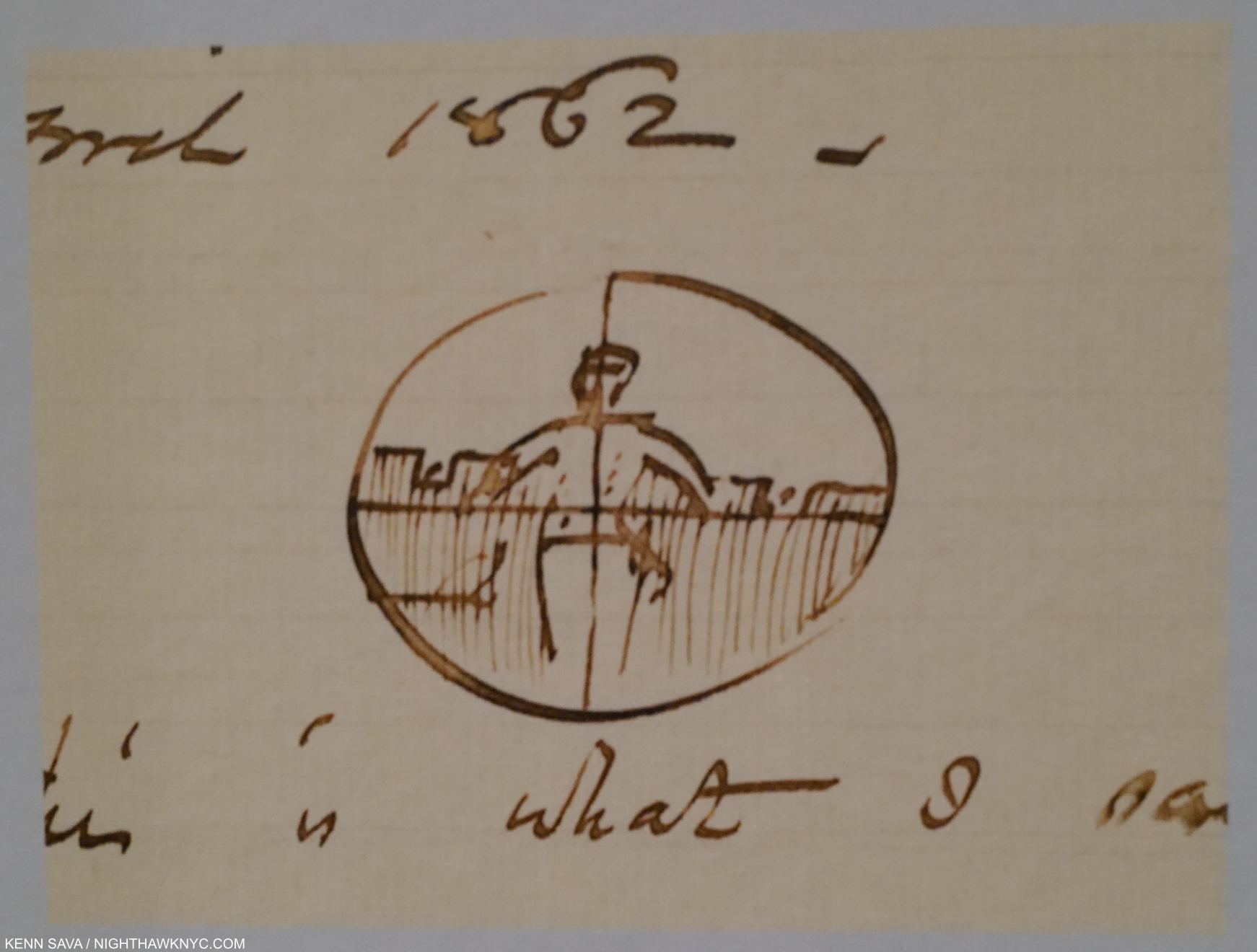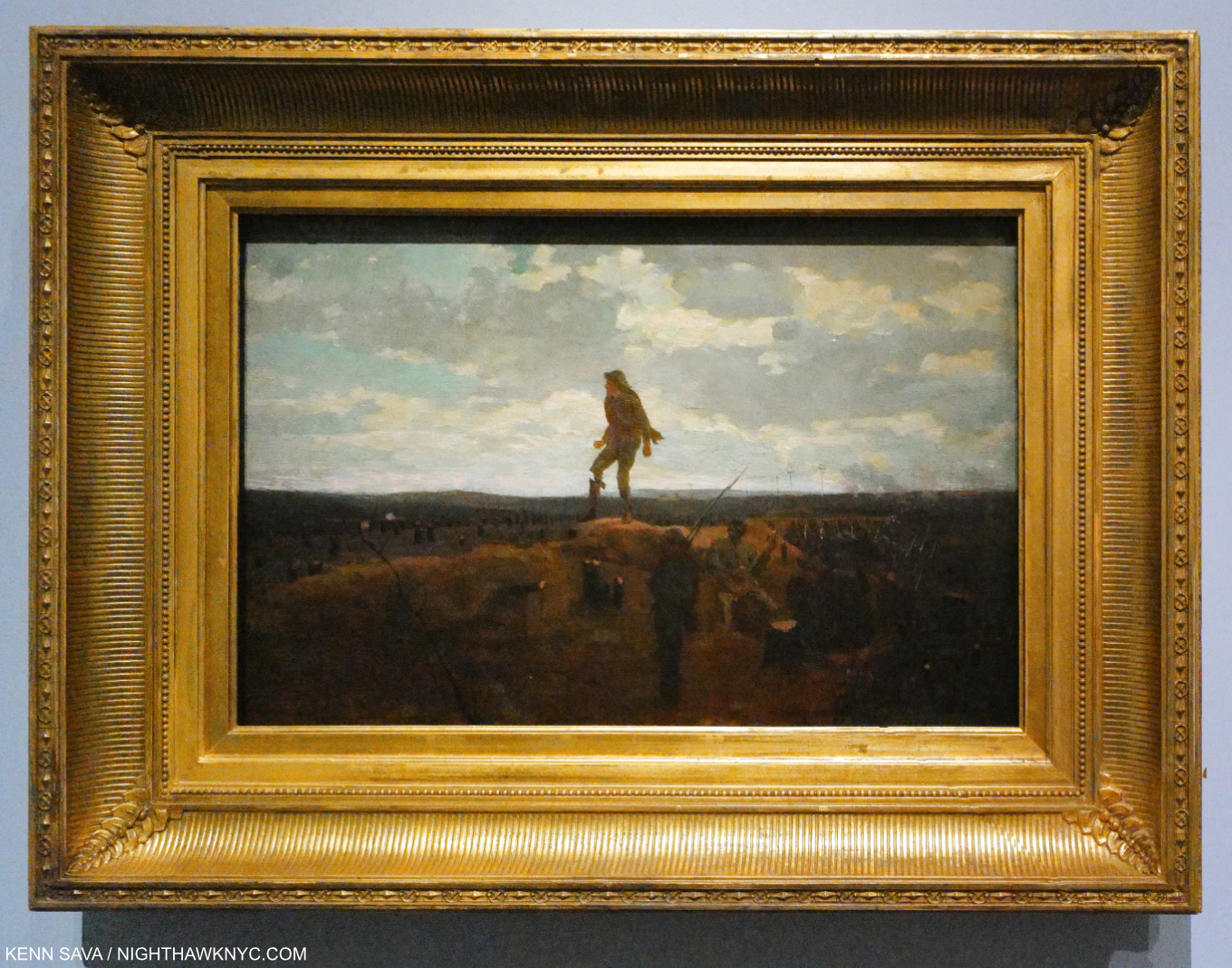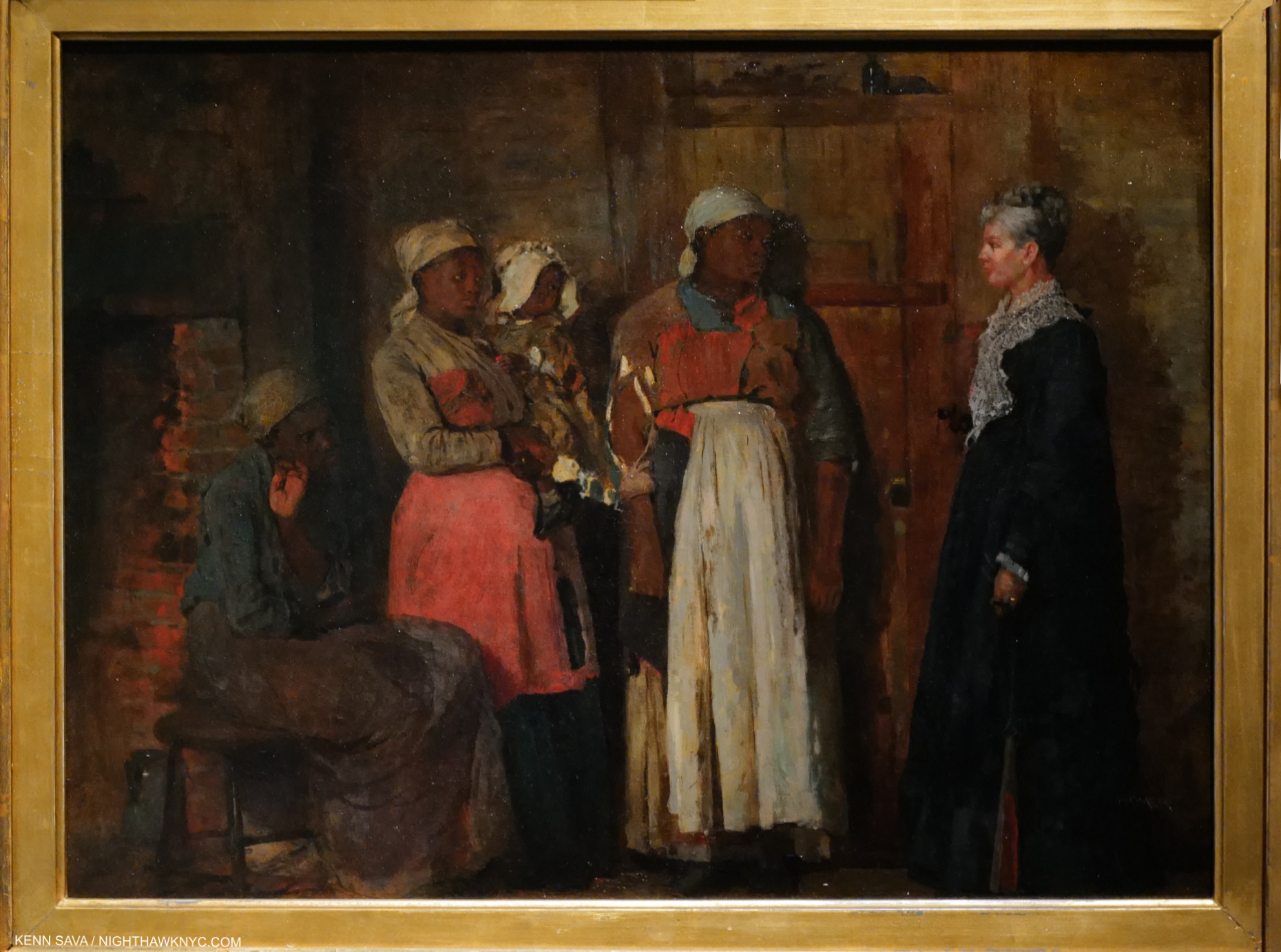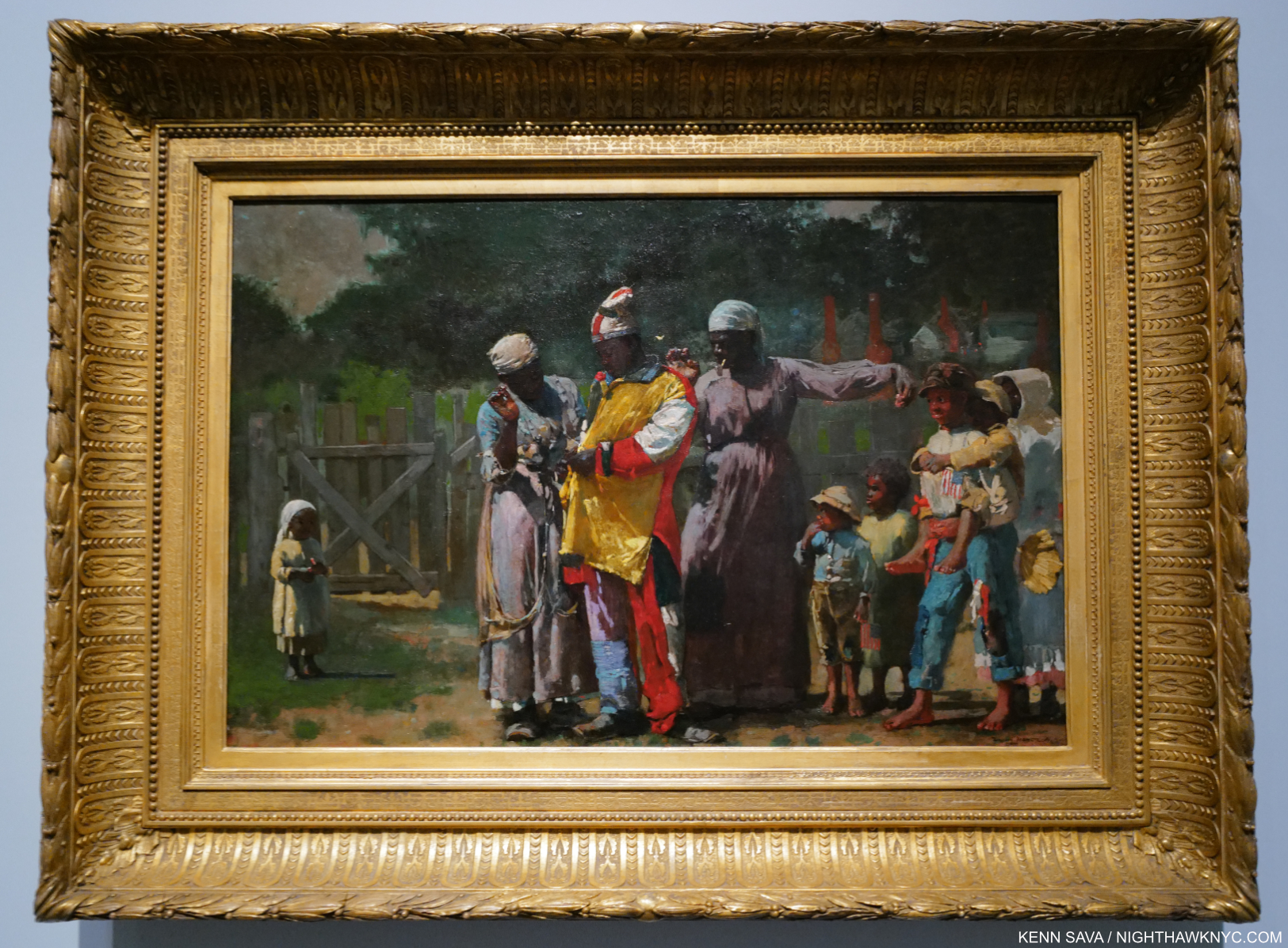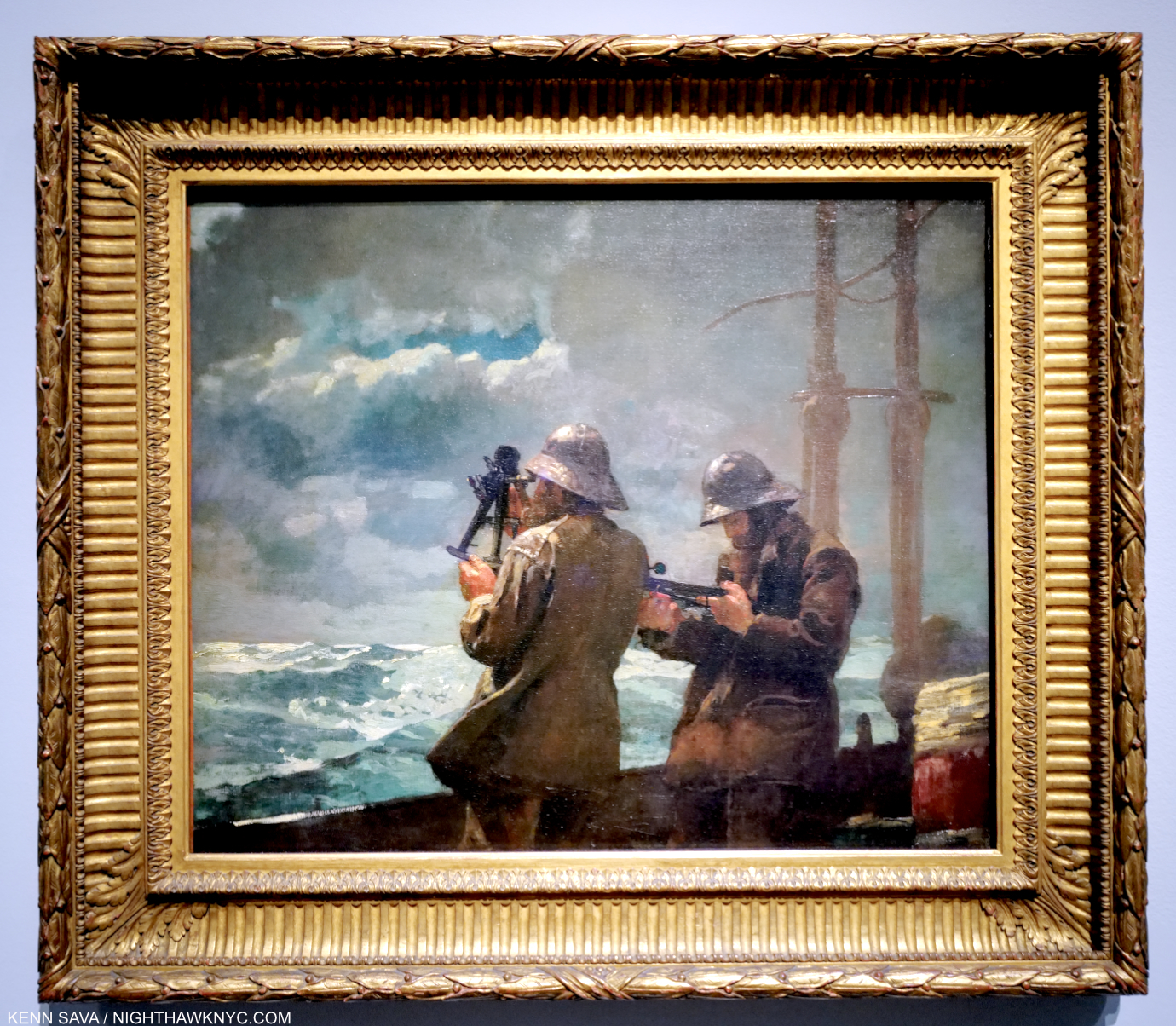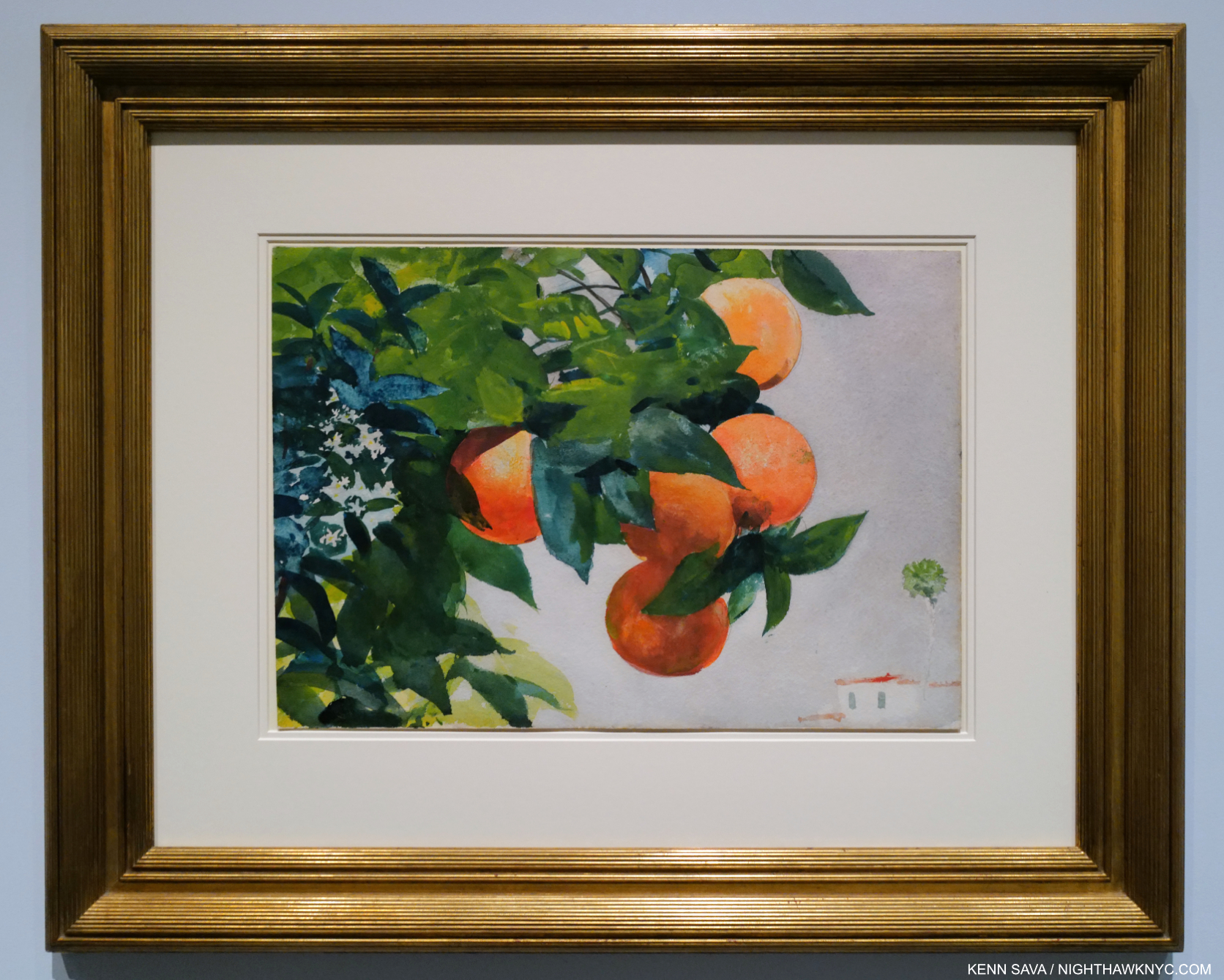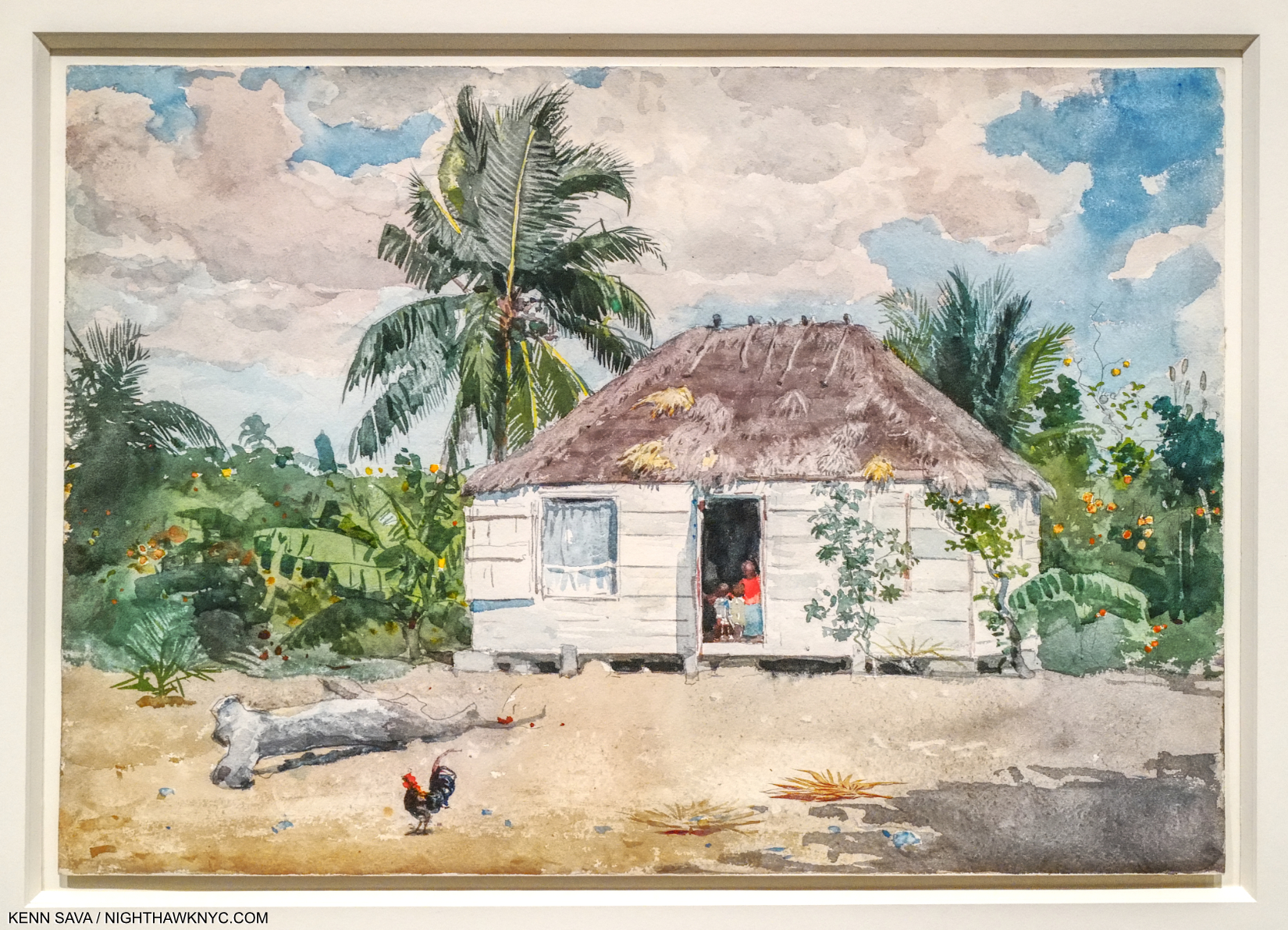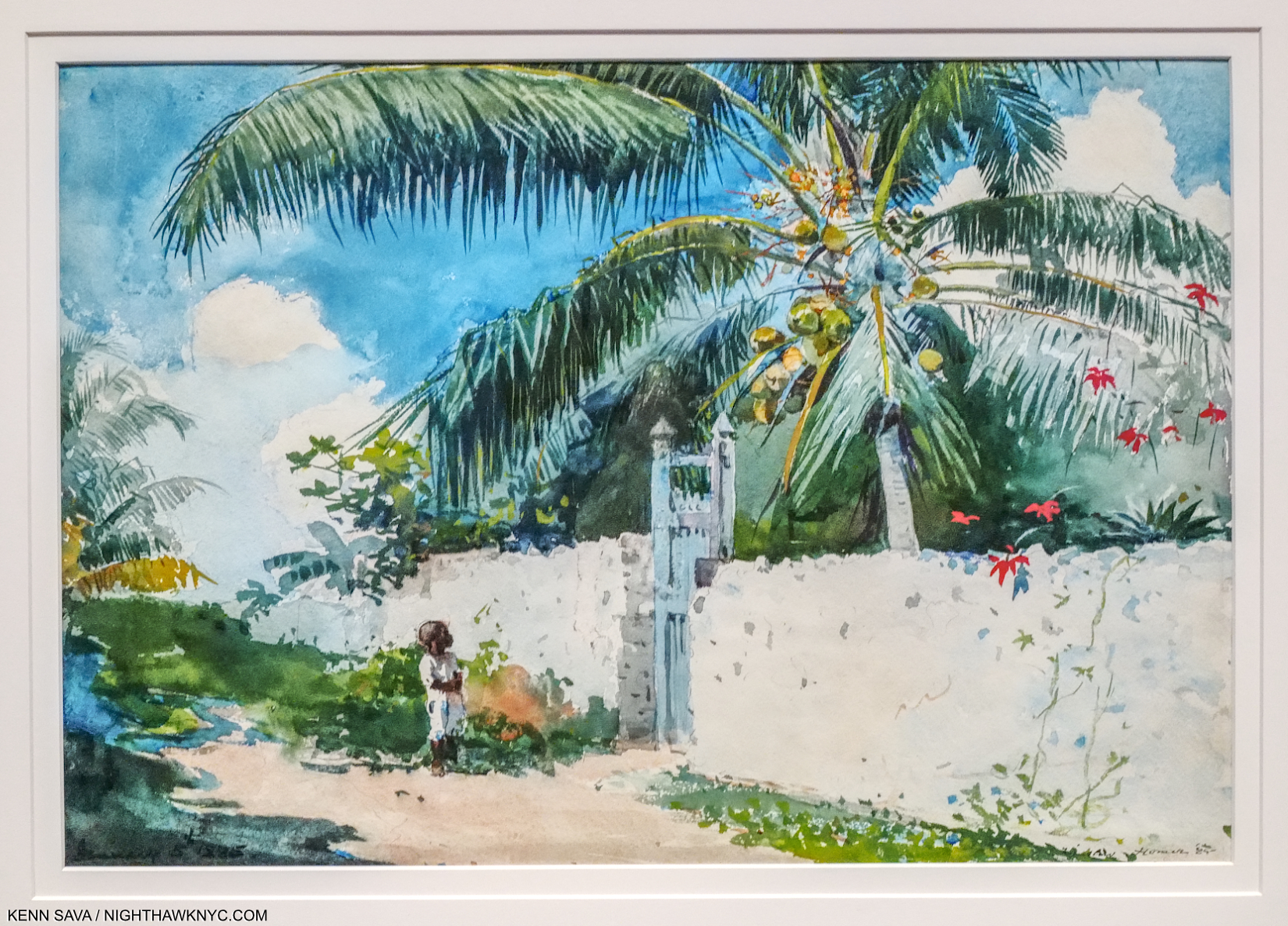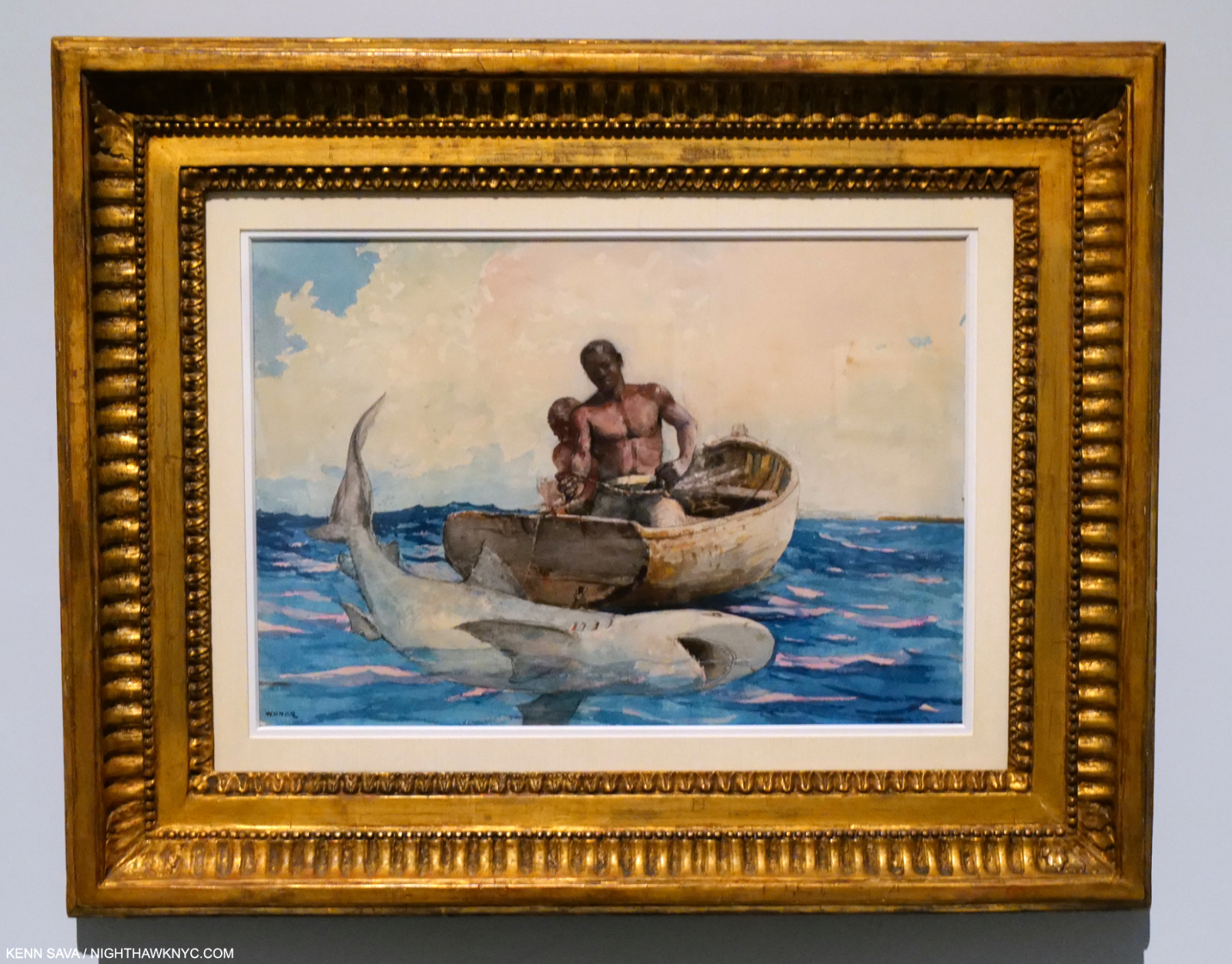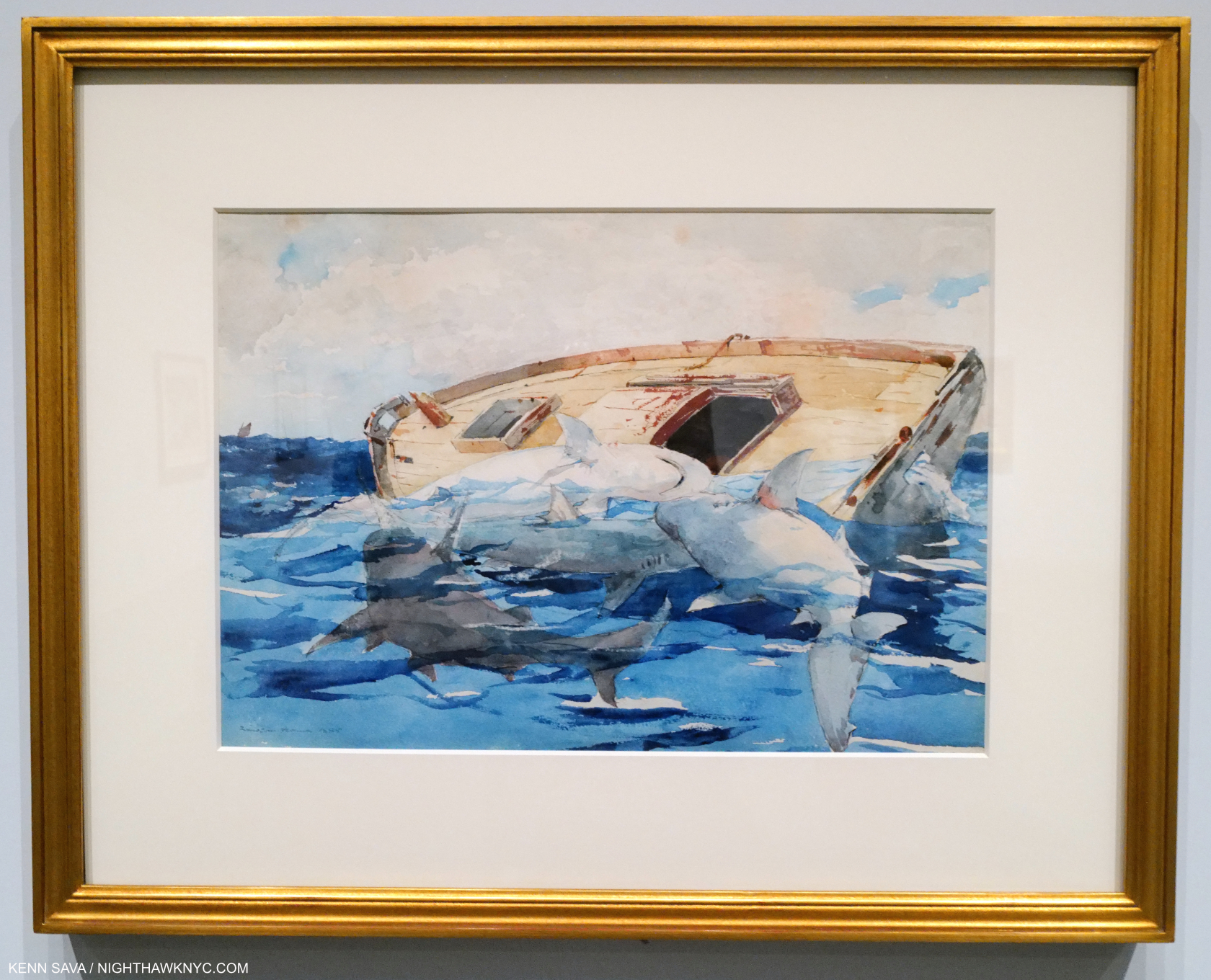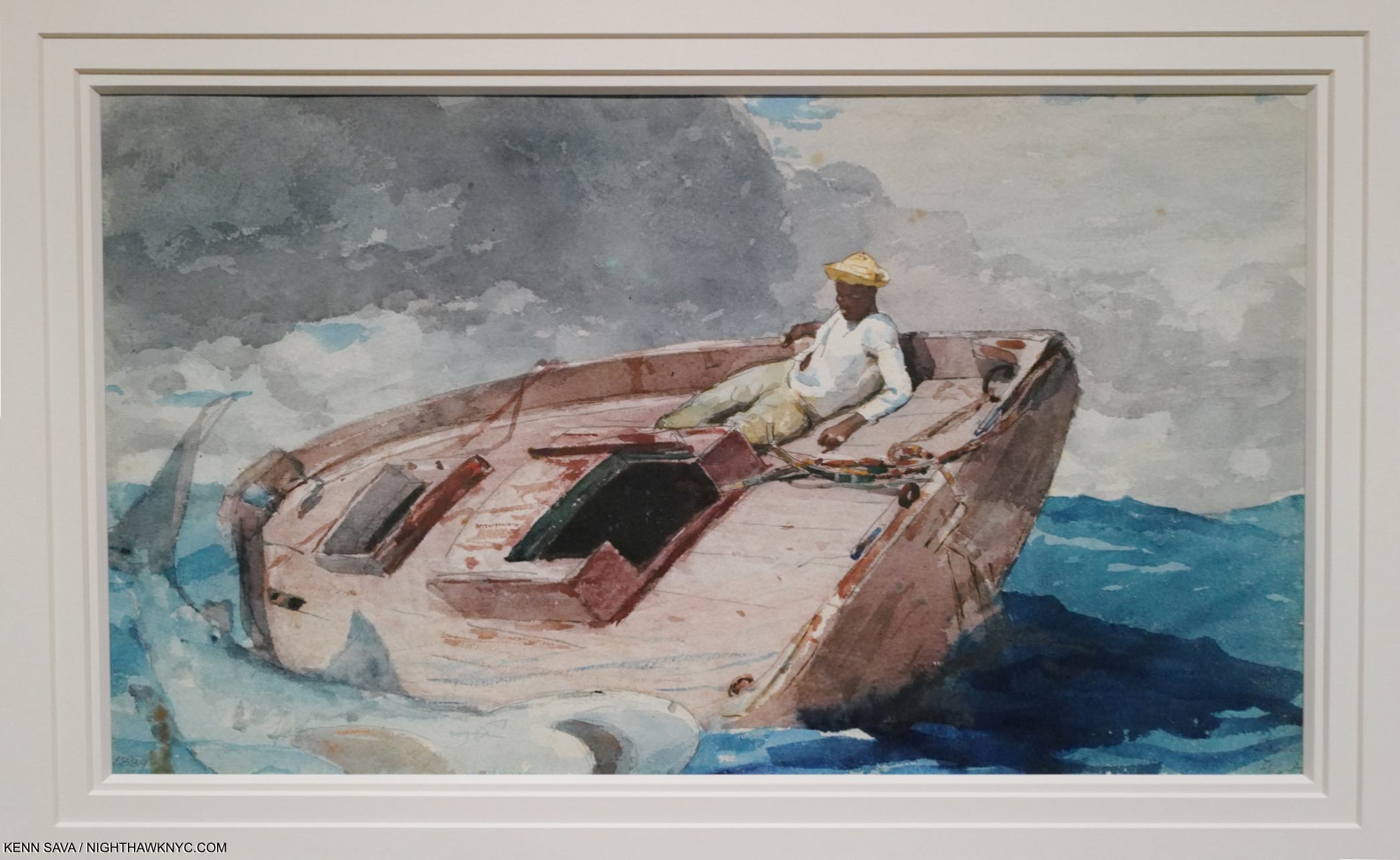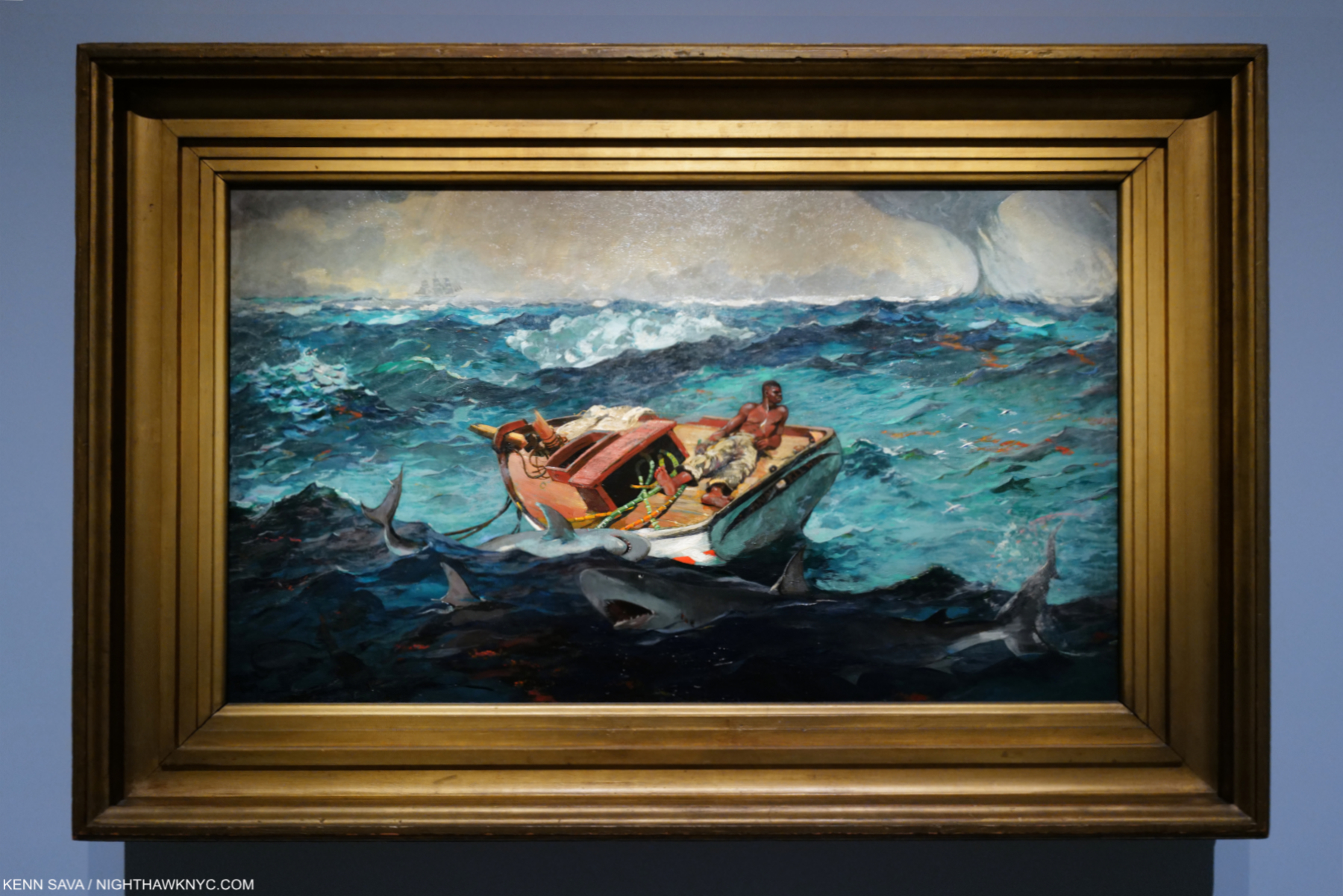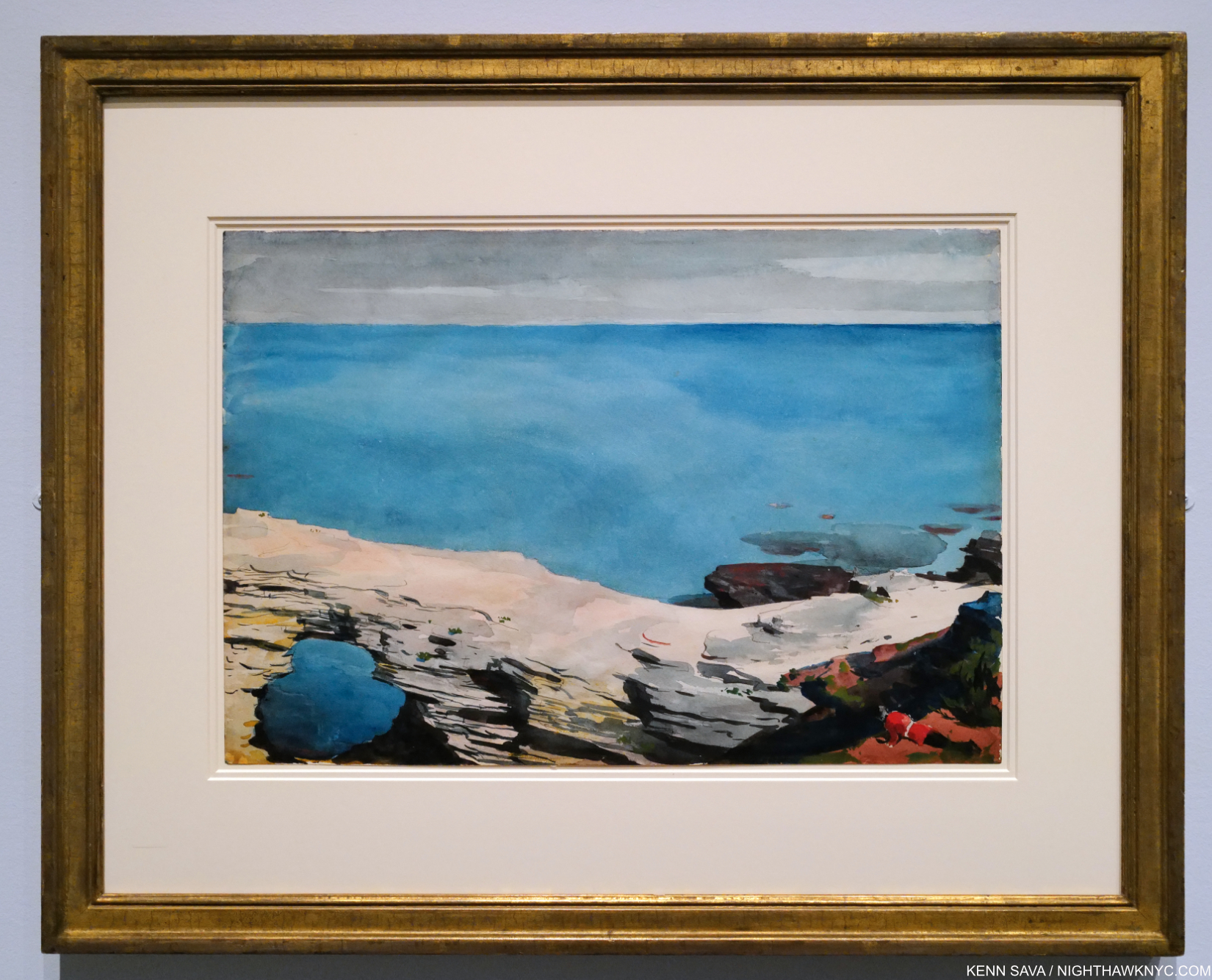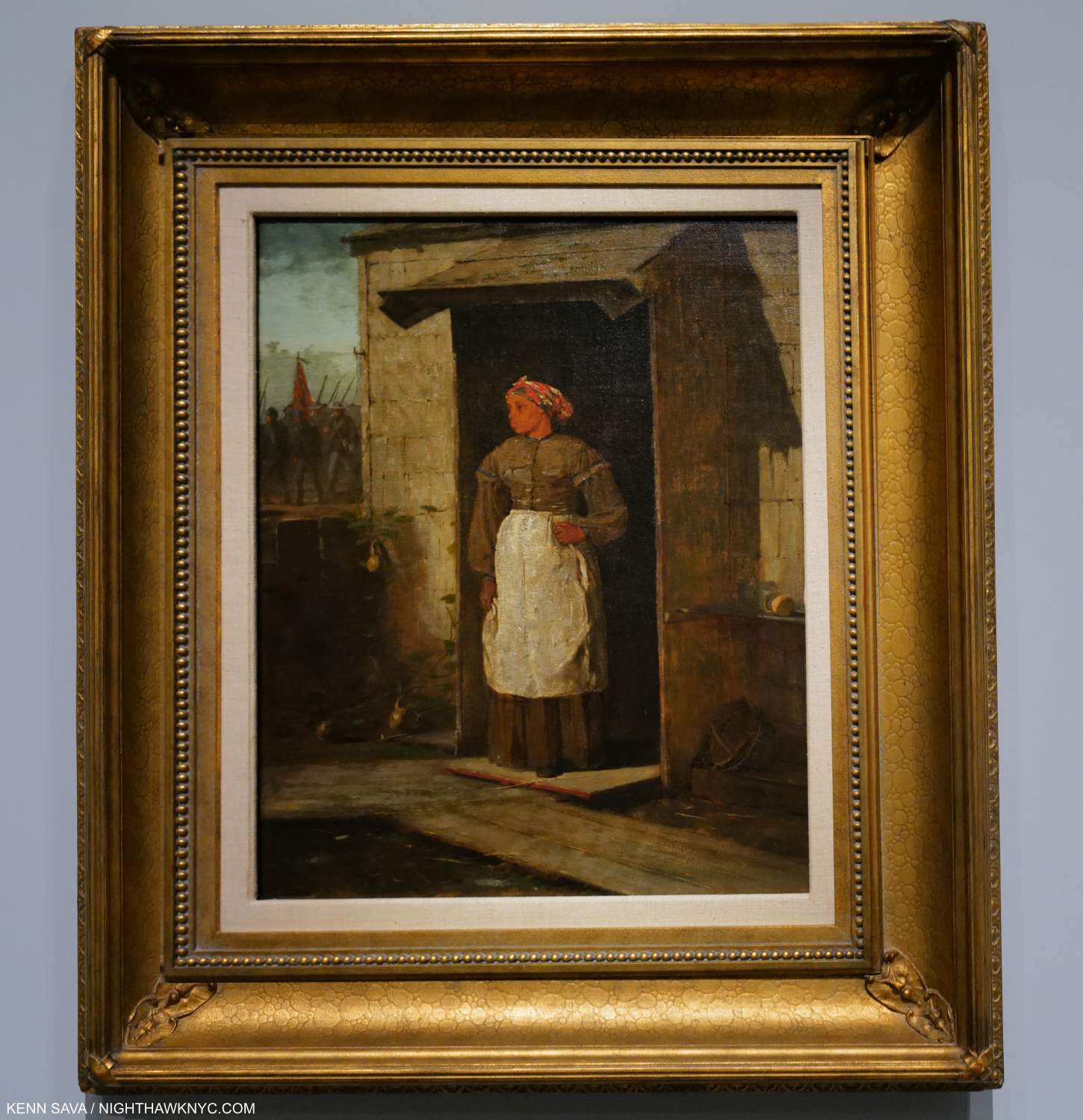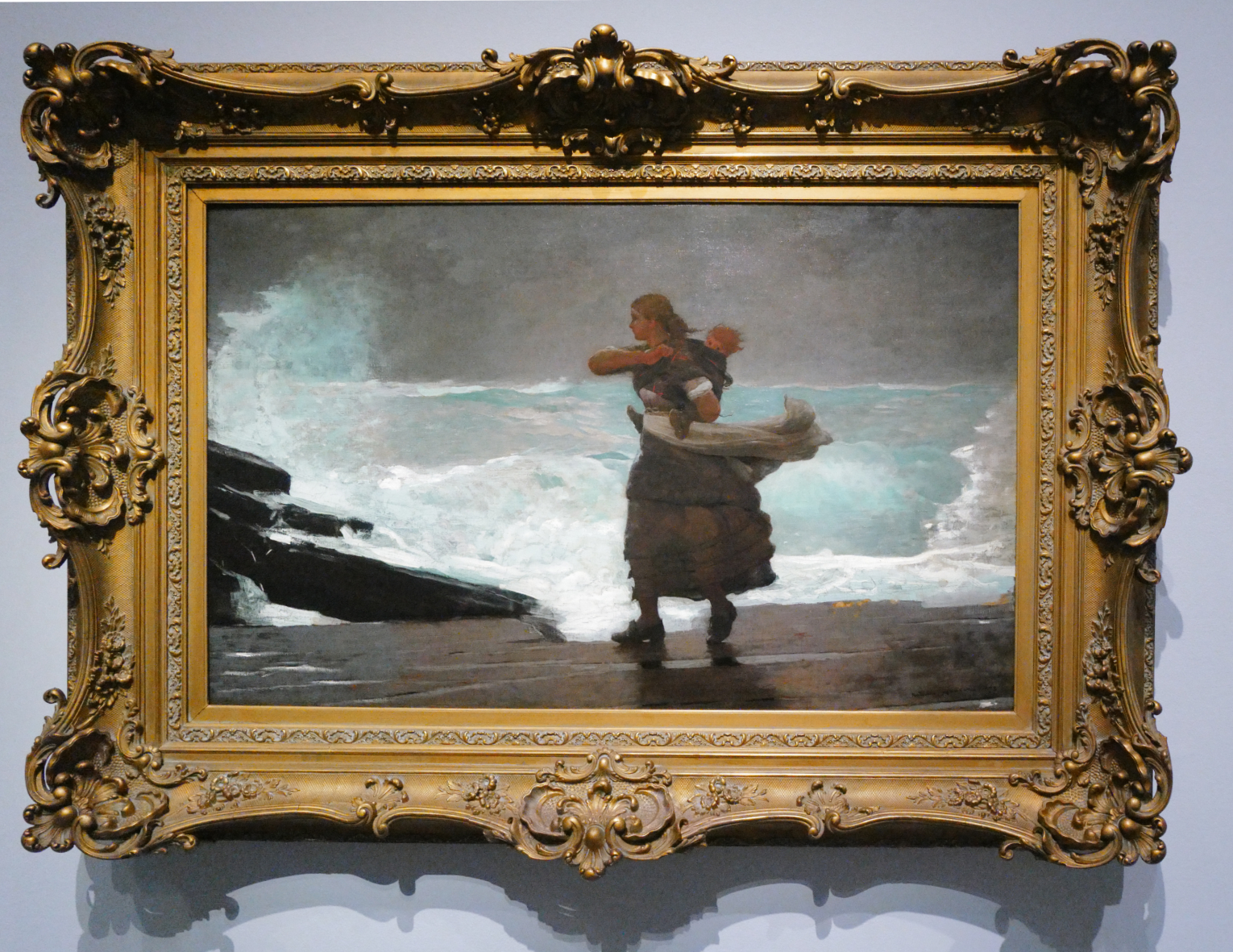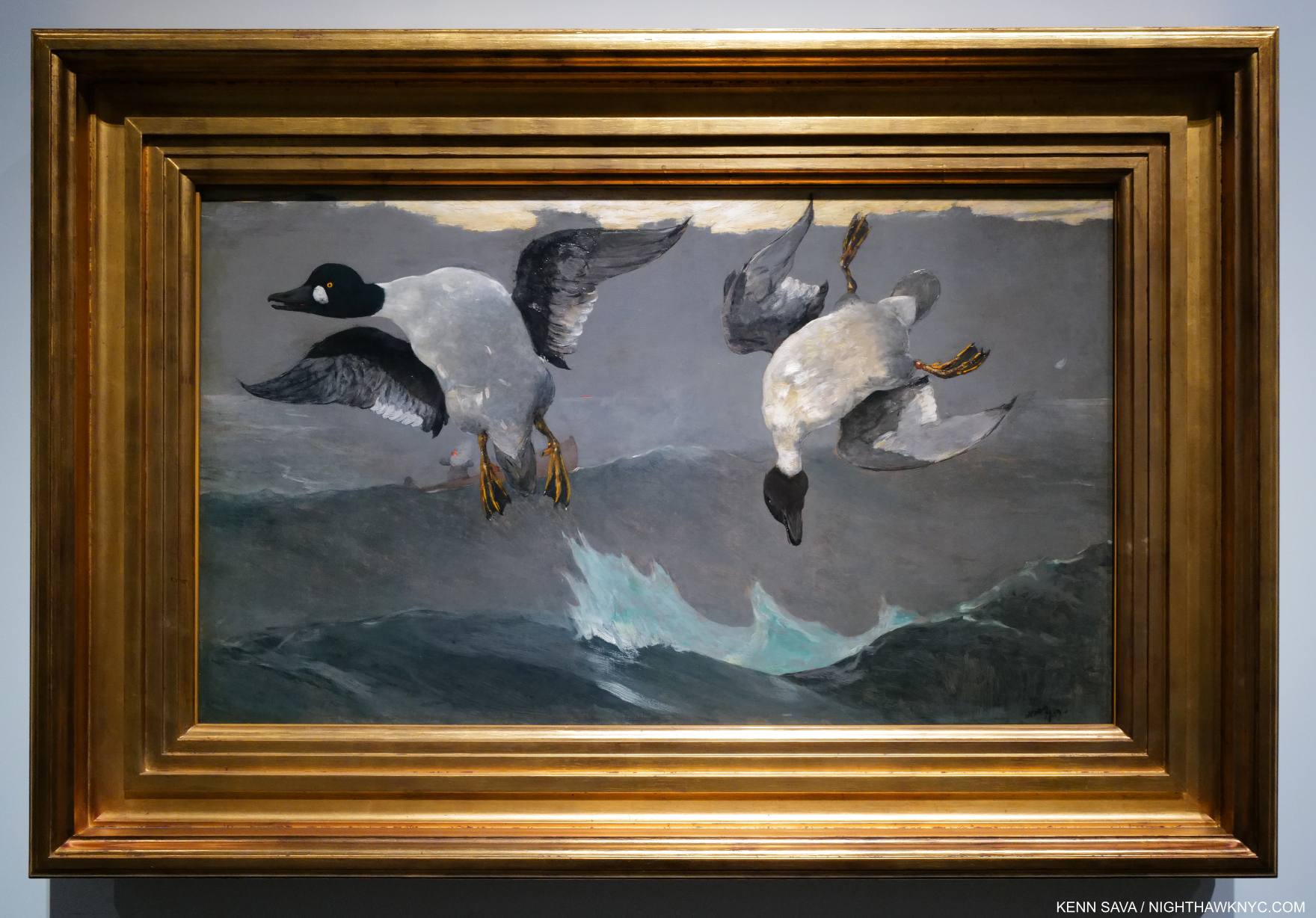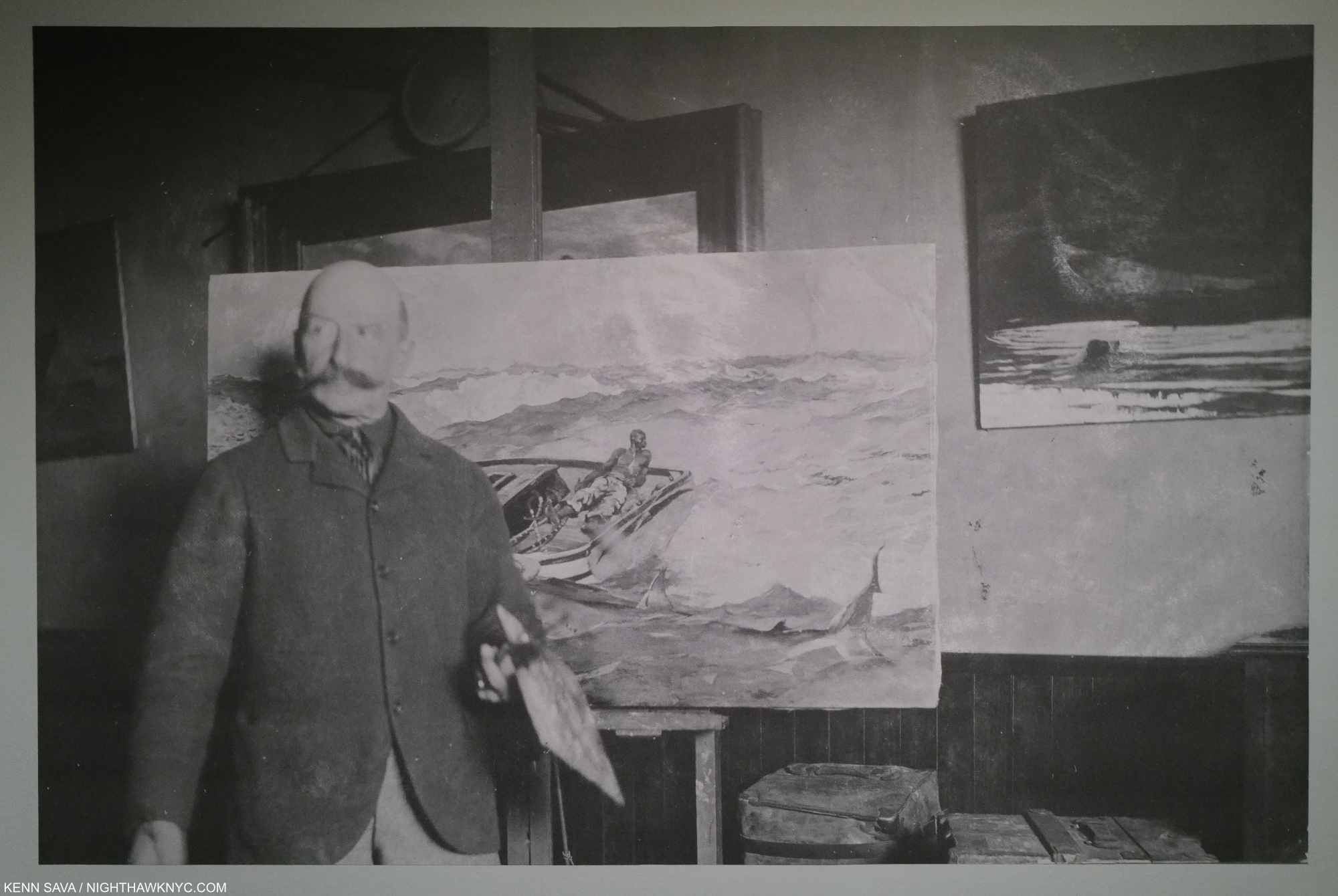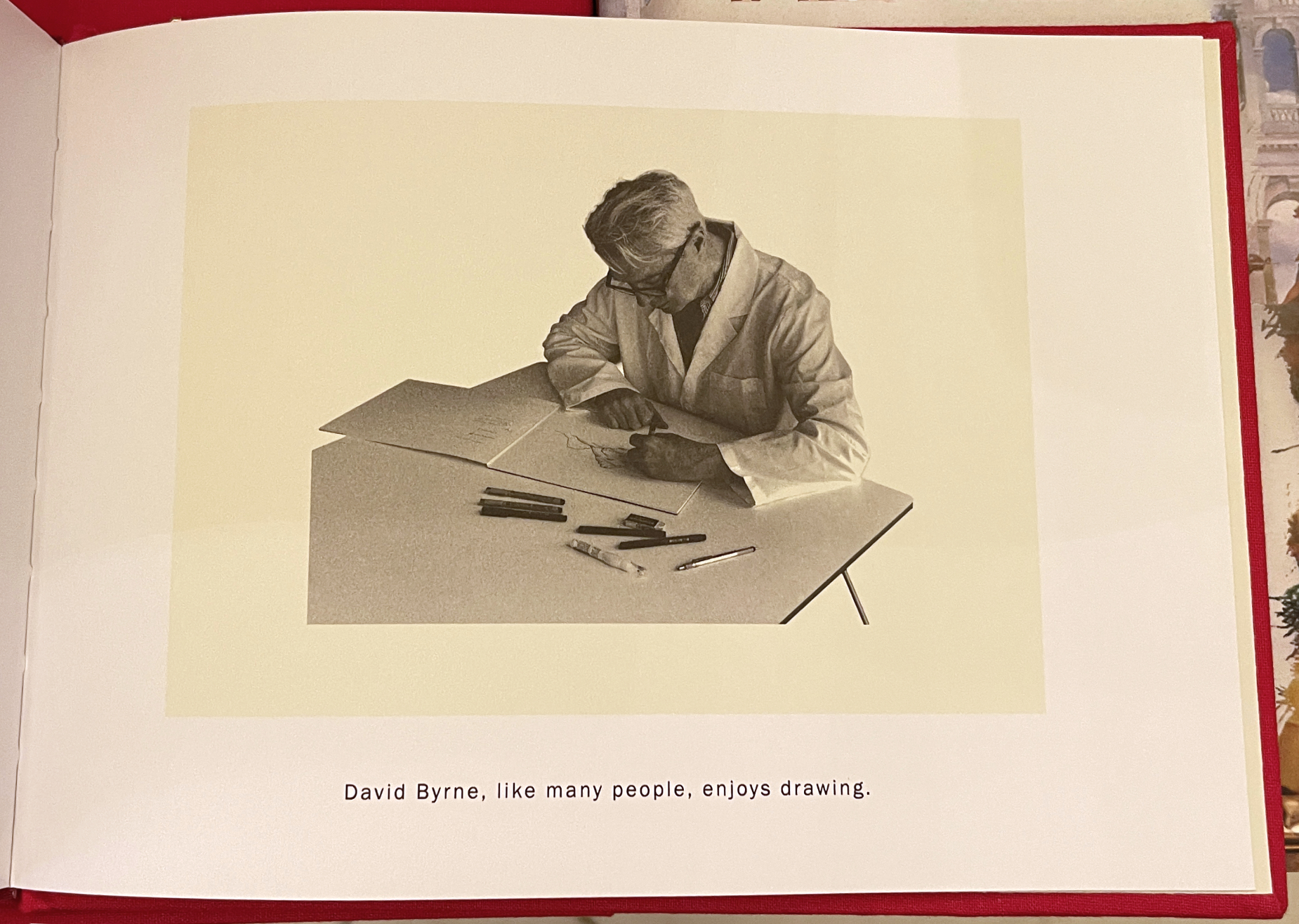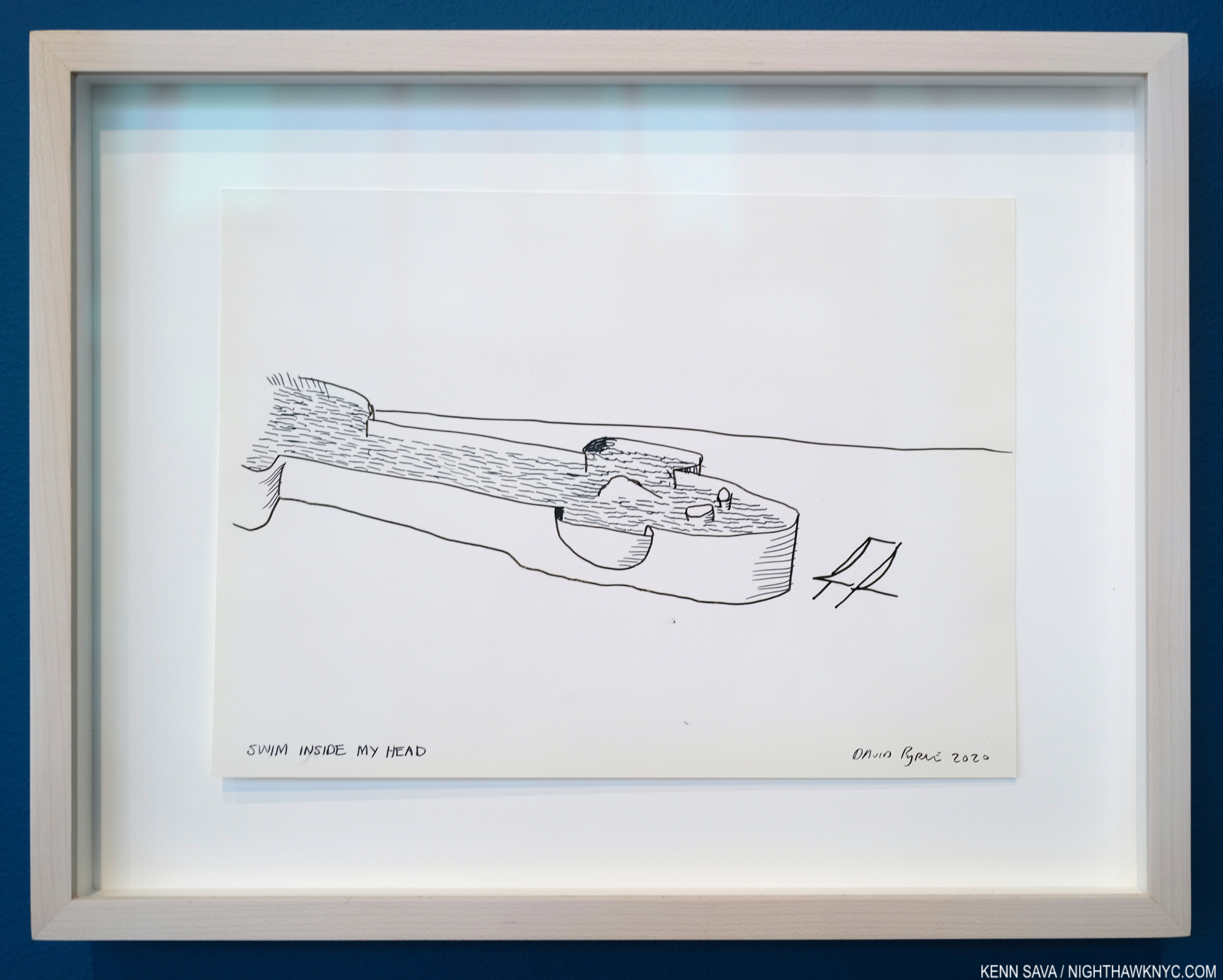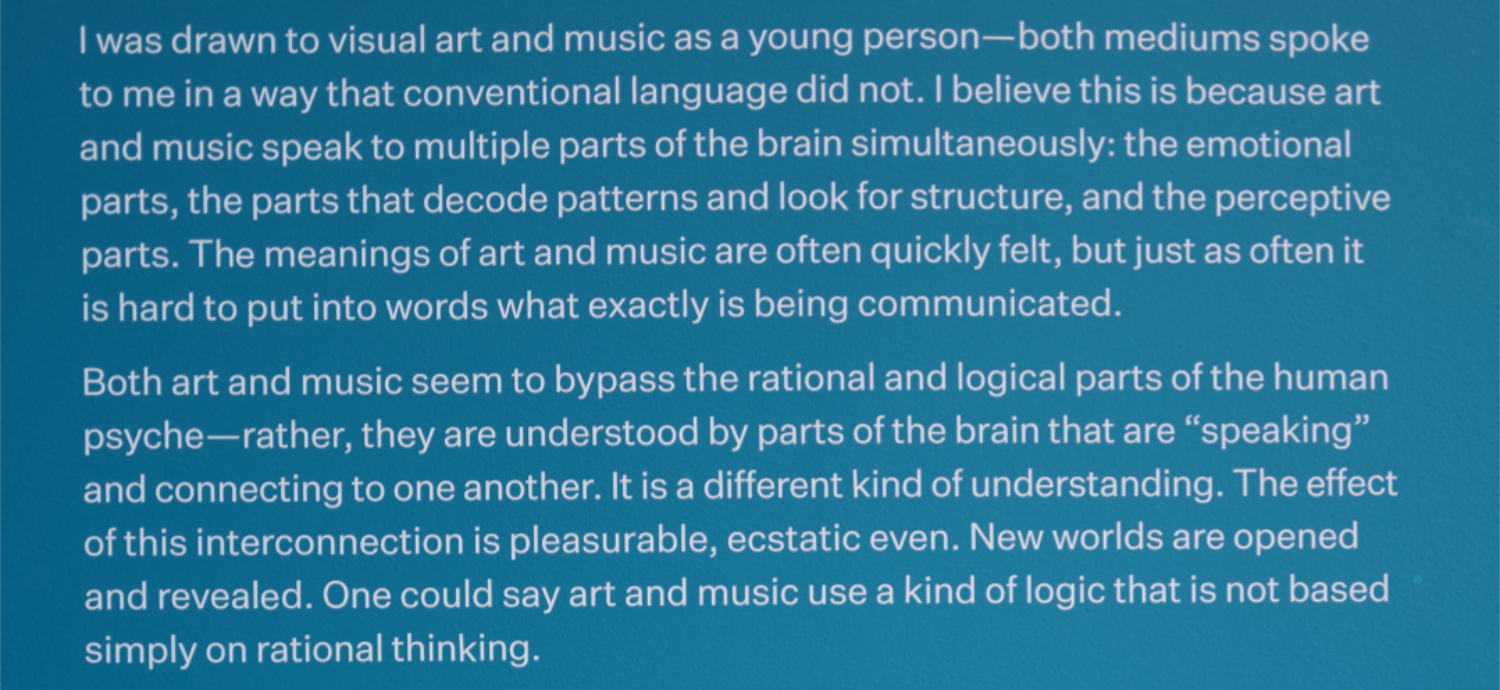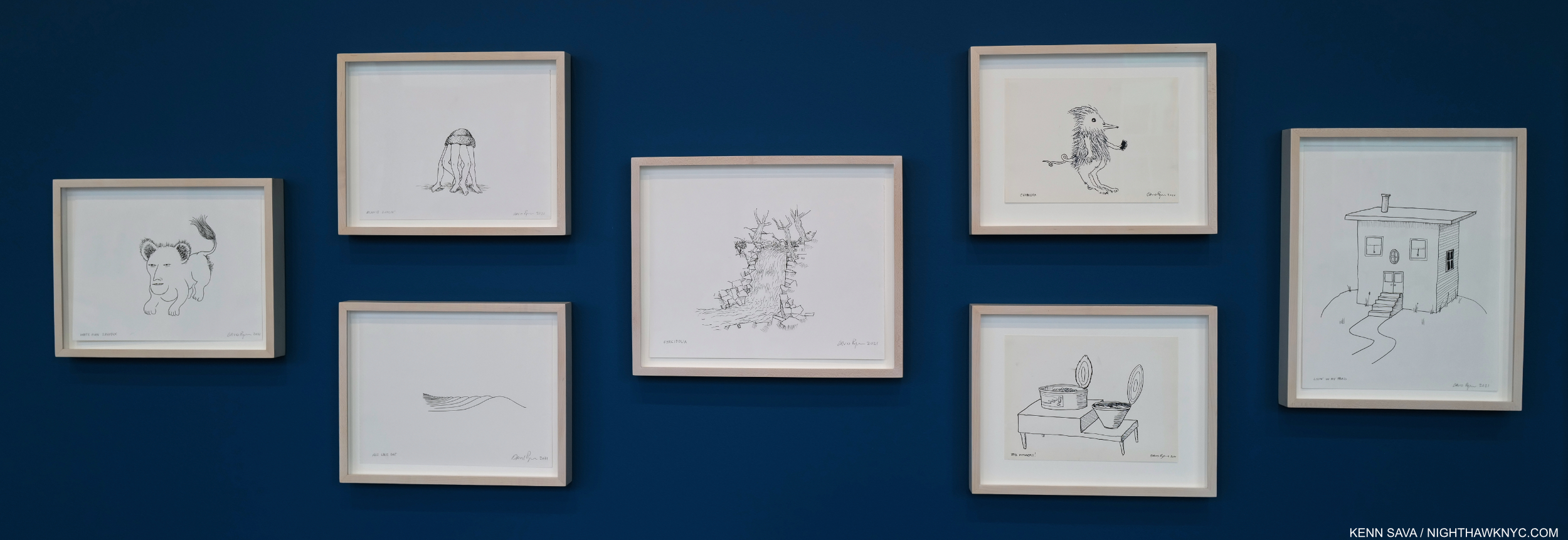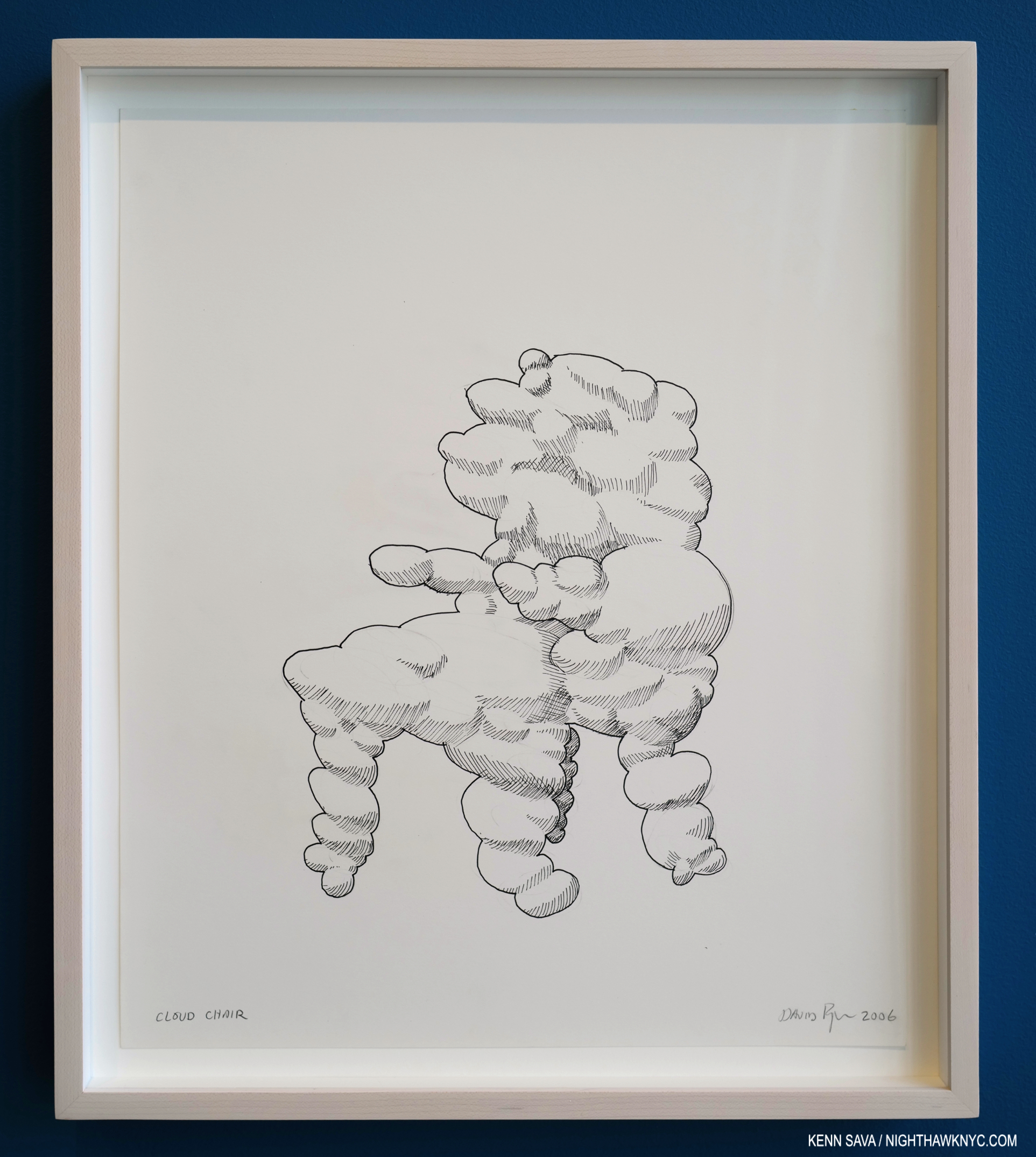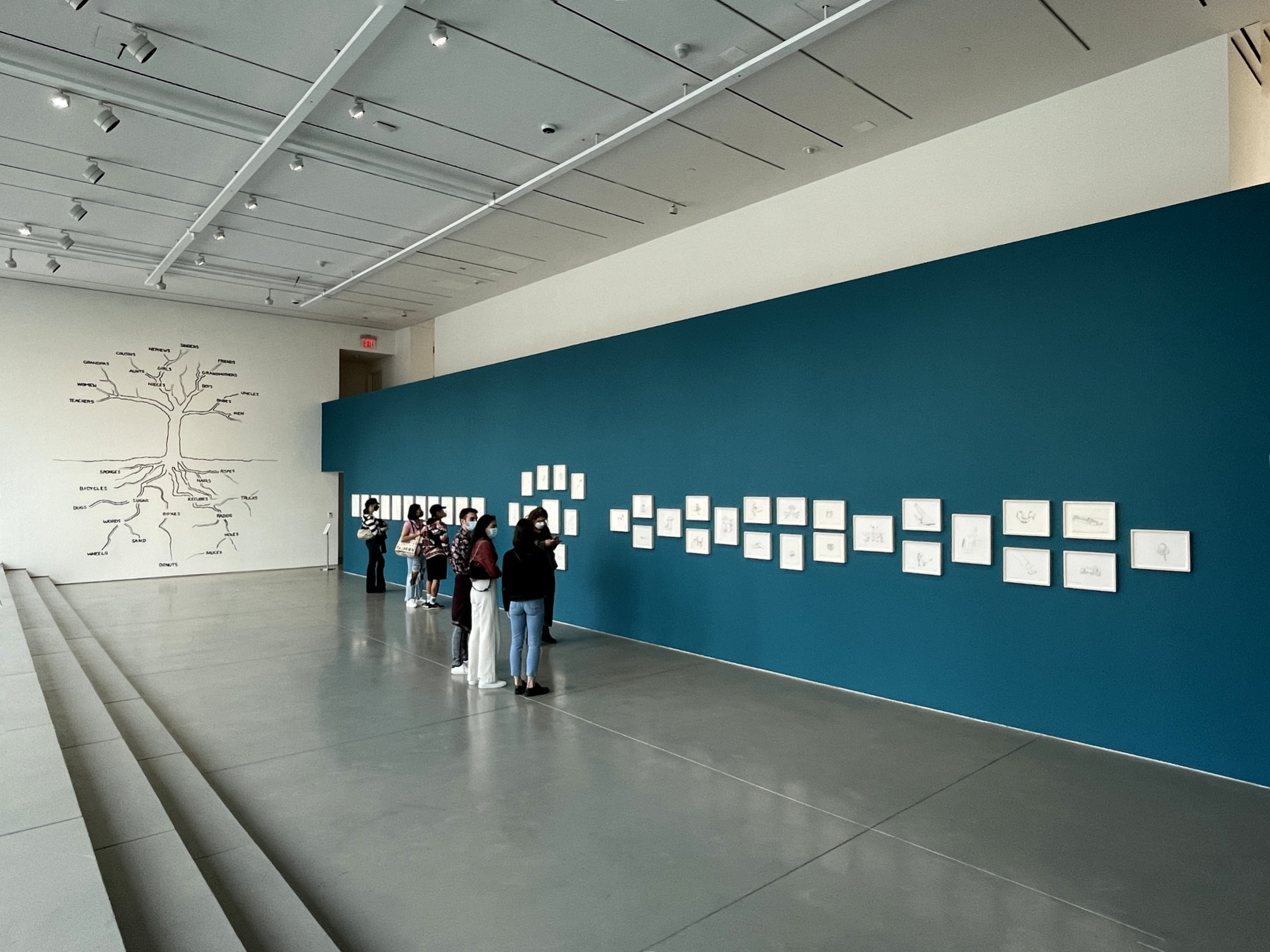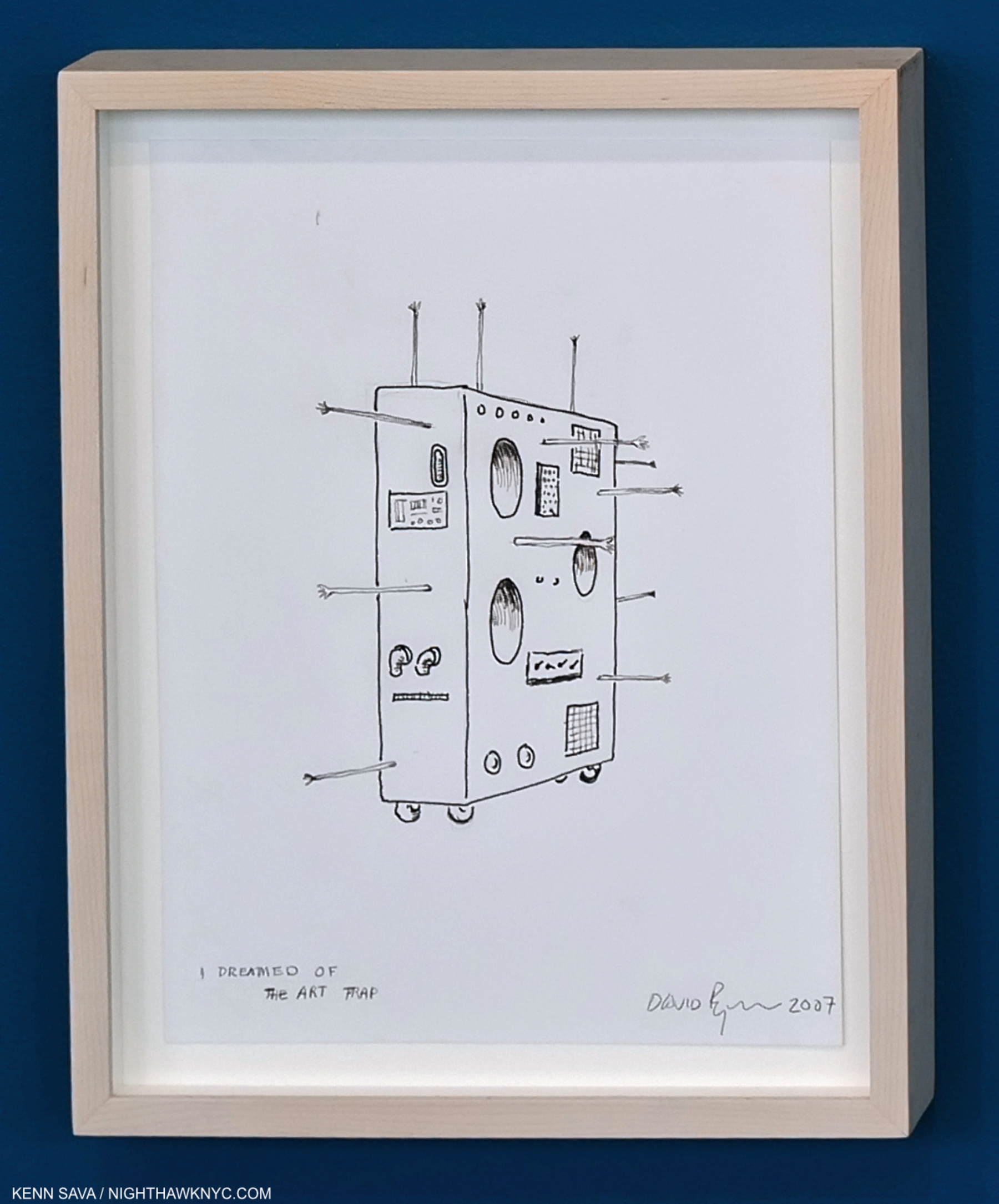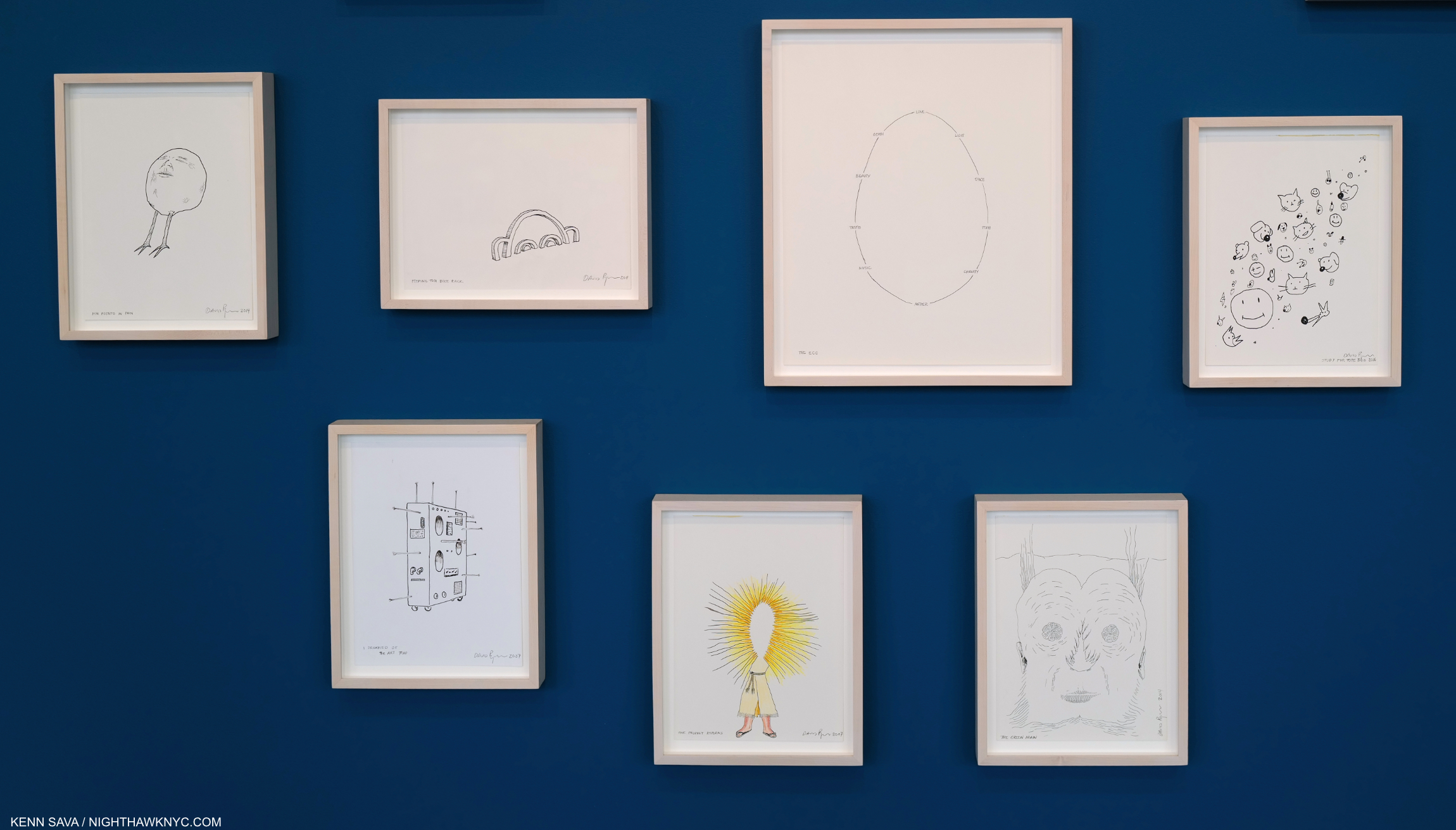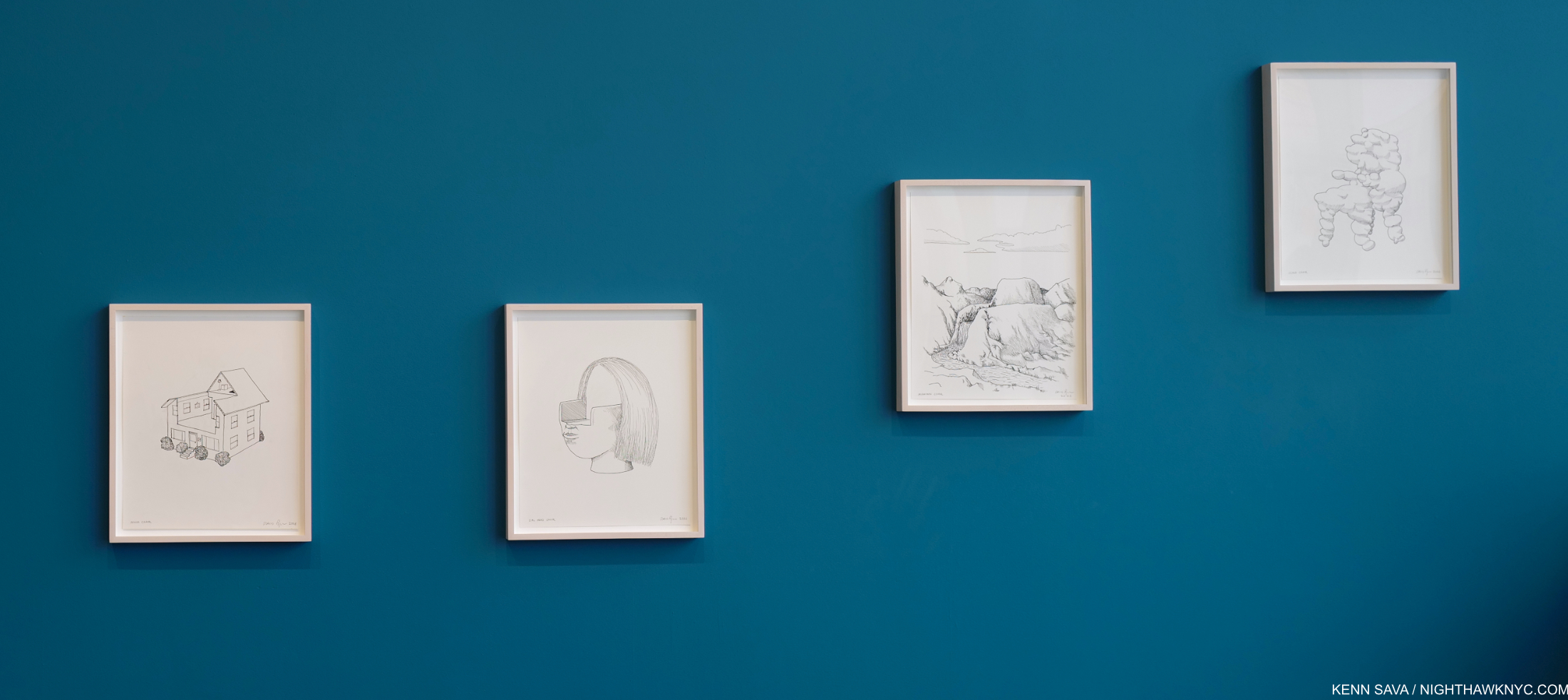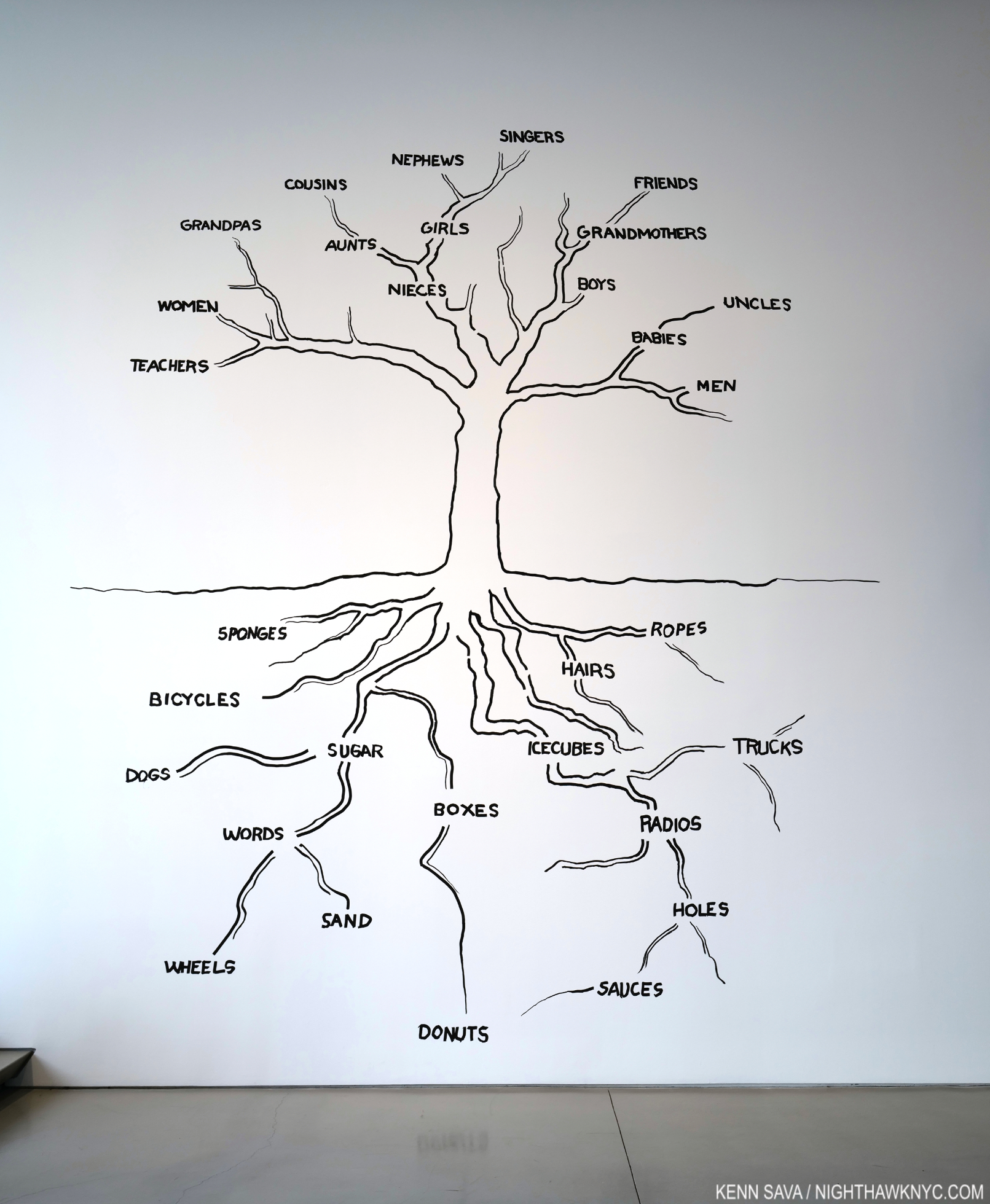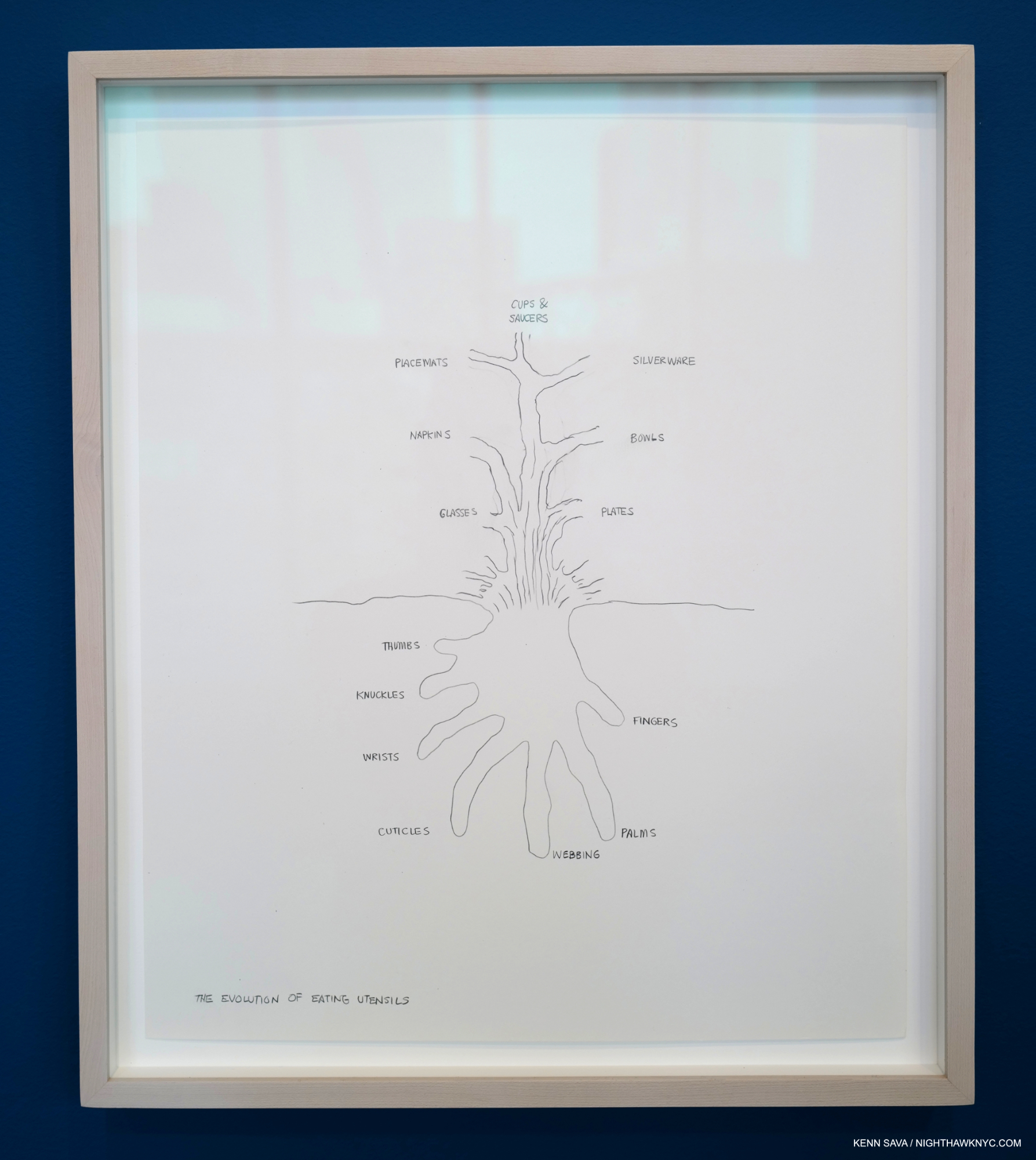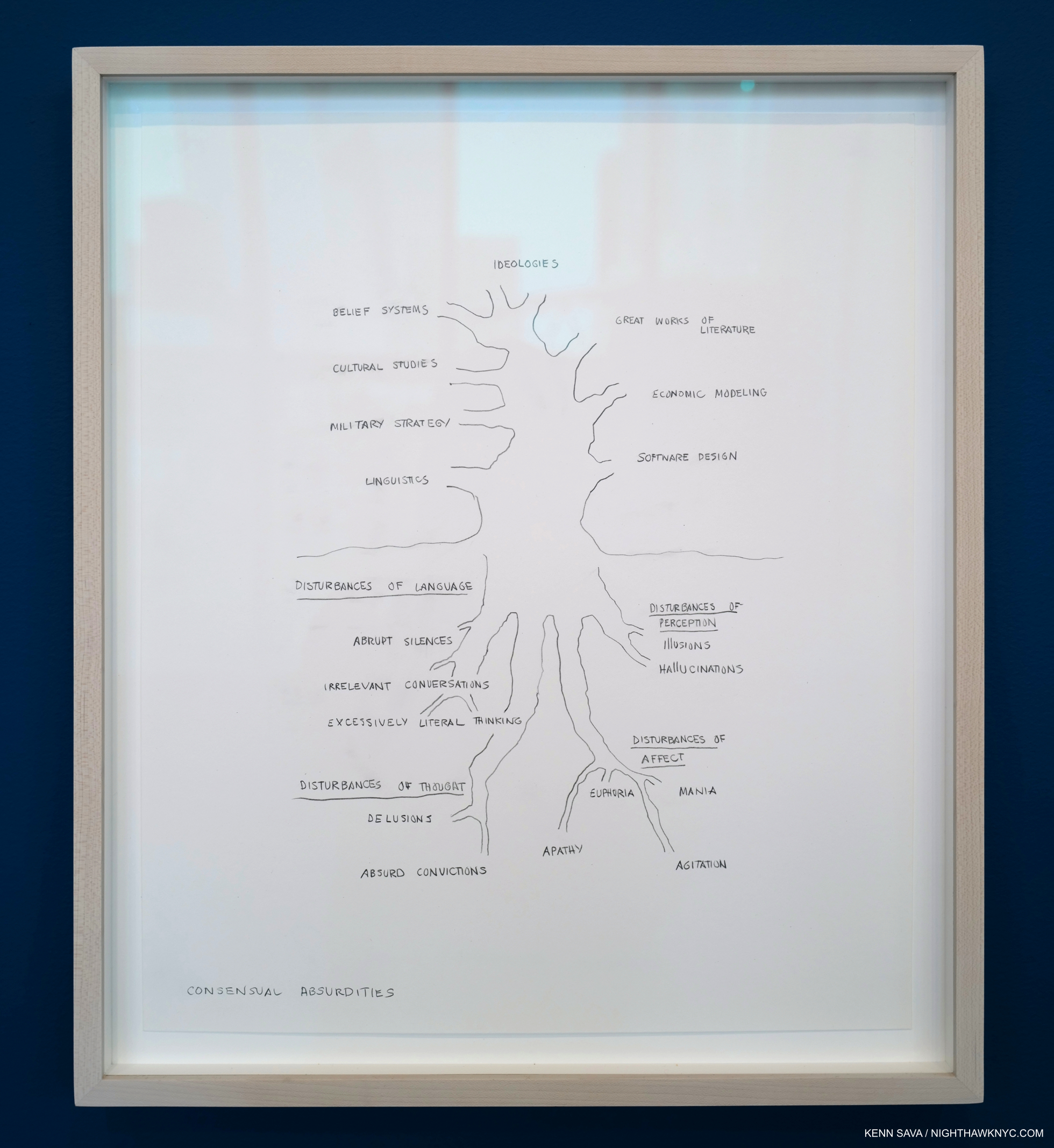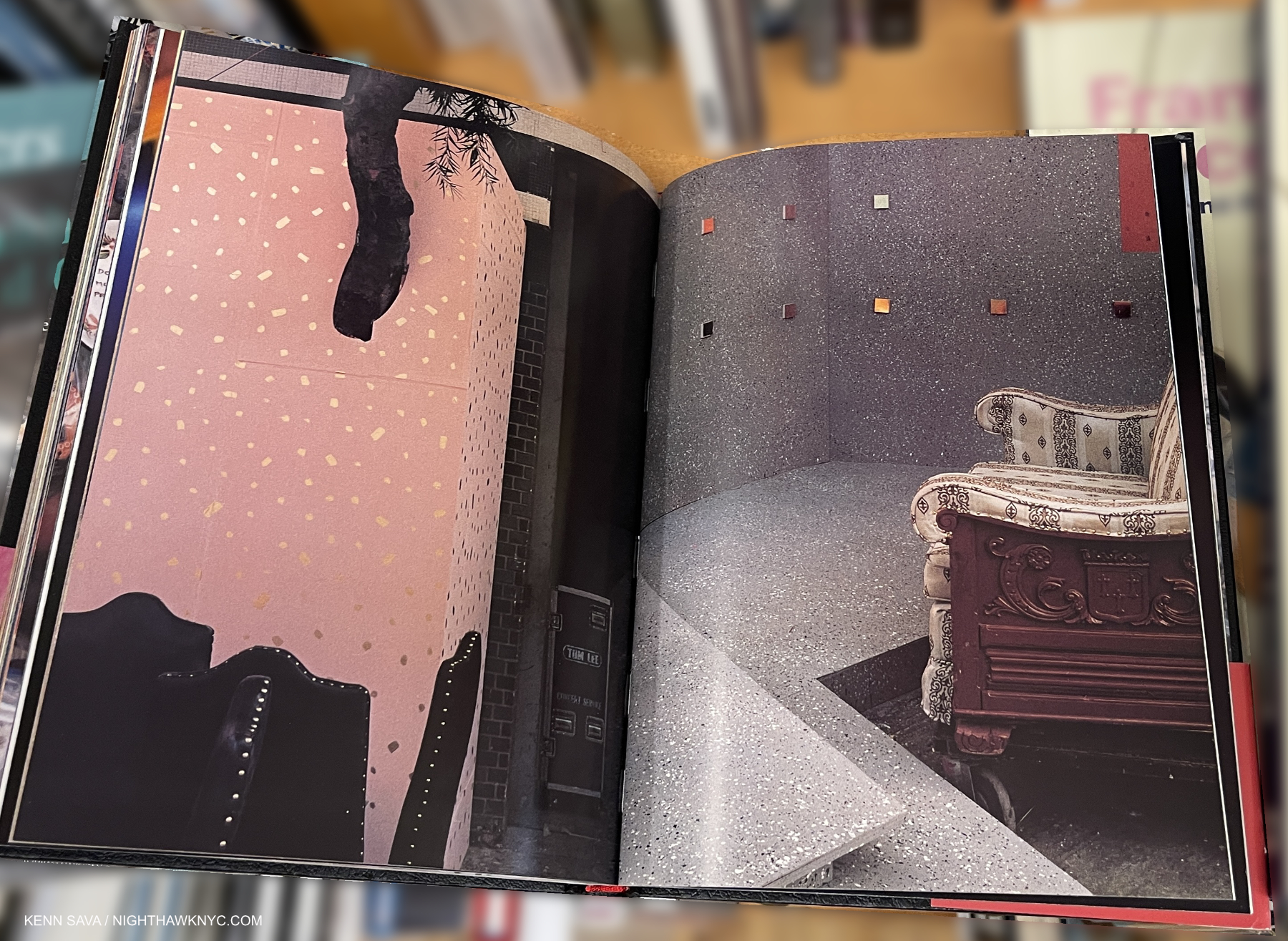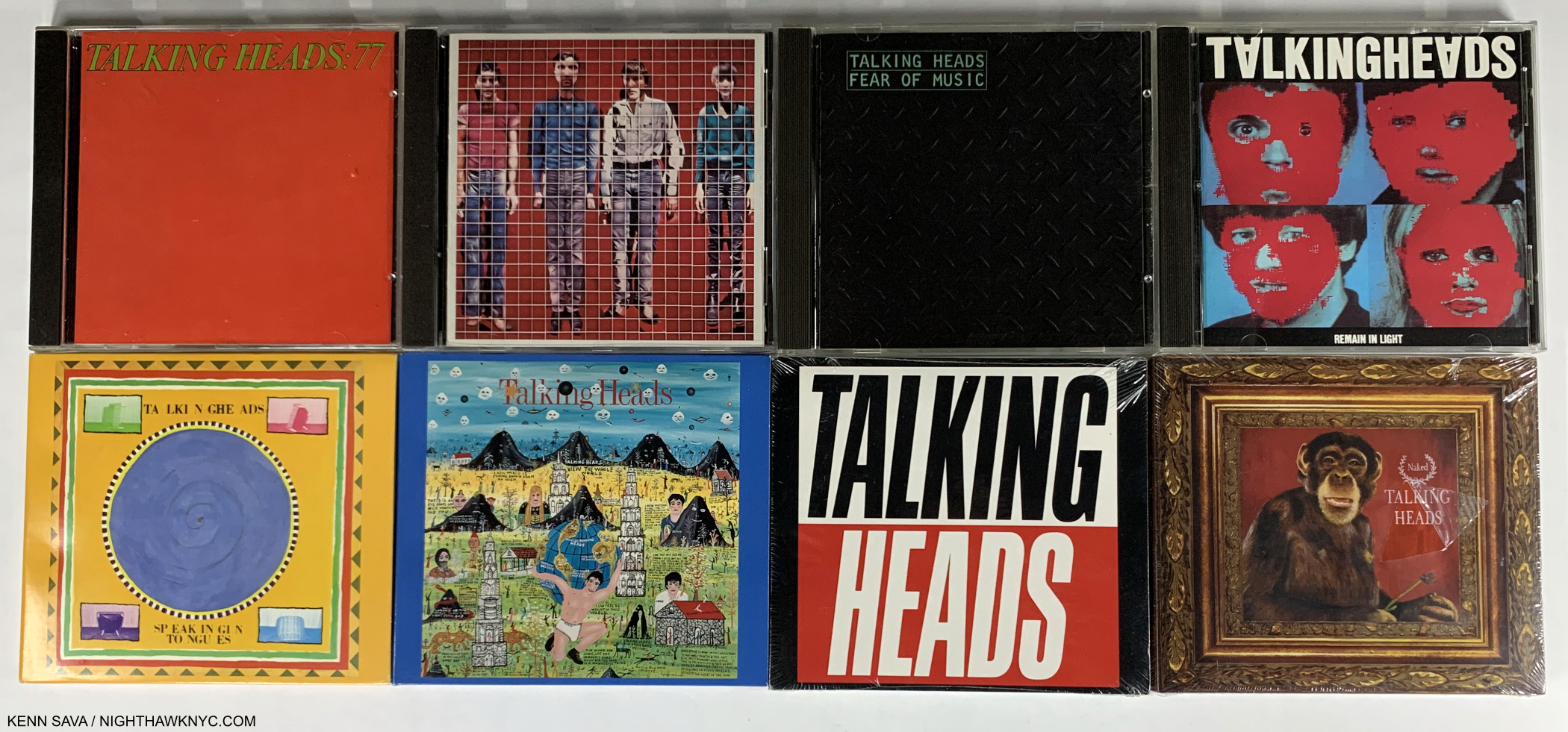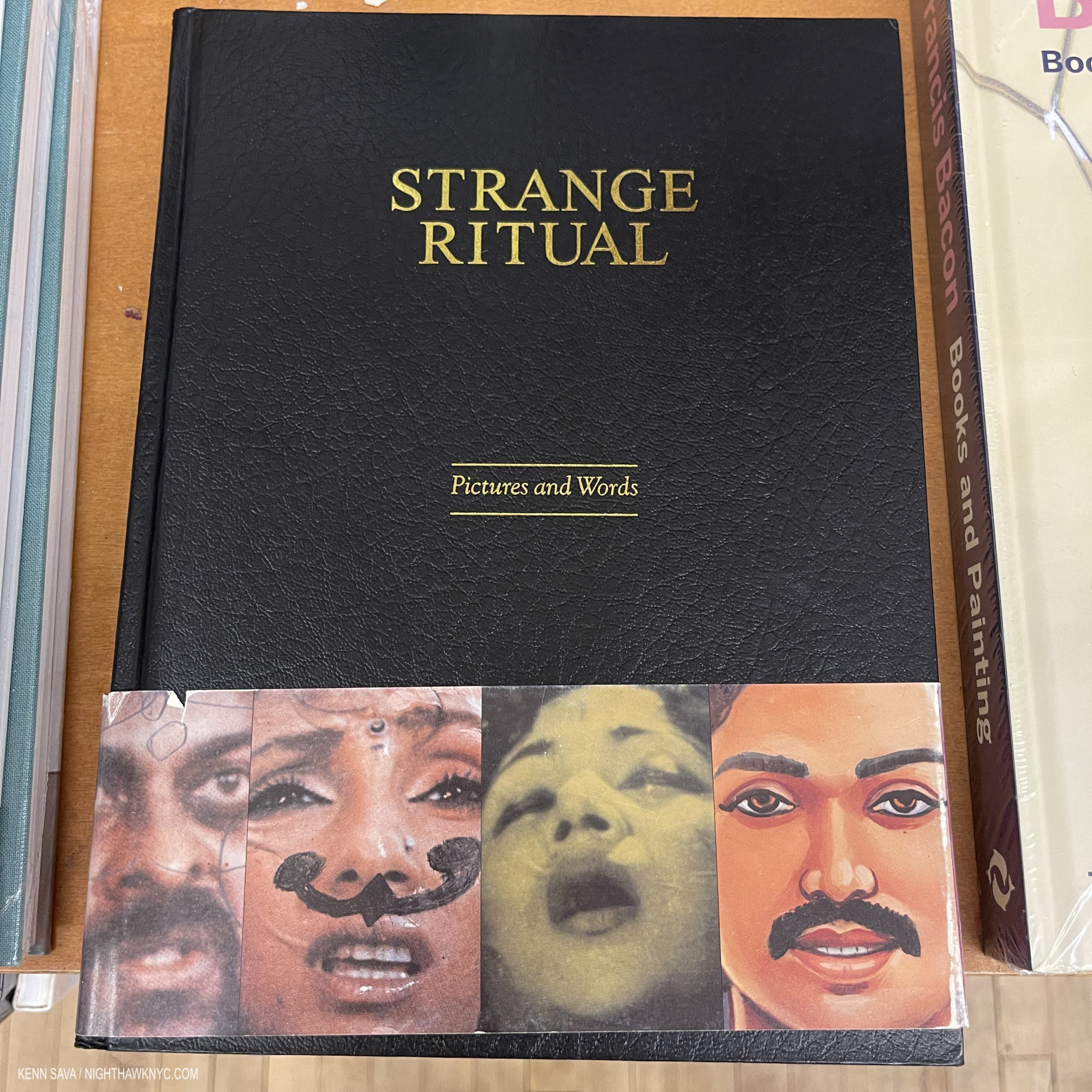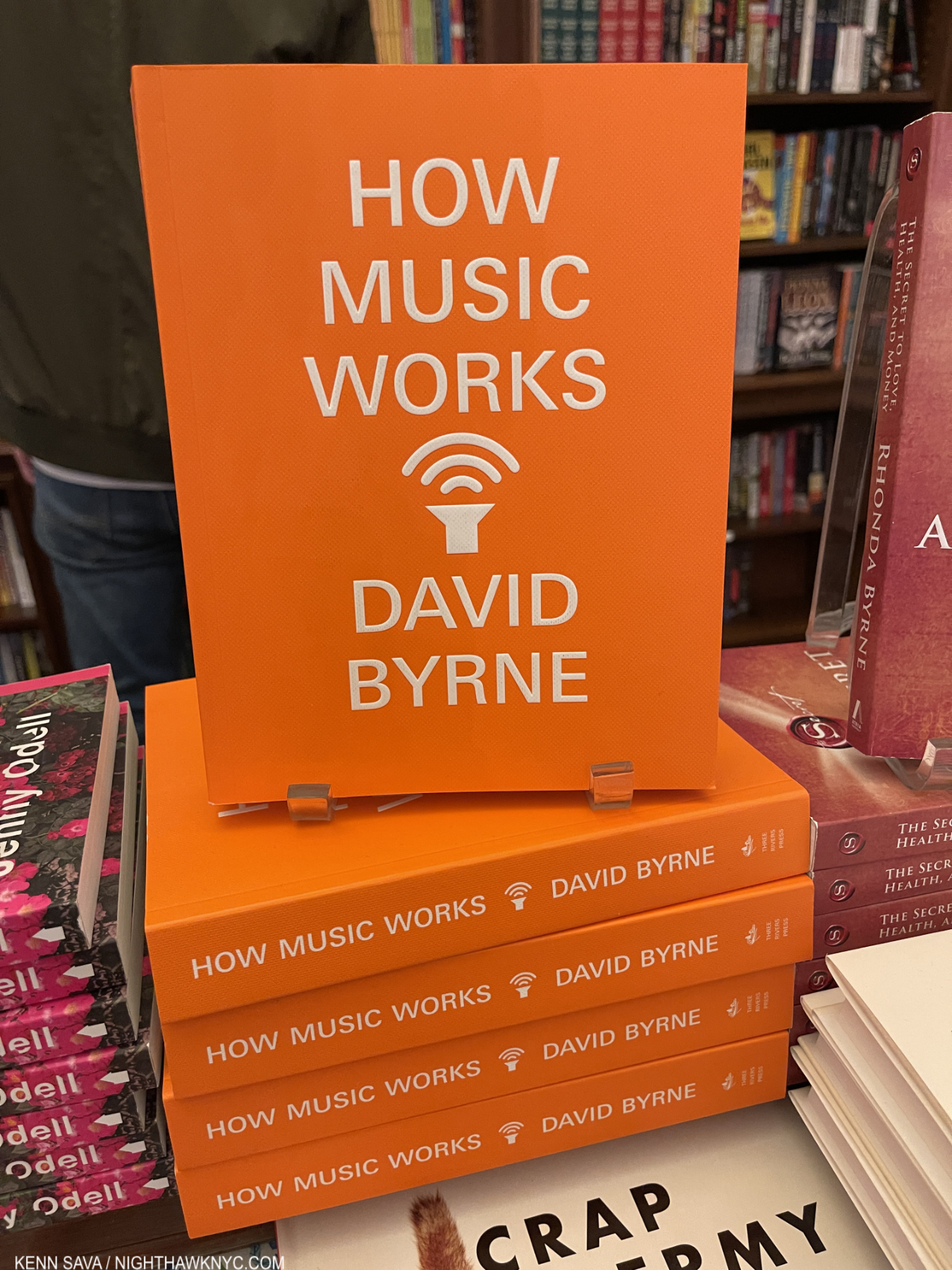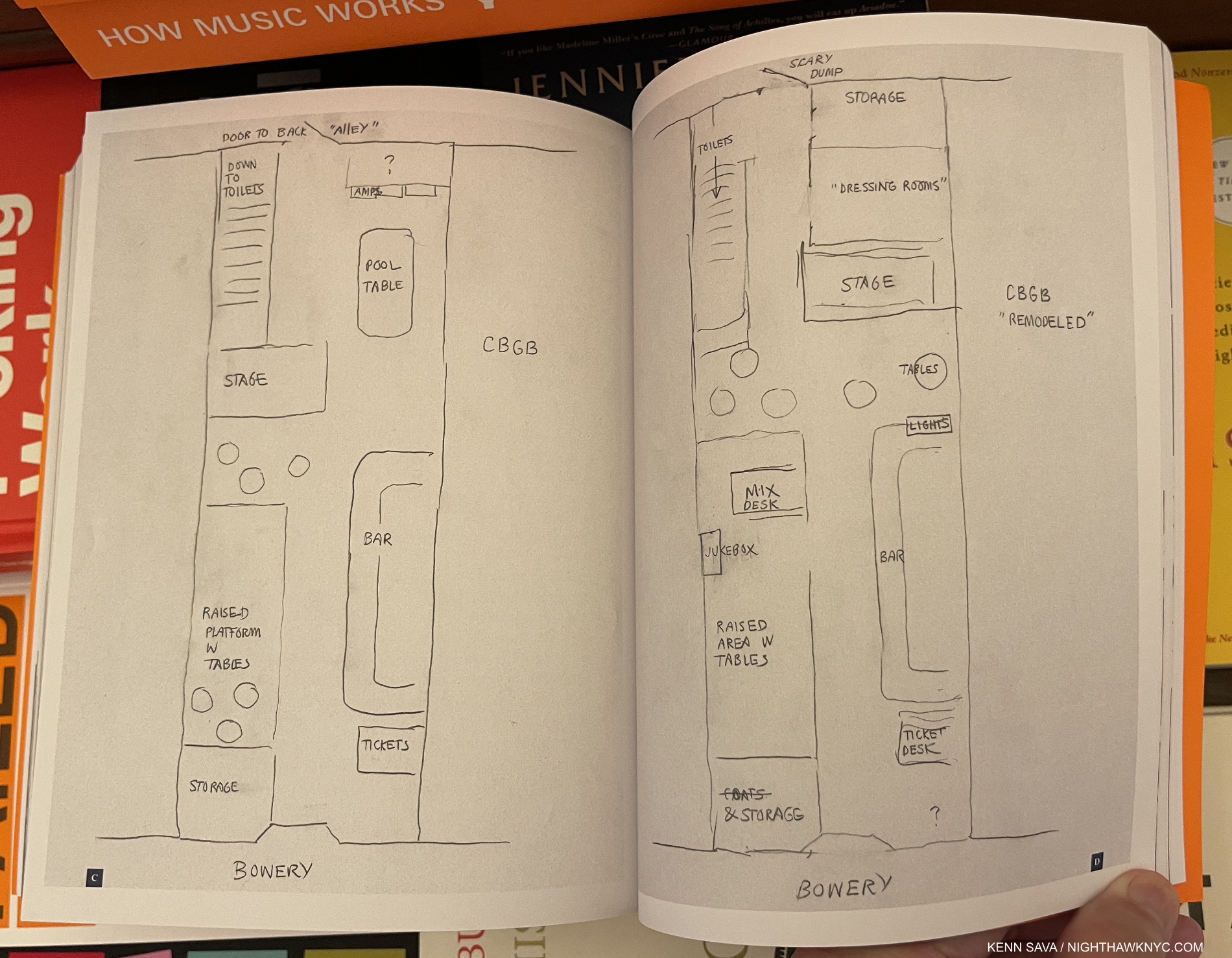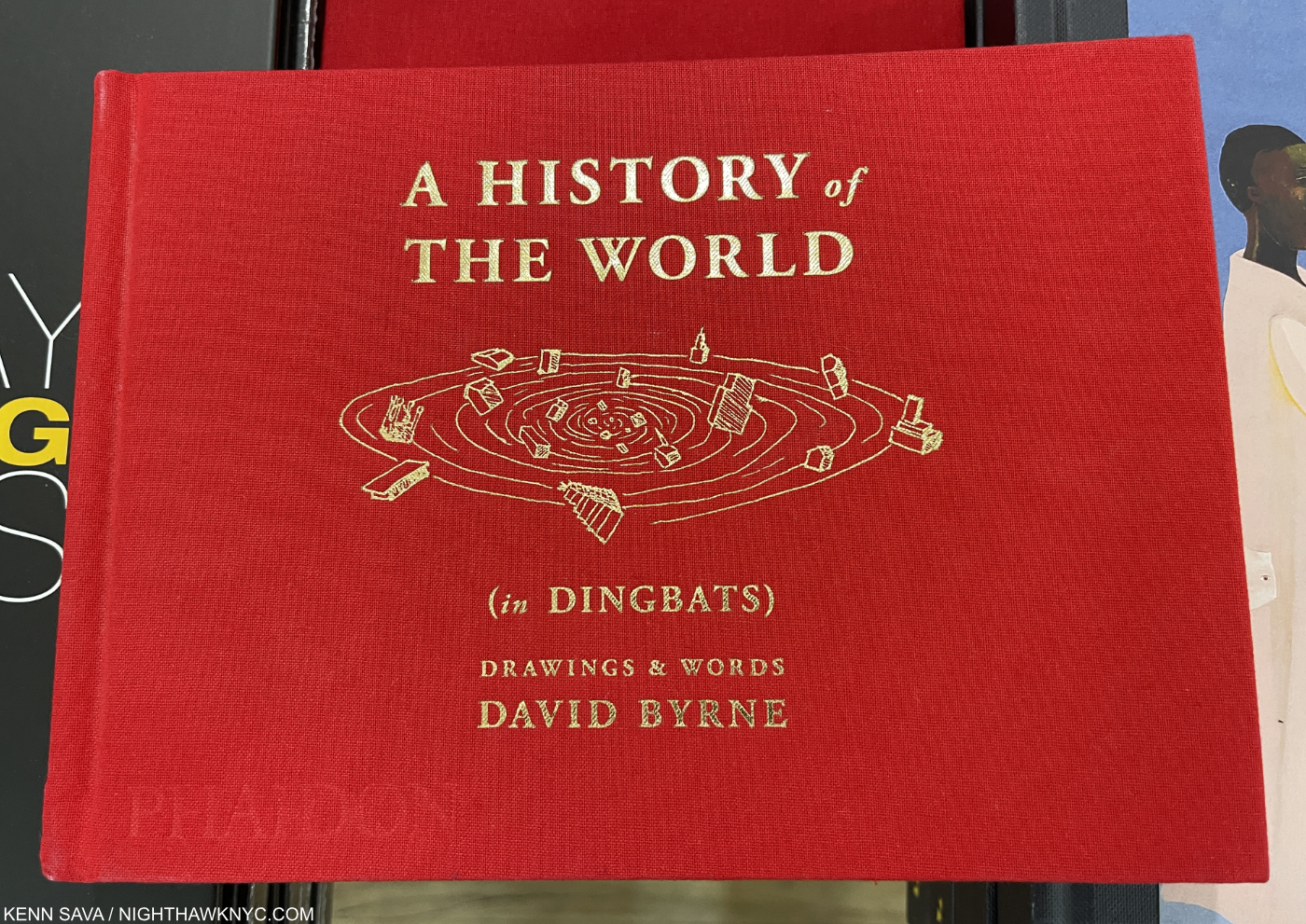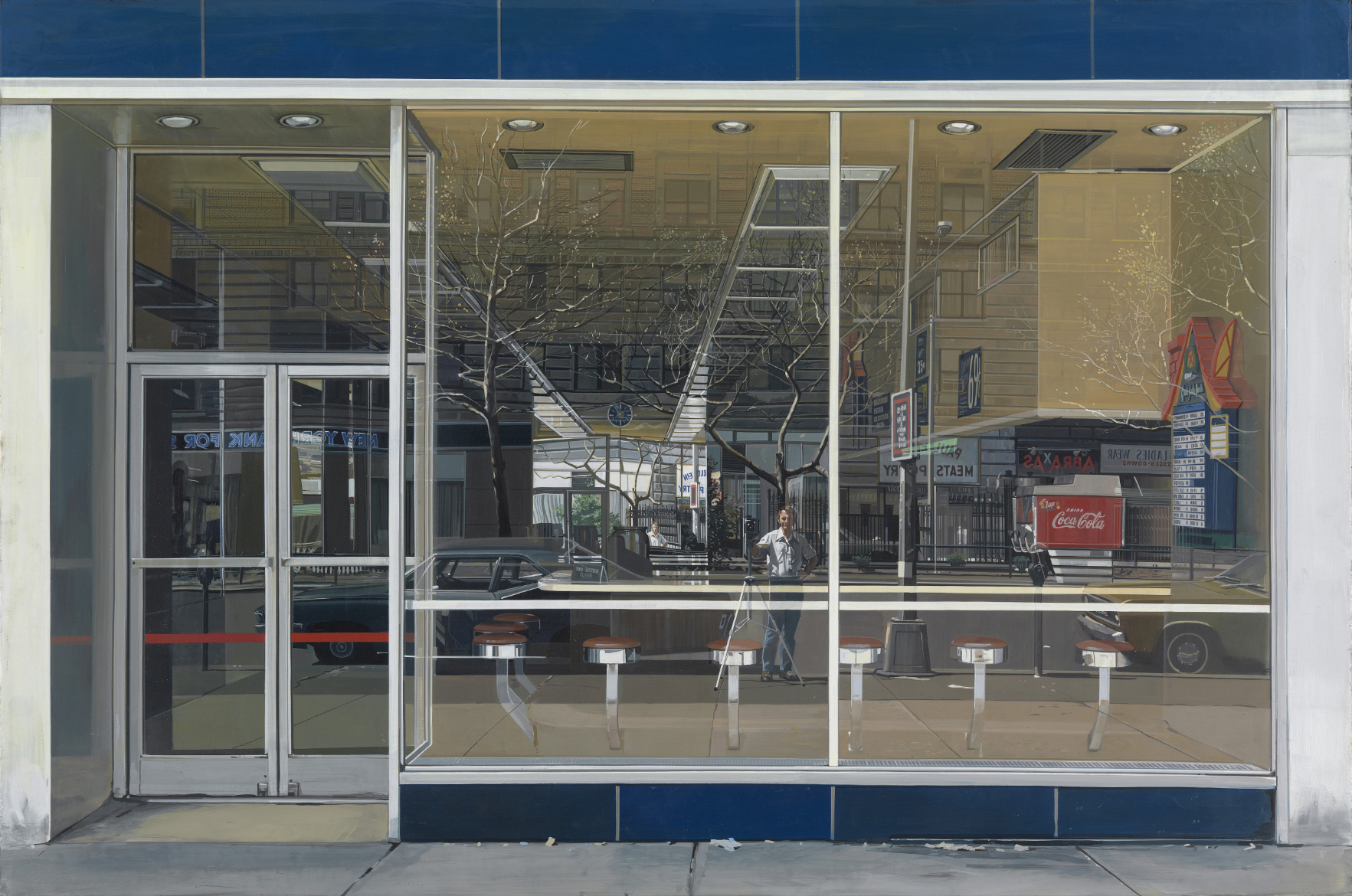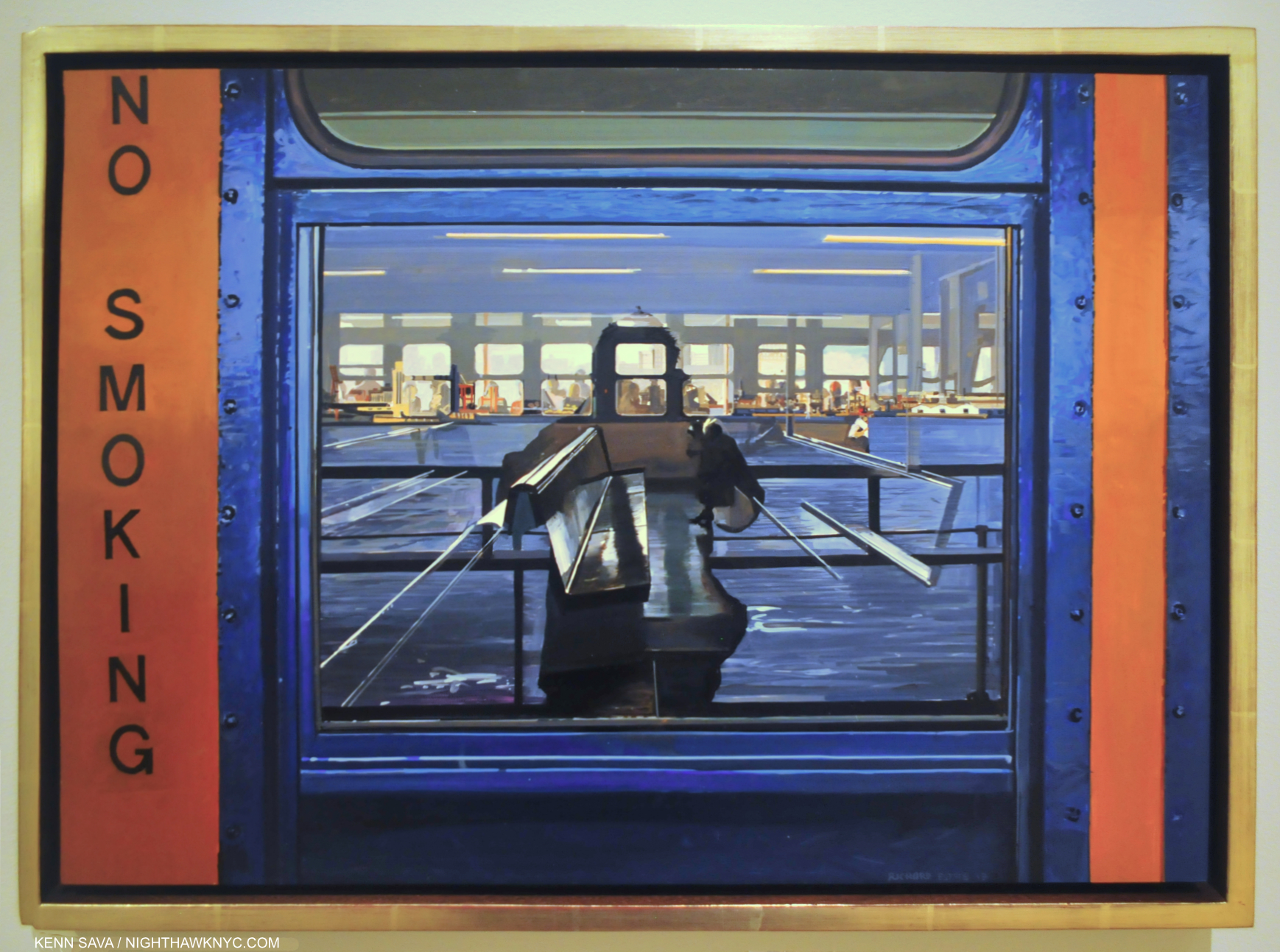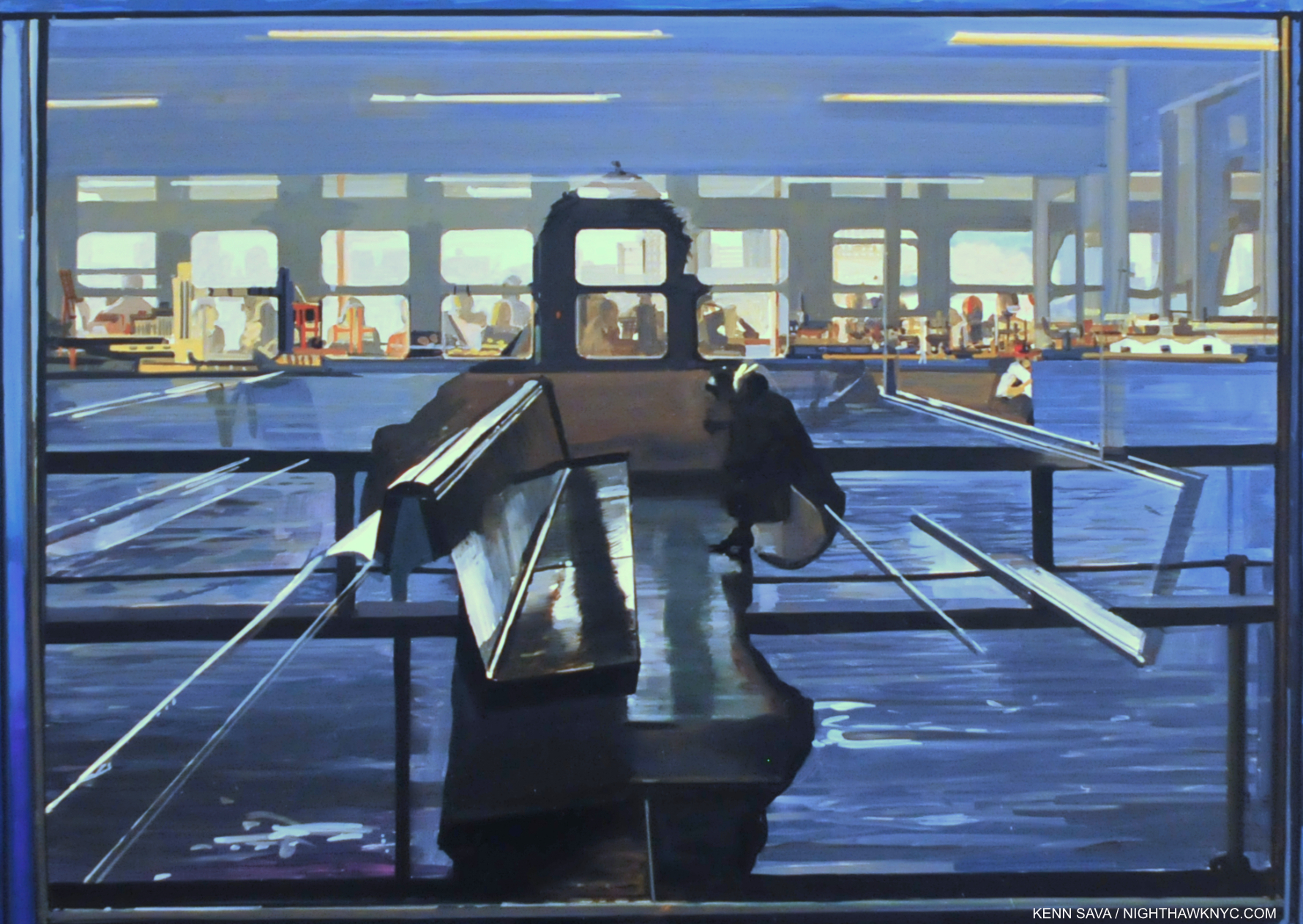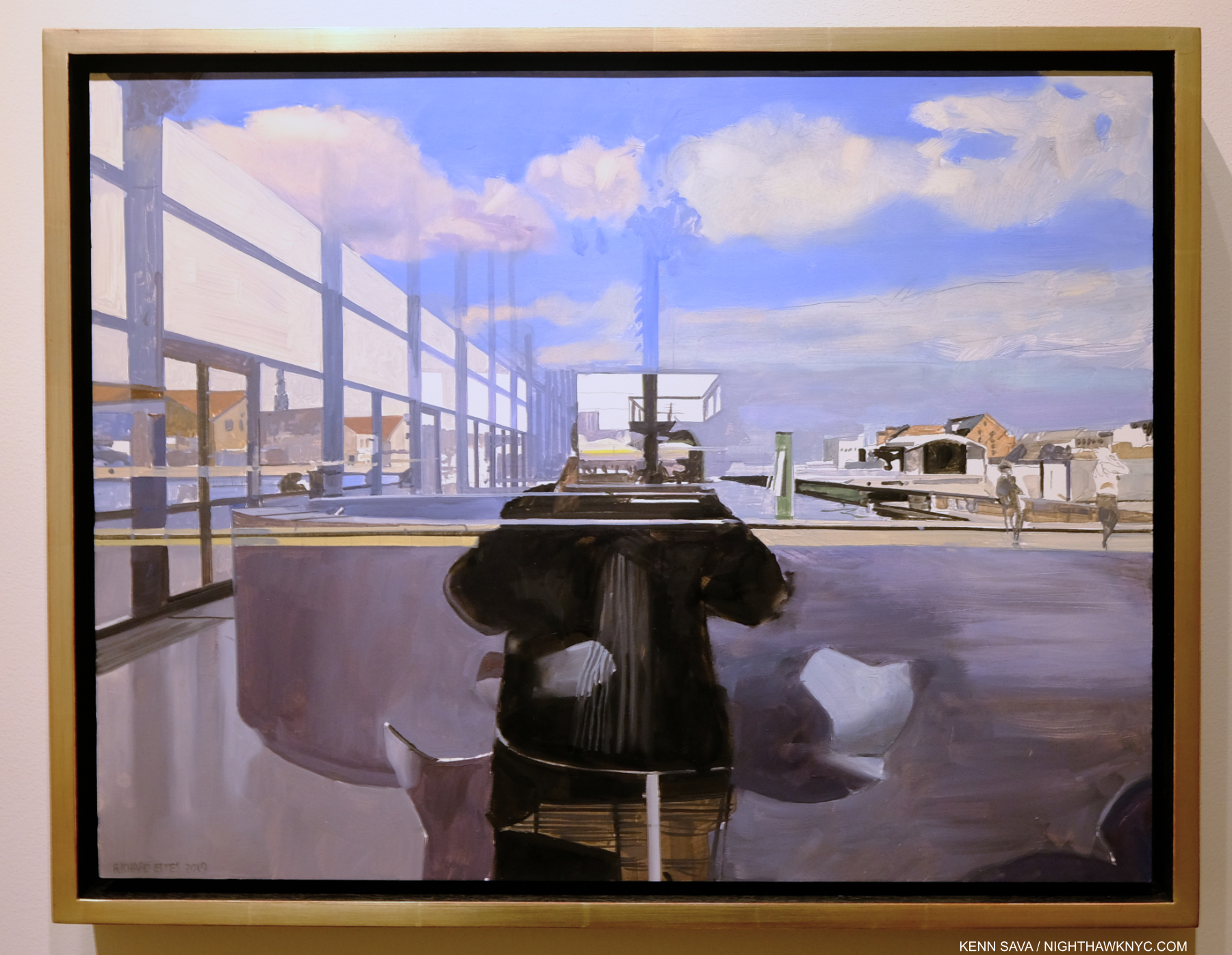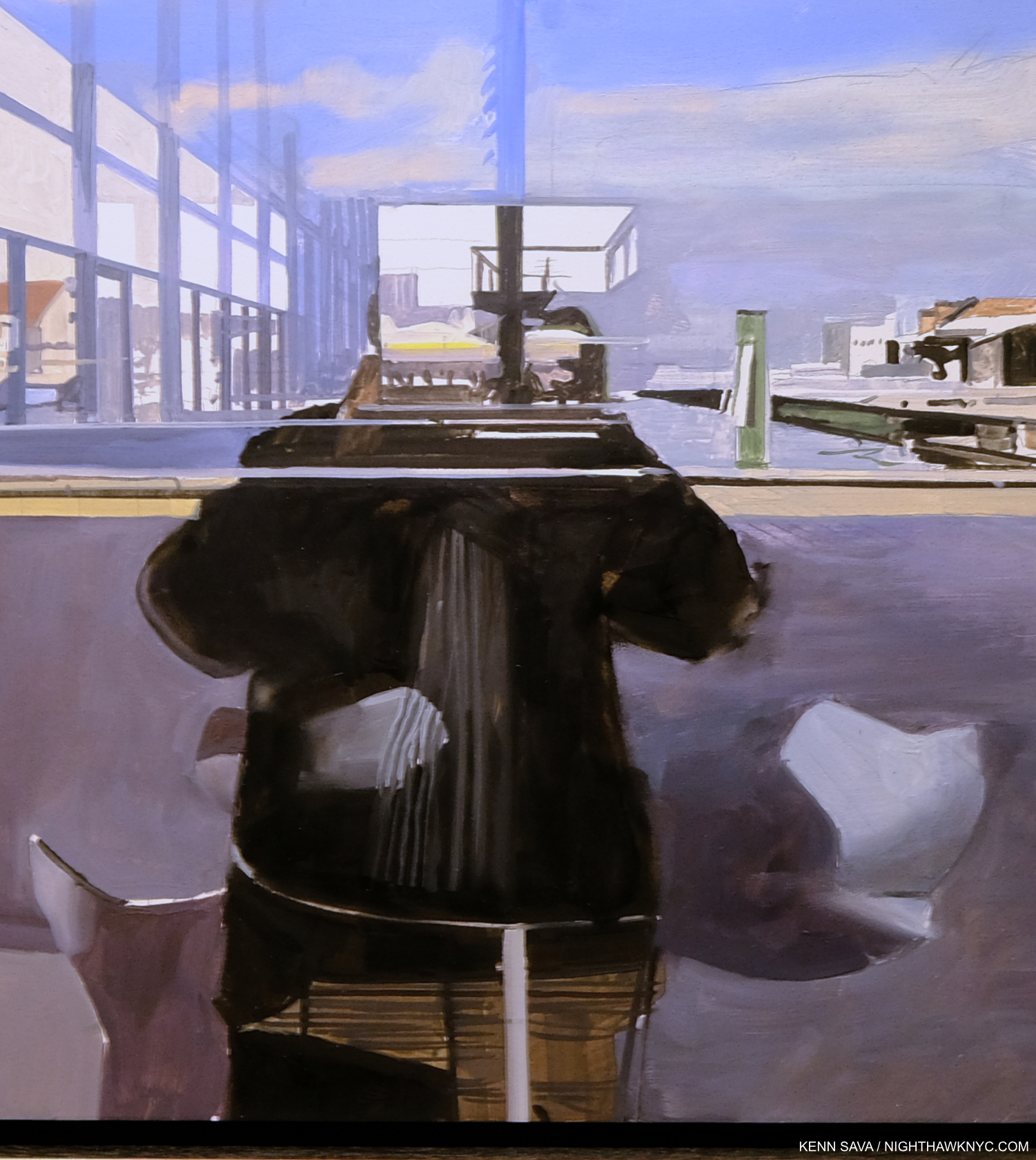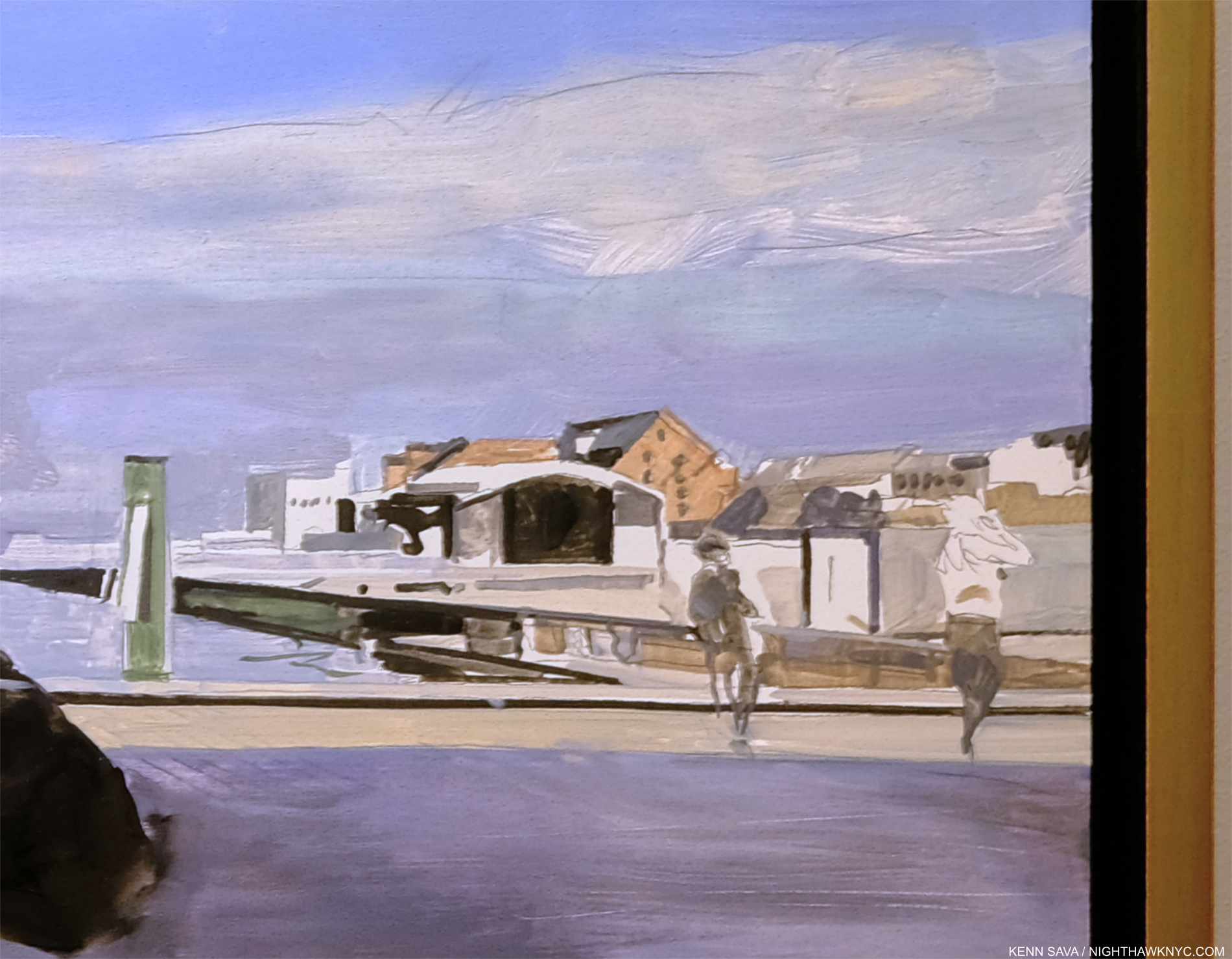This site is Free & Ad-Free! If you find this piece worthwhile, please donate via PayPal to support it & independent Art writing. You can also support it by buying Art & books! Details at the end. Thank you.
Written & Photographed by Kenn Sava
Show Seen: Jean-Michel Basquiat: King Pleasure
King Pleasure is now a ghost, a shadowy figure in Jazz history. Born Clarence Beeks in Tennessee in 1922, one night in the early 1950s he heard the great Eddie Jefferson sing lyrics he (Mr. Jefferson) had written to James Moody’s recorded tenor saxophone solo on “I’m in the Mood for Love.” Putting words to a recorded, improvised, solo was something no one had done before.
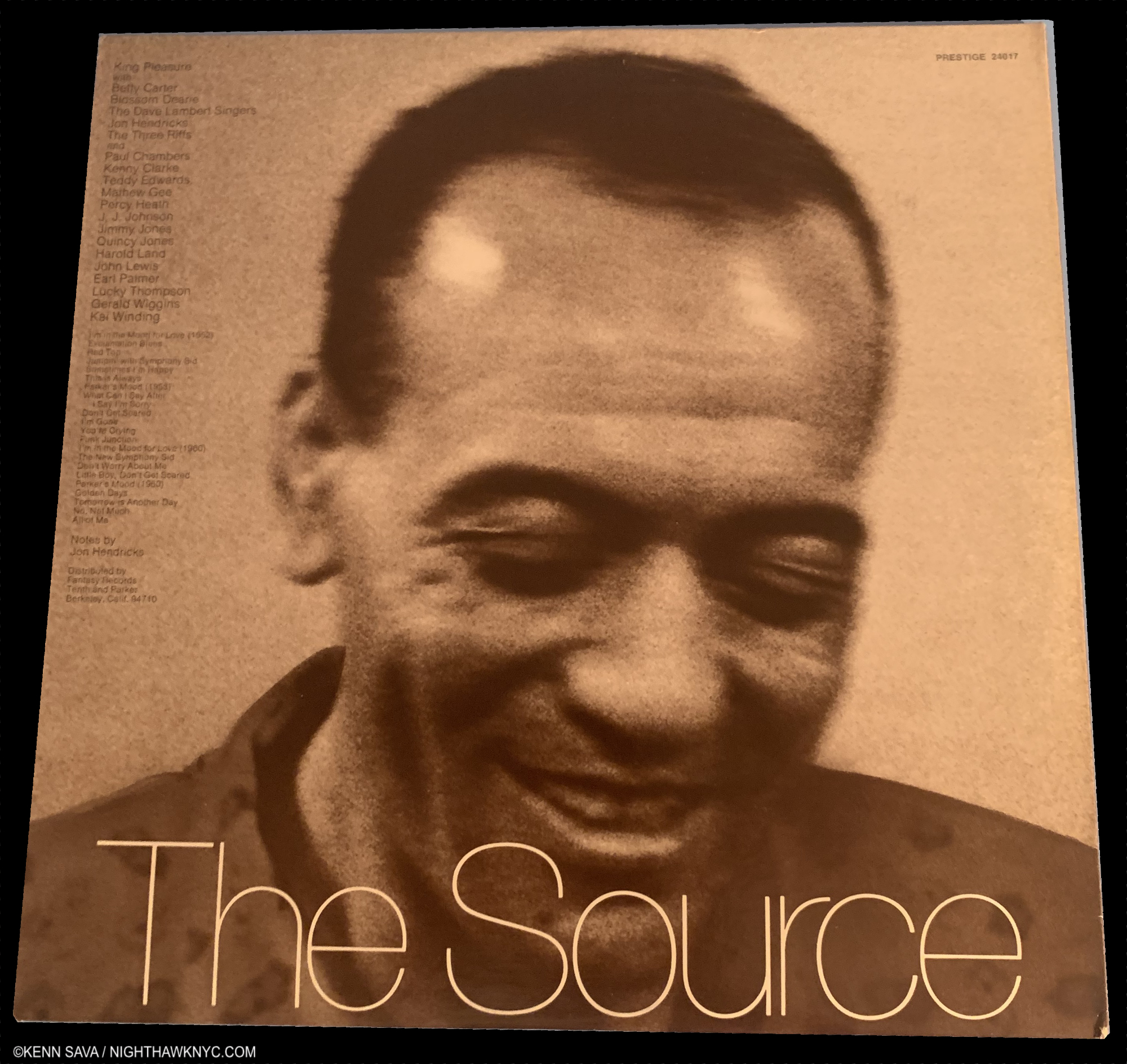
Clarence Beeks, aka King Pleasure (seen here in a rare Photo on the back of a rereleased Lp in my collection), smiled all the way to the bank. In spite of the record company labelling, Eddie Jefferson was HIS source.
King Pleasure was so taken with it, he learned it himself, brought it to NYC, recorded it, and had a hit with it in 1952 (i.e. he stole it). Mr. Pleasure achieved the fame that escaped Eddie Jefferson, who continued to set lyrics to Jazz solos until he was tragically shot and killed as he left a nightclub one night in May, 1979. He bemoaned Mr. Pleasure’s theft, but said “…in a way it opened it up for me1.” Still, the beauty of Mr. Pleasure’s and Mr. Jefferson’s records endure to charm listeners to this day- as they, apparently, did Jean-Michel Basquiat (J-MB henceforth).
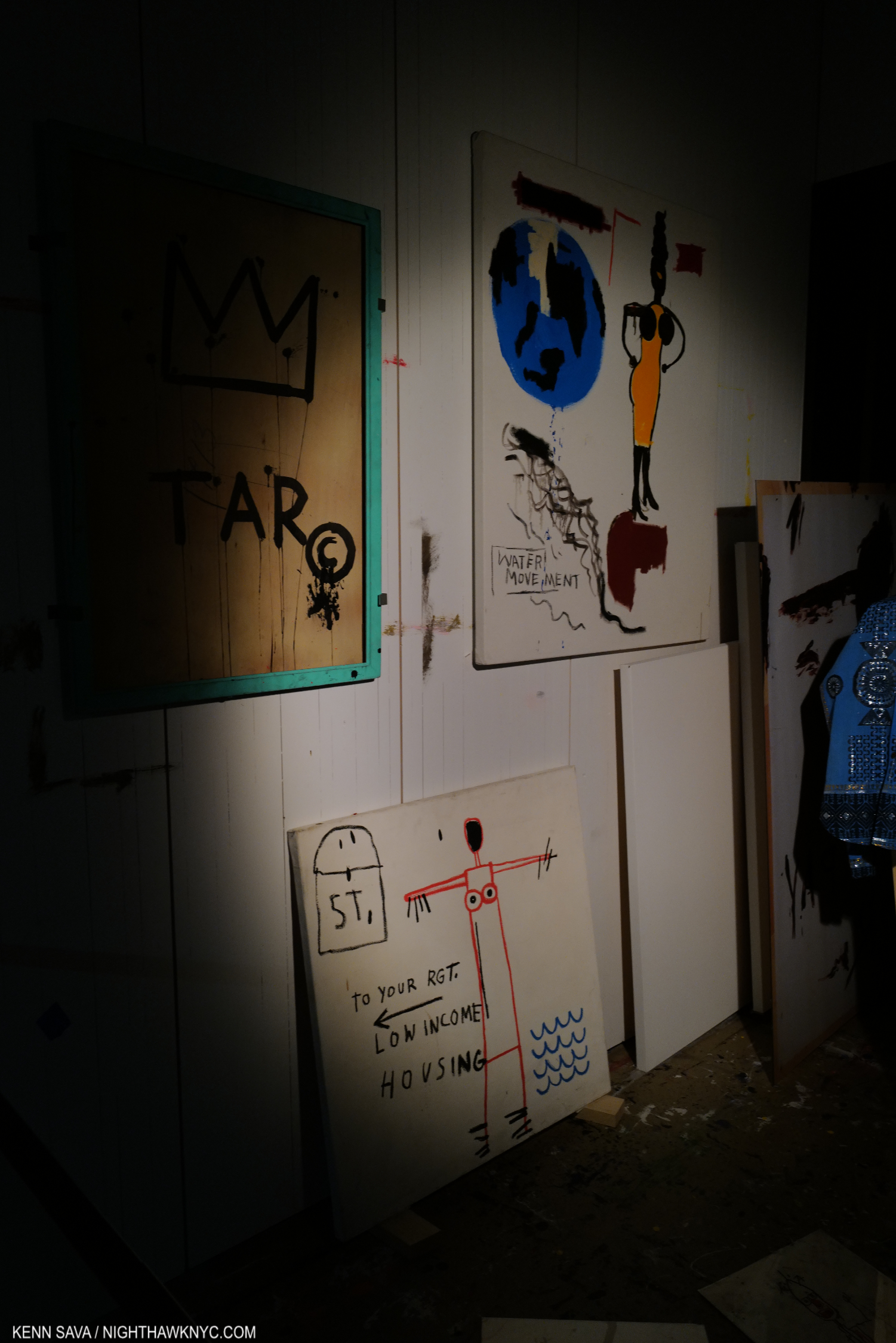
A peak inside a previously unseen world. Partial installation view of the large area devoted to a recreation of Jean-Michel Basquiat’s Great Jones Street Studio as seen in Jean-Michel Basquiat: King Pleasure.
As I walked through the doors of Jean-Michel Basquiat: King Pleasure (J-MB: KP hence) on the far west side on an April Tuesday during the show’s first week, greeted by the wooden sign in the first Photo, I wondered how many of my fellow show-goers knew that the title of the show referred to a Basquiat Painting with the words “King Pleasure” on it, and that those words were the stage name of an actual person.
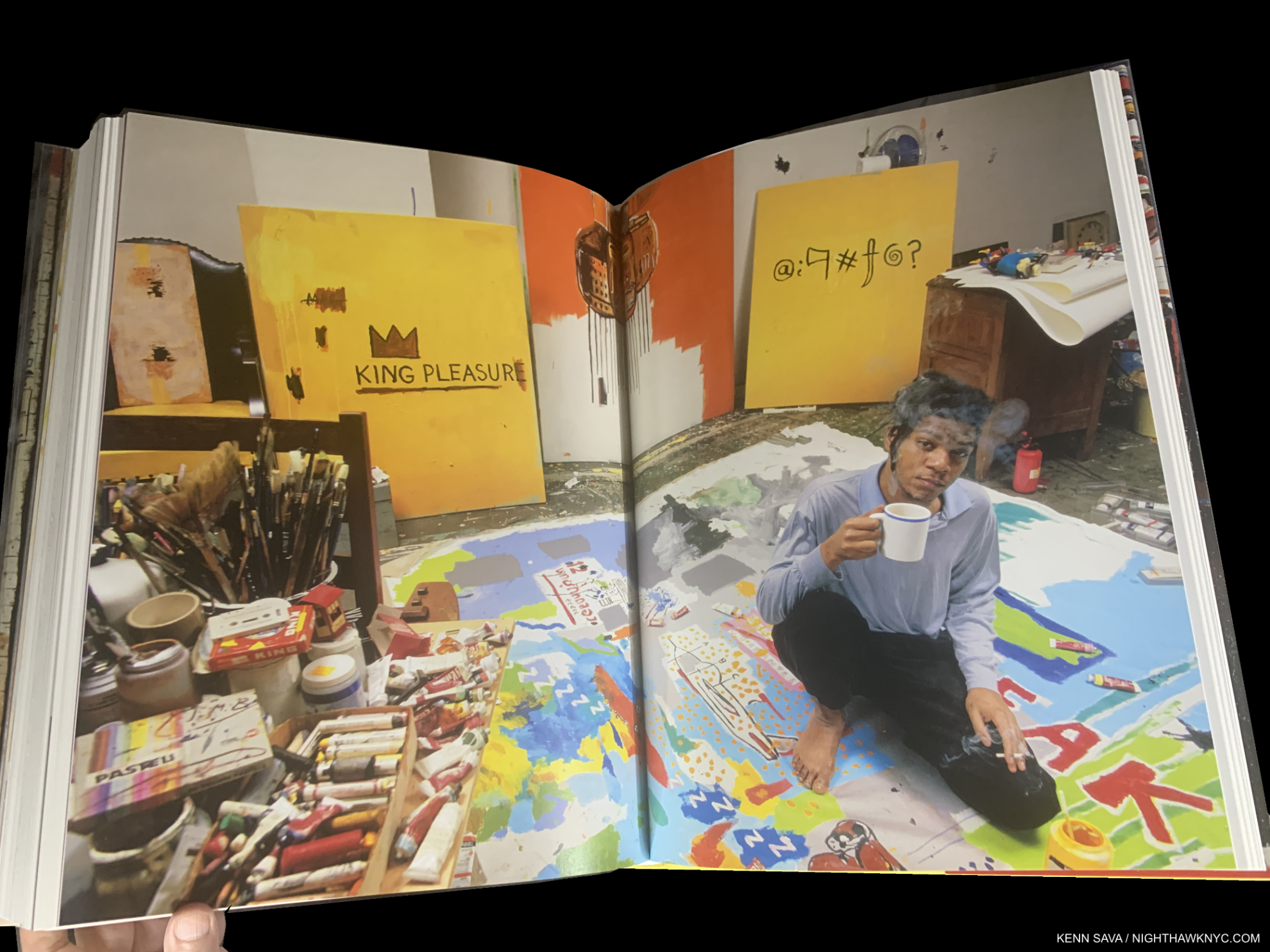
Jean-Michel Basquiat in a cloud of smoke in his Great Jones Street Studio with his Painting, King Pleasure, which the show is named after, partially seen in the back, left of center, in 1987, the year he Painted it. As near as I can tell, it currently resides in a private collection- like most of J-MB’s major works. From the Basquiat Taschen XXL, P.442-3.
As I left Jean-Michel Basquiat: King Pleasure, I wondered how many visitors noticed the Painting the show was named for was not included in it!
So, if the Painting is not in it, what’s the point of naming the show Jean-Michel Basquiat: King Pleasure? Is it a riff on the words “king” and “pleasure?” While there were some major Baquiat works on view, most of the “200 never-before-seen pieces” advertised2 were not “major,” in my opinion. So, the show wasn’t the “king” of Basquiat “pleasure.” Of the NINE major Basquiat shows I’ve seen (which is more than the total shows I’ve seen by ANY other Artist. It stuns me to realize this. I wasn’t interested in his work for most of my life!3), the 2019 Brant’s Basquiat came the closest to that in my opinion. So, the name was borrowed from a Painting the Artist created but that is off in a private collection somewhere.
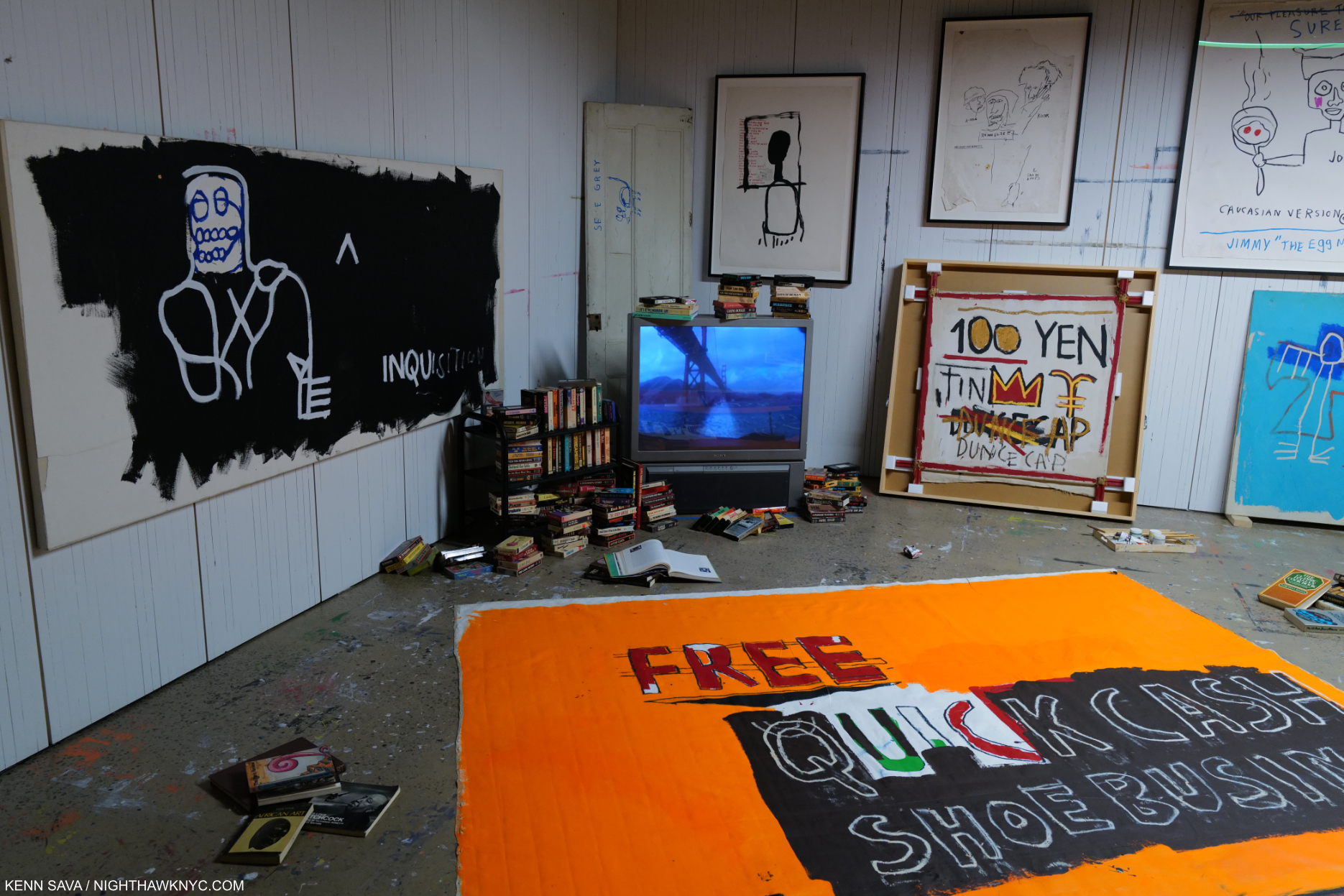
Partial installation view of the large area devoted to a recreation of J-MB’s Great Jones Street Studio, his final home. Quite a few pieces were installed in this large space which also included ephemera and (his, I assume) Artist’s supplies. From what I could make of them from behind that barrier, the pieces in this space were uneven in terms of quality. Showing them in the context of a studio space allows them license for possibly being “unfinished.”
A bit like King Pleasure, himself, borrowed “Moody’s Mood for Love” from Eddie Jefferson?
Though I didn’t count them, I’ll take the organizer’s word for it that the show included “200 never-before-seen pieces.” Being it opened 33 1/2 years after the Artist’s death, and given his level of popularity, it’s pretty remarkable there are that many never-before-seen pieces left. It goes without saying that the chance to finally see the previously unseen work J-MB left that is now in his family’s collection is a landmark opportunity for the countless fans of his work. The show was so well installed it had a museum exhibition-quality feel to it (though it was not installed in a museum). The entire exhibition interior was custom built. Galleries of Art were interspersed with spaces devoted to recreating the Basquiat family home living room, J-MB’s Great Jones Street studio, and and a final, surprise, installation at the very end. I felt the quality of the work, overall, was “good” to “very good” with a few (5-10) major pieces, though a number of other pieces left me puzzled.
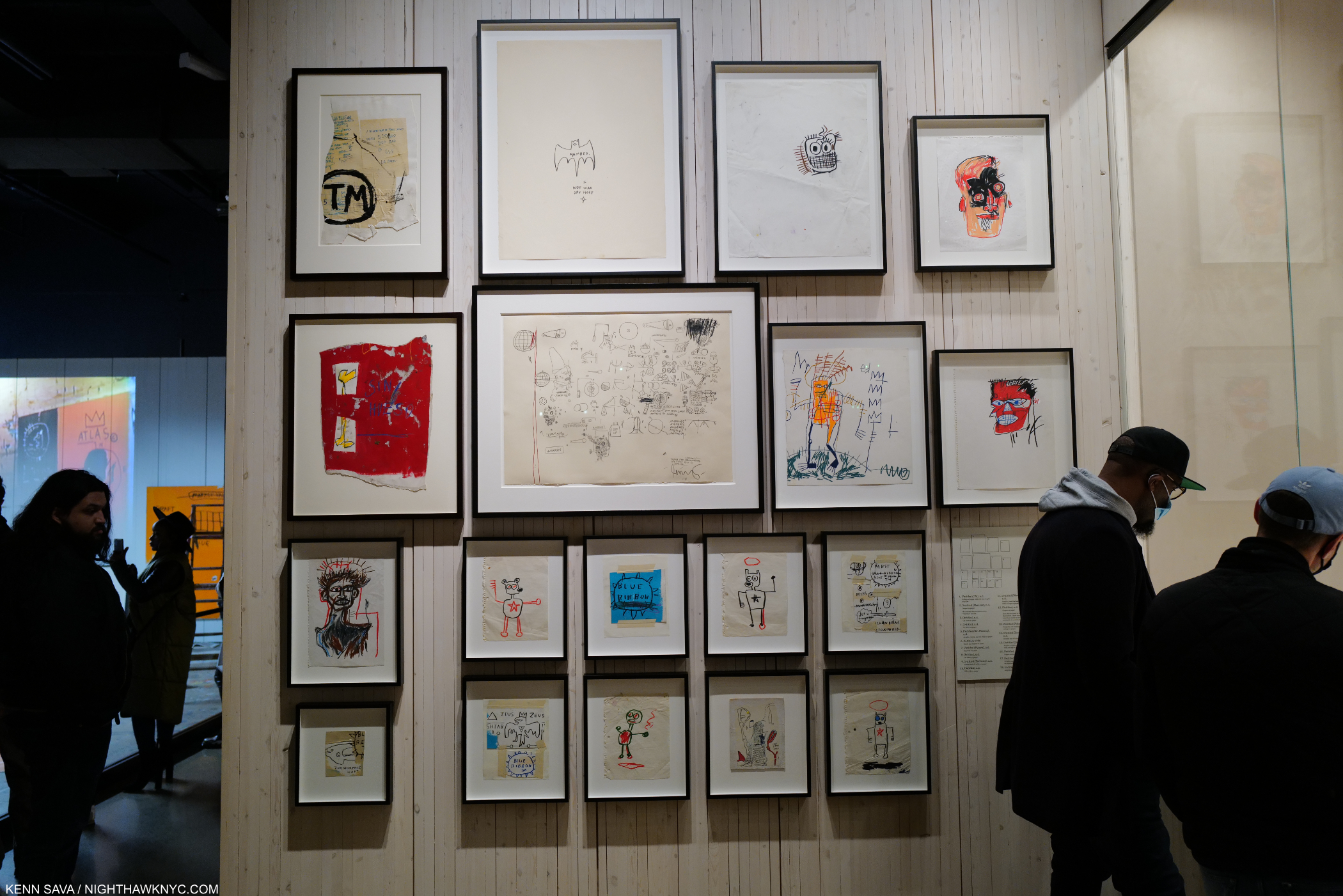
A wall of items that puzzles me. Look at the top row, for example. WHAT exactly are these? Pieces like these (and NOT these) are one reason why authenticating original Basquiats is likely to remain a hot topic.
The show was so well installed it was “smart” enough to down play, almost “hide,” some nebulous pieces. A wall of smaller works, seen above, seemed to be scraps of ripped paper with writing or a Drawing on it. Each becomes a “work of Art” and is displayed as such, but there was no information as to what it is (beyond the ubiquitous “Untitled, Ink on paper,” or whatever the case may be). Was it found like this? Where? Was it torn from a larger sheet with more on it? Did the Artist intend for it to be seen? All the things Art historians need to know to properly assess exactly what is here, and, eventually, to determine the Artist’s place in history. Pieces like this, without clarification, could possibly serve to bring down the impression of the whole oeuvre in the eyes of some. Also included was also a lot of ephemera, which was better described.
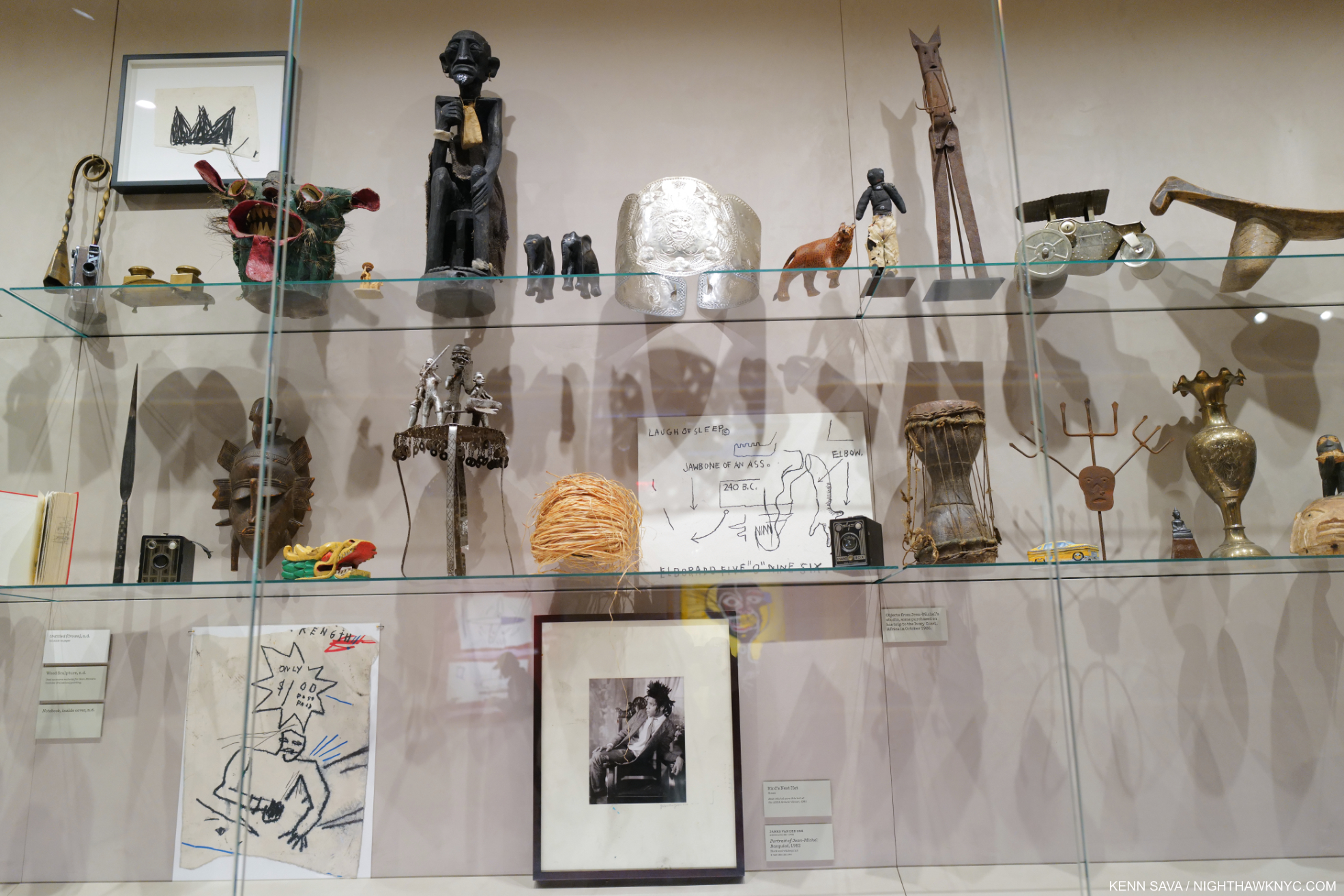
Part of a large case containing personal belongings. Unlike the previous wall, above, cards explained their significance to the Artist.
Some of it related to the Artist and events in his life, as above, and some part of his ongoing studies (in the Studio recreation). The ephemera led to the show being touted as “revealing the man.” Yes, he owned a bike, and it’s here, but it seems to me, the books in J-MB’s collection need to be read, the videos need to be seen, to glean their import and influence on the Artist. Only the Art historians or the VERY interested will have the time and patience to do that. Visitors pass through displays of hundreds of these items, lucky if a few titles remain in their memory.
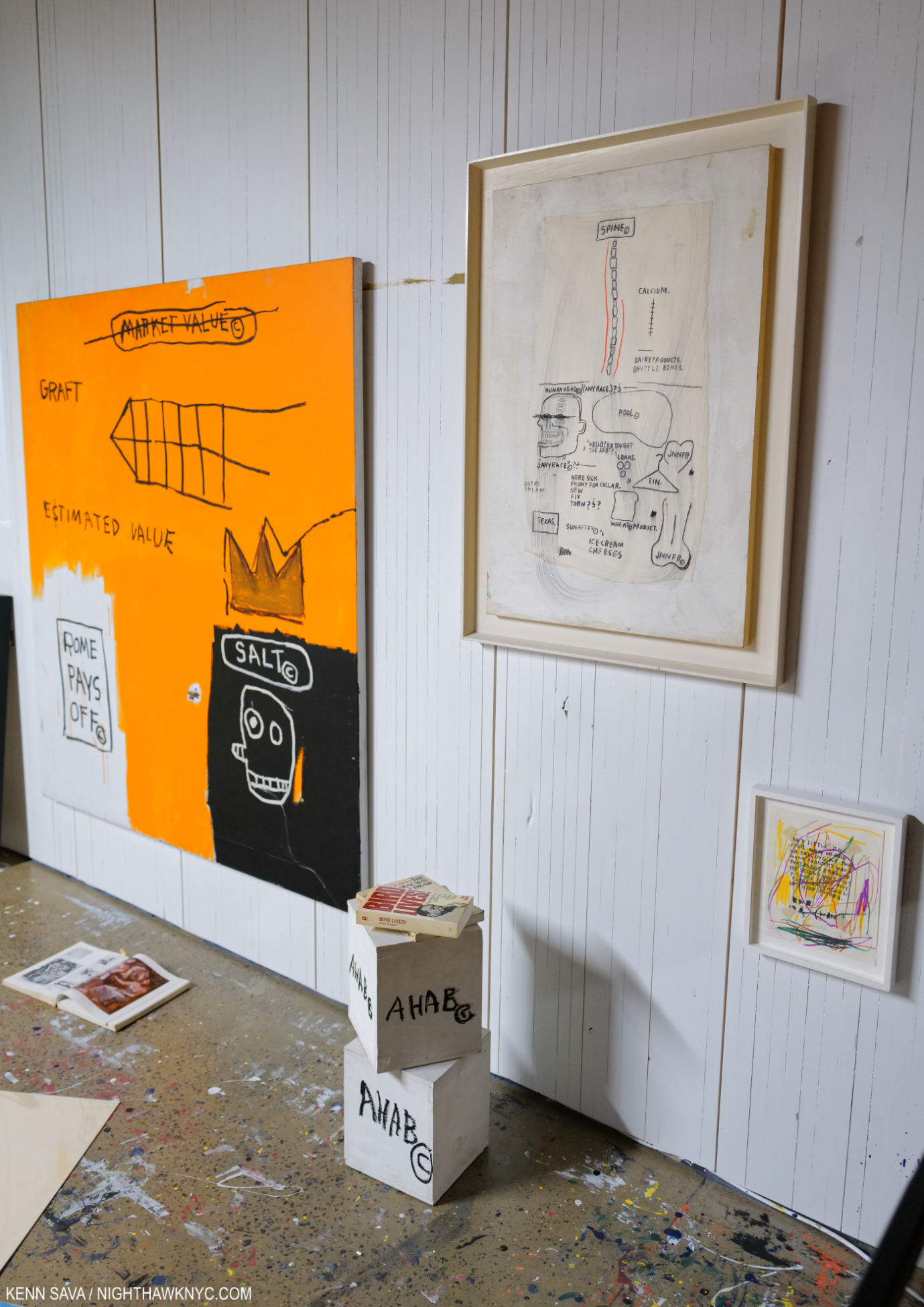
Among those remaining in mine, I spotted a number of Jazz books J-MB & I both owned. Books on John Coltrane, Miles Davis, and this classic biography of Charlie Parker, Bird Lives! by Ross Russell, on top of the boxes, center. I owned this same paperback edition that J-MB reportedly bought by the case and gave to friends. Unavailable in the US, I had to buy mine from a store in Canada in 1982. Seen in the Studio recreation area.
My thoughts went to the care the Francis Bacon Estate and curators took in 1998 when Mr. Bacon’s equally legendary 7 Reece Mews, London, Studio was dismantled, the 7,000 items it contained catalogued, moved to the Dublin City Gallery The Hugh Lane in Dublin in the country where the Artist was born, and reinstalled EXACTLY as it has been left by Mr. Bacon when he died. Was something similar done with what remained at his Great Jones Street Studio after J-MB died? Maybe it was. I don’t know and I can’t tell.
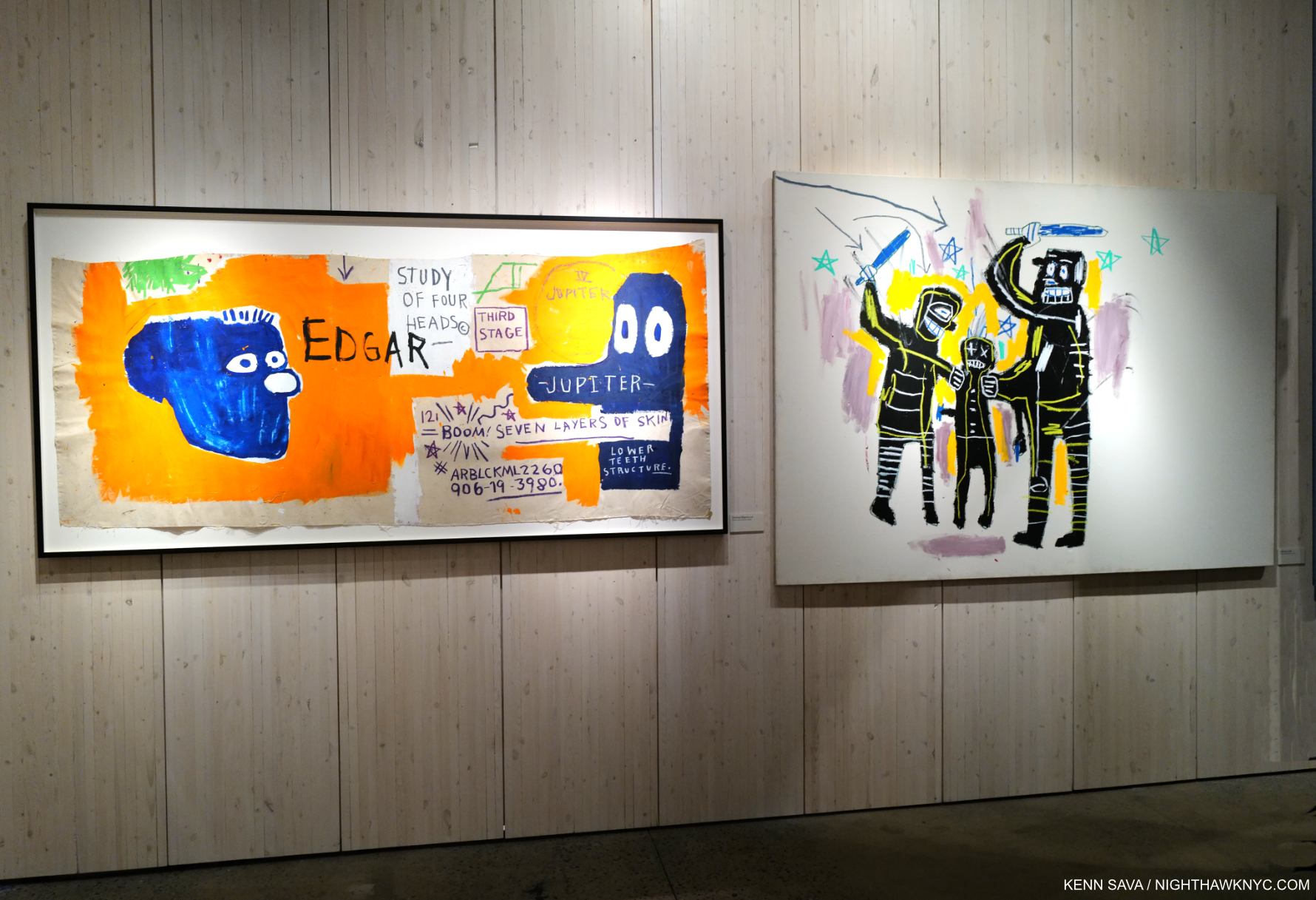
Installation view of “THE IRONY OF THE NEGRO POLICEMAN” gallery. Edgar, N.D., left and Jailbirds, 1983, right.
While the nebulous work I mentioned doesn’t help his case, in my opinion, overall, the work on view does serve to fill in some holes for those trying to assess his place in Art history. Almost all of the work is related to themes that will be familiar to those familiar with J-MB’s work. This was highlighted by separate galleries devoted to some of them- “ROYALTY,” which included some Charlie Parker pieces and some sports pieces, “THE IRONY OF THE NEGRO POLICEMAN,” with pieces like Jailbirds, 1983, above and below, that speak for themselves, bringing the Artist’s ever-present focus on race to a boil, and, the final room, “THOSE WHO DRESS BETTER CAN RECEIVE CHRIST.”
Virtually all of the Art on view consisted of Paintings & Drawings, which were hung on the walls. There was only one free-standing piece.
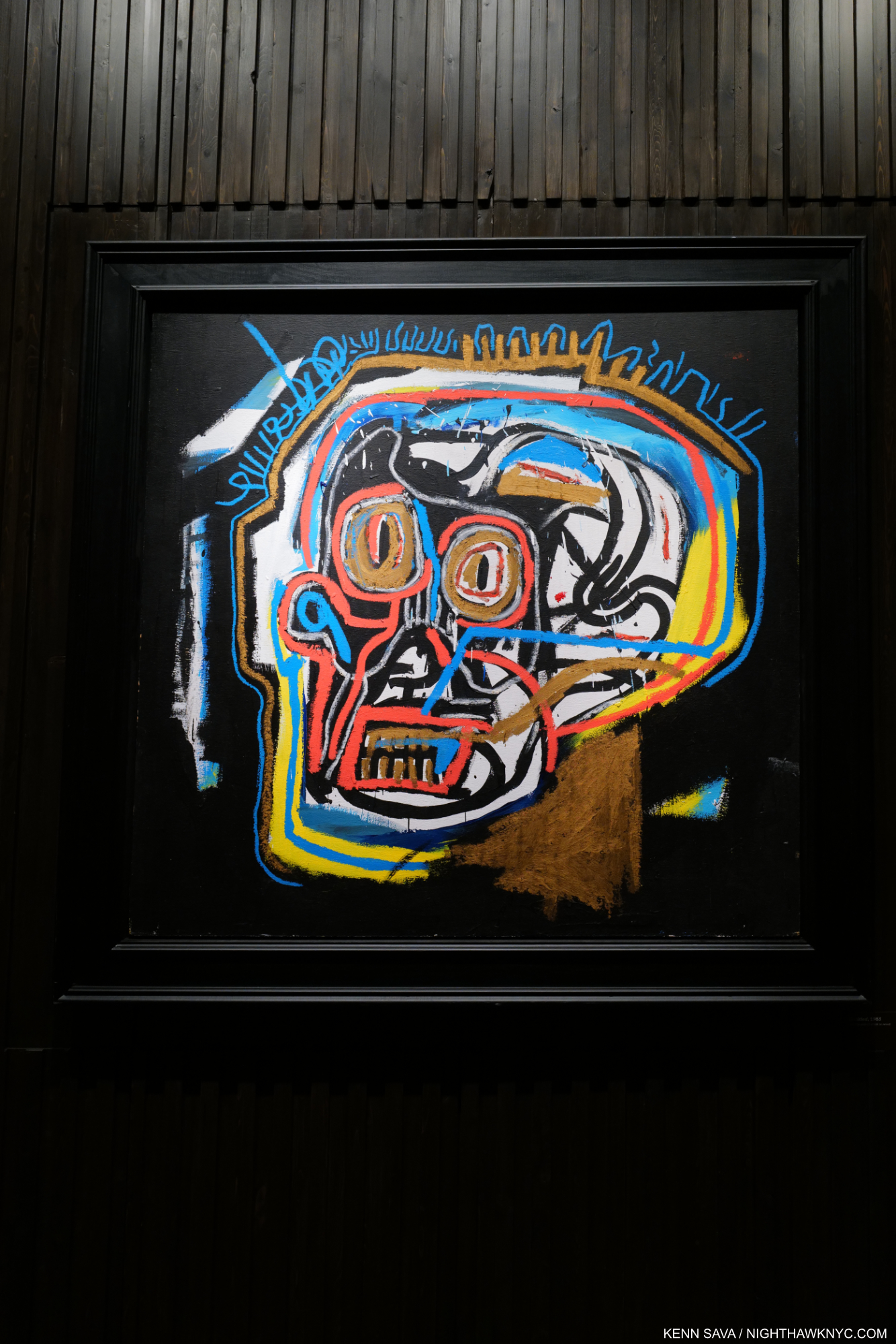
Untitled, 1983, Acrylic and oil stick on wood. The very first piece in the show. A major work in my view, perhaps the most important piece in the show.
Among the pieces I thought were “major” works were Untitled, 1983, the very first piece in the show, and the very last piece in the show- another indication of how well the show was conceived and laid out. Putting a major piece first immediately raises the bar and removes the “quality” question from viewer’s mind (i.e. “Will there be any ‘great” work on view, or just a bunch of fair to middling pieces?”). Installing one last leaves them on a high. As viewers were leaving the show proper, on the way to the exit, off to the left, a black wall contained the word “PALLADIUM” at the top in silver letters. ?
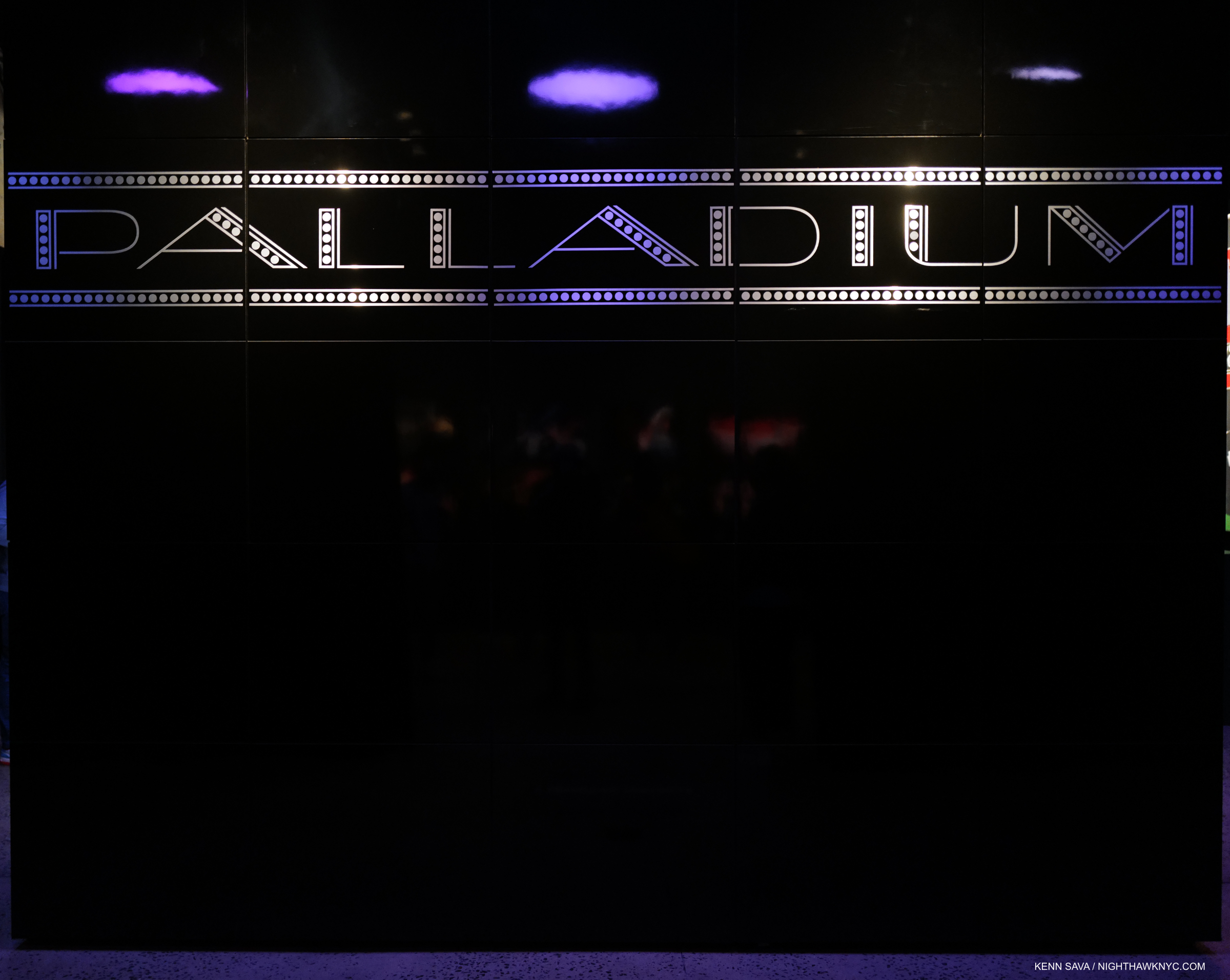
What is this? Around this wall would be one of the most remarkable experiences I’ve ever had in an Art show…
Walking around it I was astounded to find a recreation of the infamous Michael Todd Room on the top of the legendary, now lost, Palladium Nightclub on East 14th Street. To the right, above the bar, was the Mural, Nu-Nile, J-MB had created for the space in 1985, which I had no idea had survived! What a shock! Seeing it again I felt I was standing in front of a piece of history- a real piece of a now lost NYC at one of its many peaks- the peak of nightlife in the City that had been building for decades, that was soon to be lost under Guiliani, as well as a major work in J-MB’s oeuvre.
I had been in the real Michael Todd Room a few times over my many visits to the Palladium back in the day, walking around the space, which included another large Painting from the Todd Room, the recreation of the space, though simple, wasn’t all that bad. I could actually feel the original when I was in it! A wonderful feeling.
When I did finally leave the show, I began to wonder about it. Today, December 22, 2022 (the date I am publishing this), had he lived, Jean-Michel would be celebrating his 62nd birthday, and very possibly still creating Art in mid-career! Early death is, unfortunately, WAY too common in Art & Music history. Being left to wonder “What if?” is no substitute for being able to see a complete body of work created over a full life time.
Part 2, titled Jean-Michel Basquiat: Now You See It. Now You Can’t looks at Jean-Michel Basquiat: Art & Objecthood, another major Basquiat show that was up at the same time as J-MB:KP, and concludes with my thoughts on where to for his Art in 2023 and beyond.
*-“James Moody, you can come in and blow now, we’re through…” the final lyrics to the Soundtrack for this Post- “Moody’s Mood for Love,” by Eddie Jefferson, recorded by King Pleasure in 1952.
NighthawkNYC.com has been Free & Ad-Free for over 7 years, during which over 275 pieces have been published! If you’ve found it useful, I need your support to continue.
I’m pleased to announce you can now support it by buying Art, ArtBooks and PhotoBooks! I’ve curated a selection of 400 books & pieces of Art from my collection, offered through my partnership with eBay seller GallerieK. Featured items of particular interest to my readers may be seen here. The complete selection is here now!
Or, you can donate by PayPal to help keep NighthawkNYC.com online & ad-free below. Thank you!
Written & photographed by Kenn Sava for nighthawknyc.com unless otherwise credited.
Comments, thoughts, feedback or propositions? Click here
Click the white box on the upper right for the archives or to search them.
Subscribe to be notified of new Posts below. Your information will be used for no other purpose.
- Here. ↩
- per the show’s site. ↩
- The 9 are- J-MB: KP and Jean-Michel Basquiat: Art & Objecthood at Nahmad in 2022, the four I saw and wrote about in 2019, the Brooklyn Museum Basquiat Retrospective in May, 2005, the large Jean-Michel Basquiat show at Gagosian in 2013, and the Basquiat: The Unknown Notebooks show also at the Brooklyn Museum in 2015. ↩

